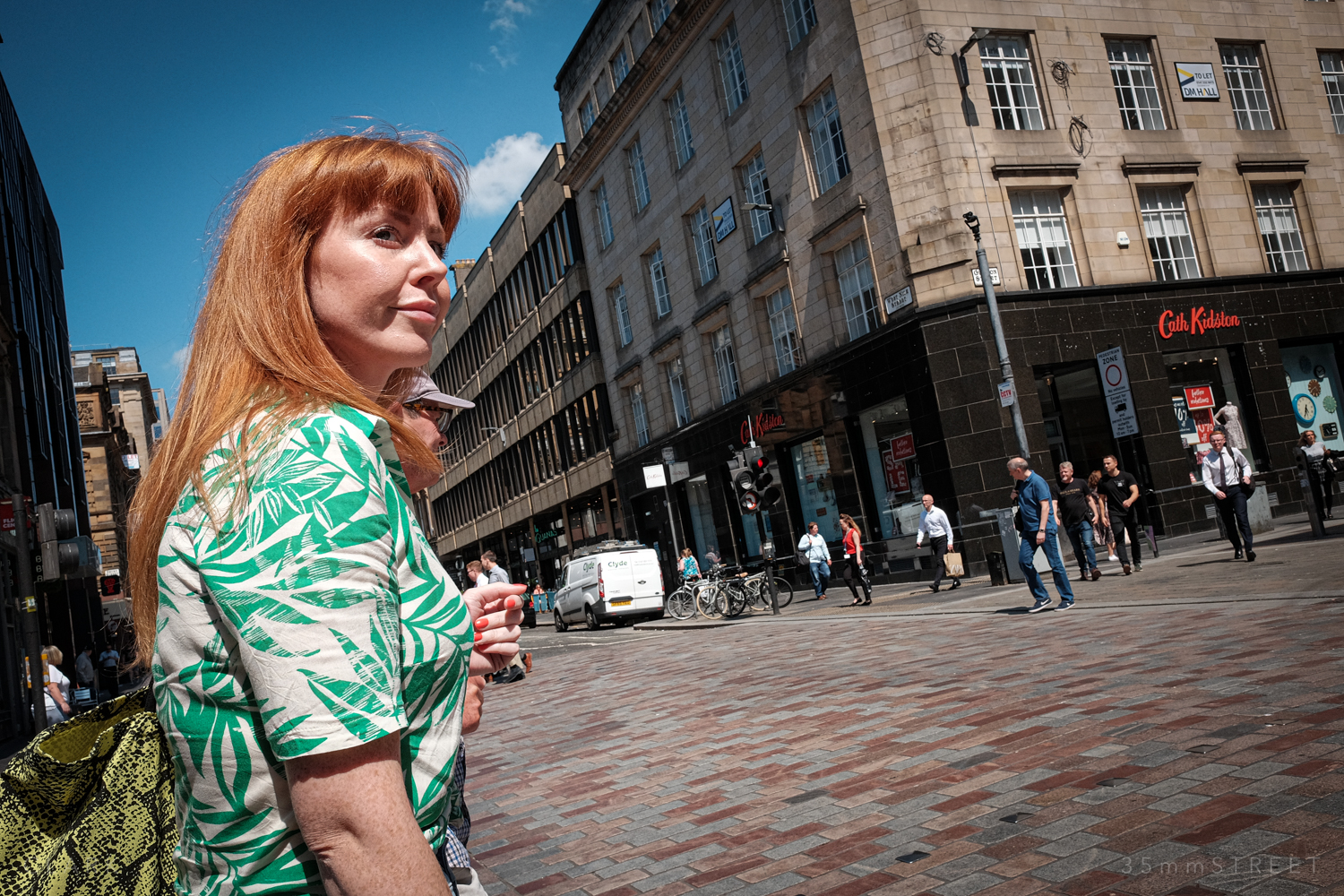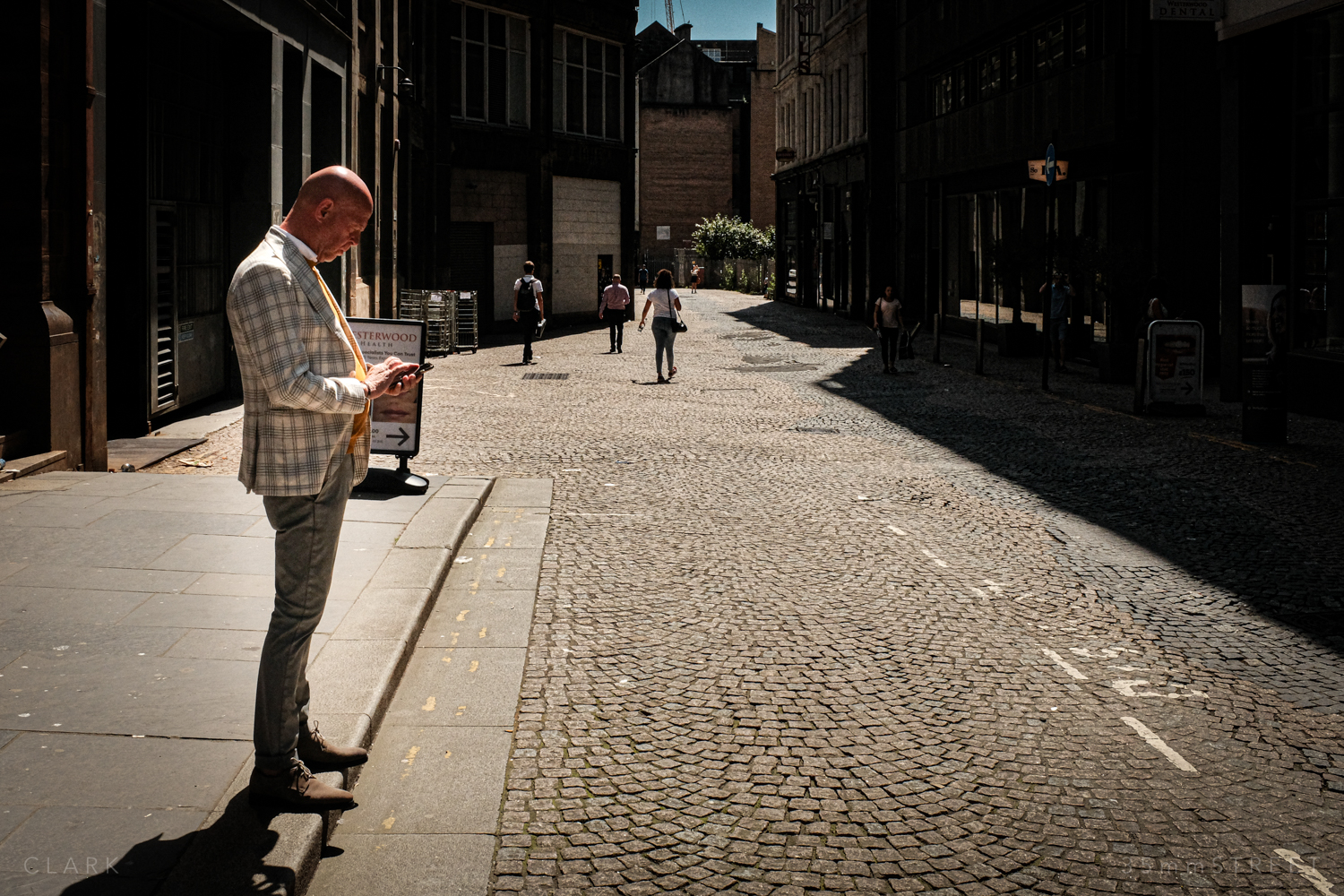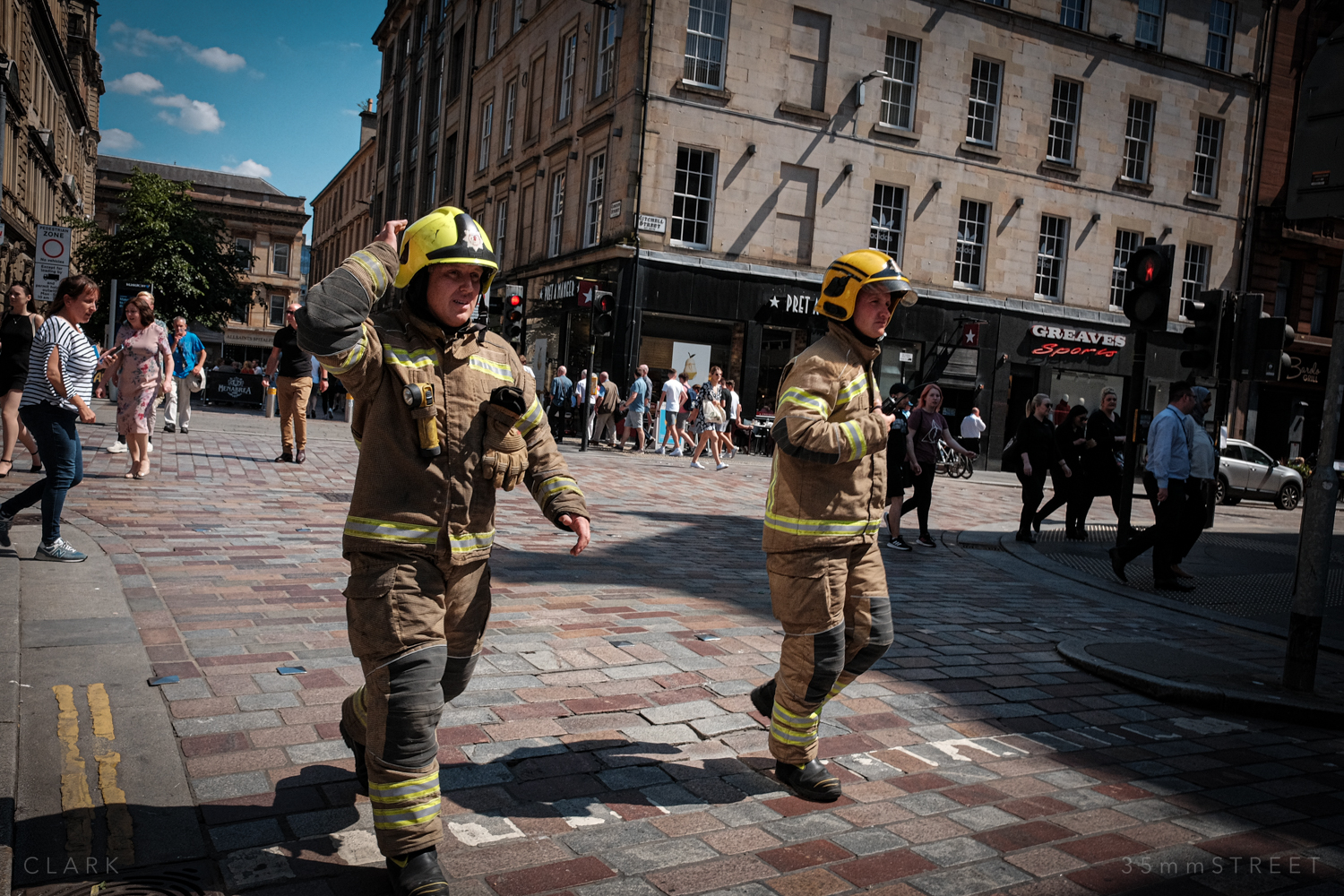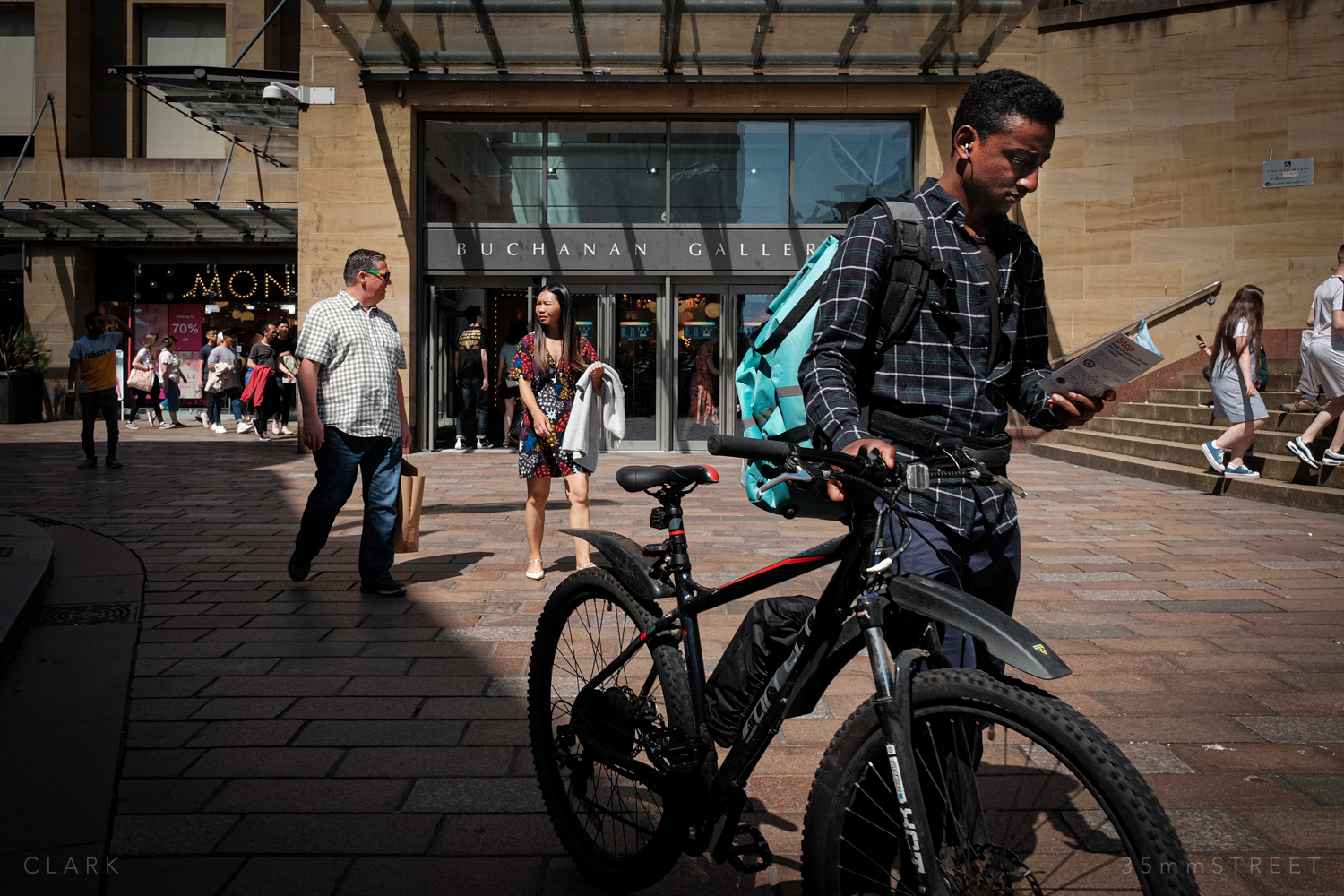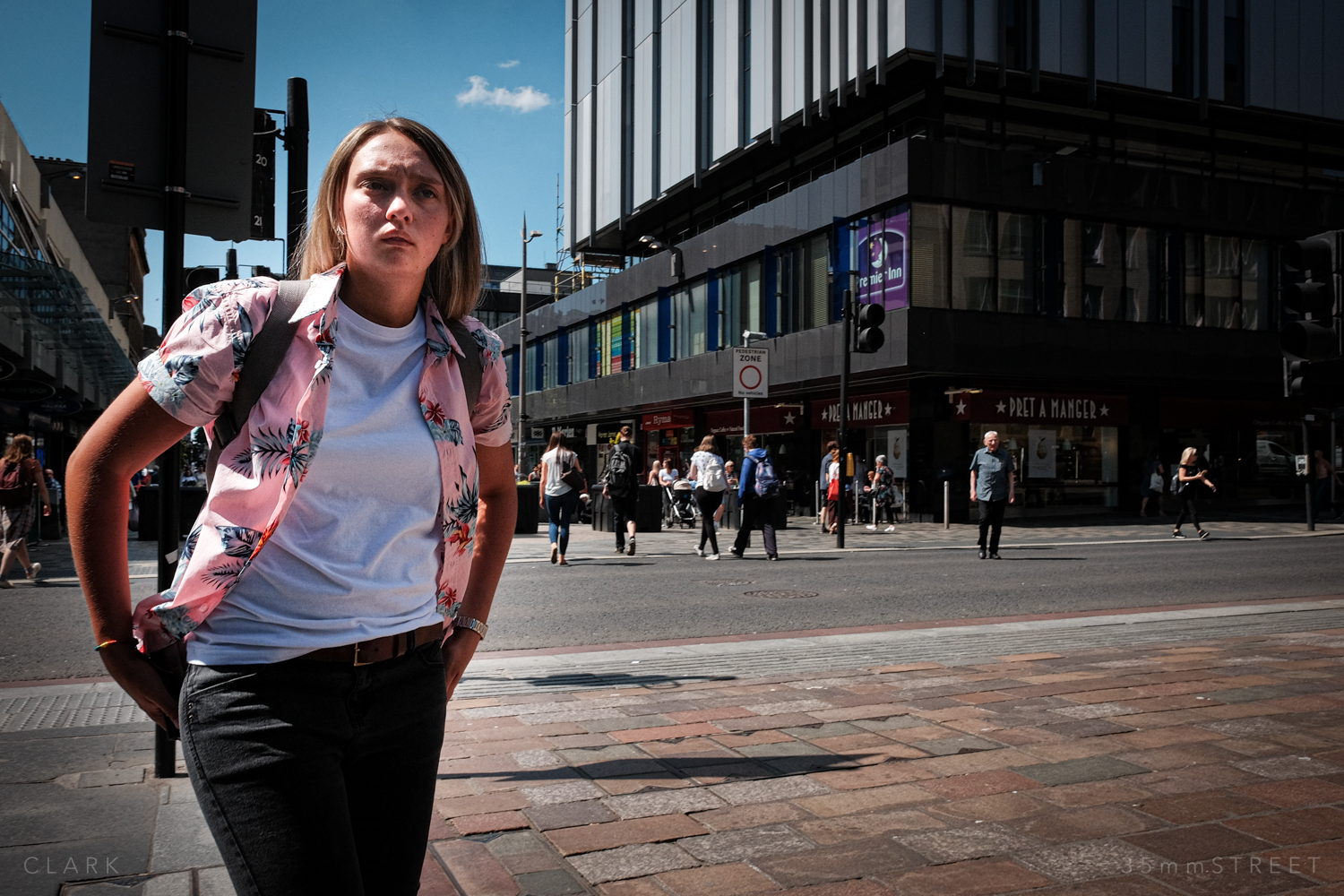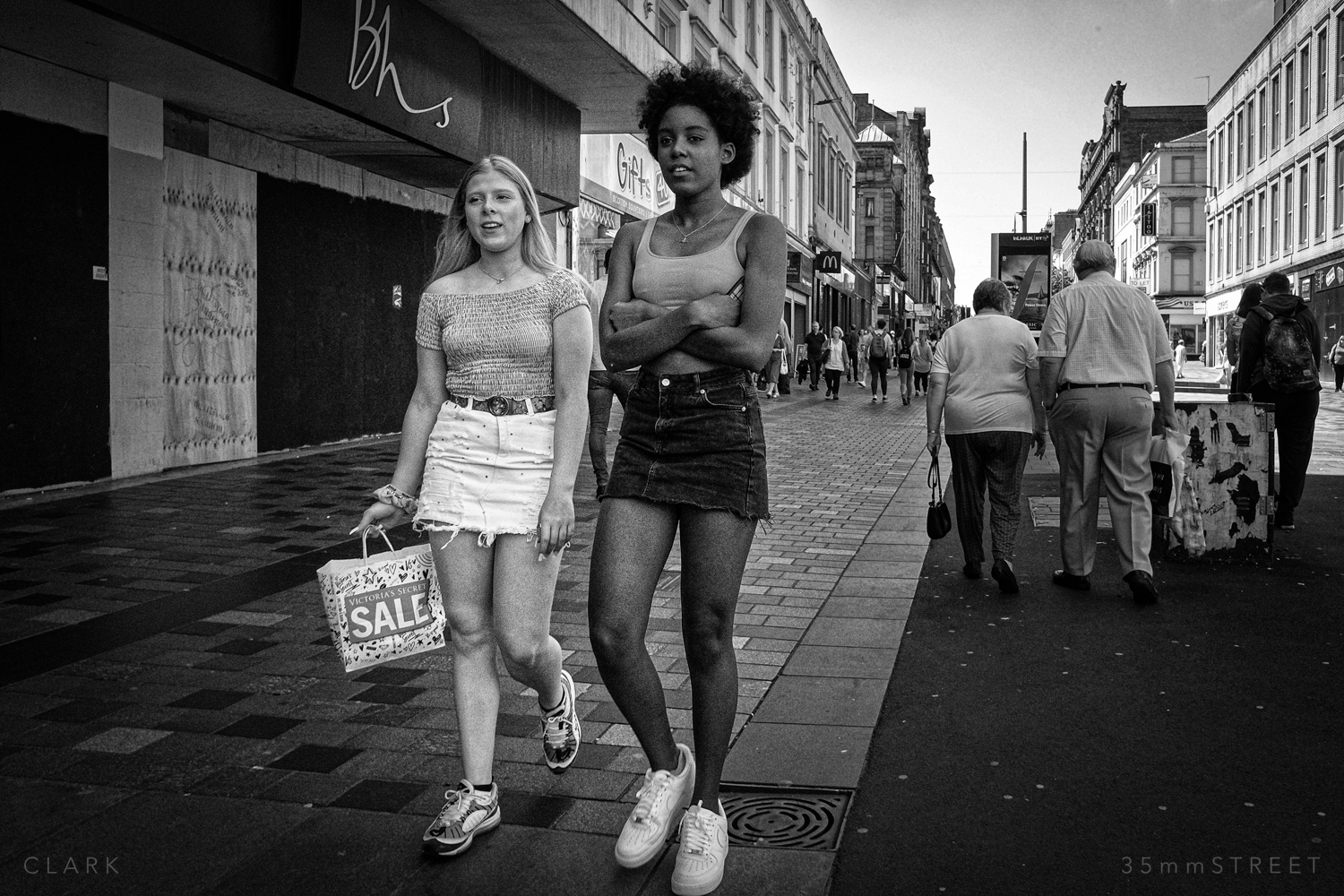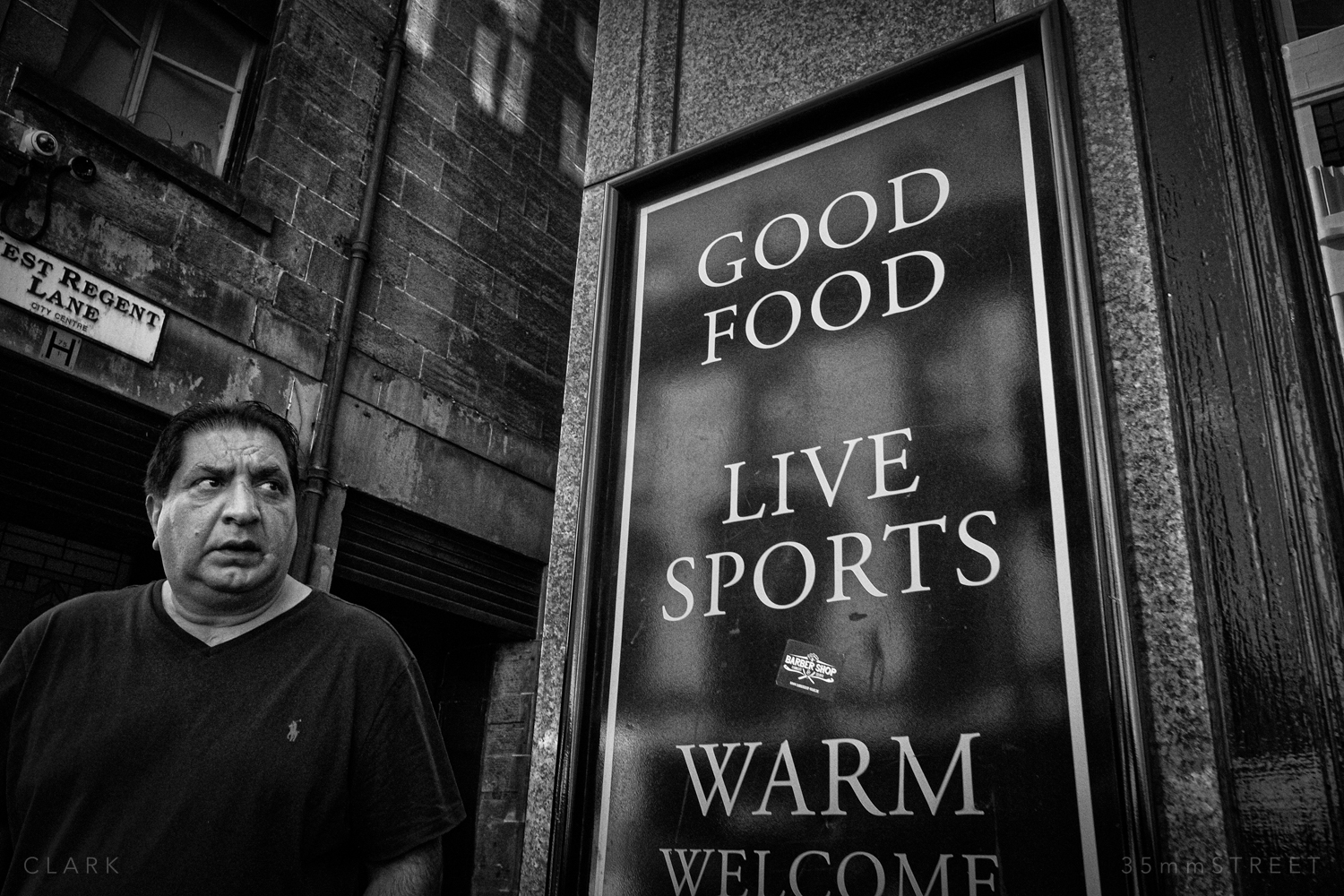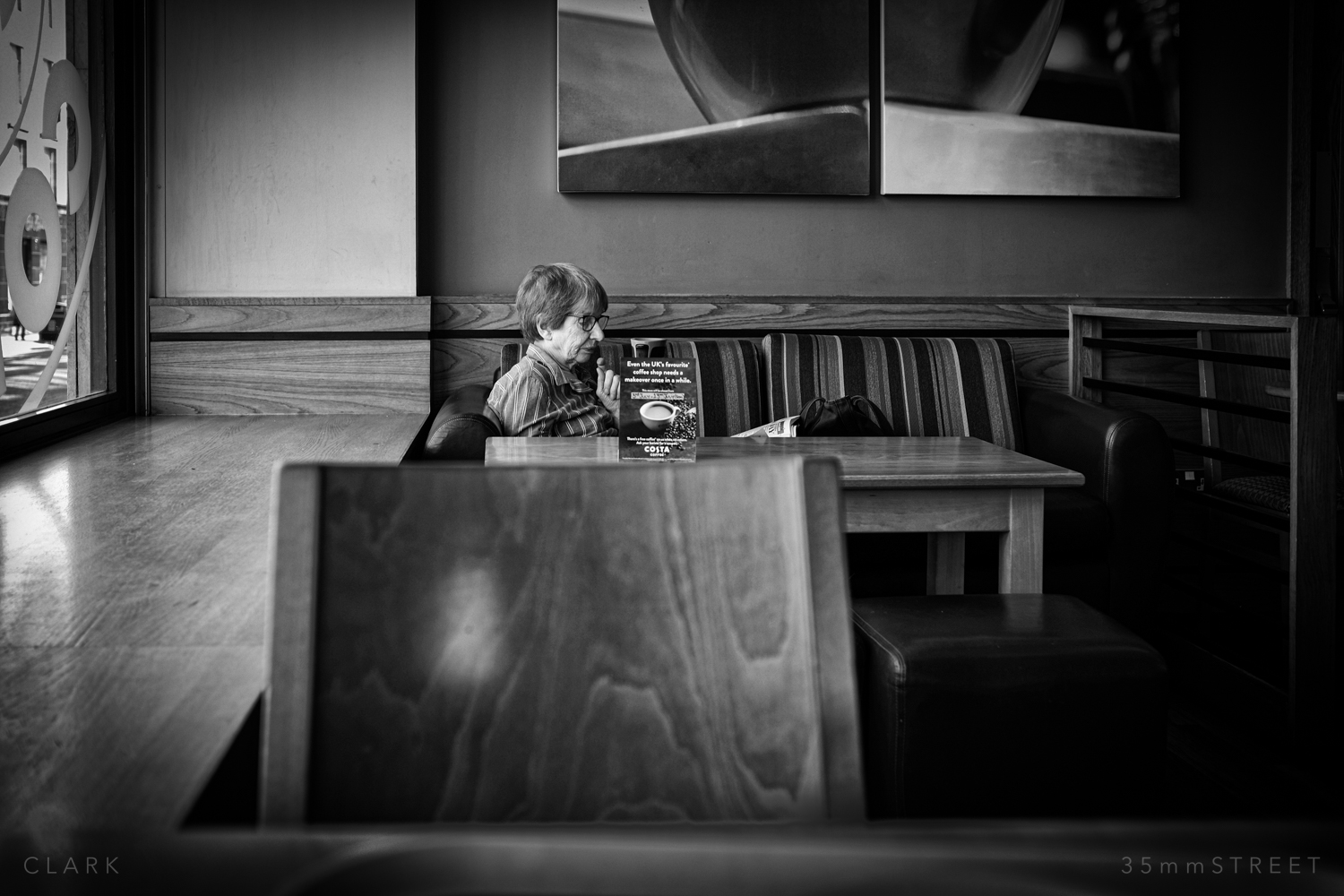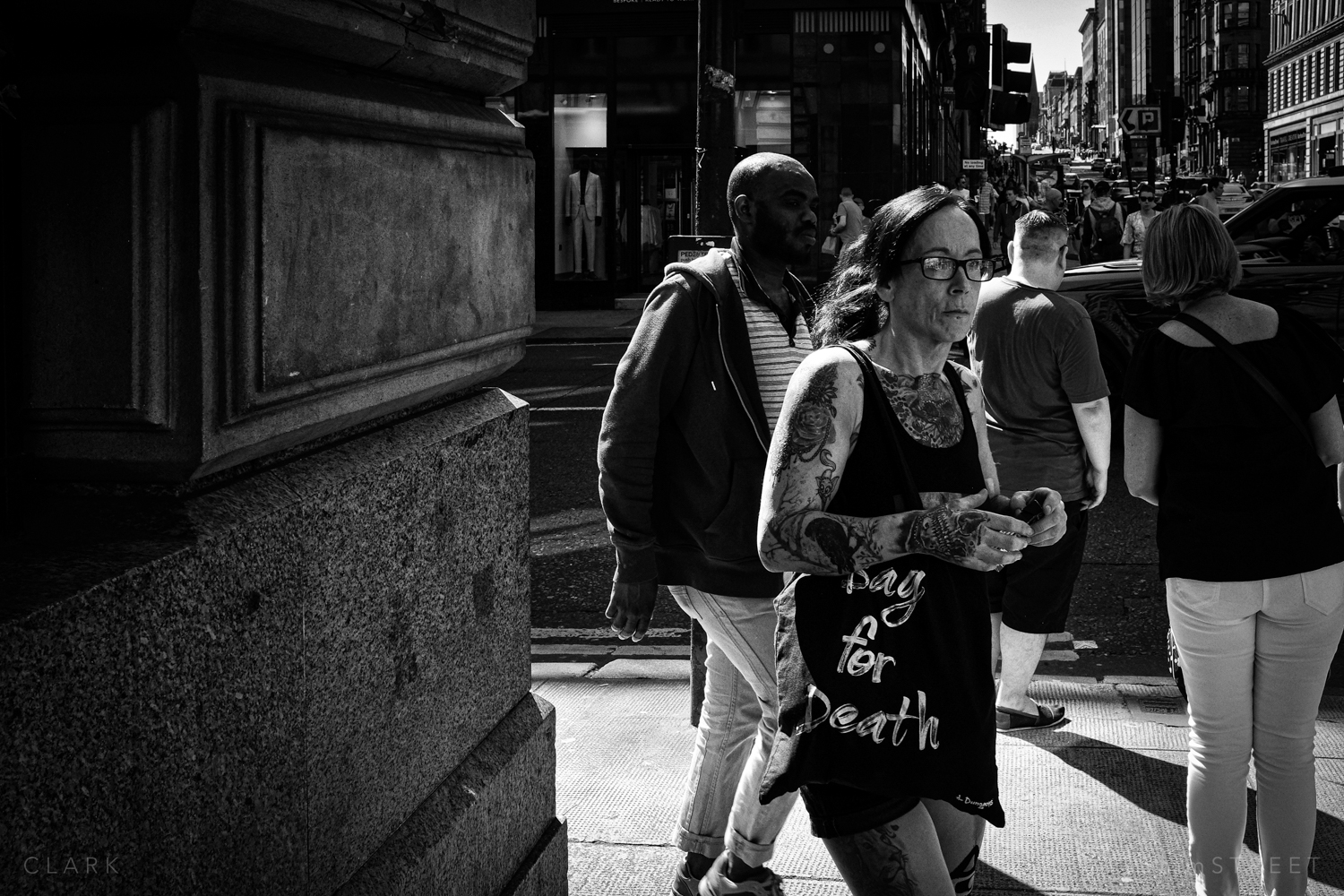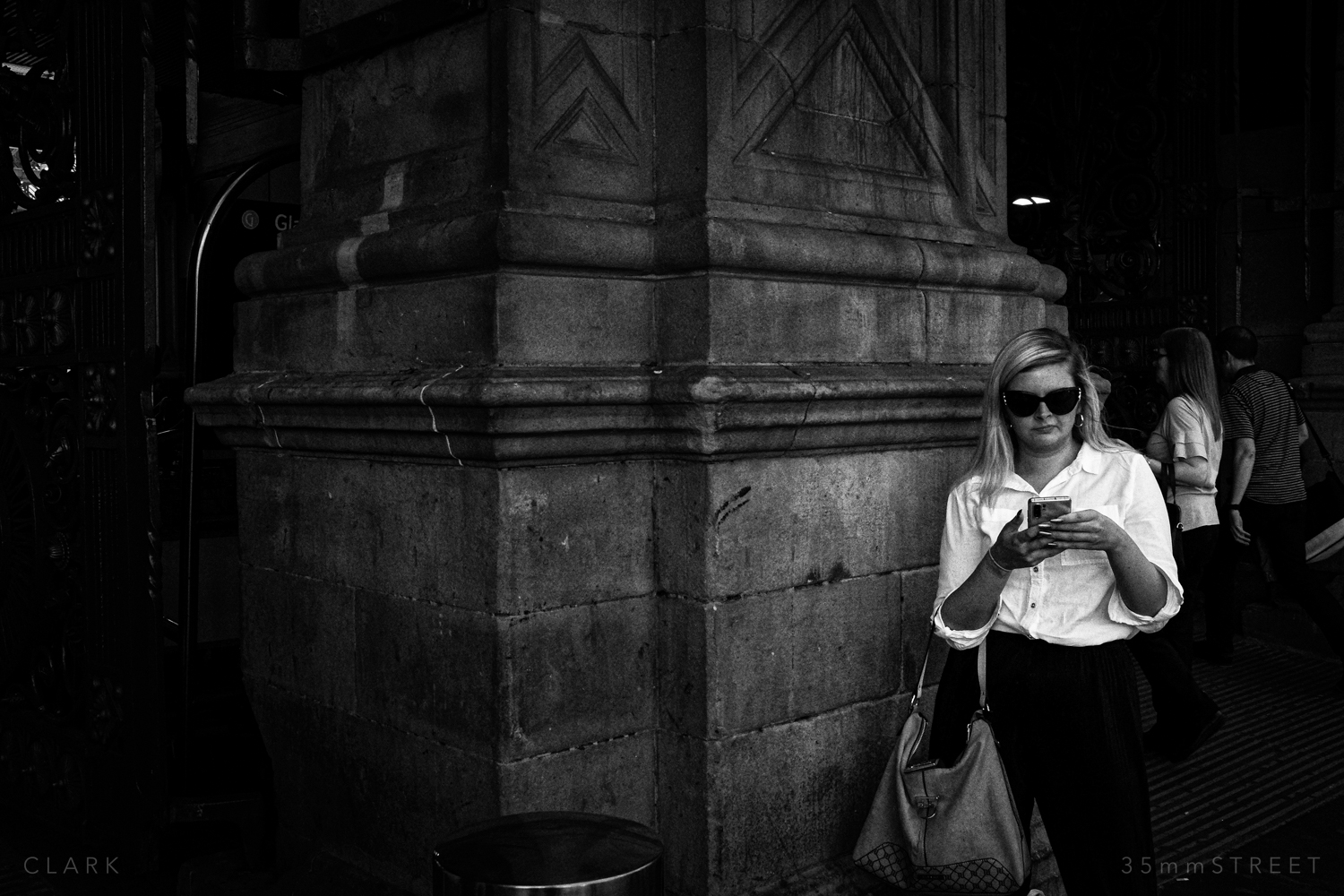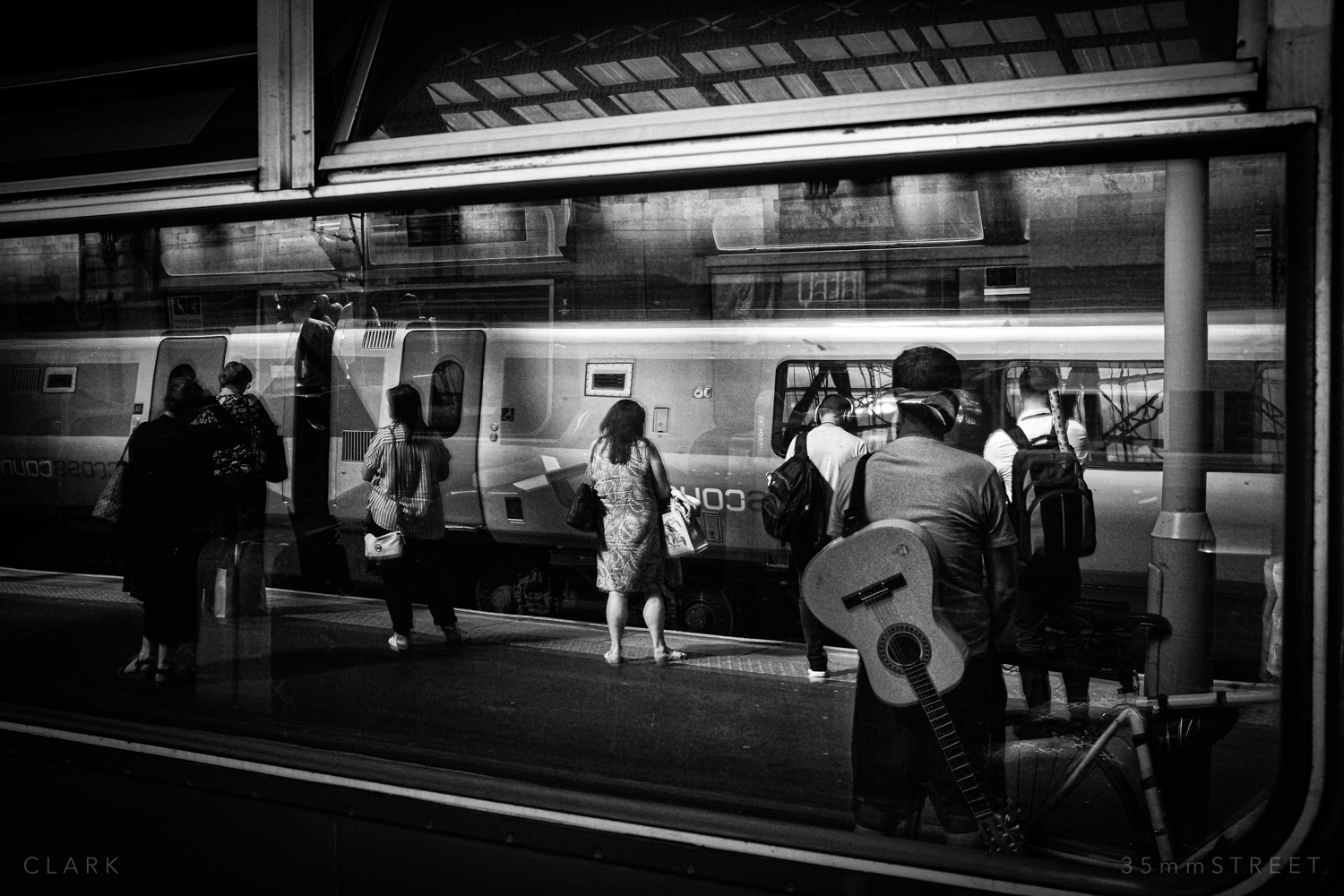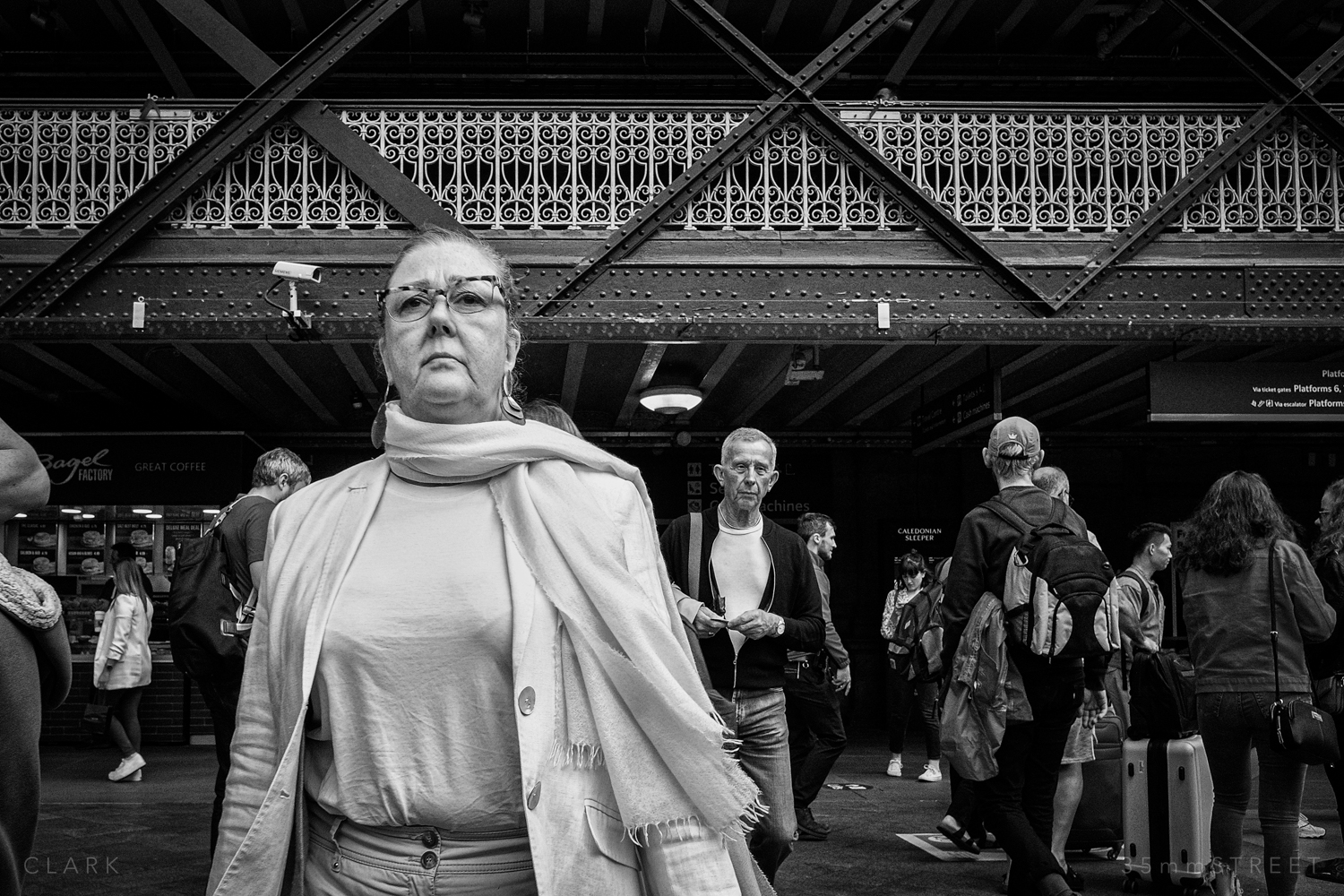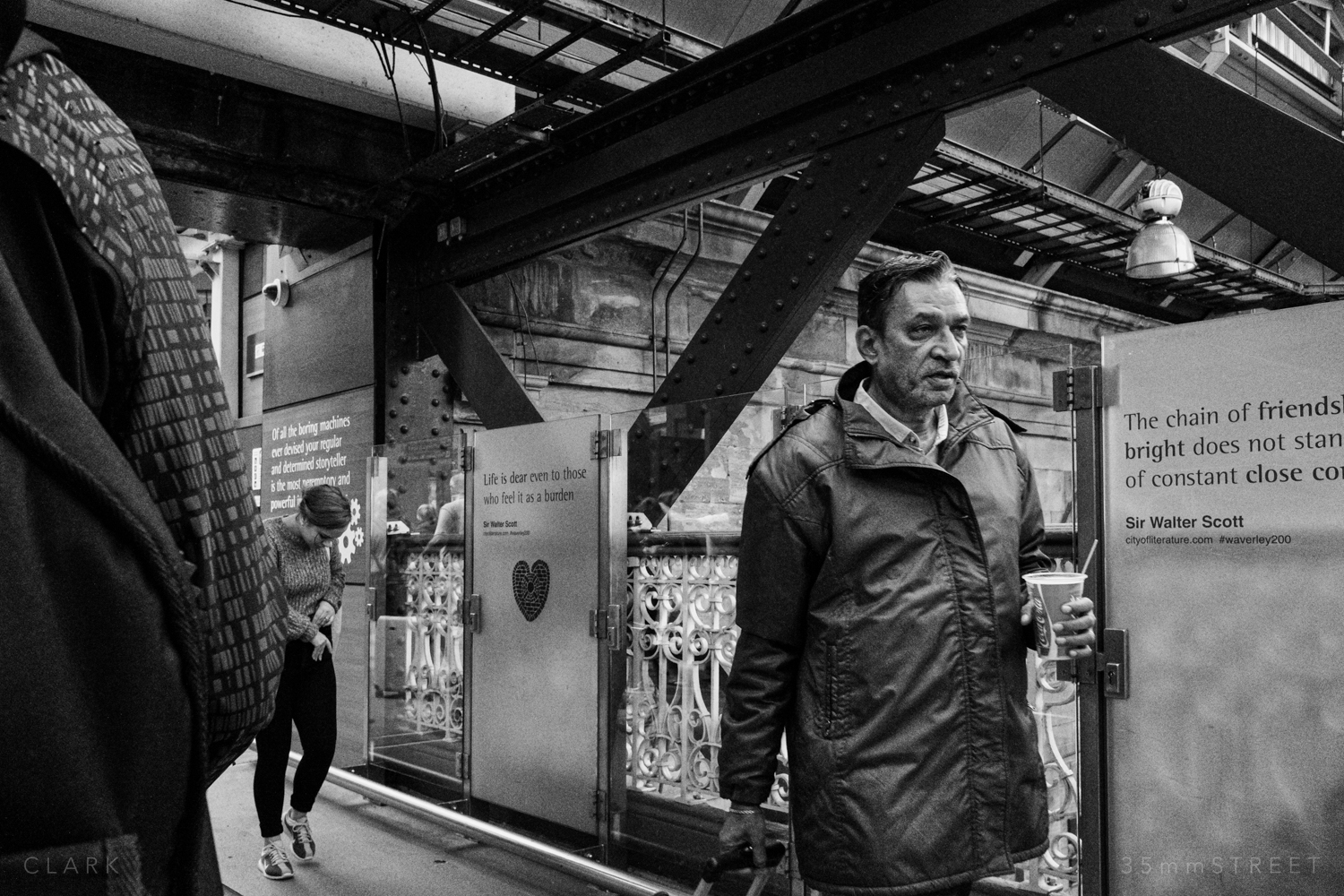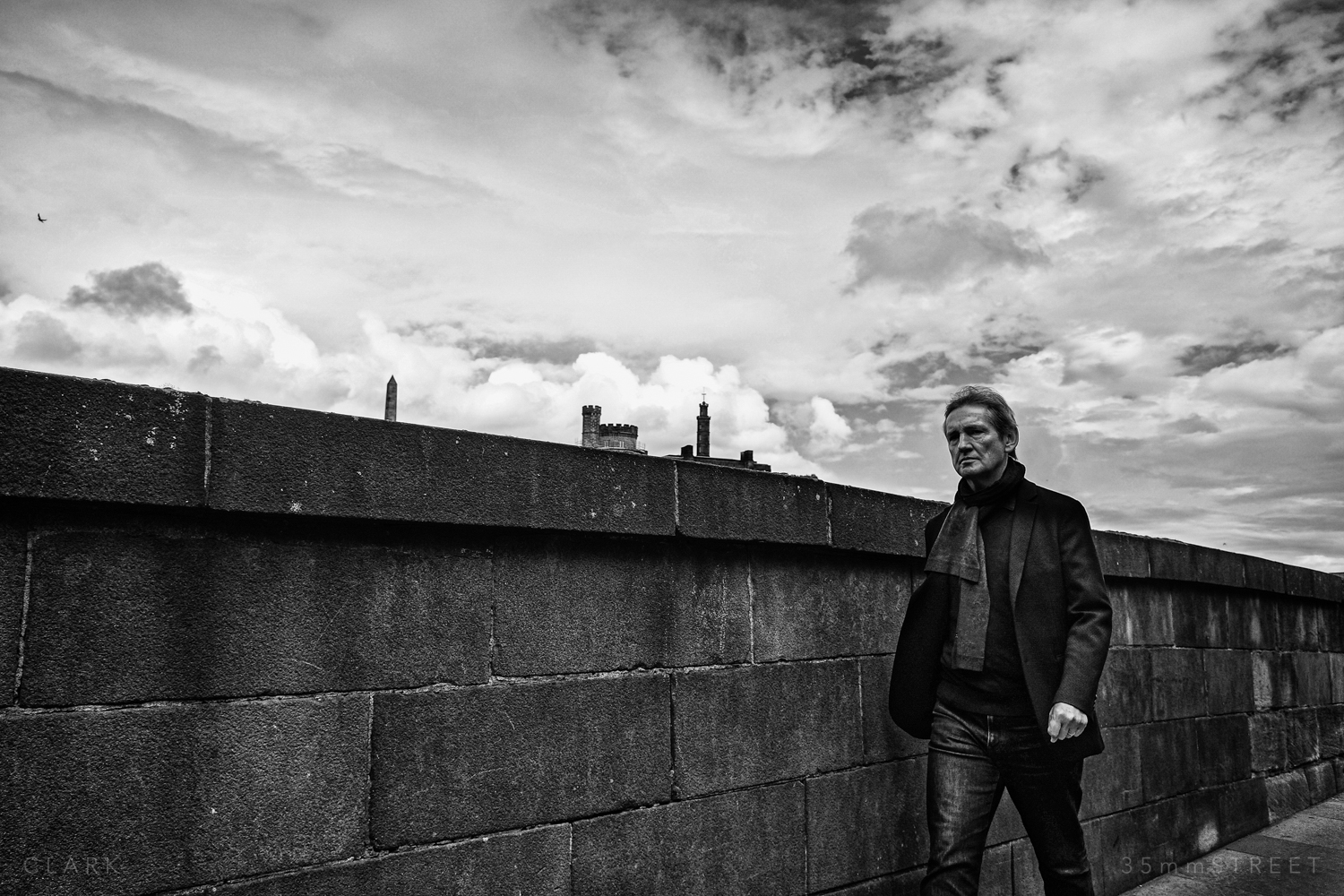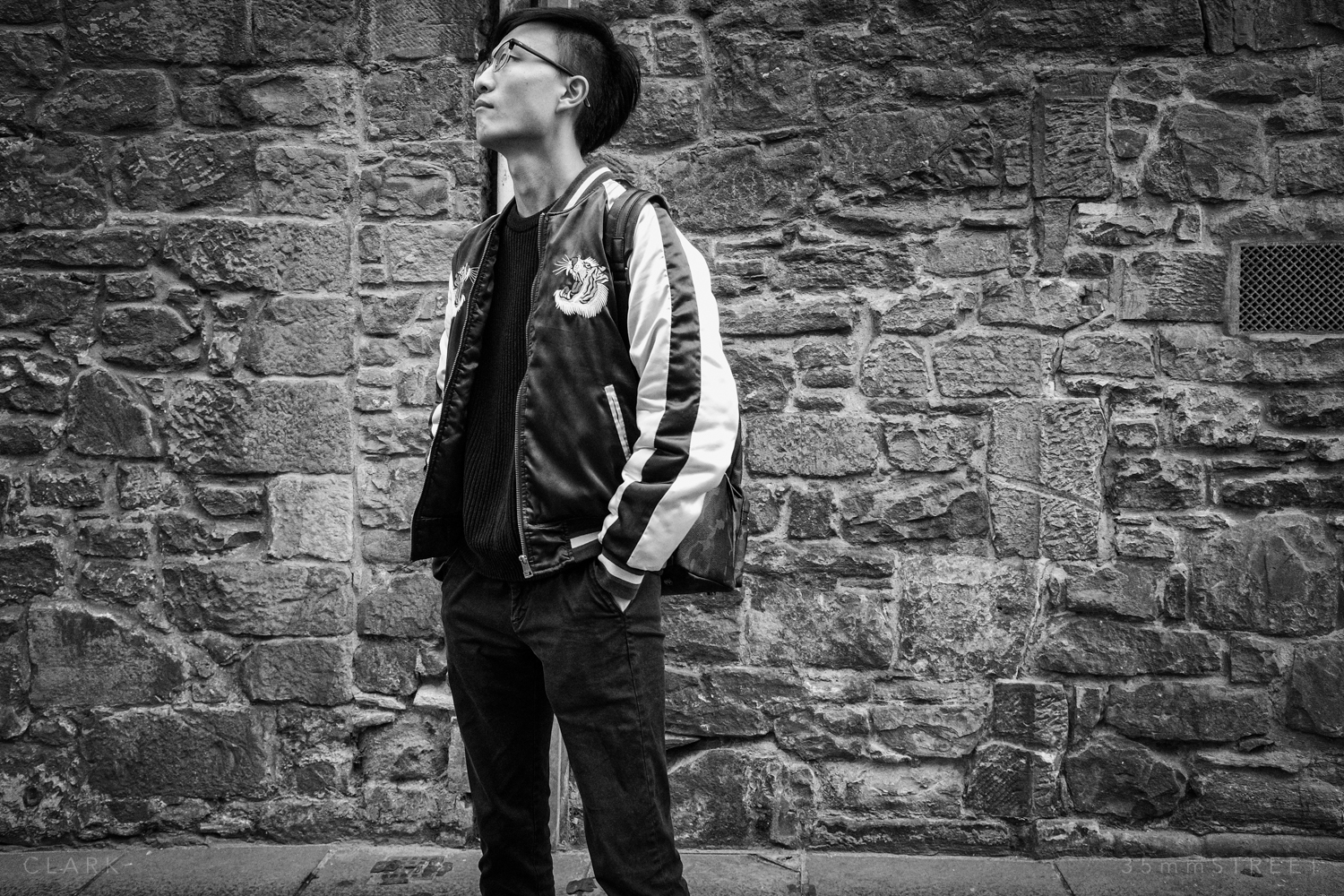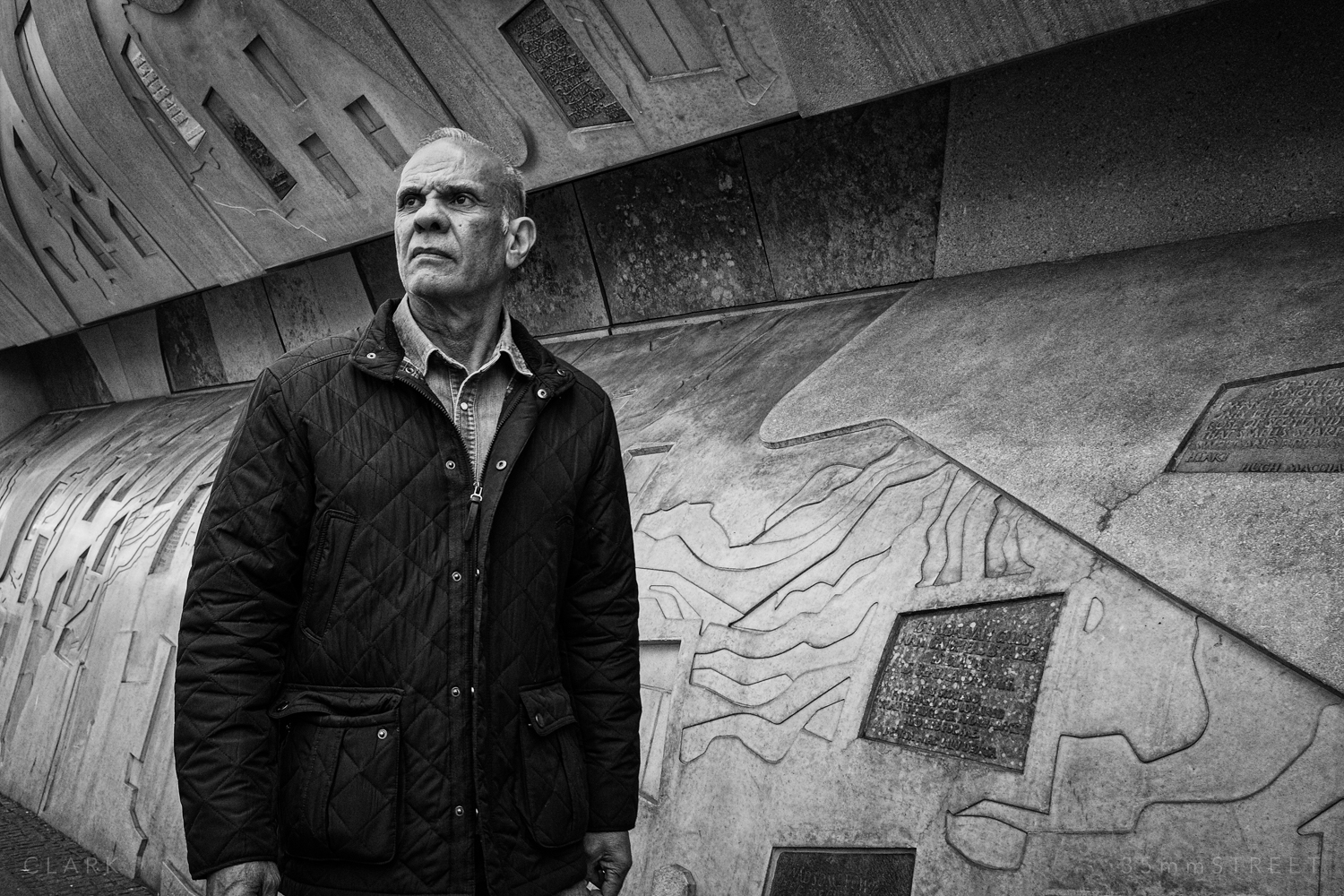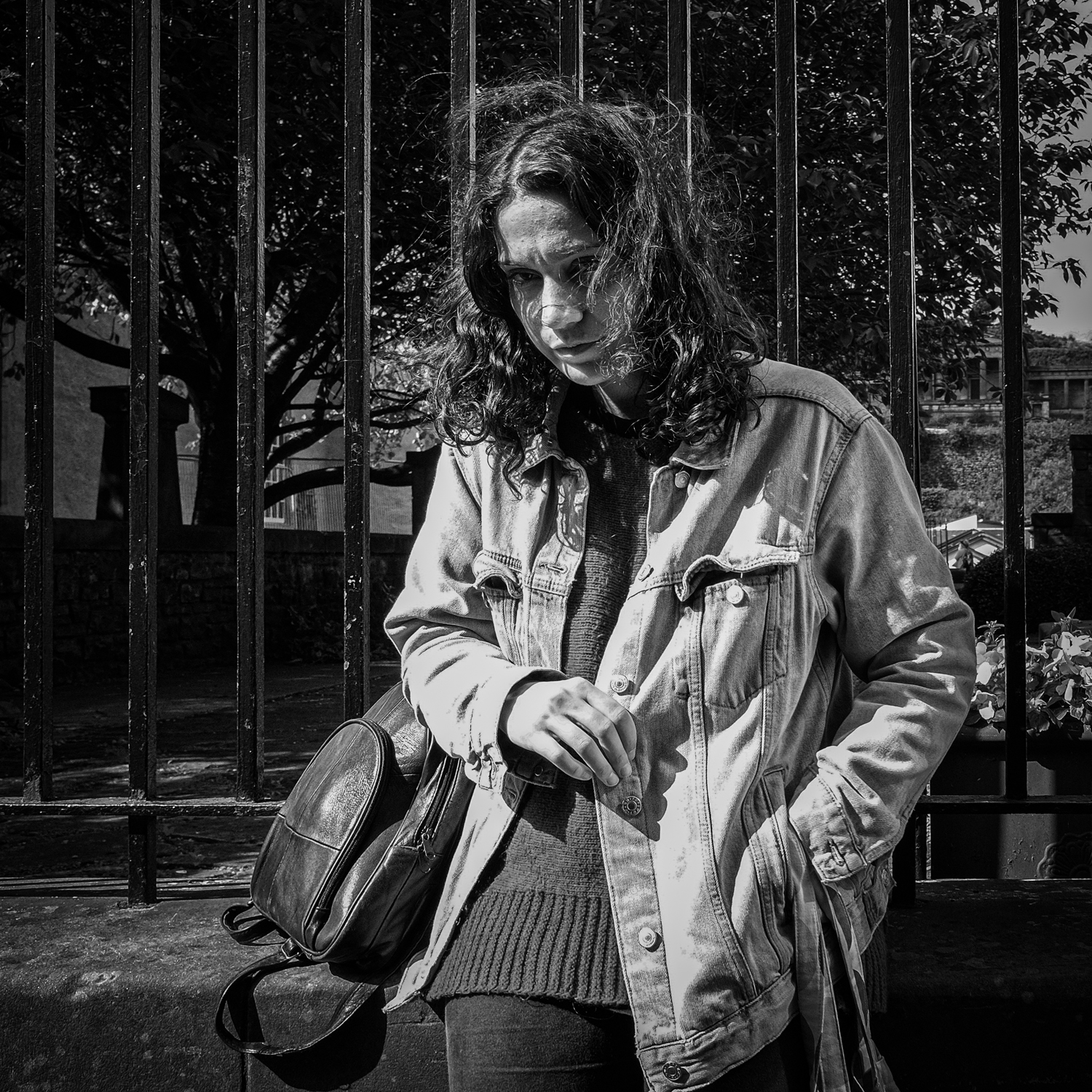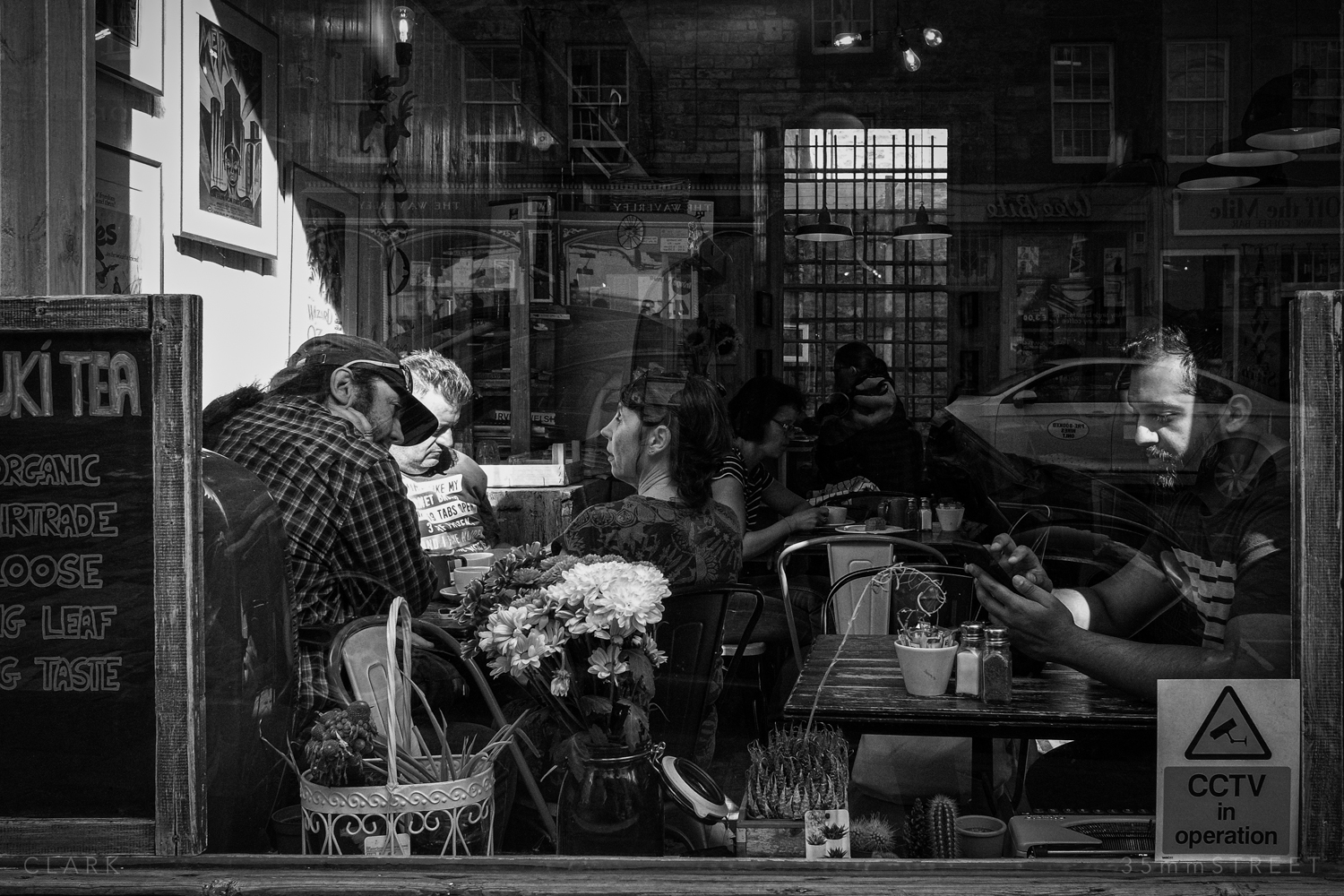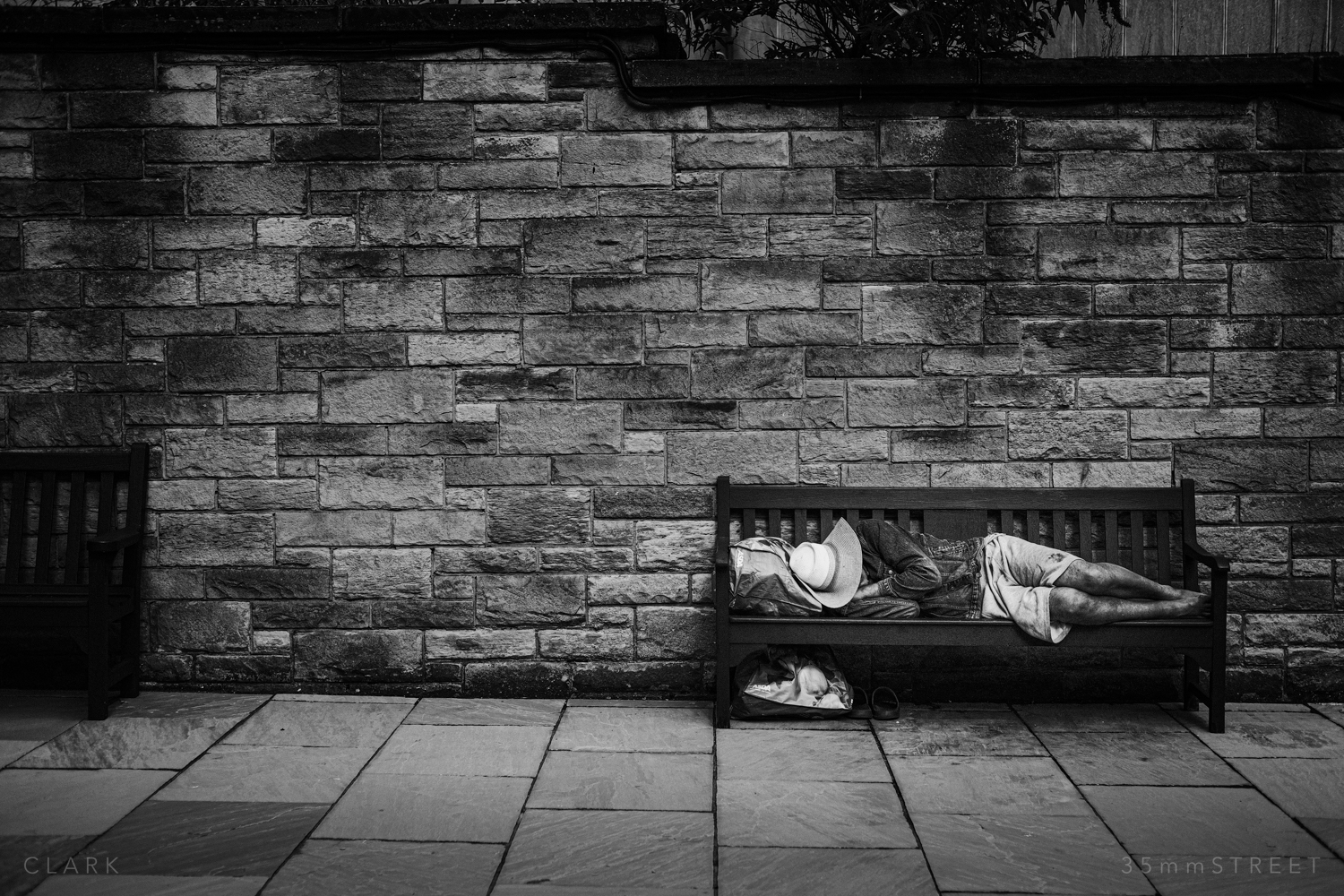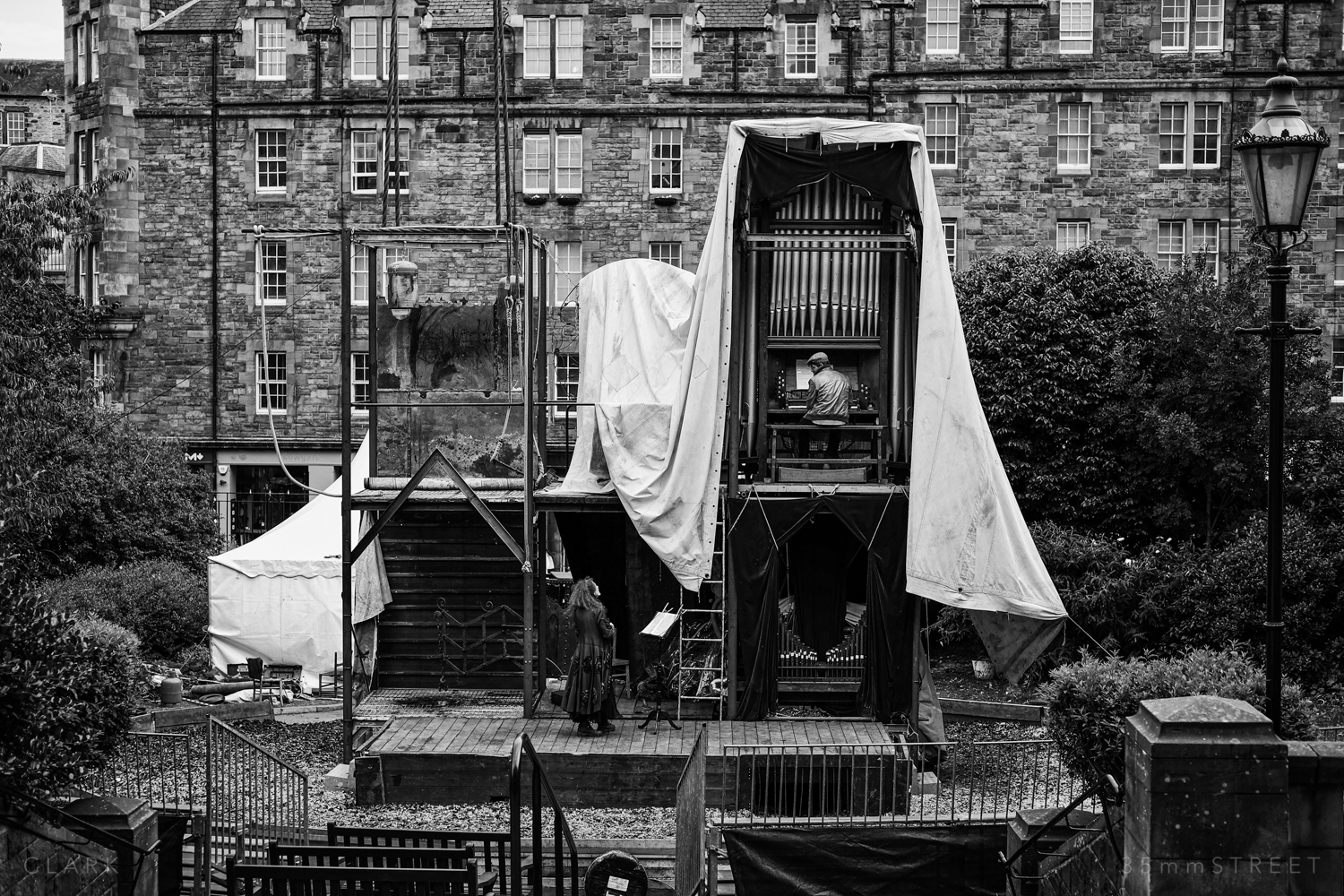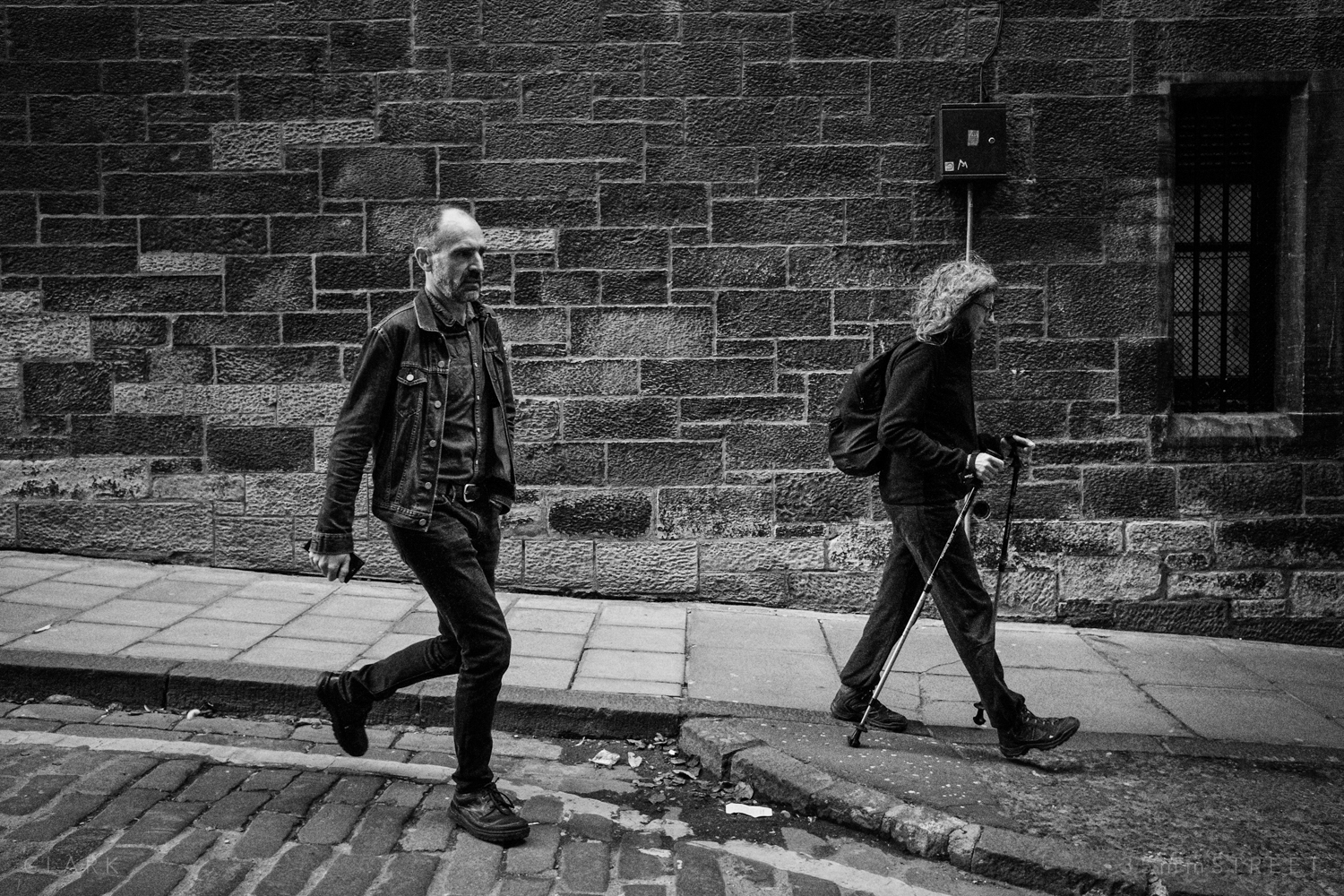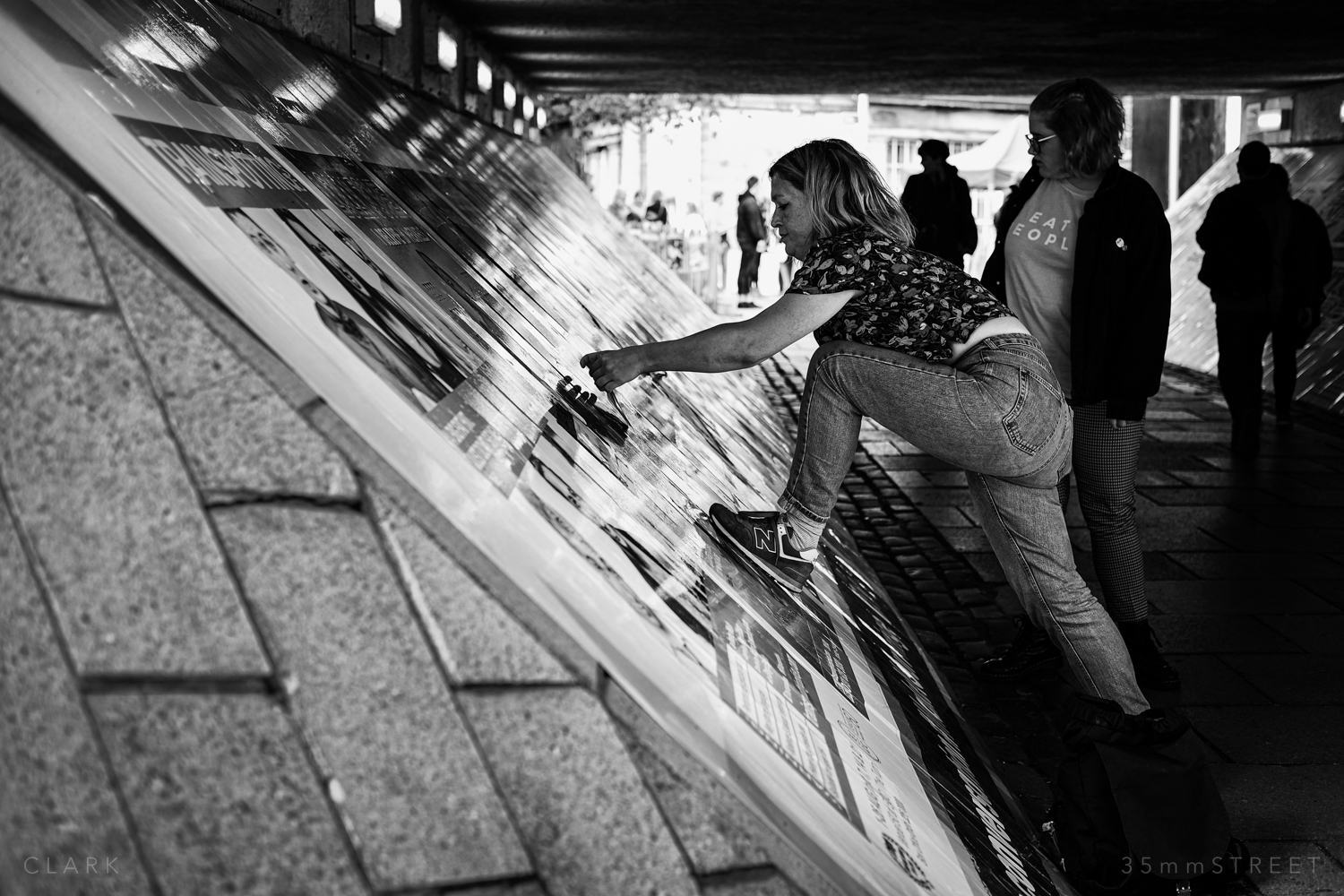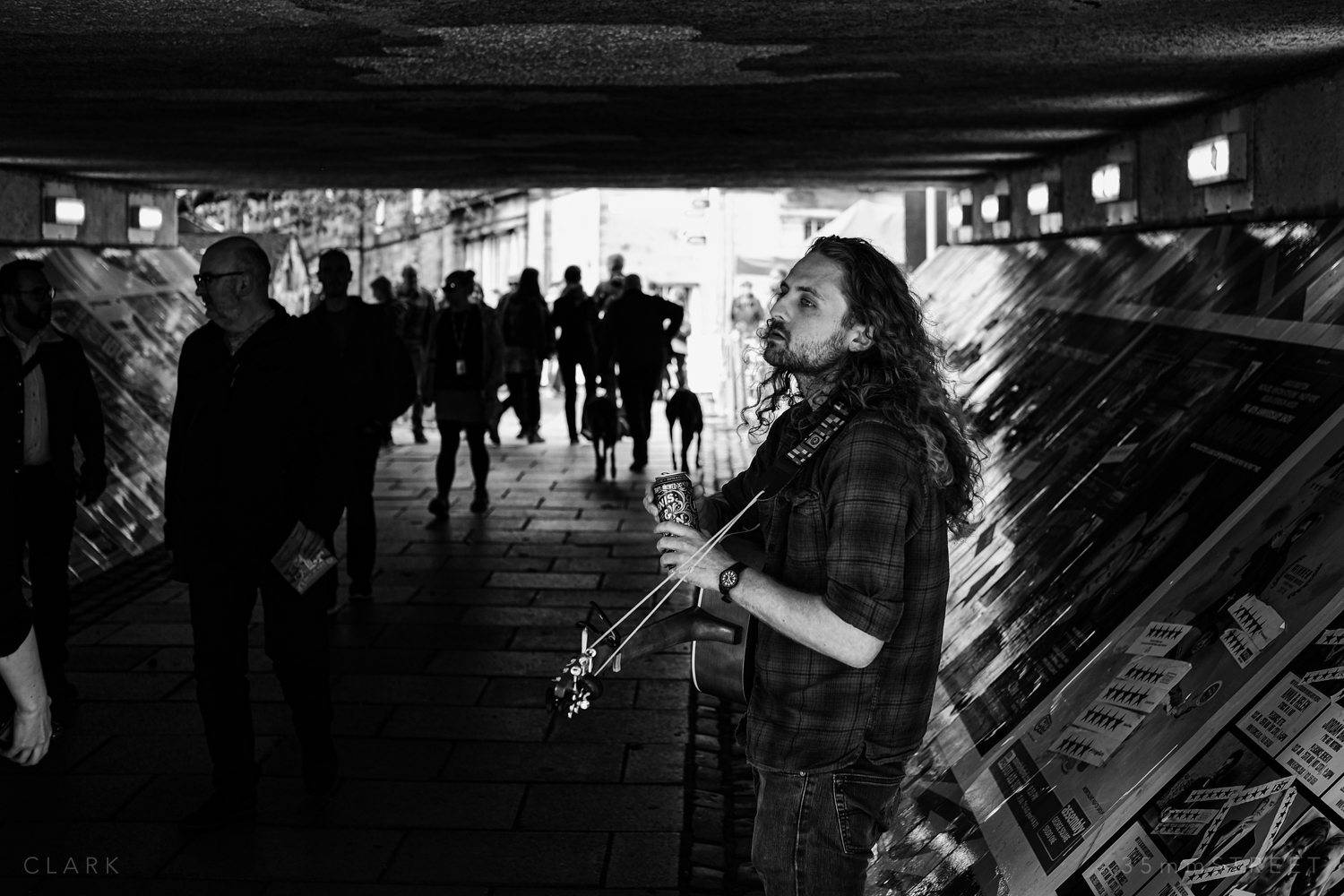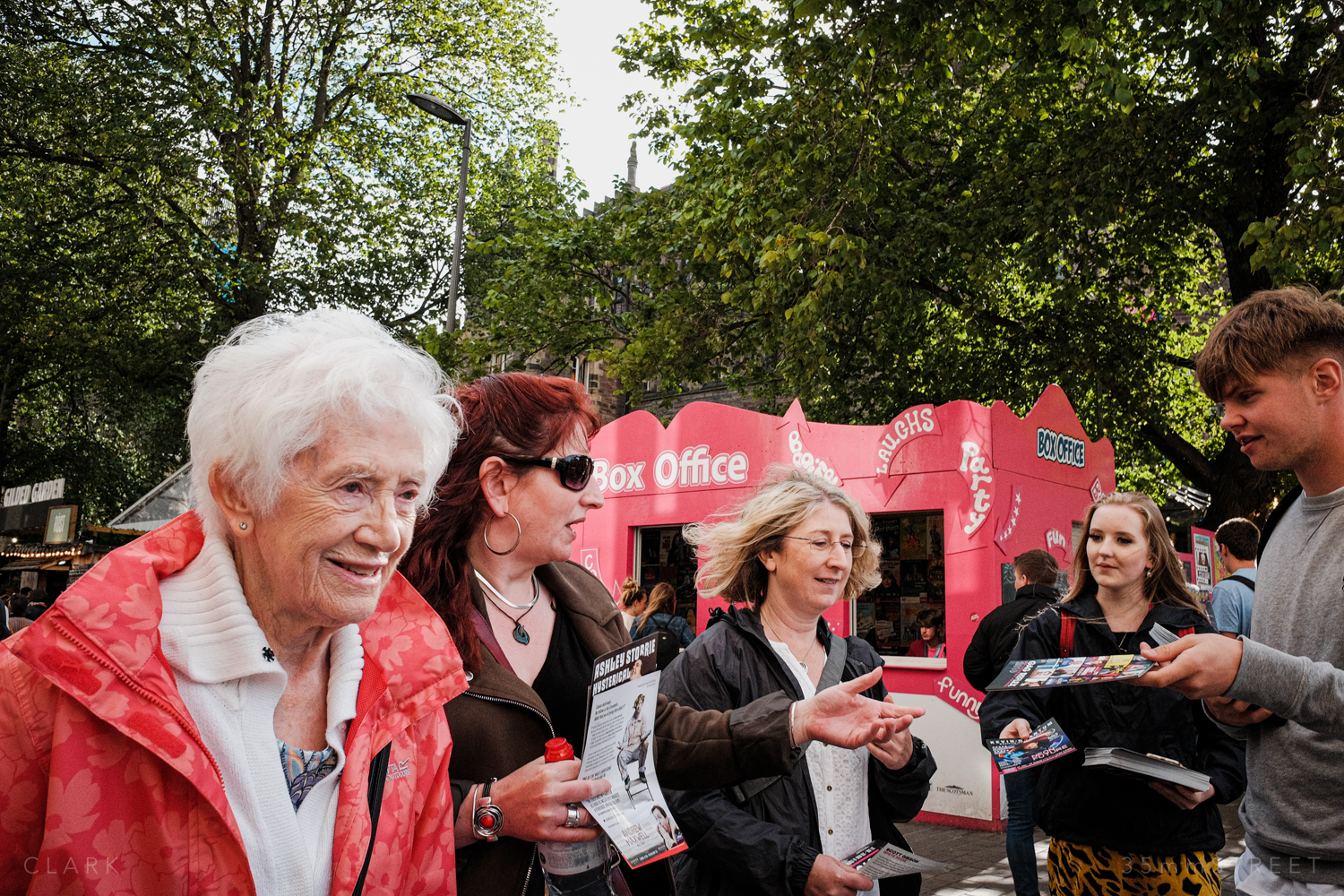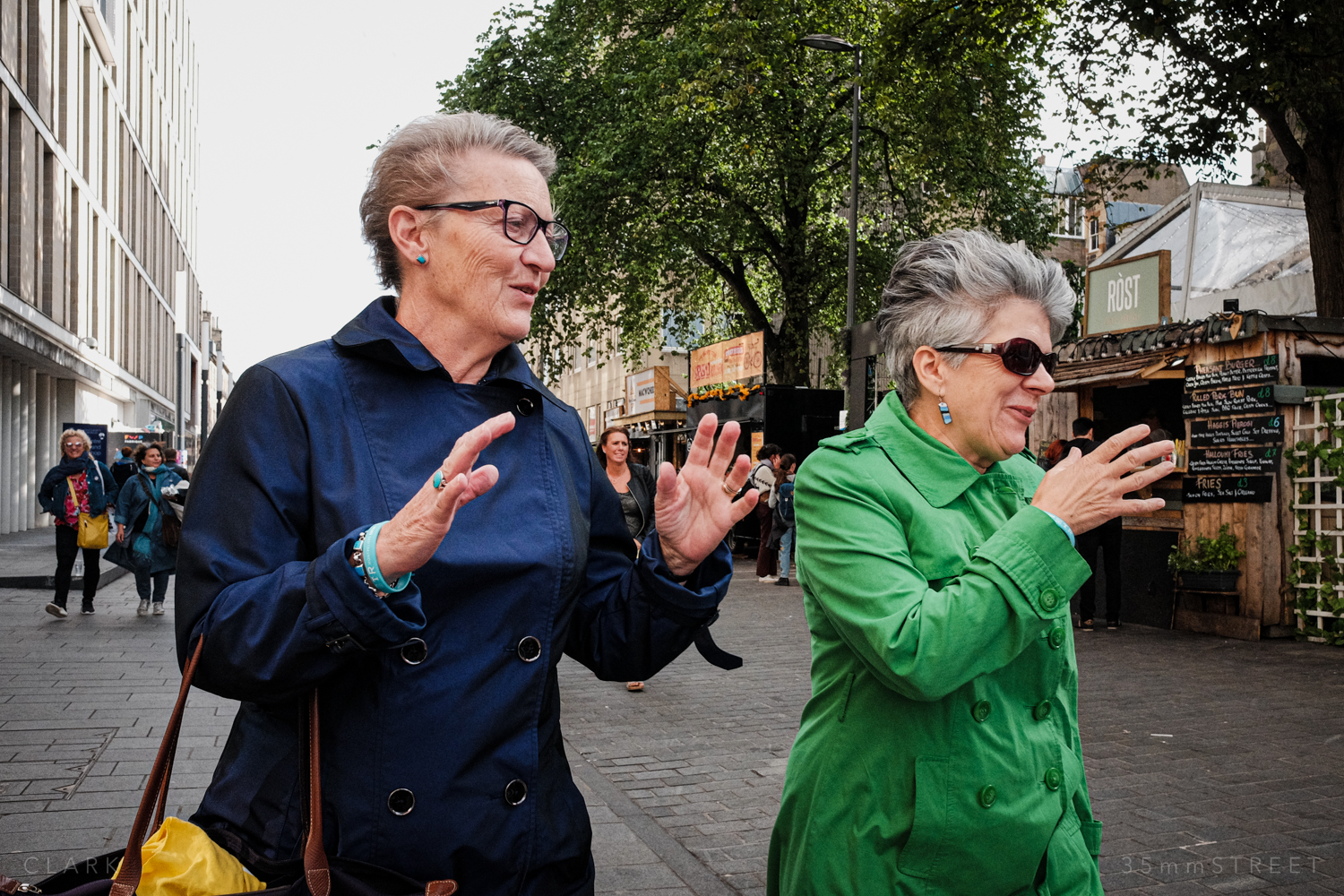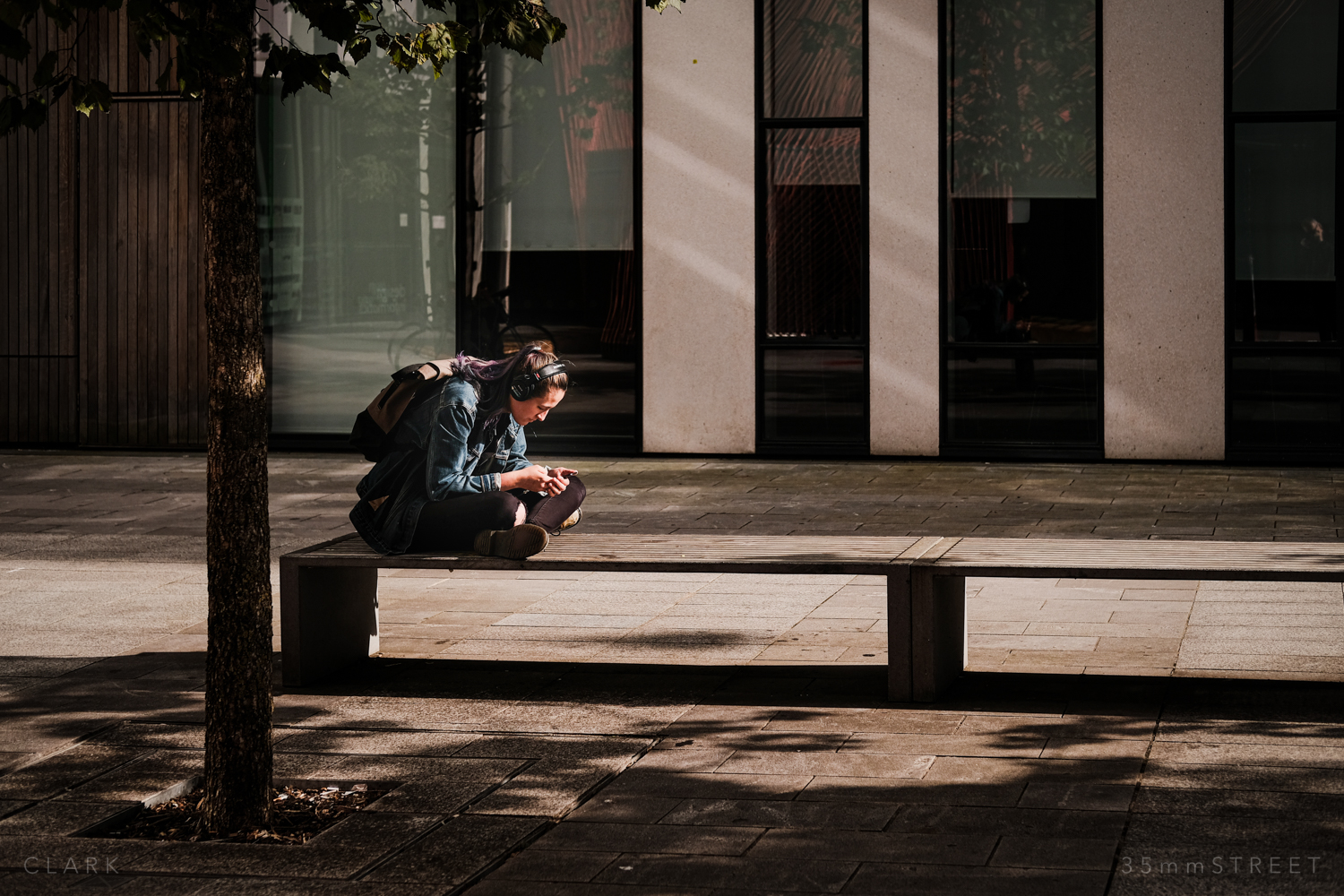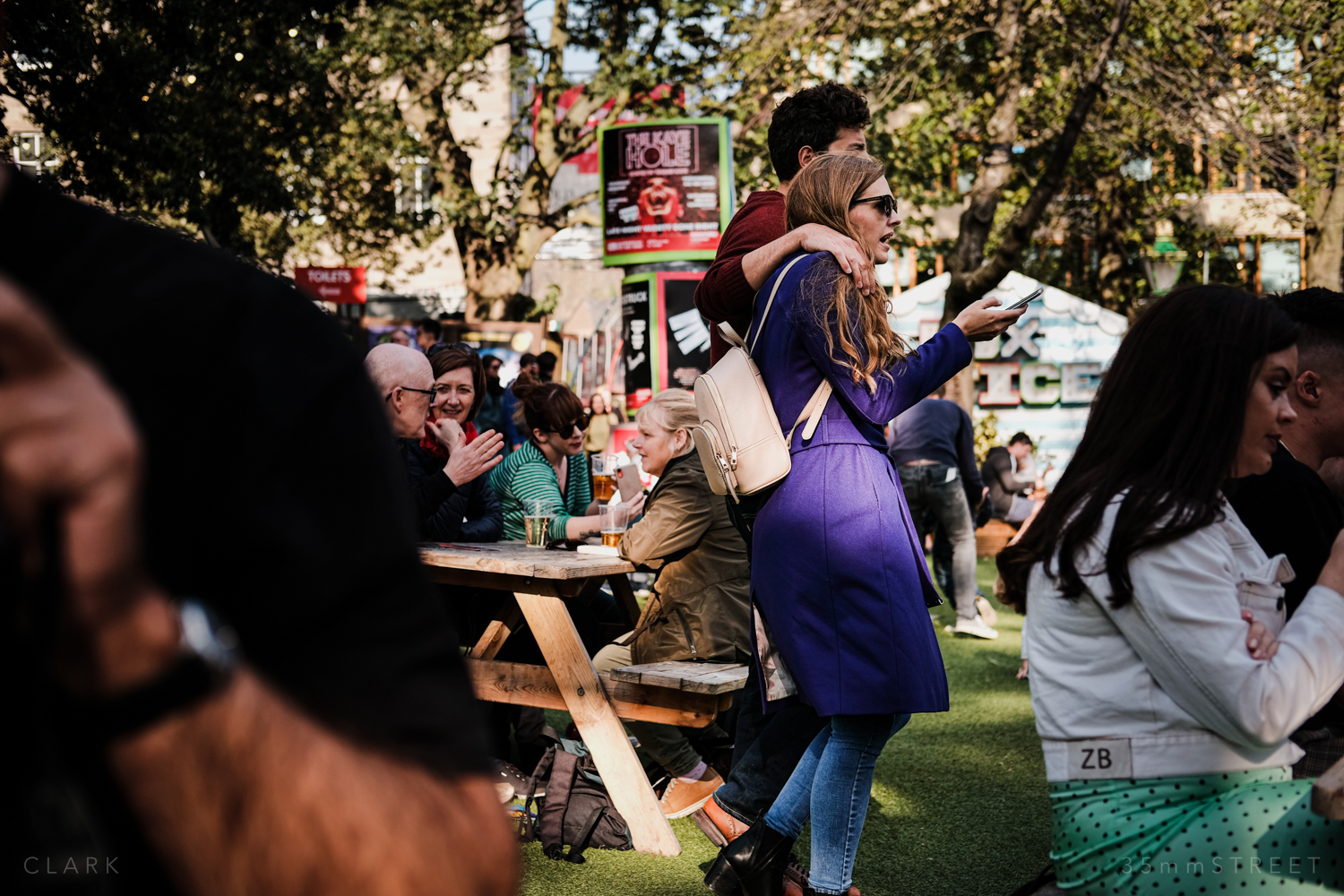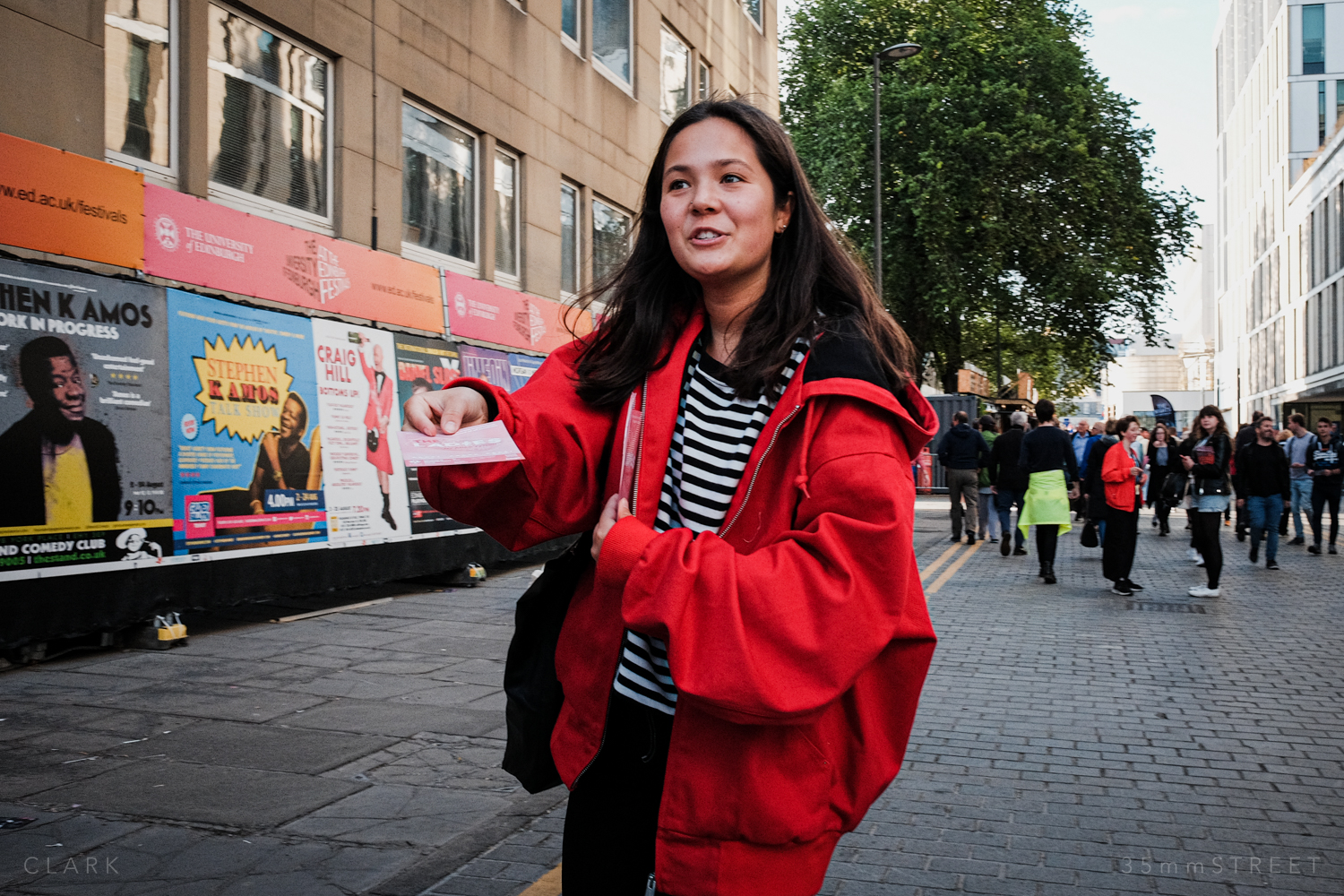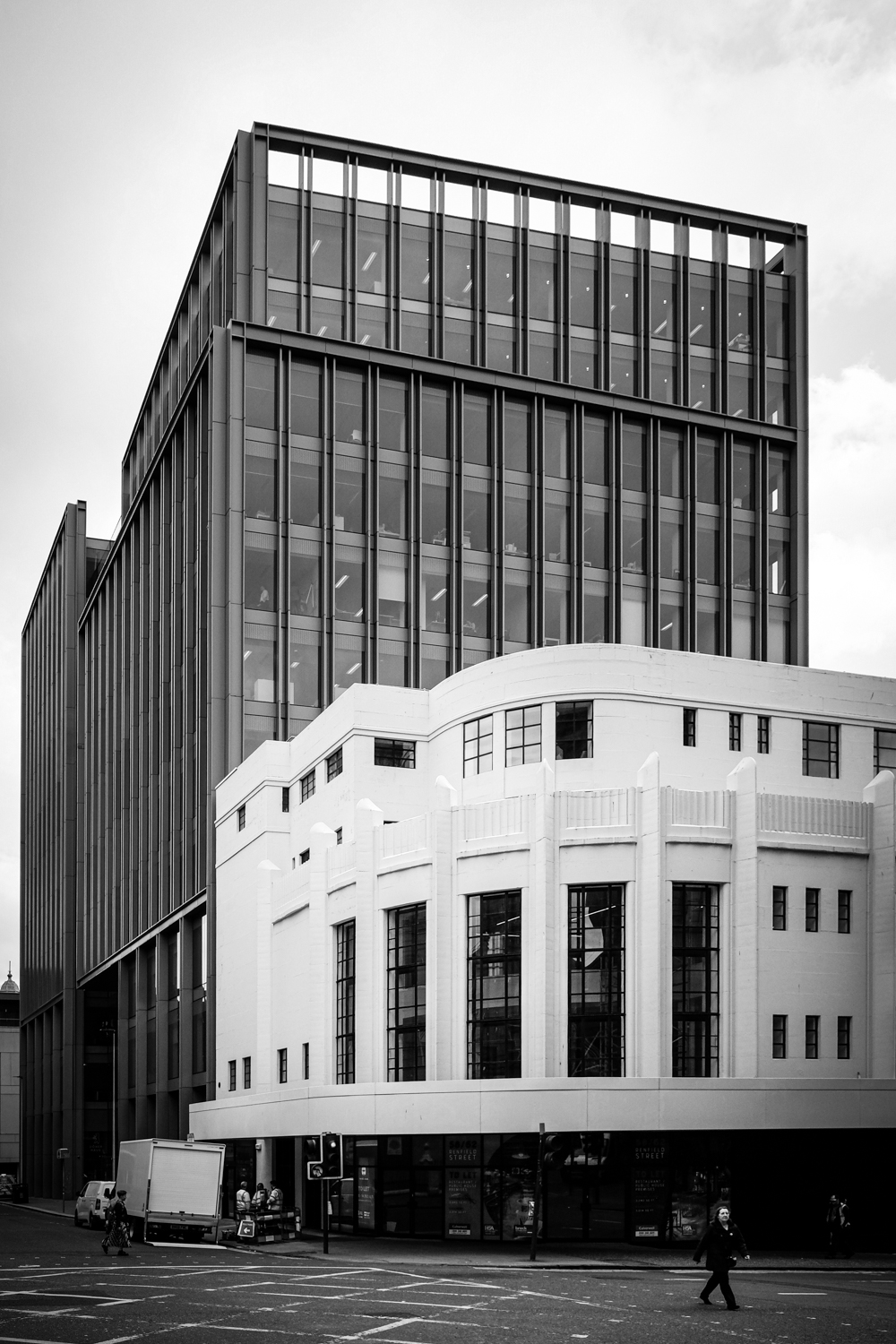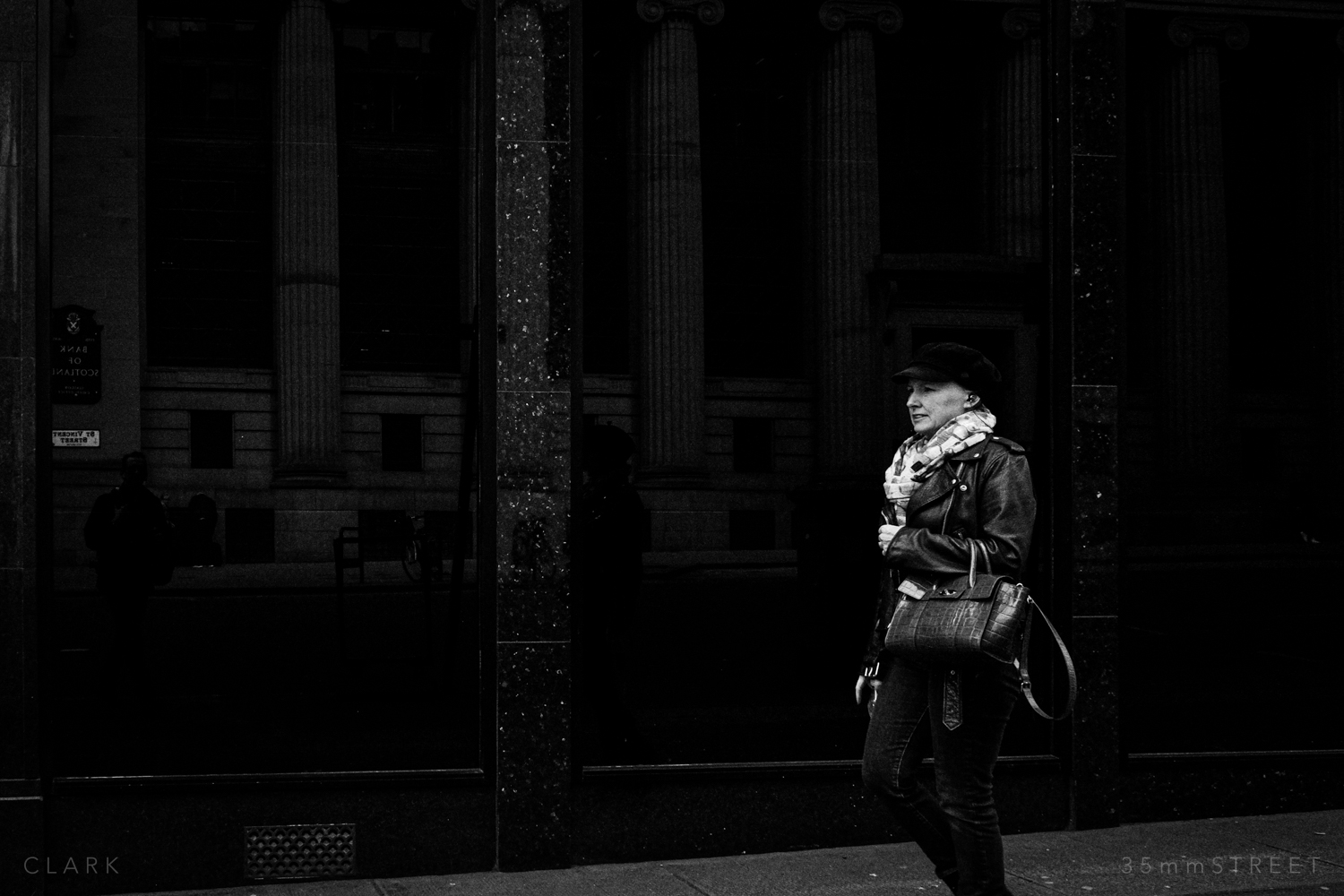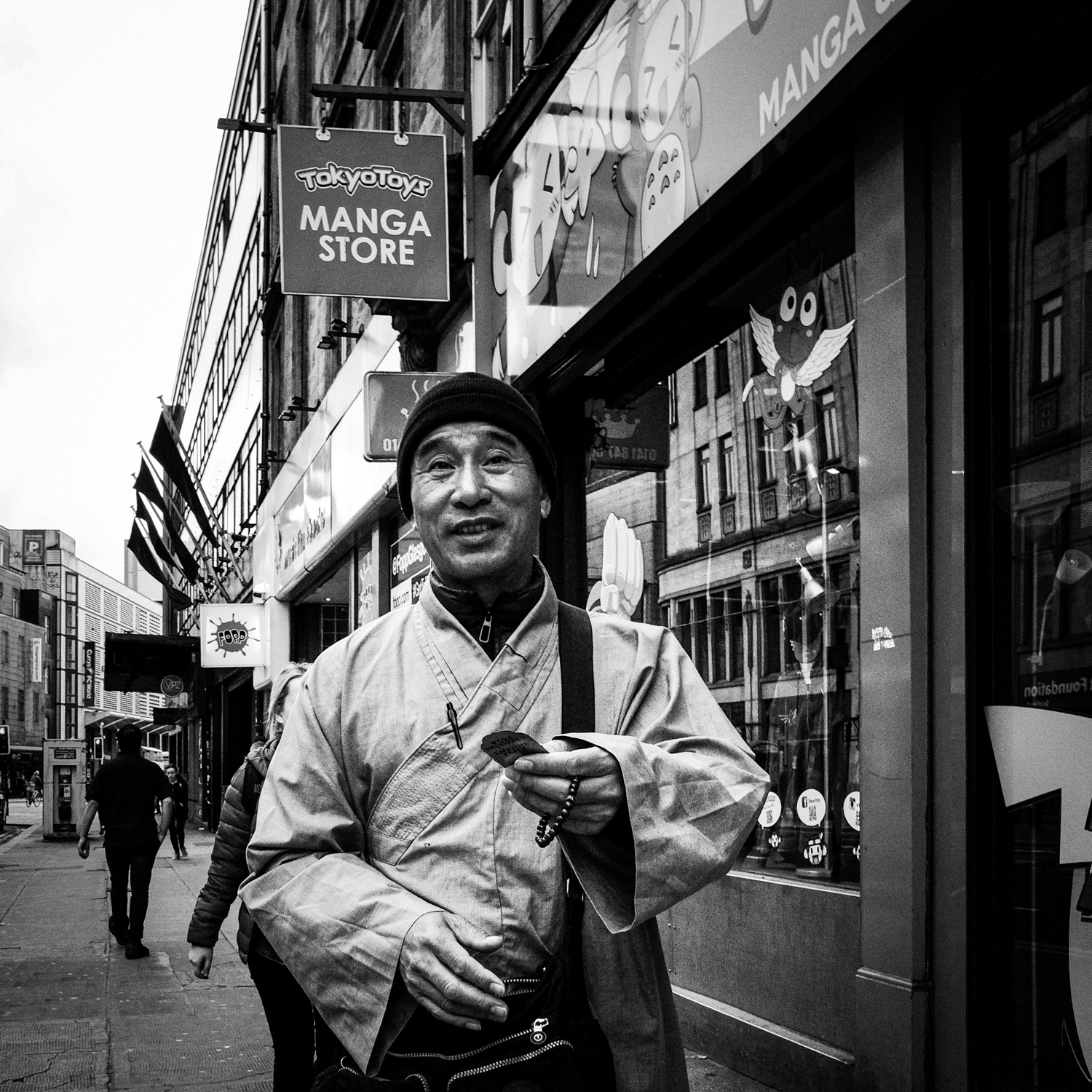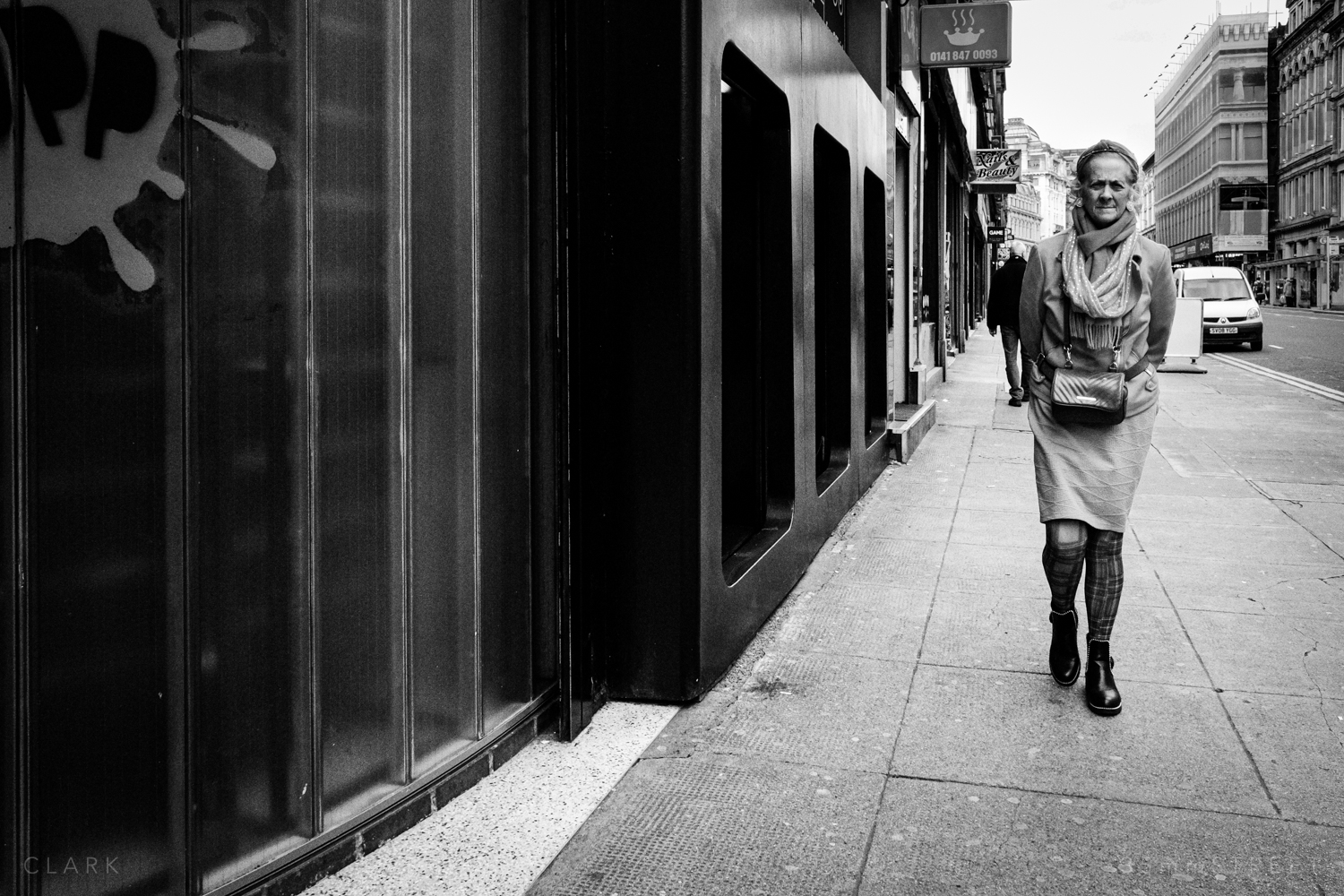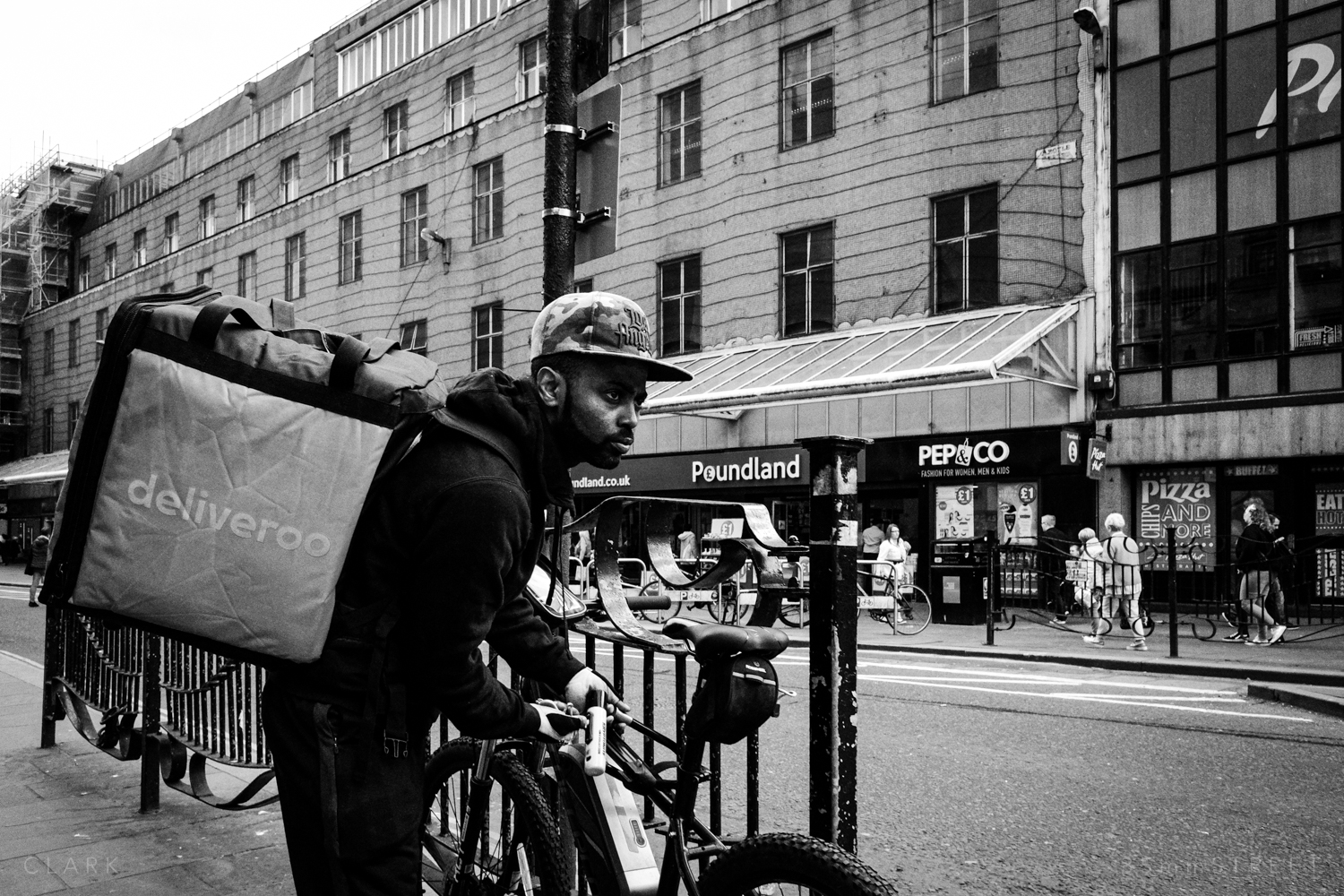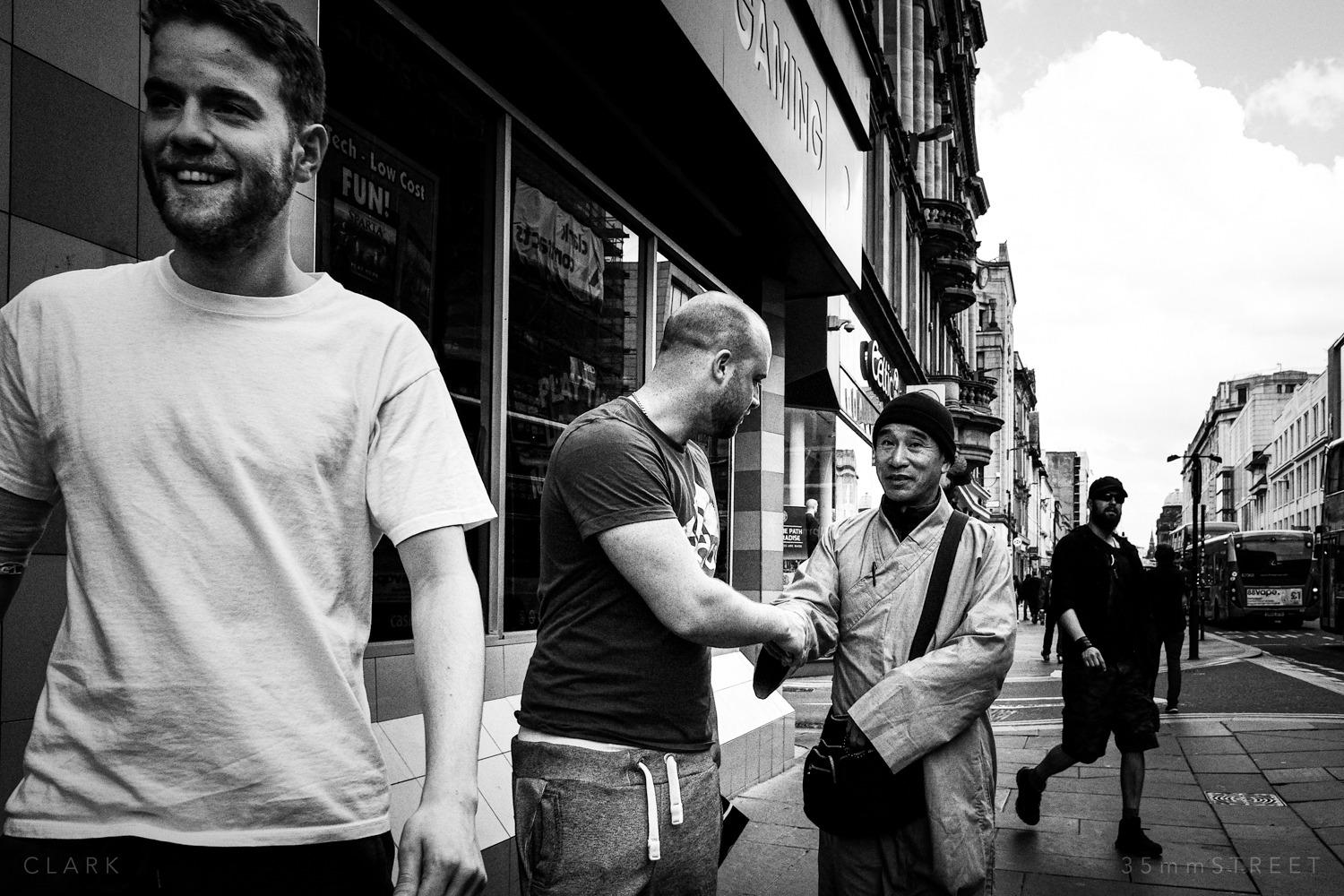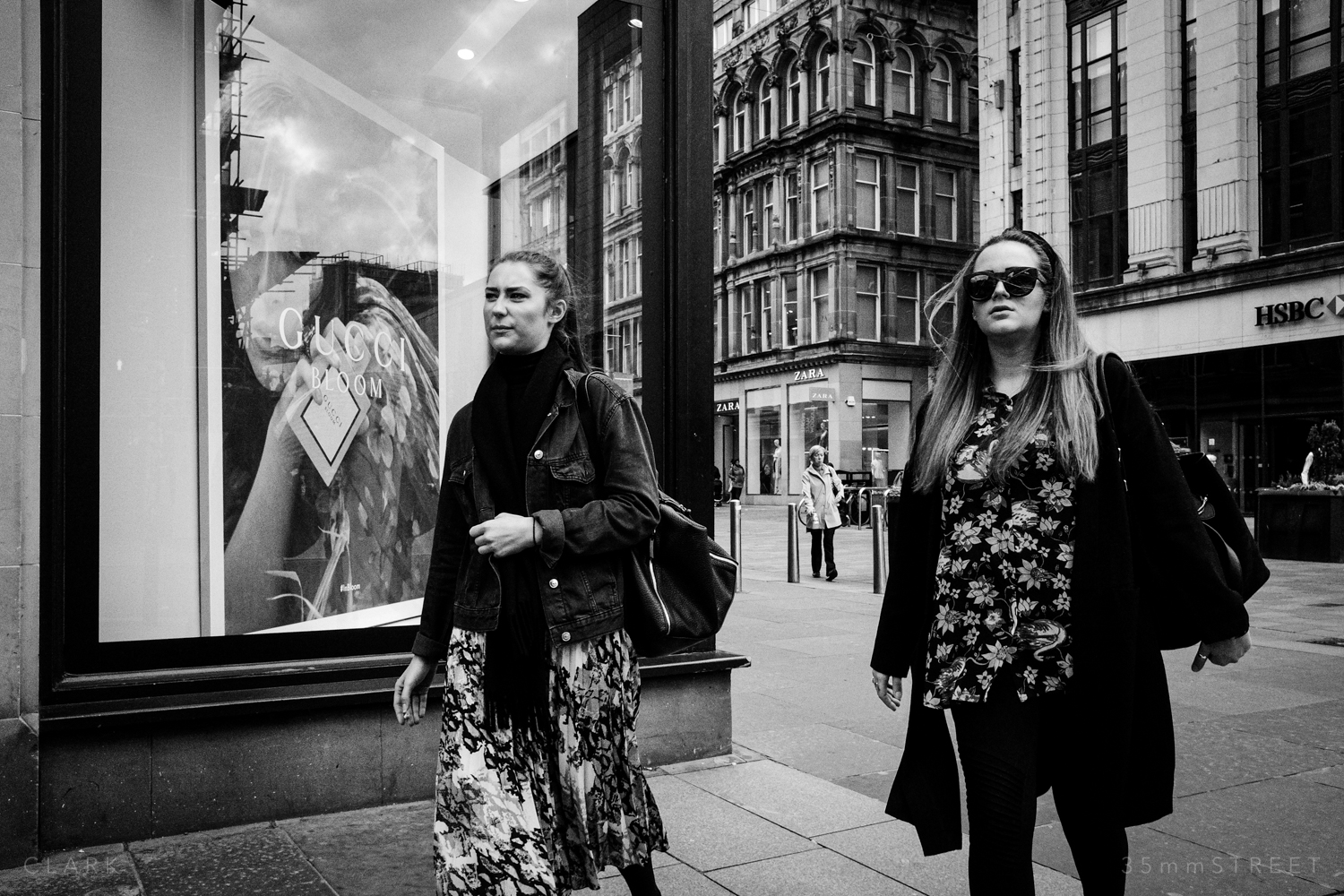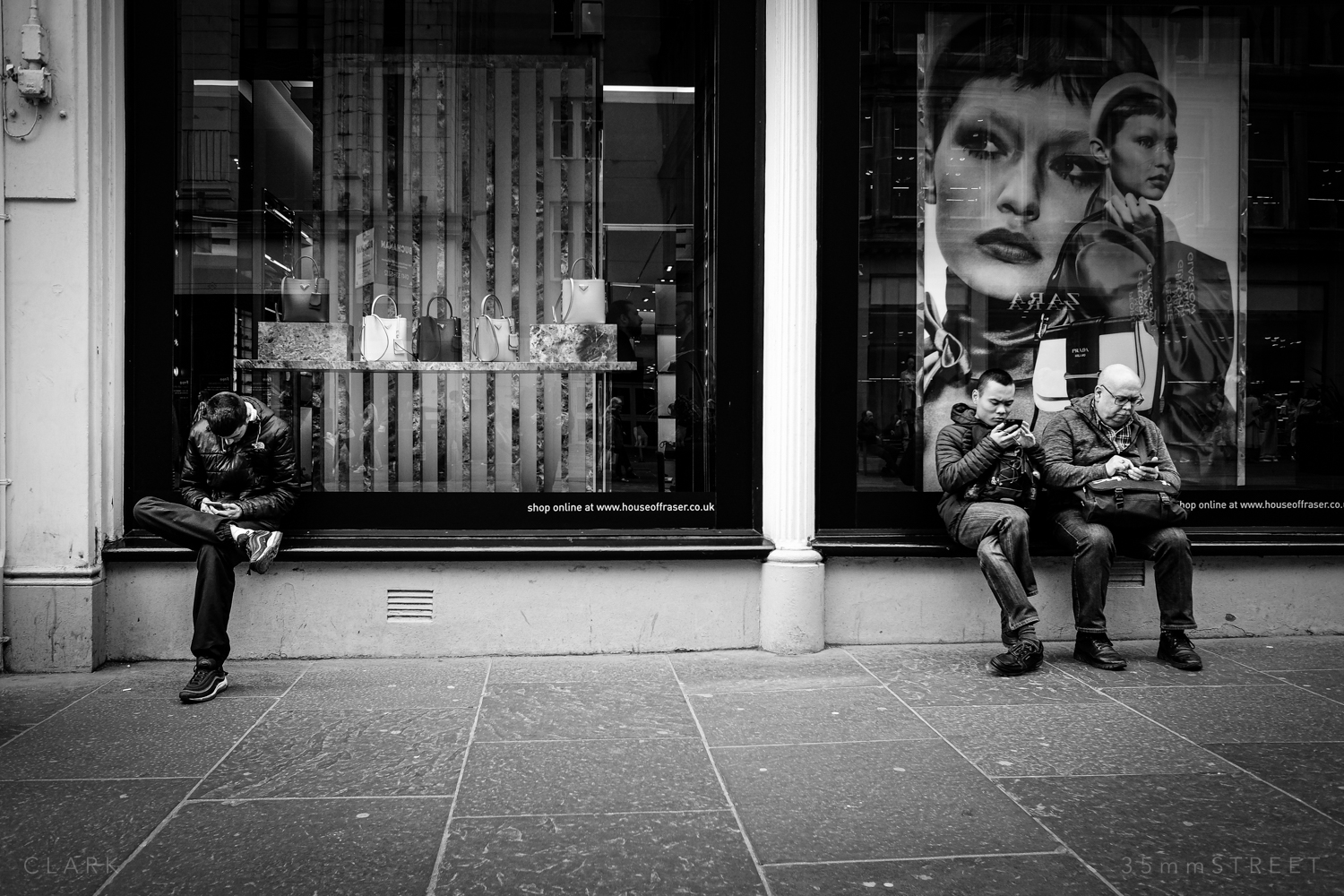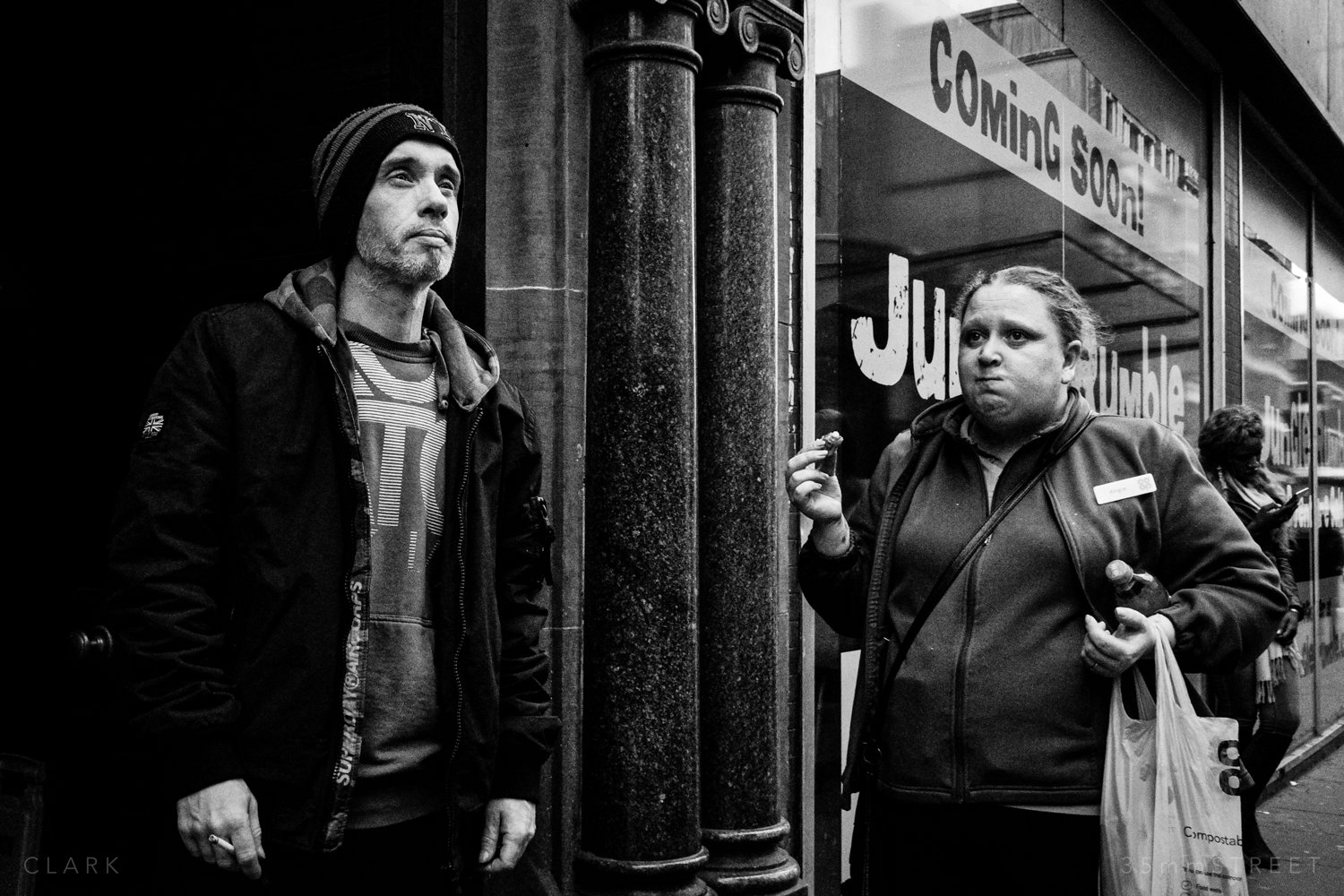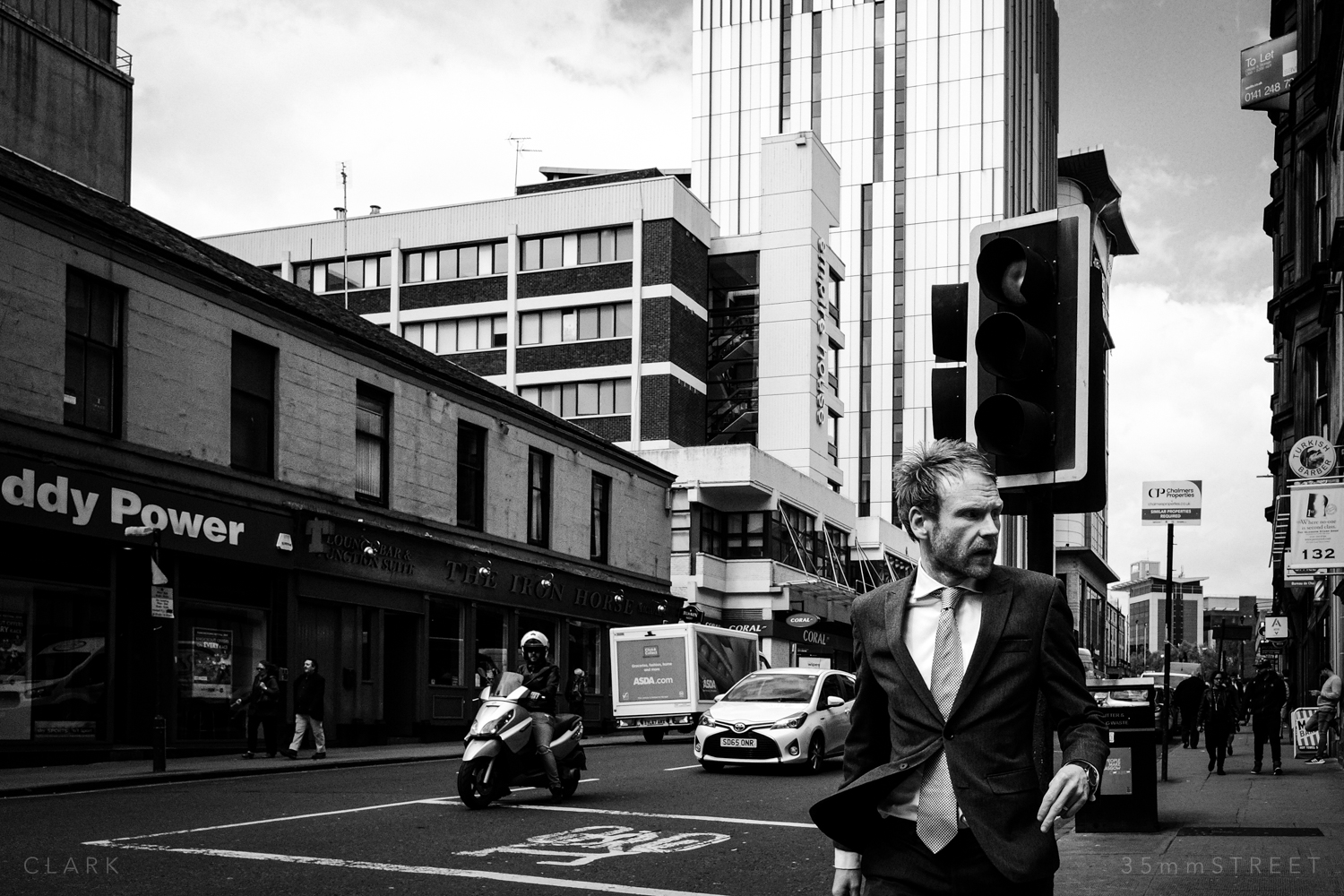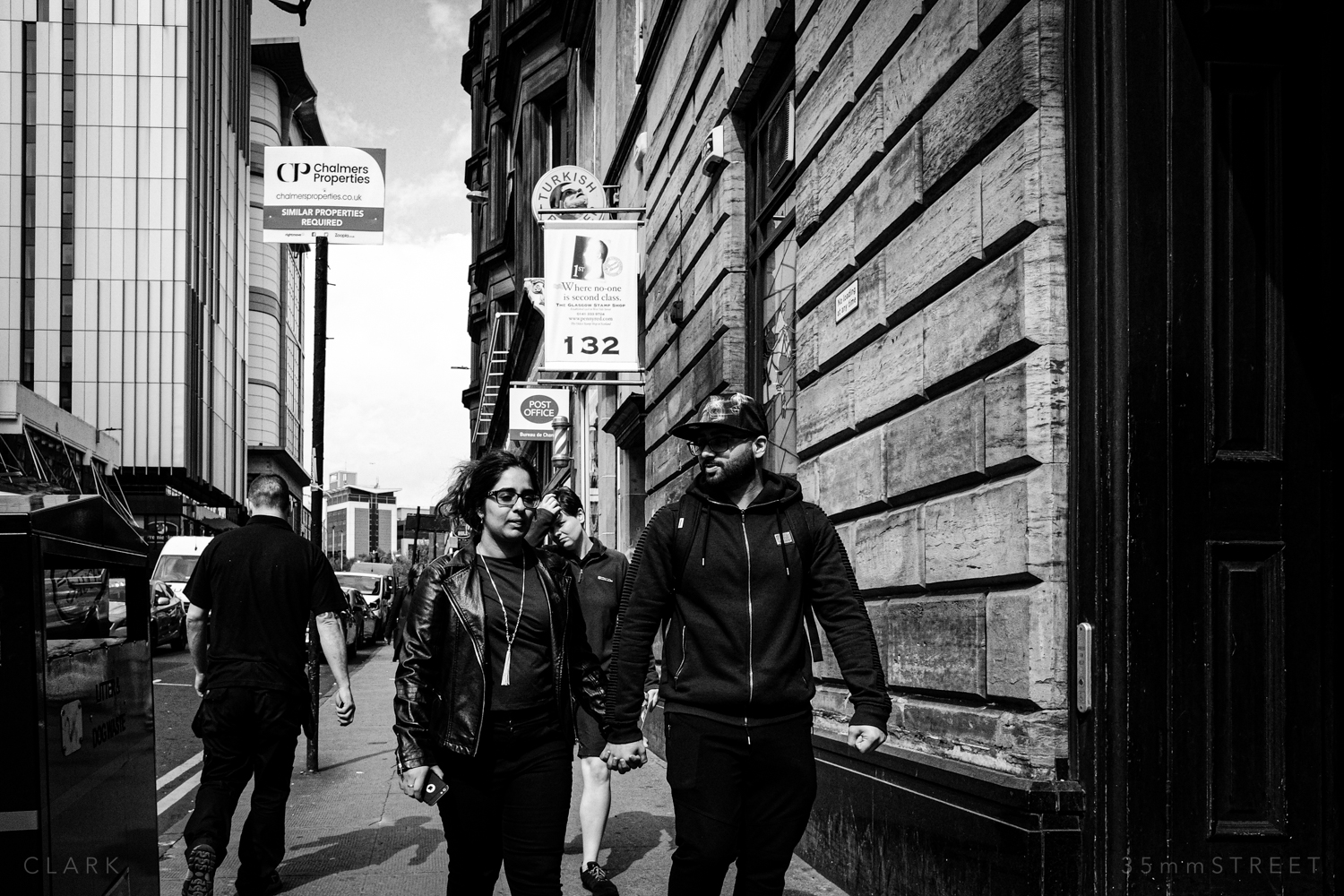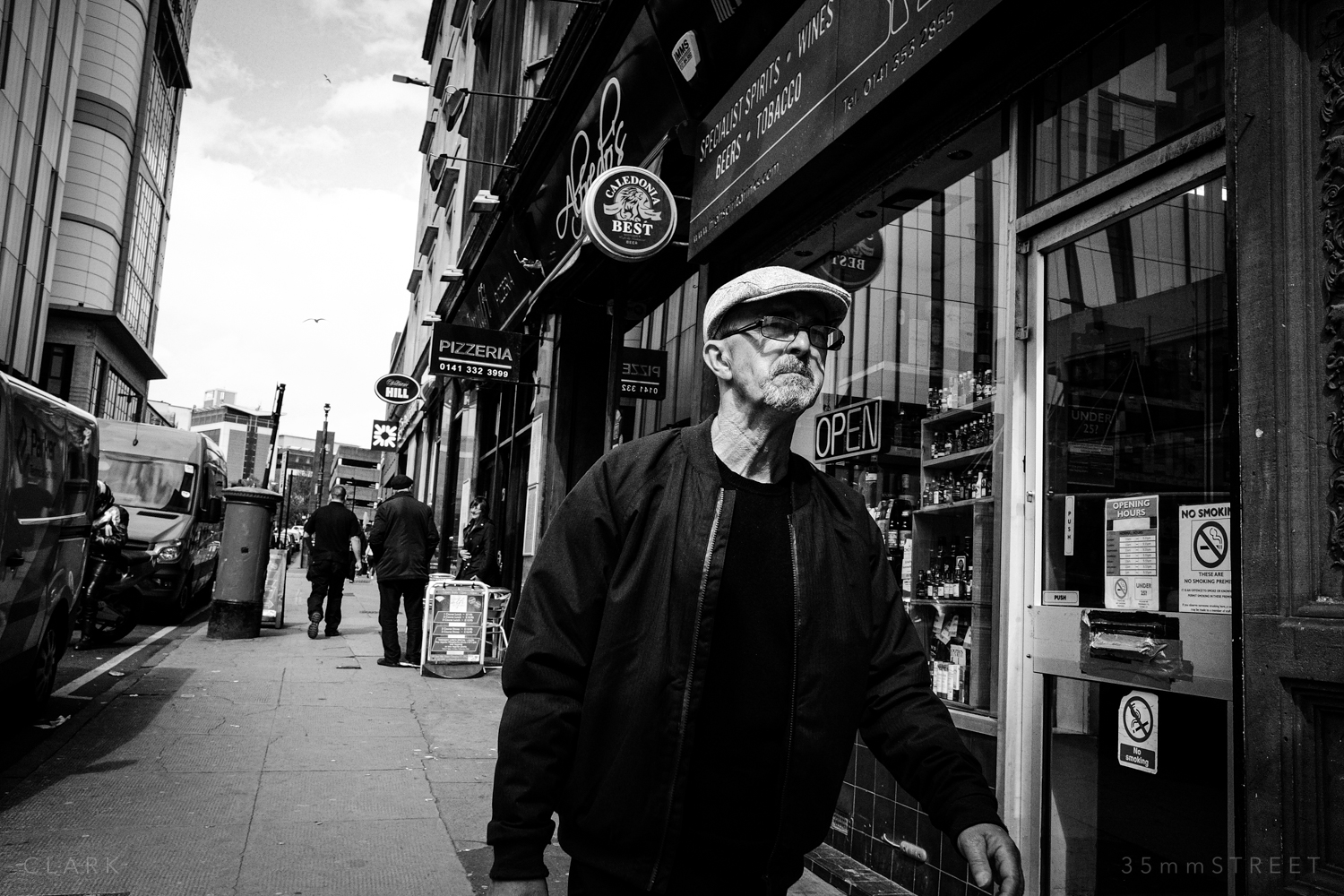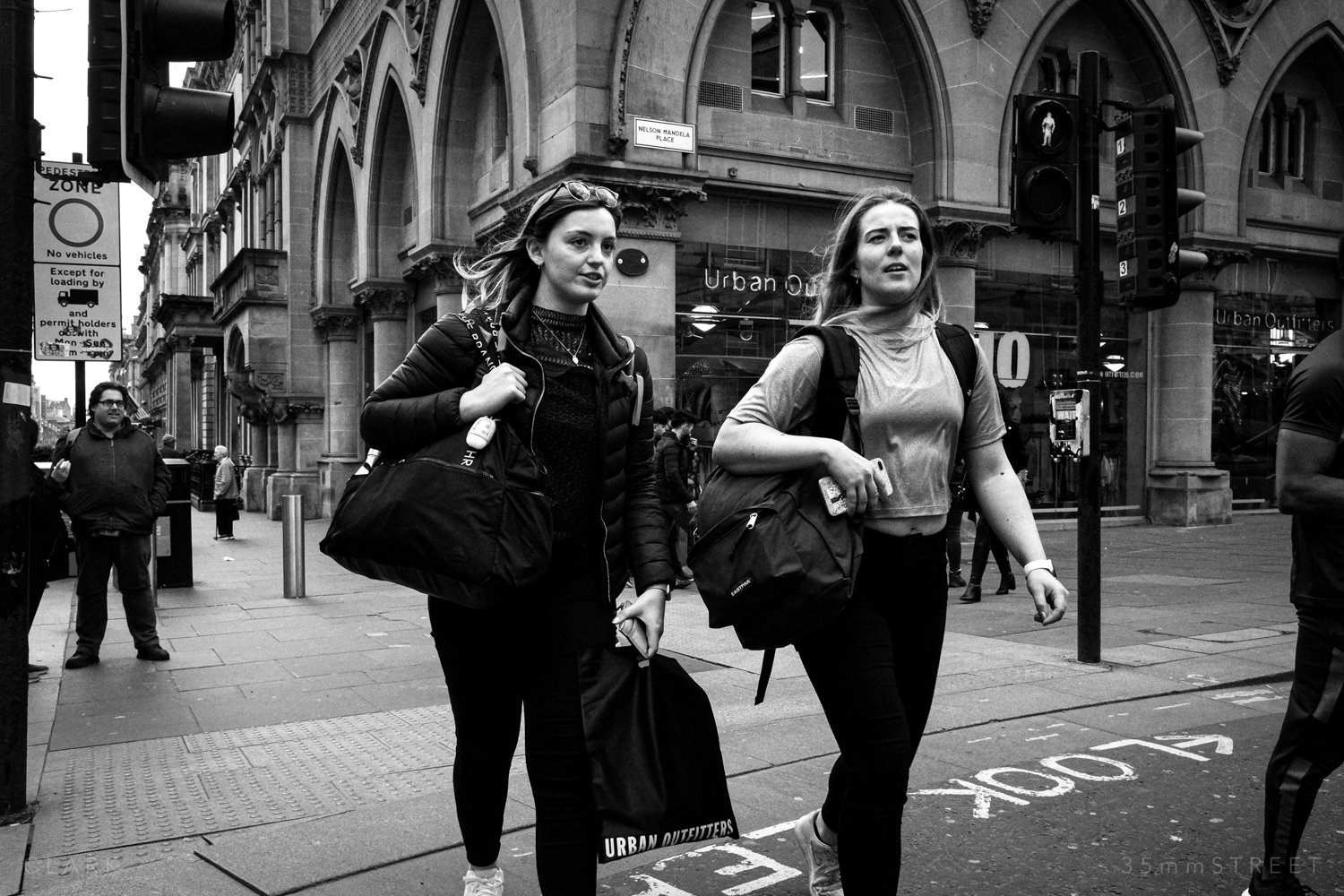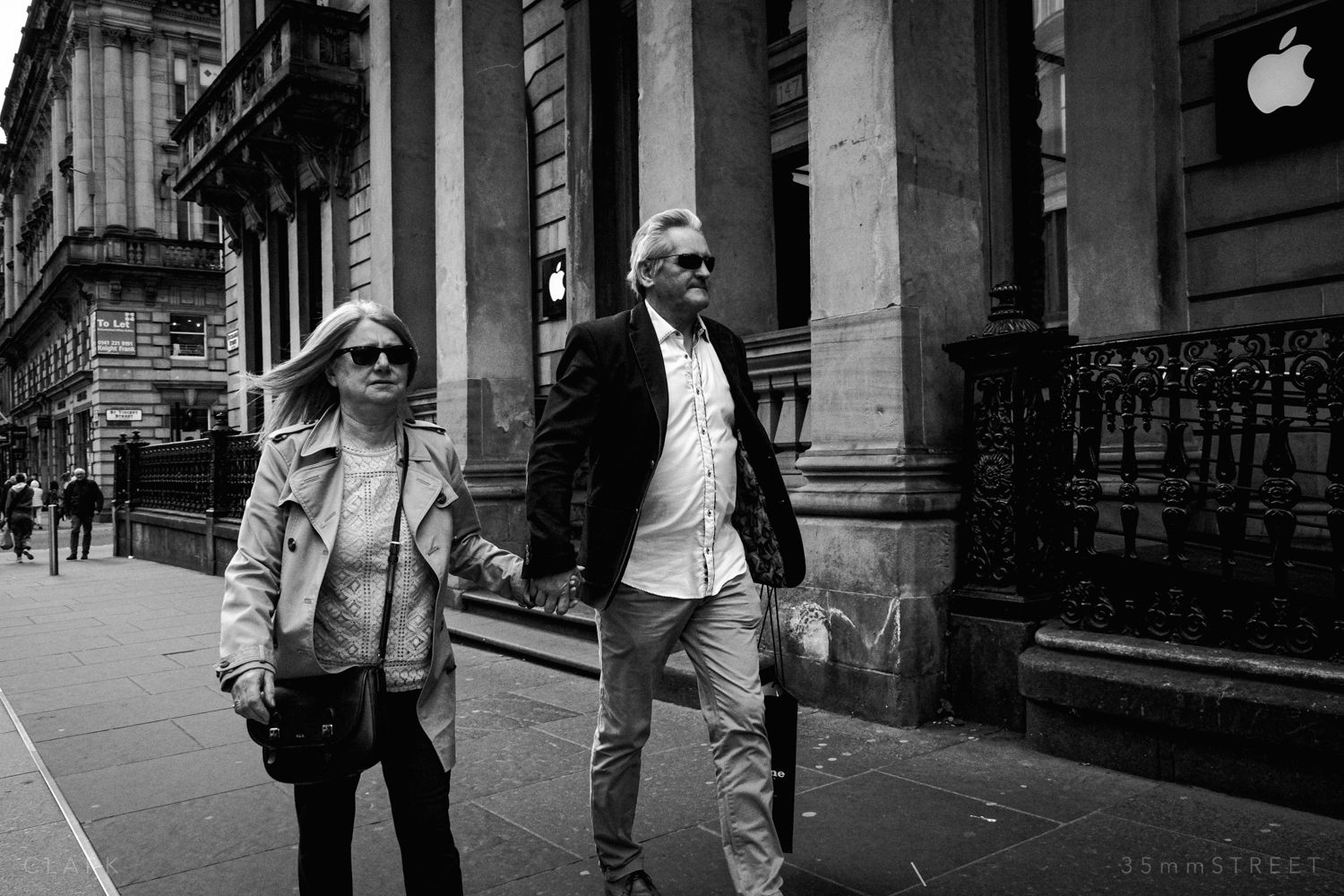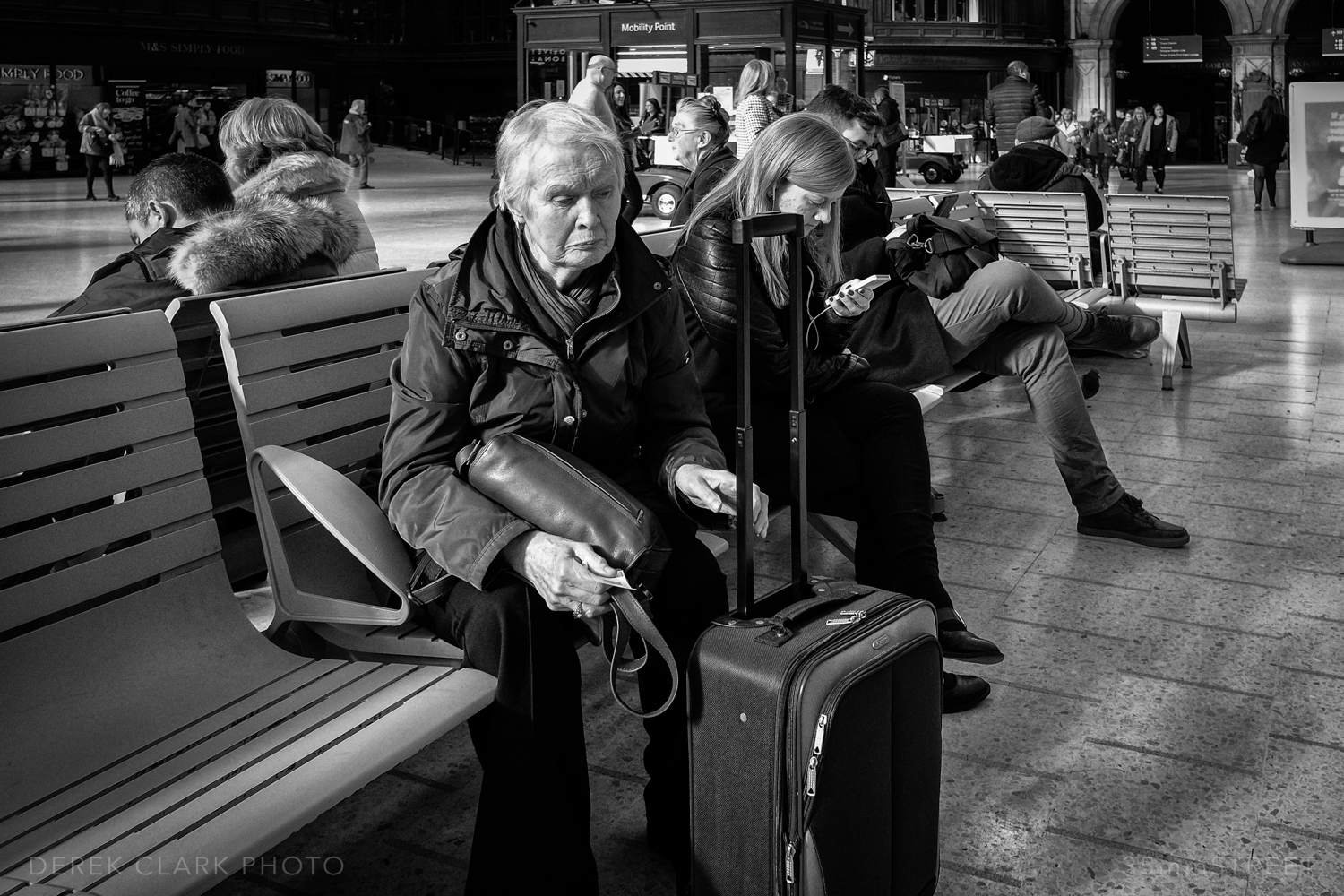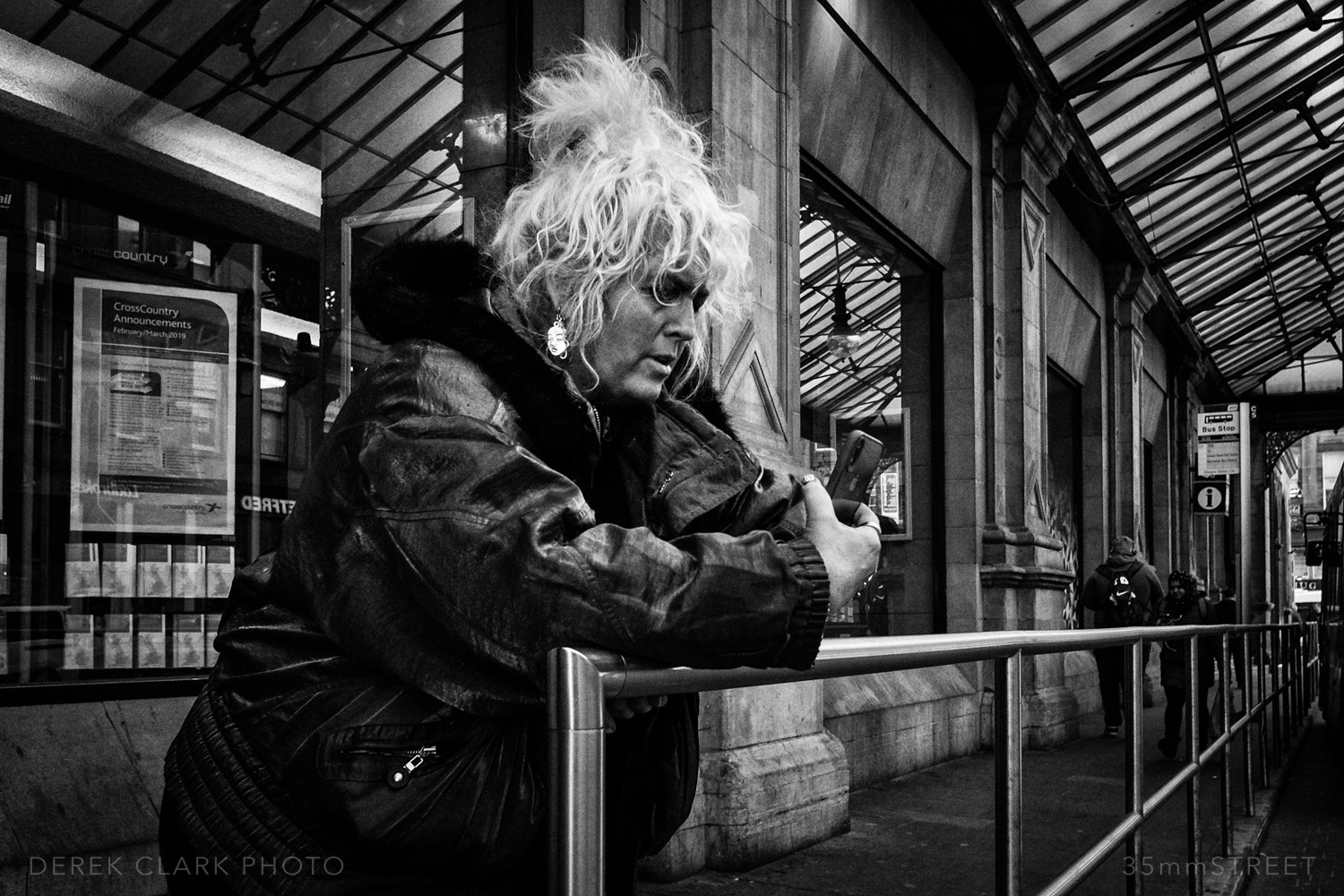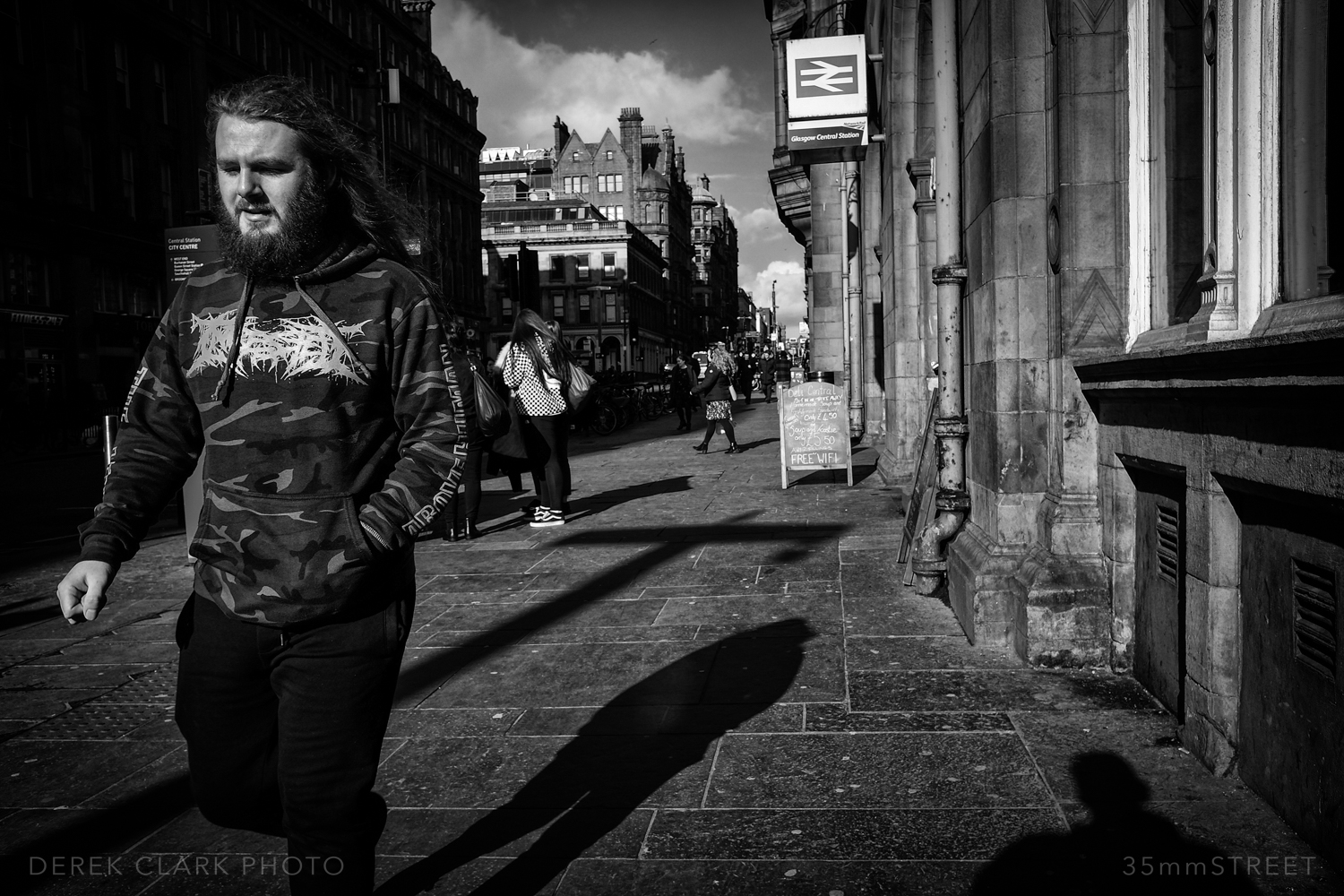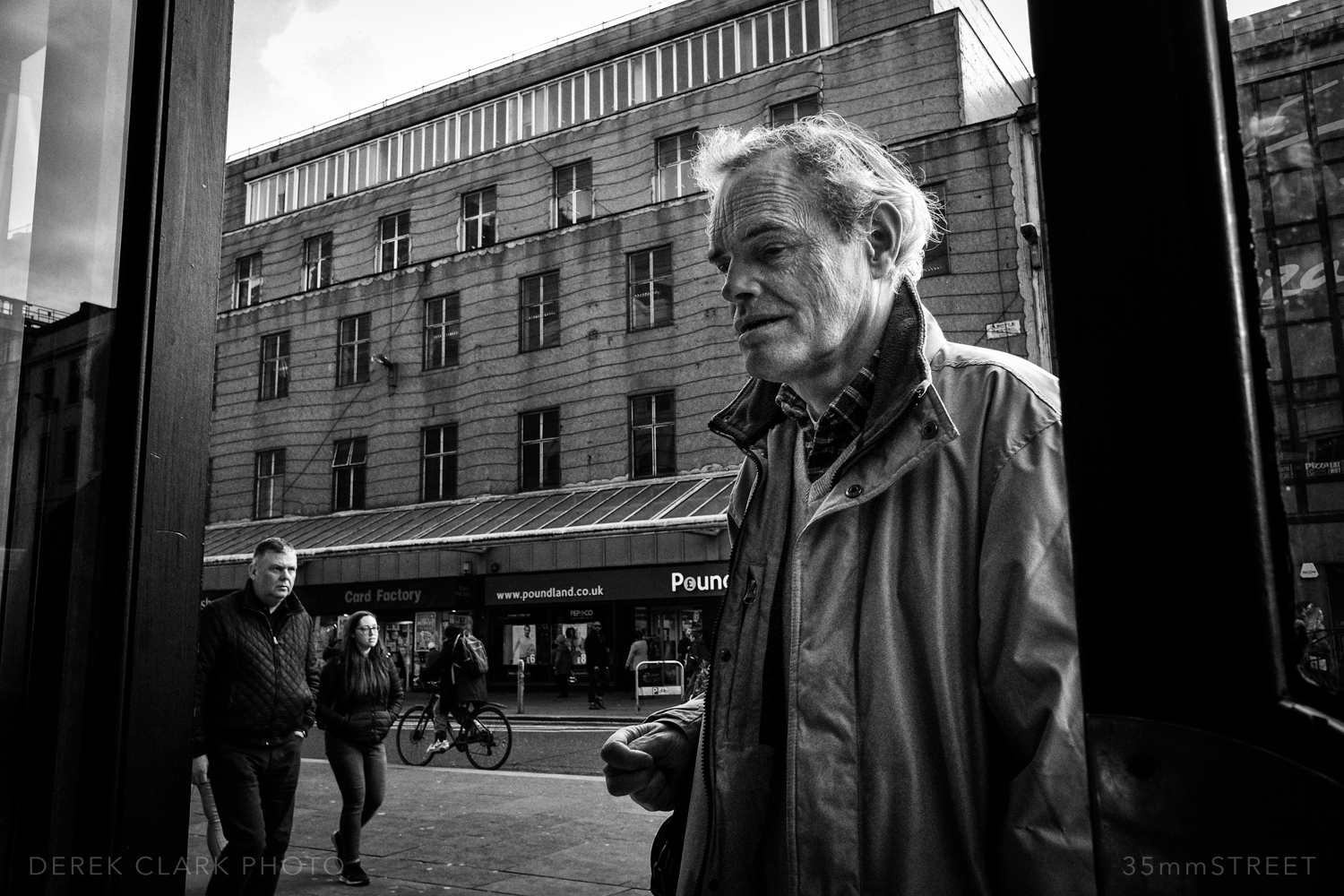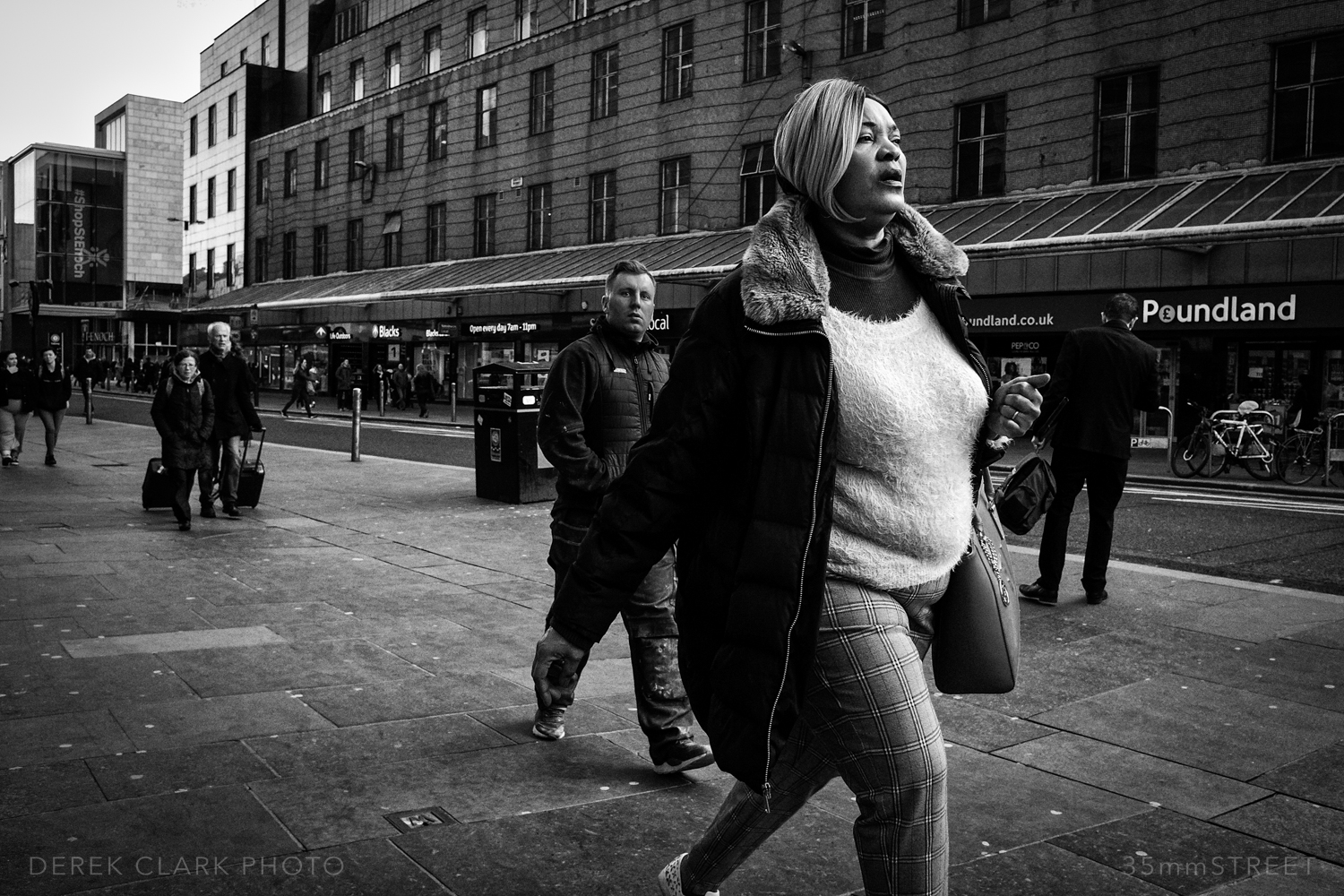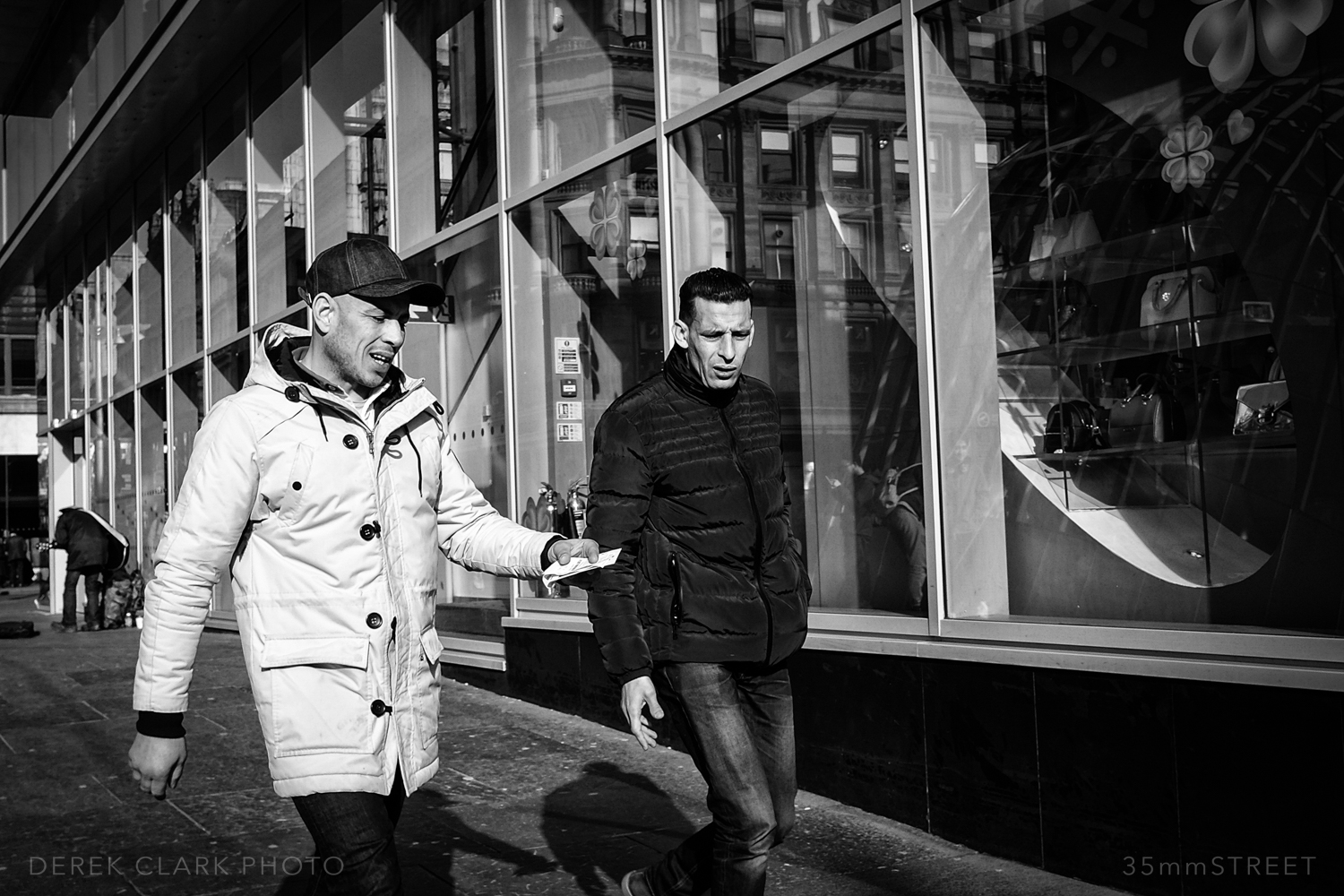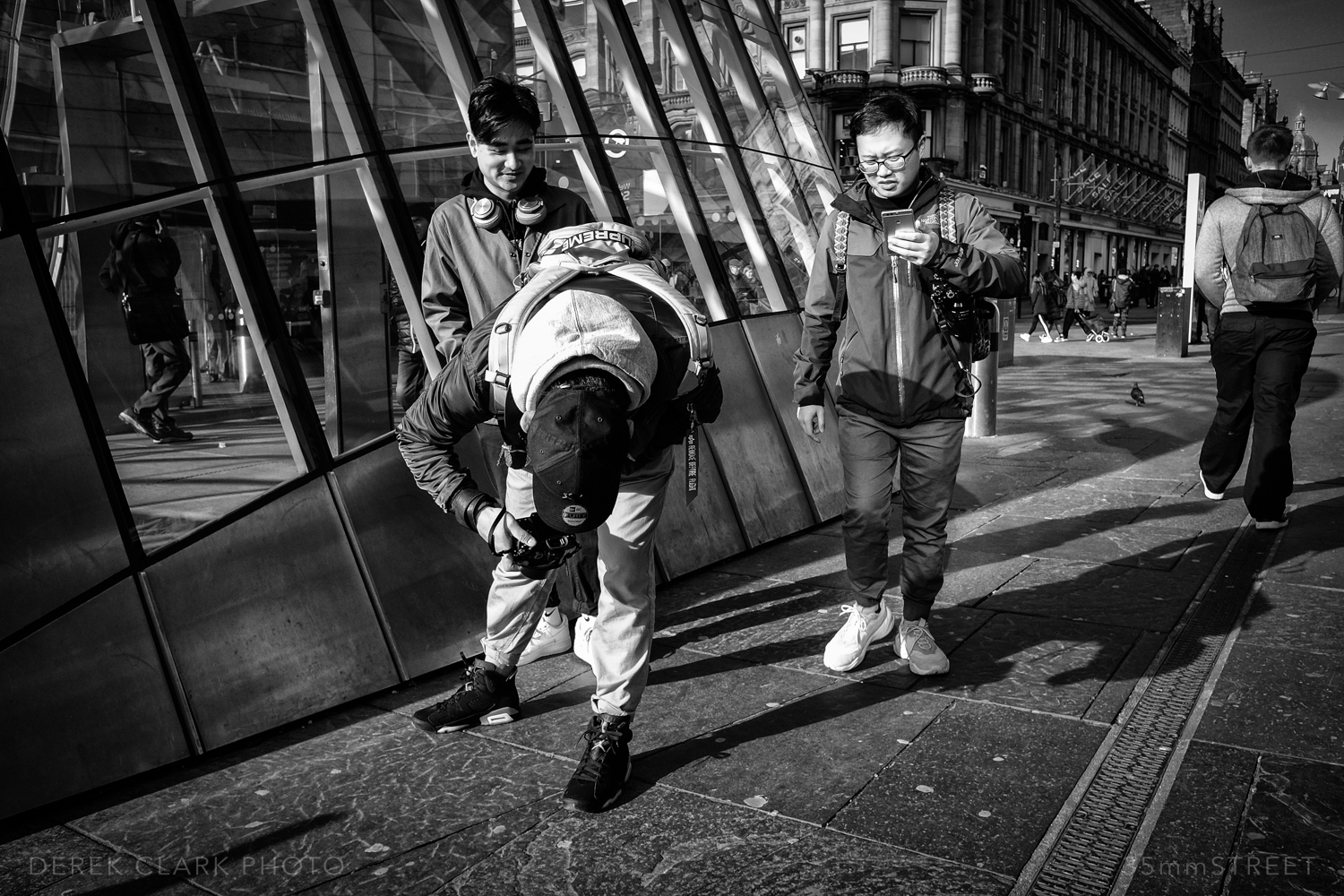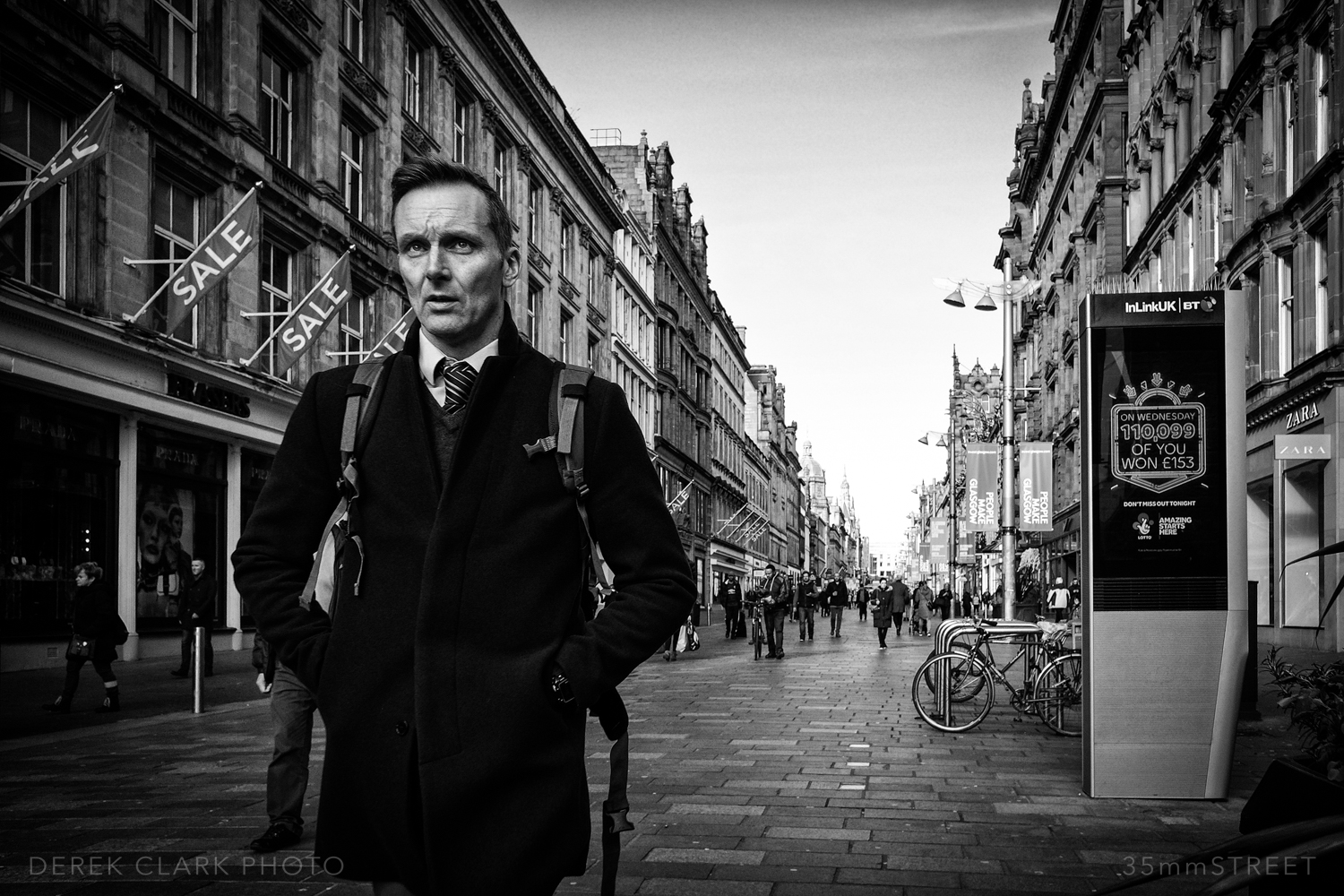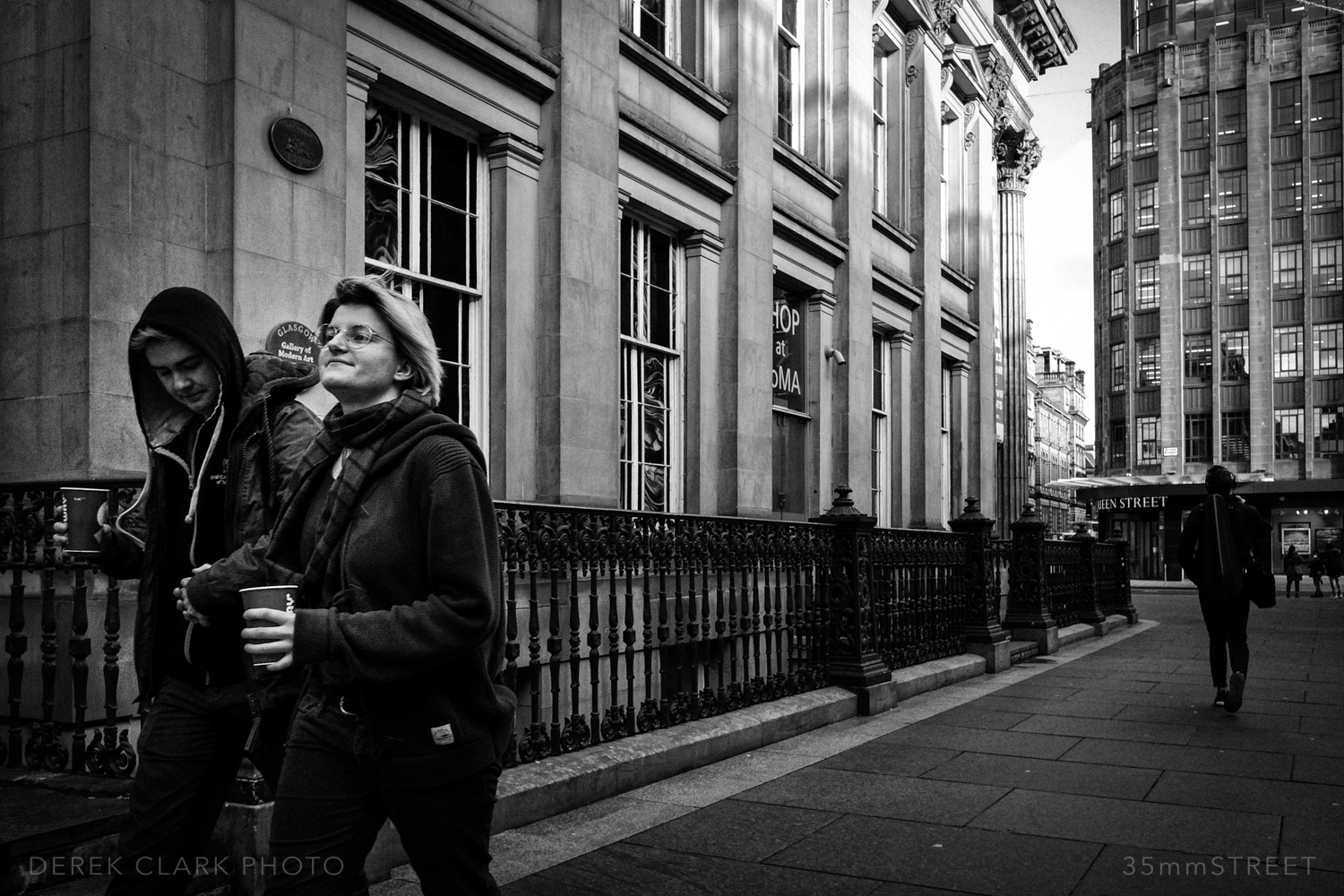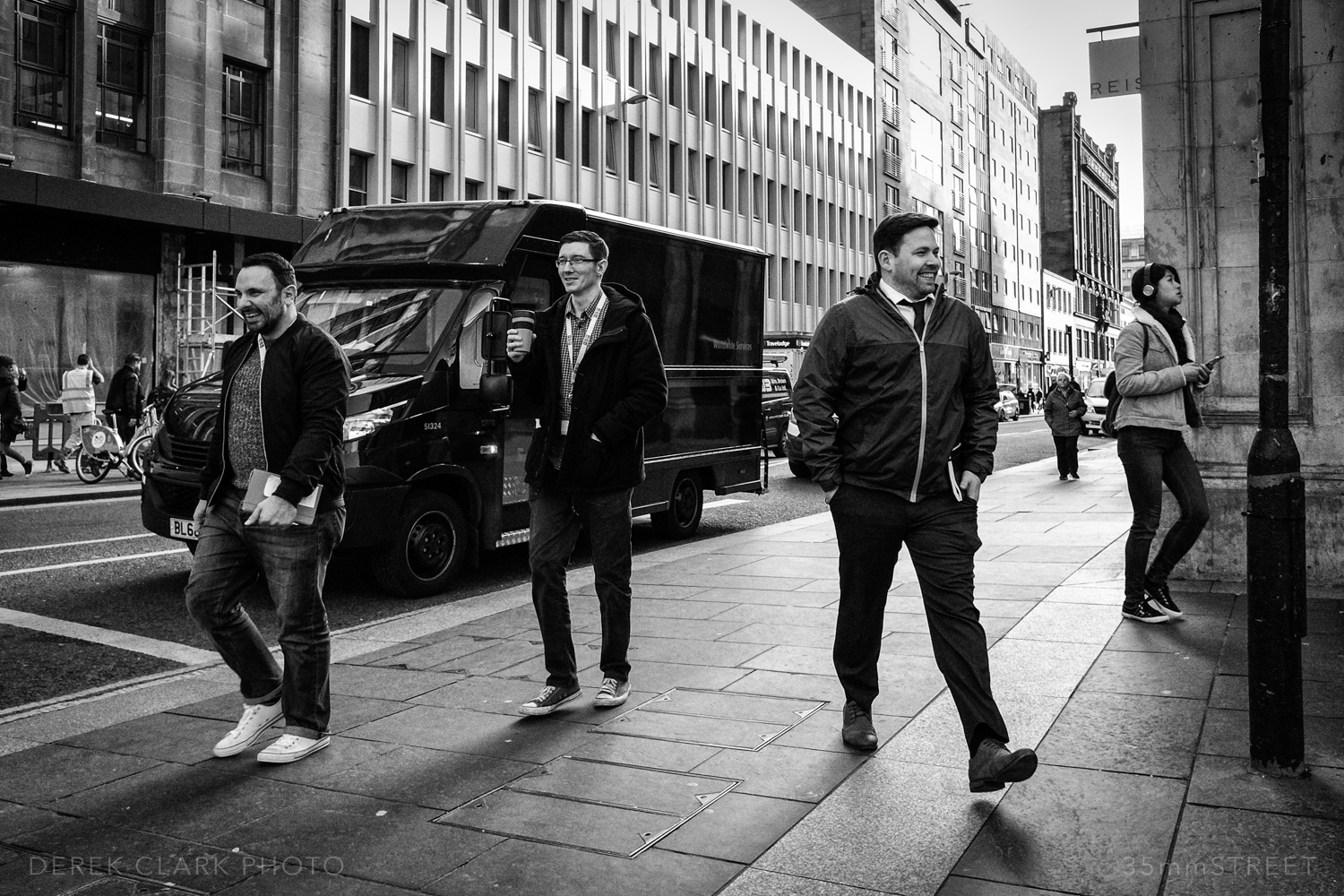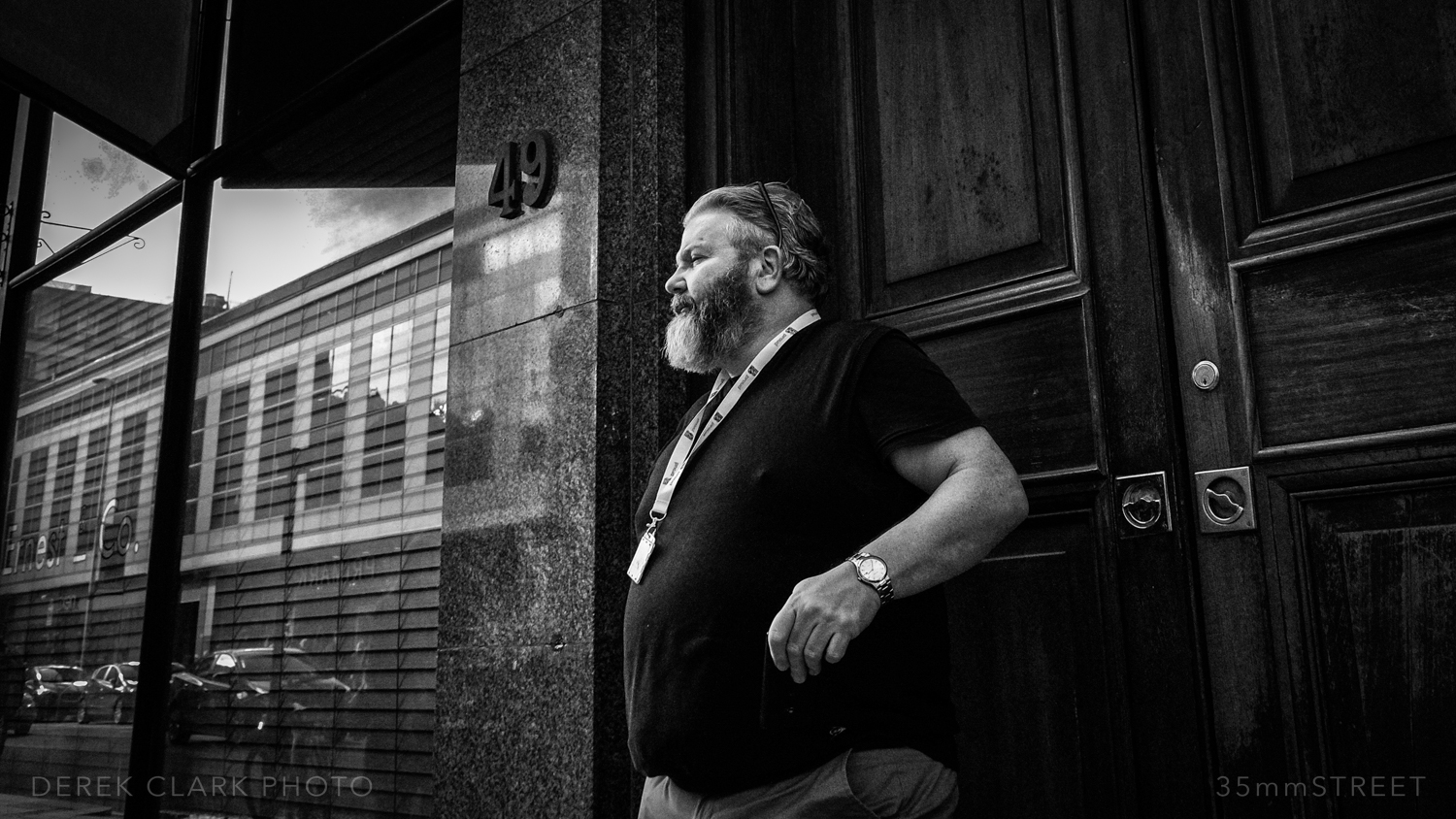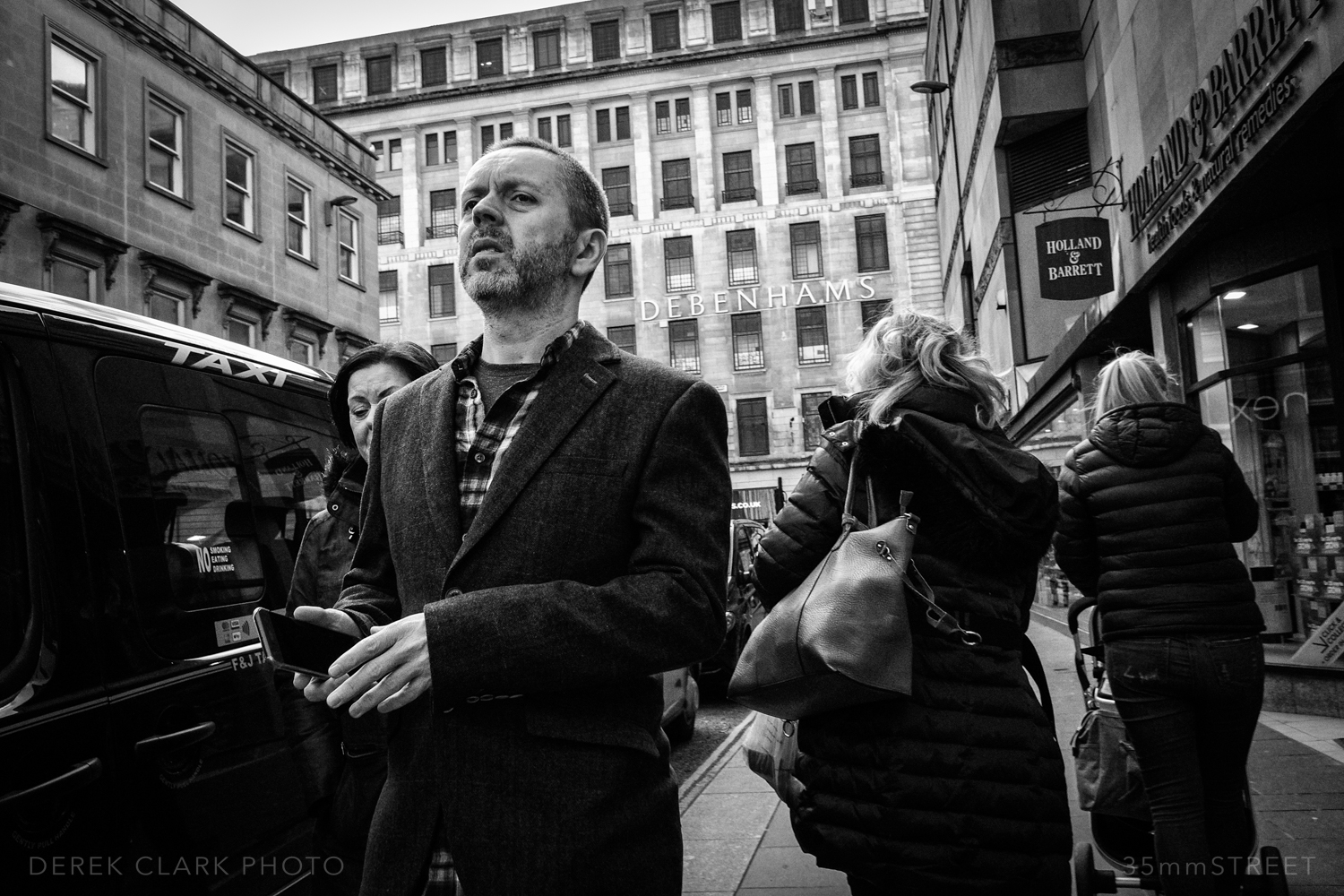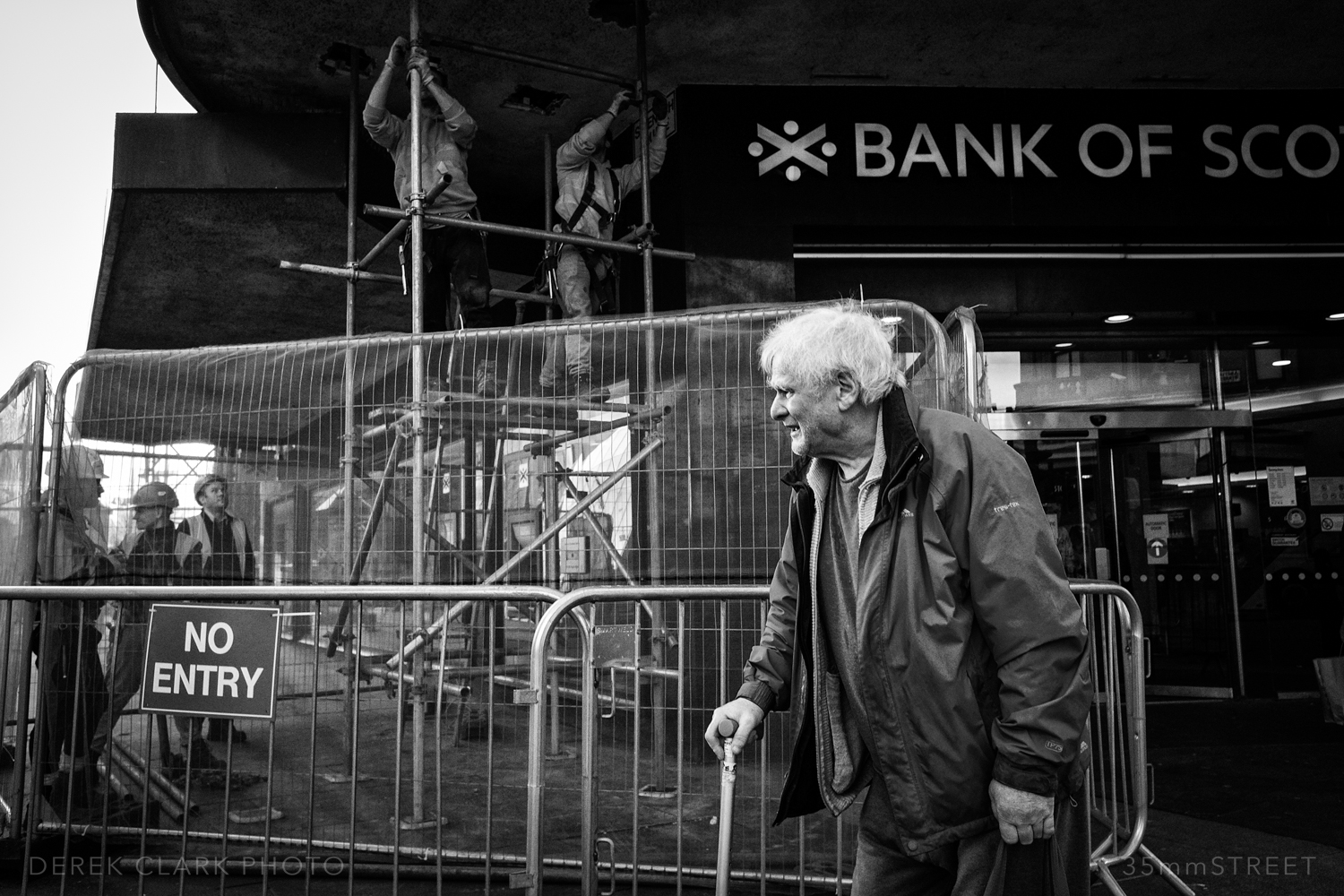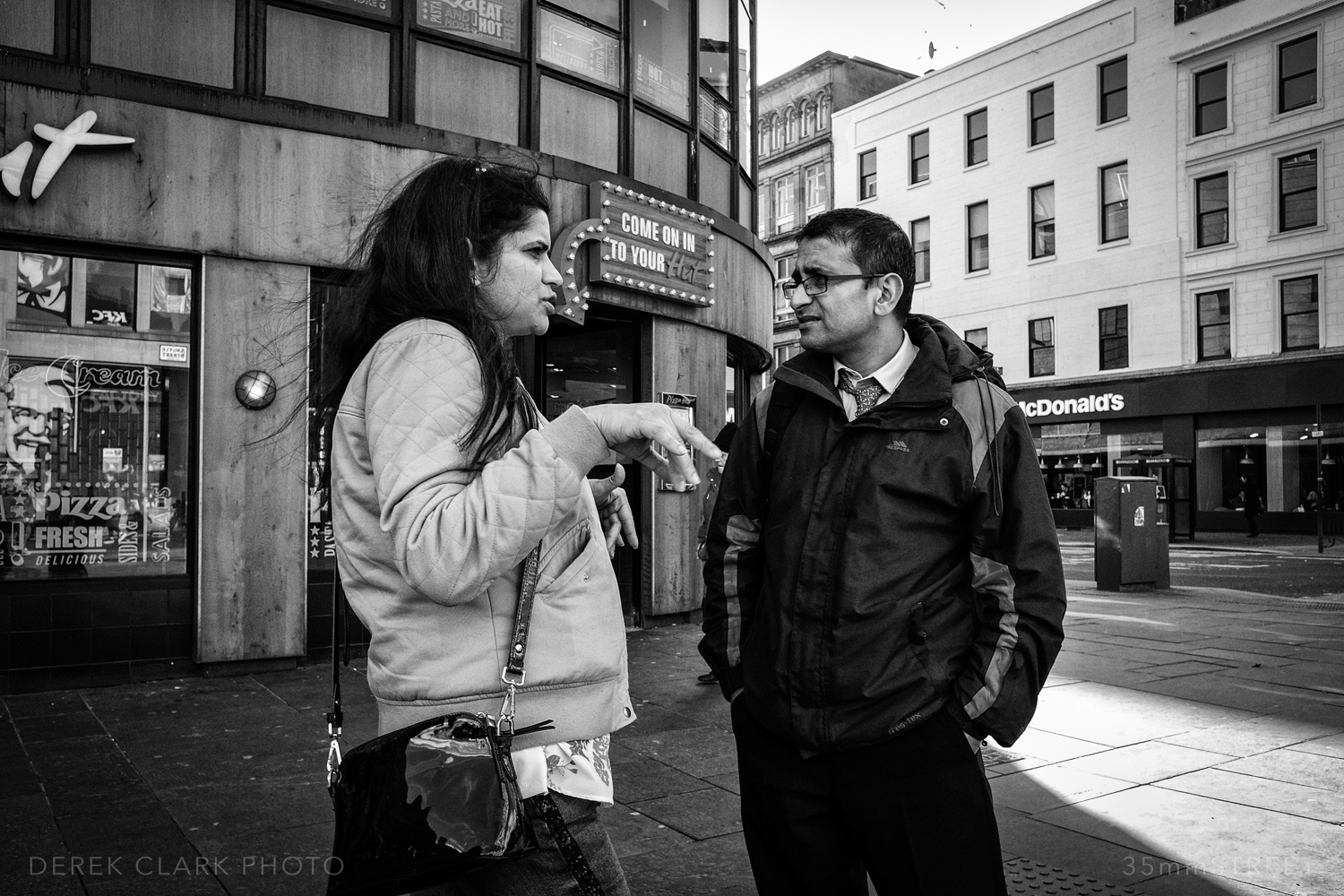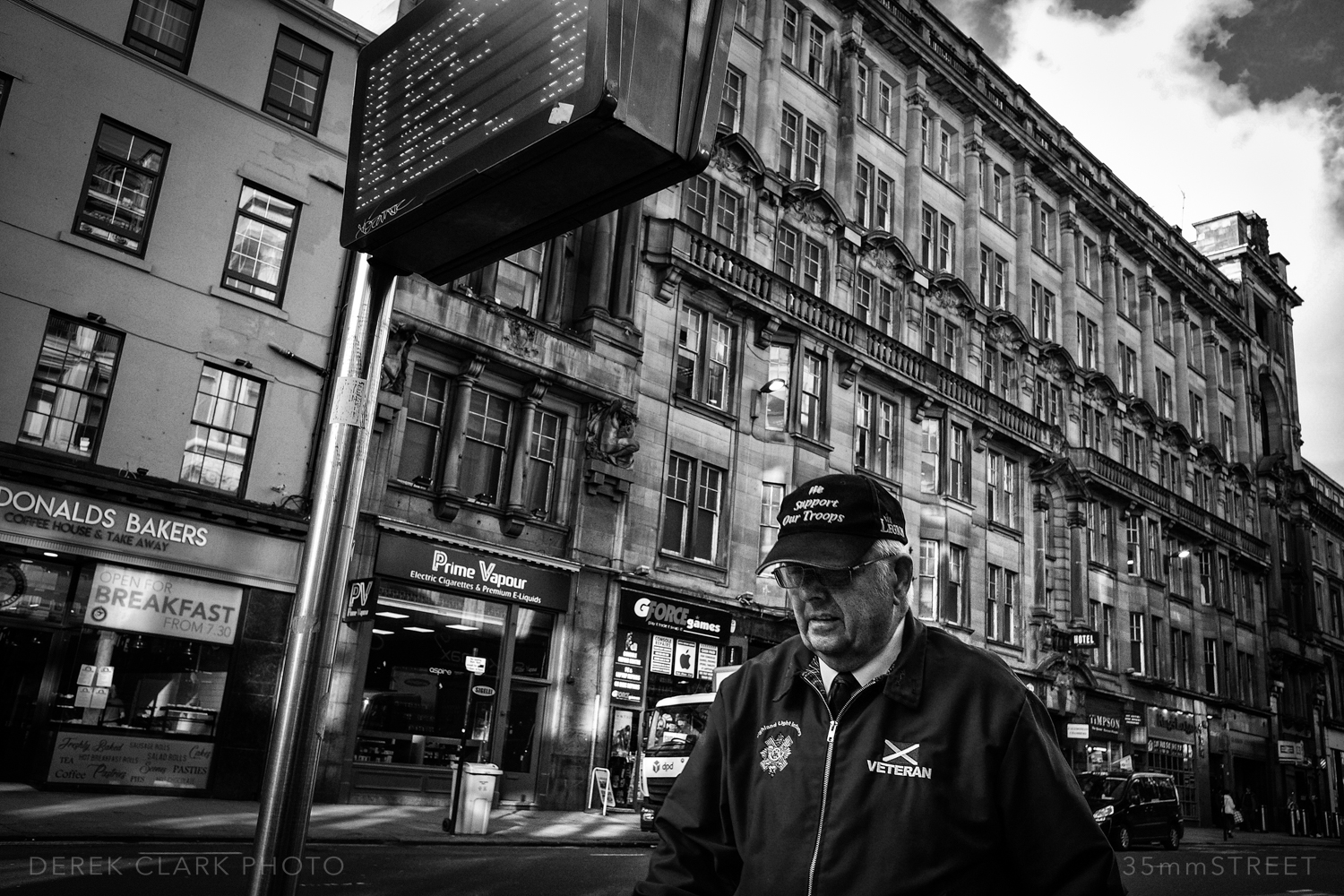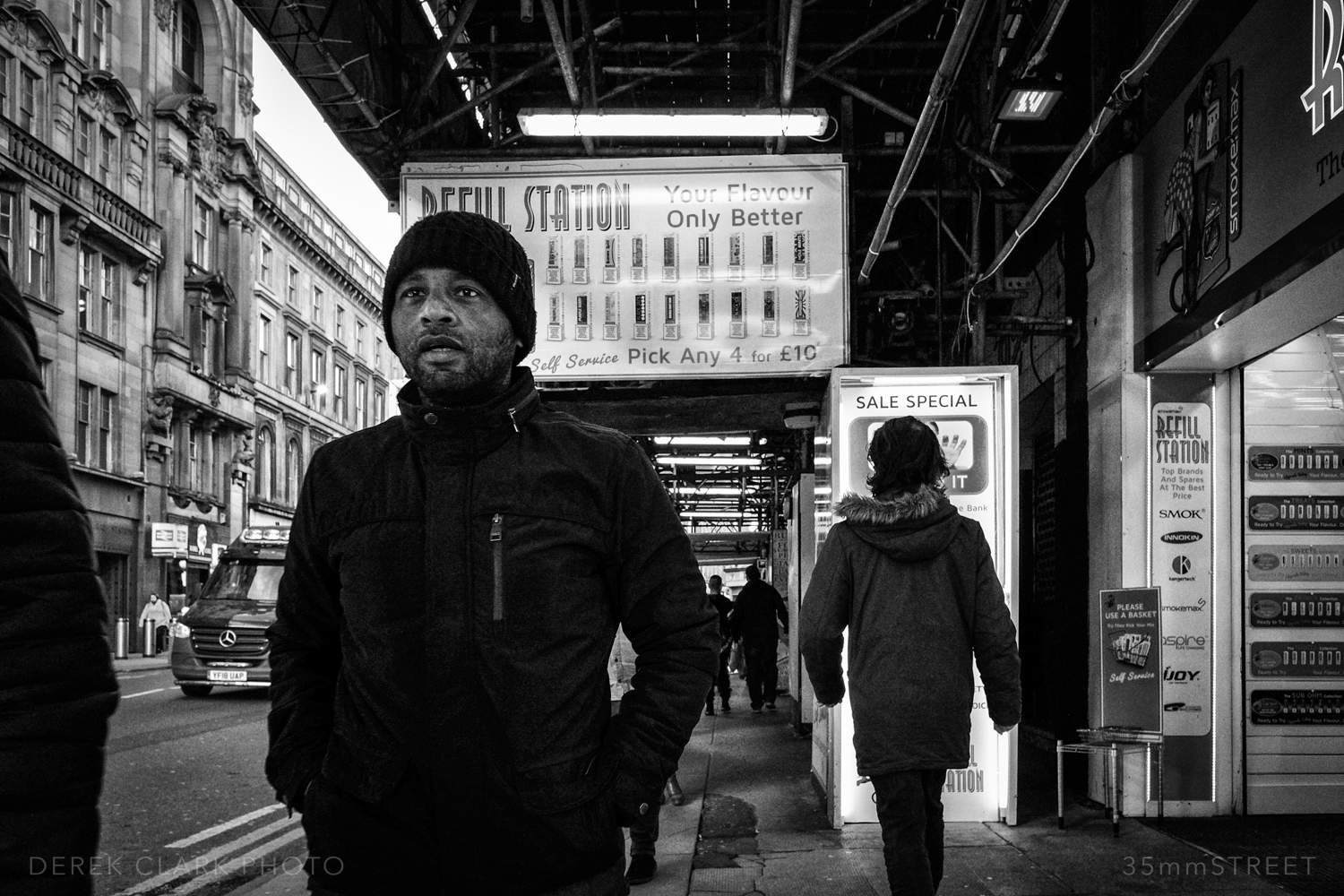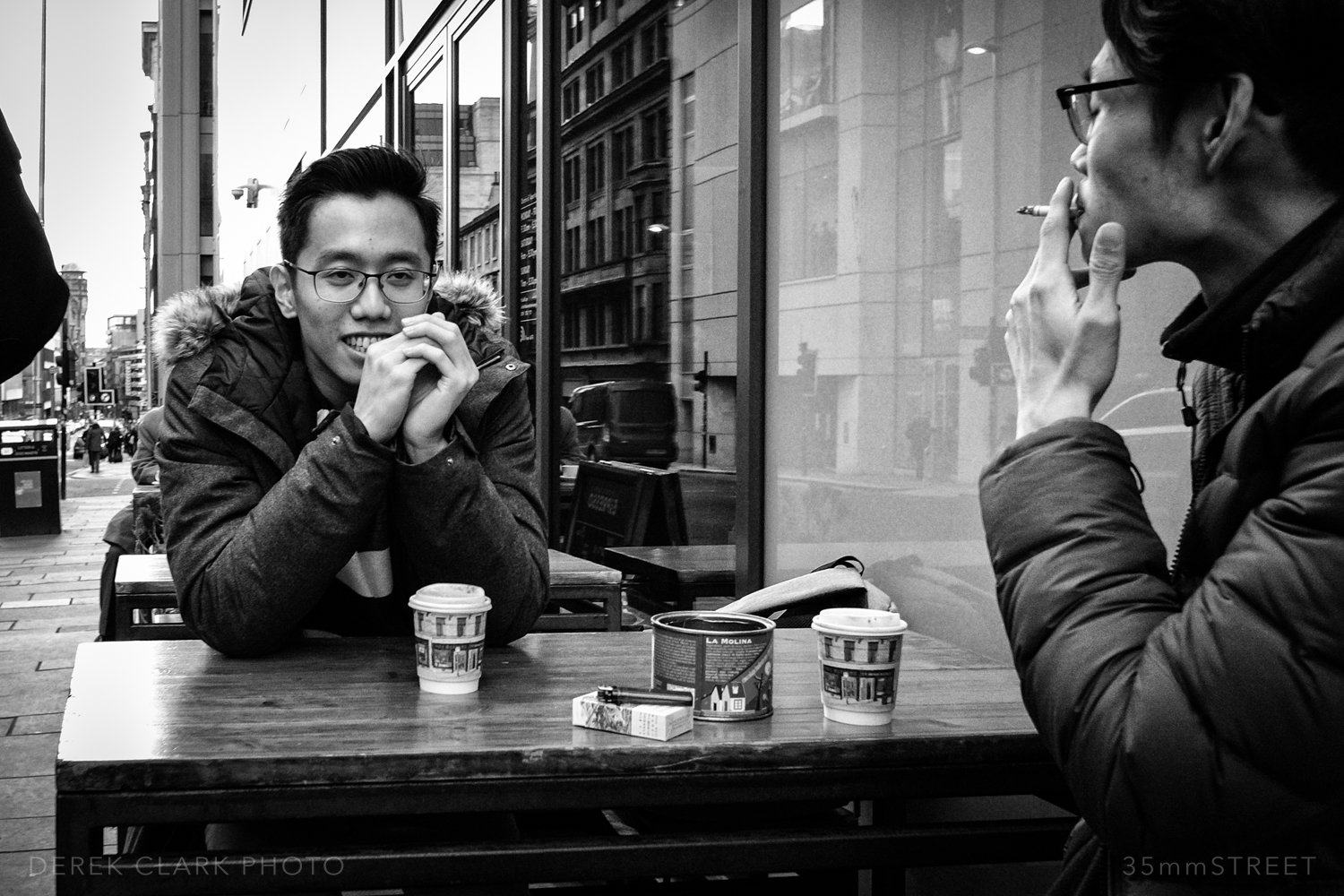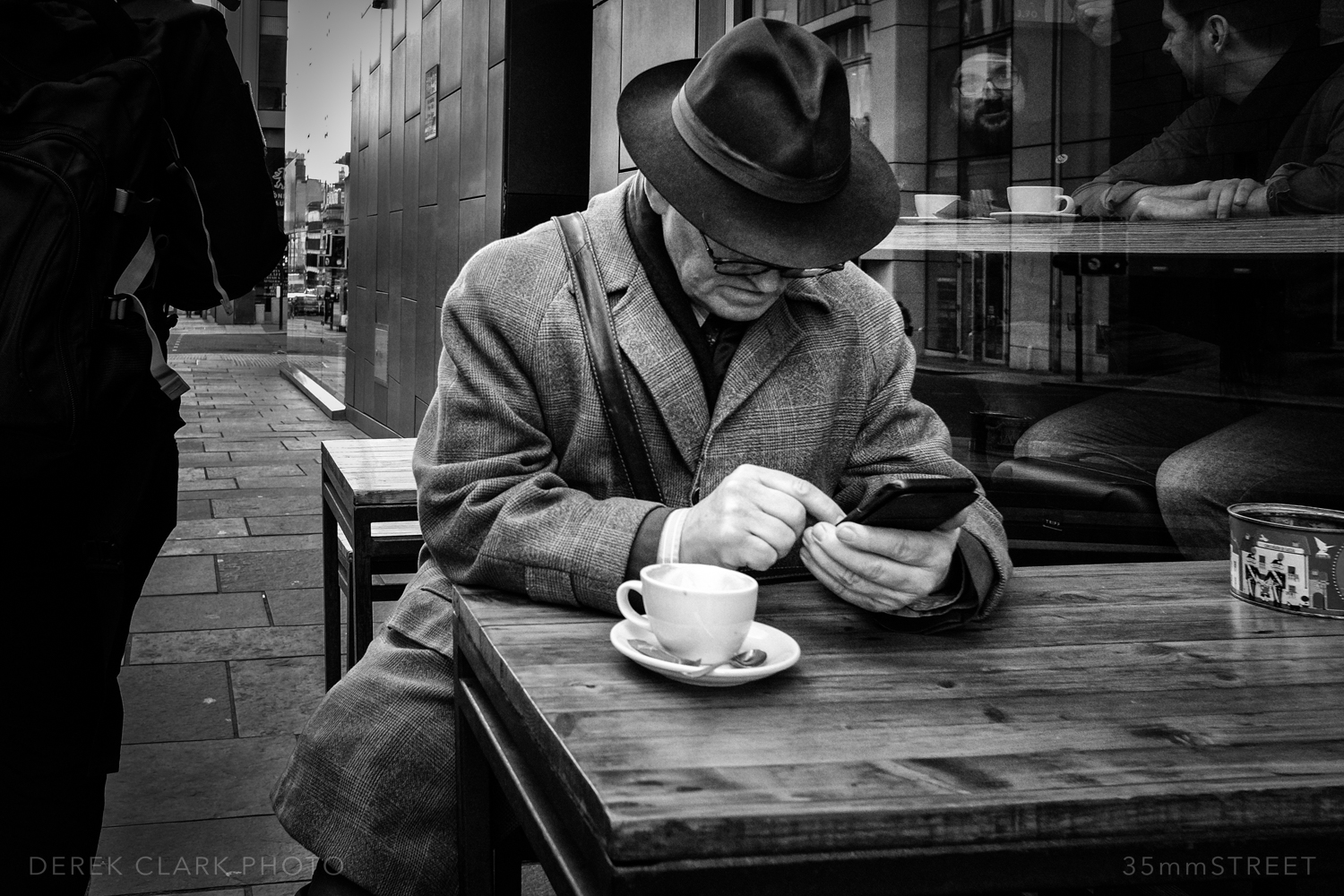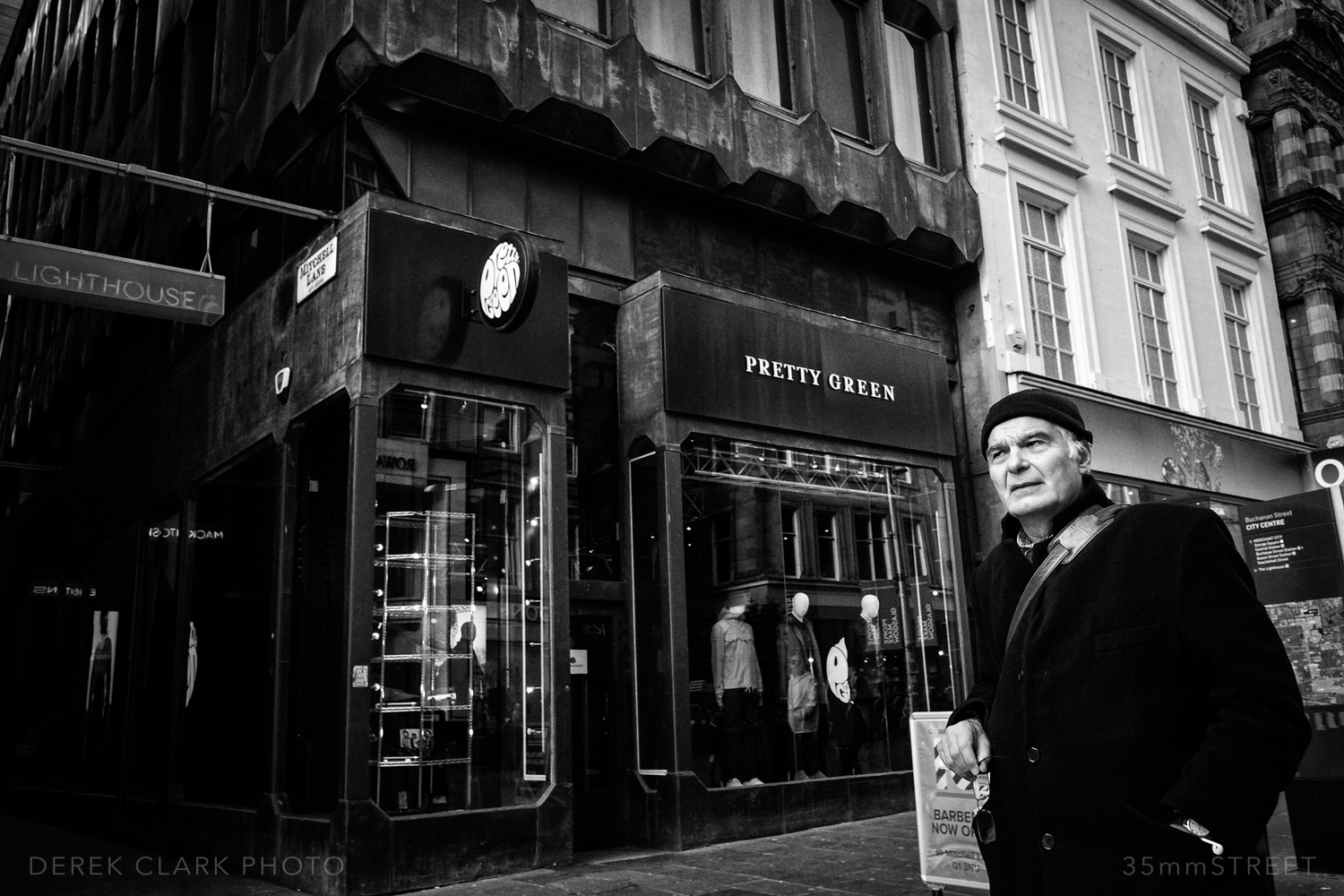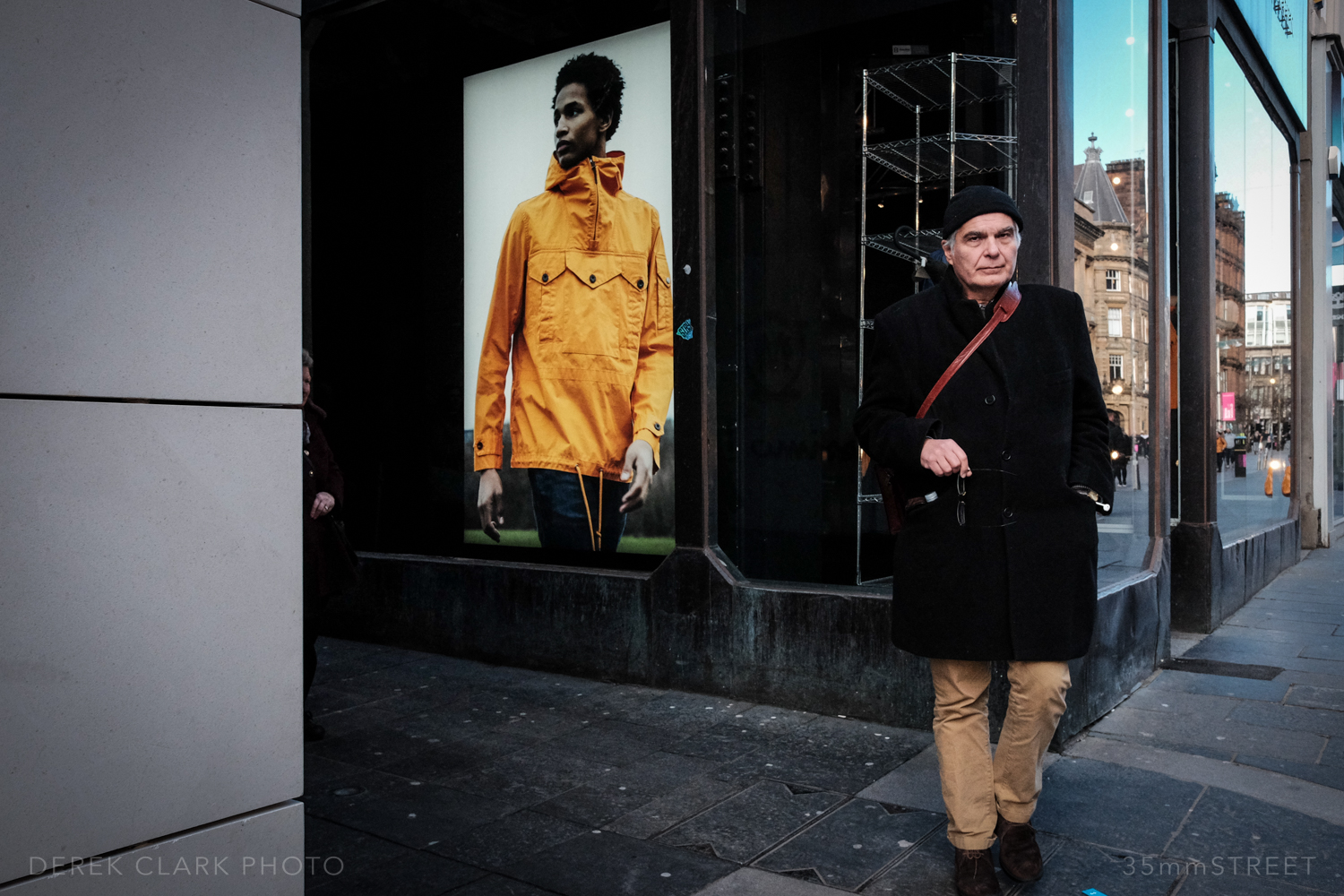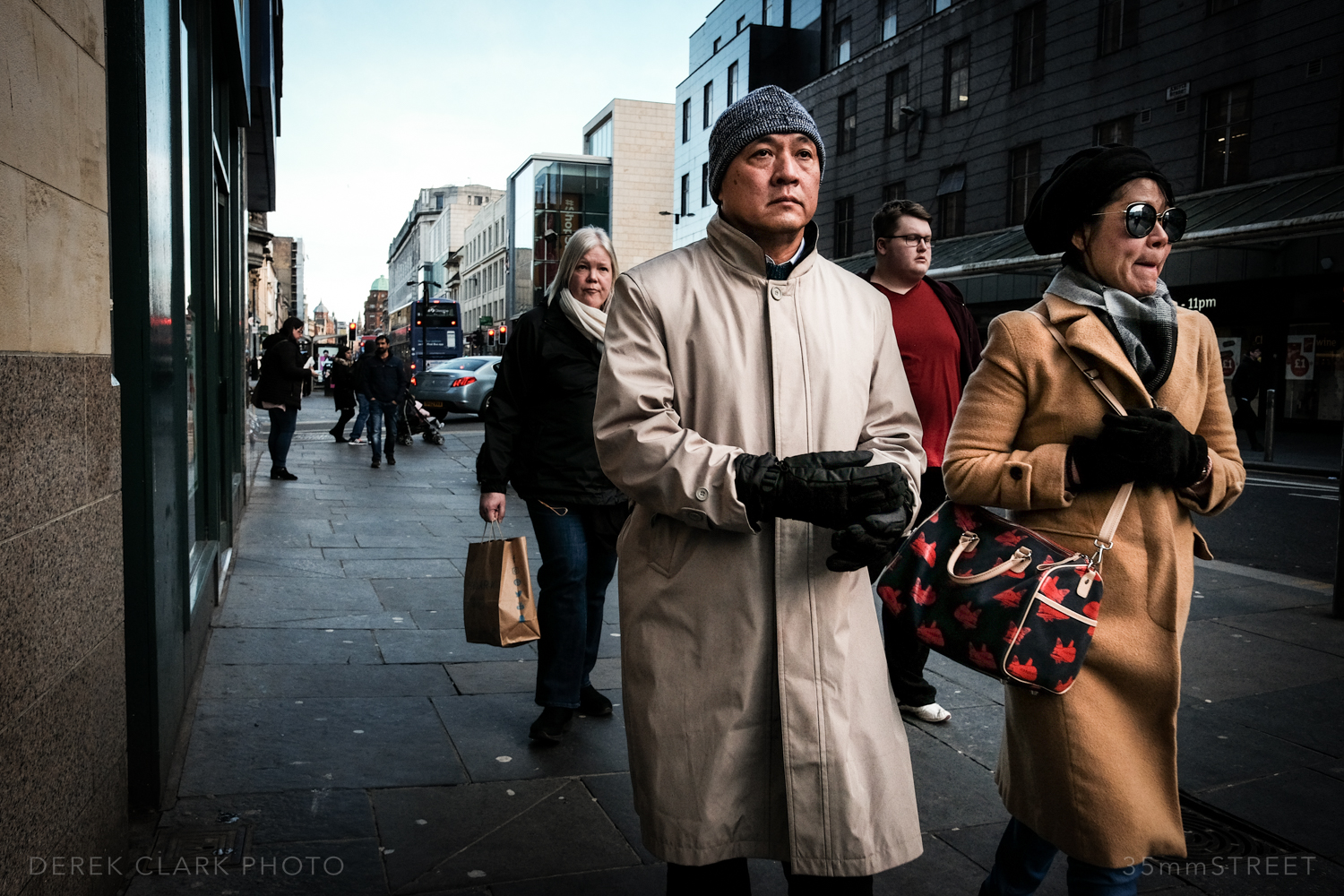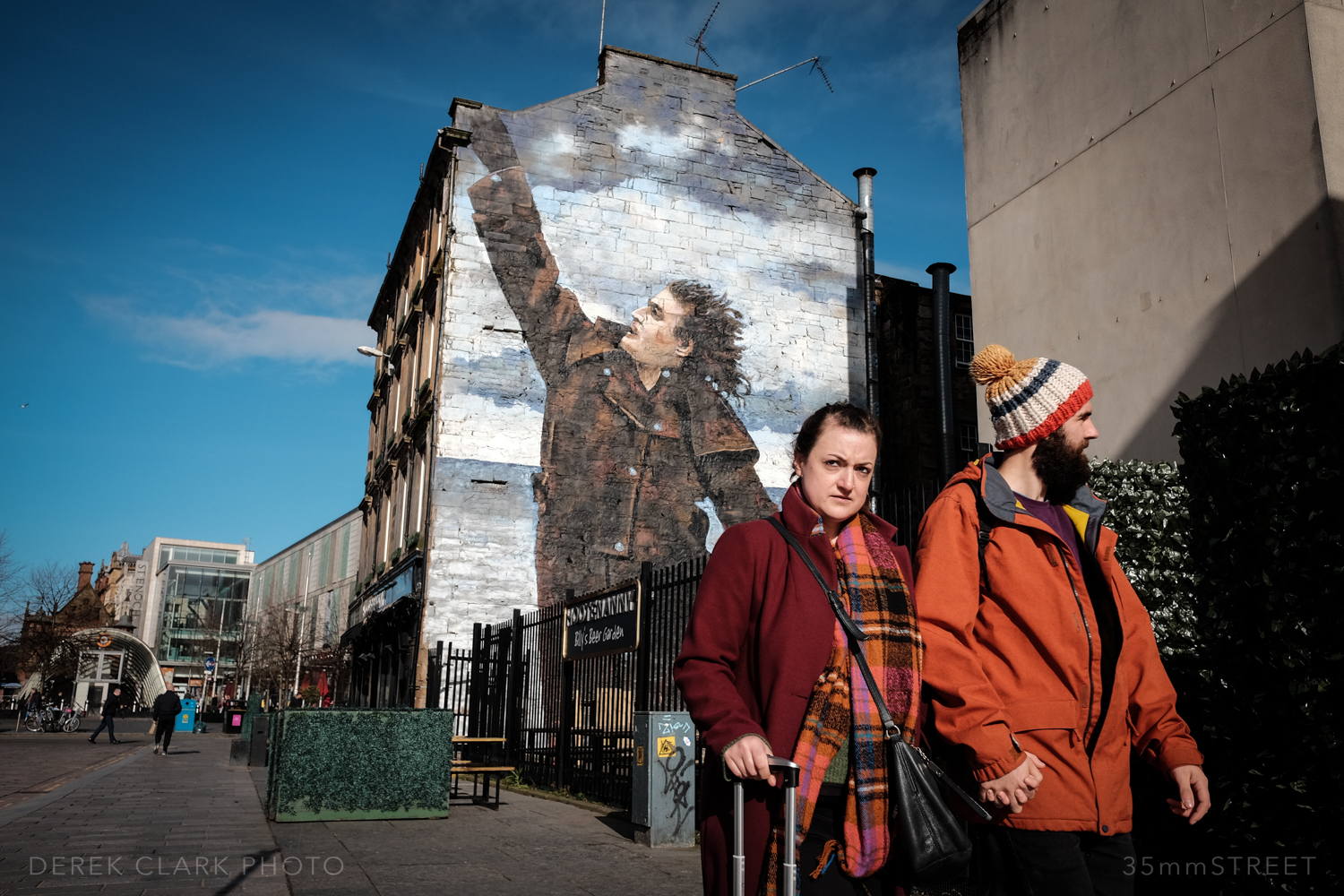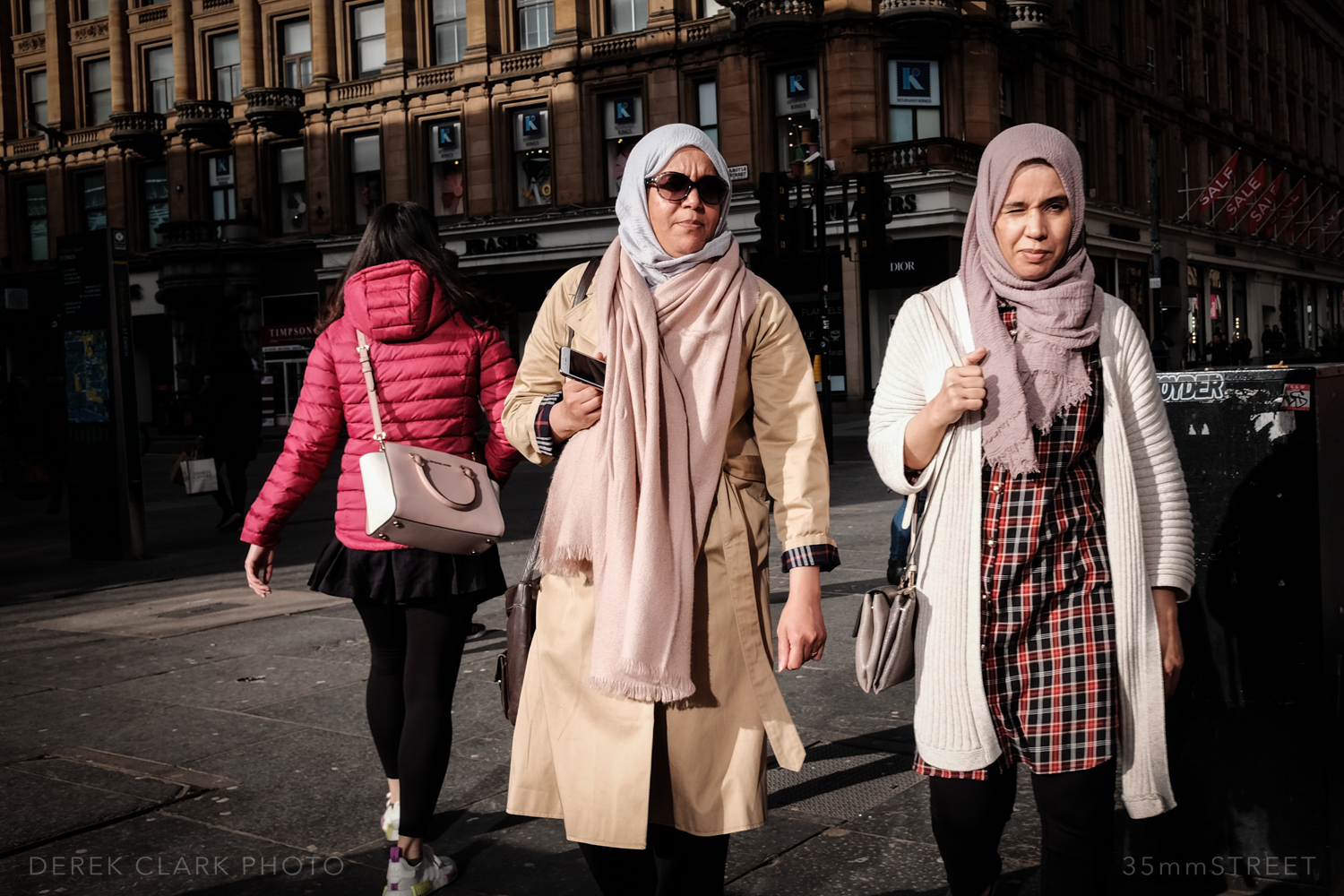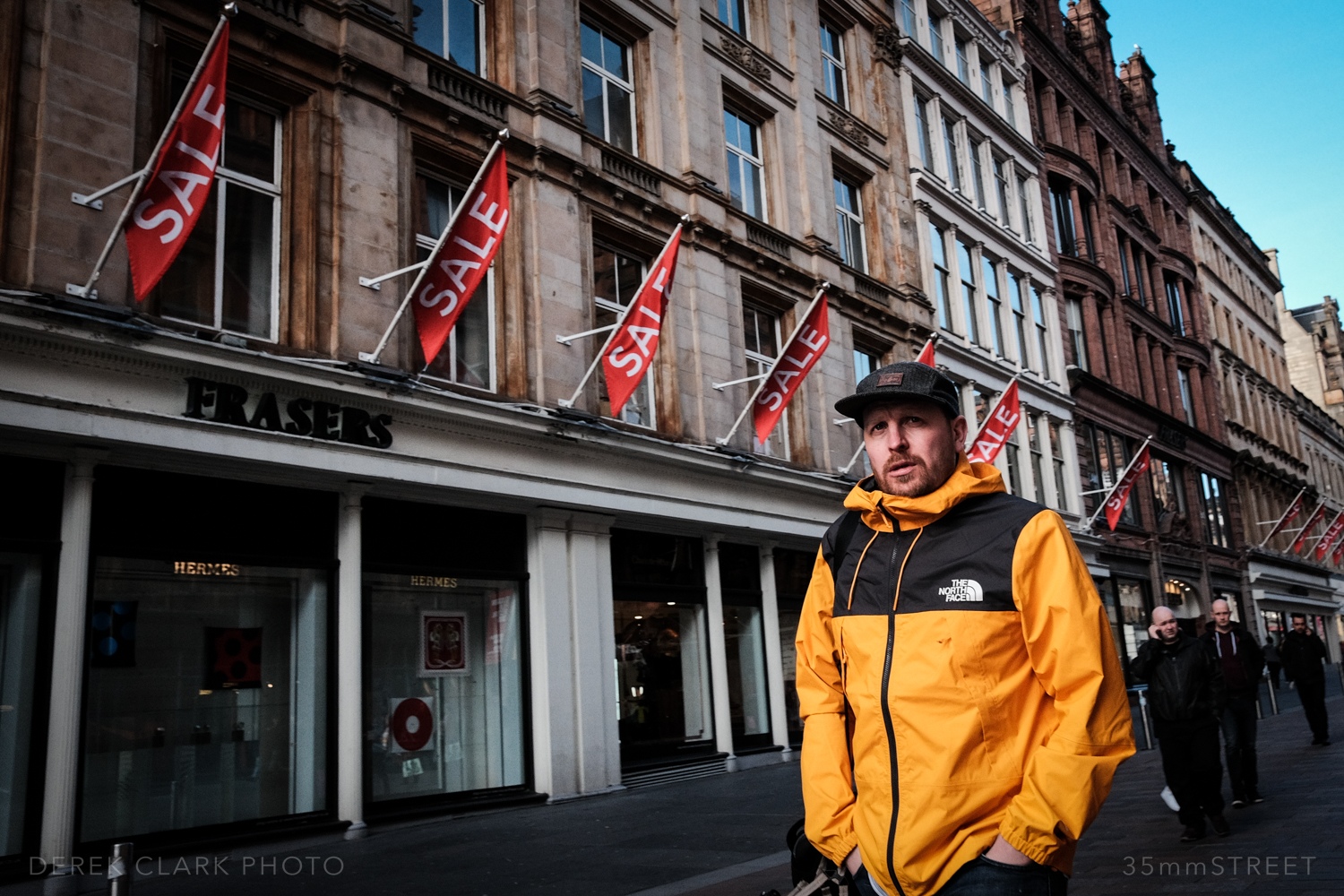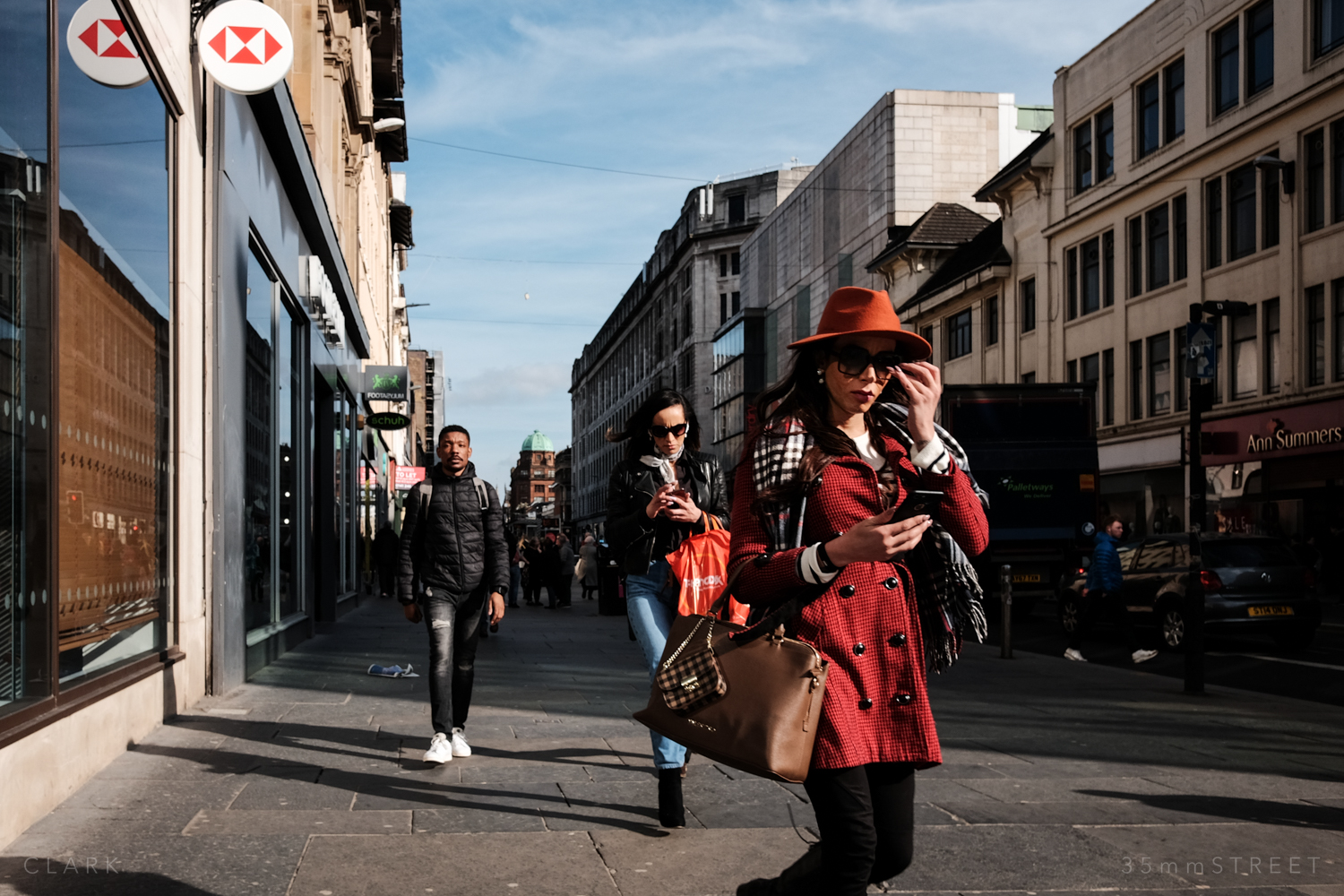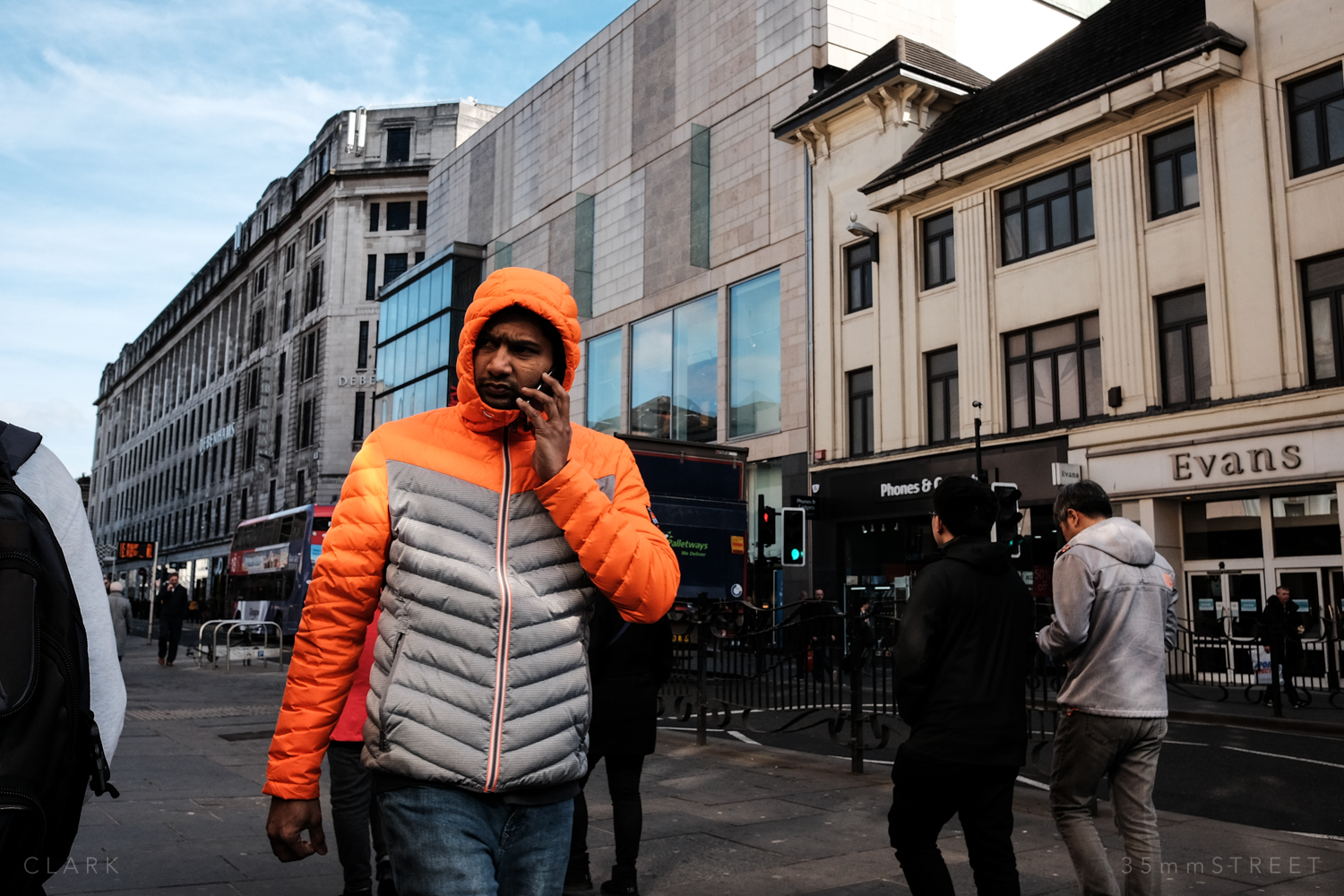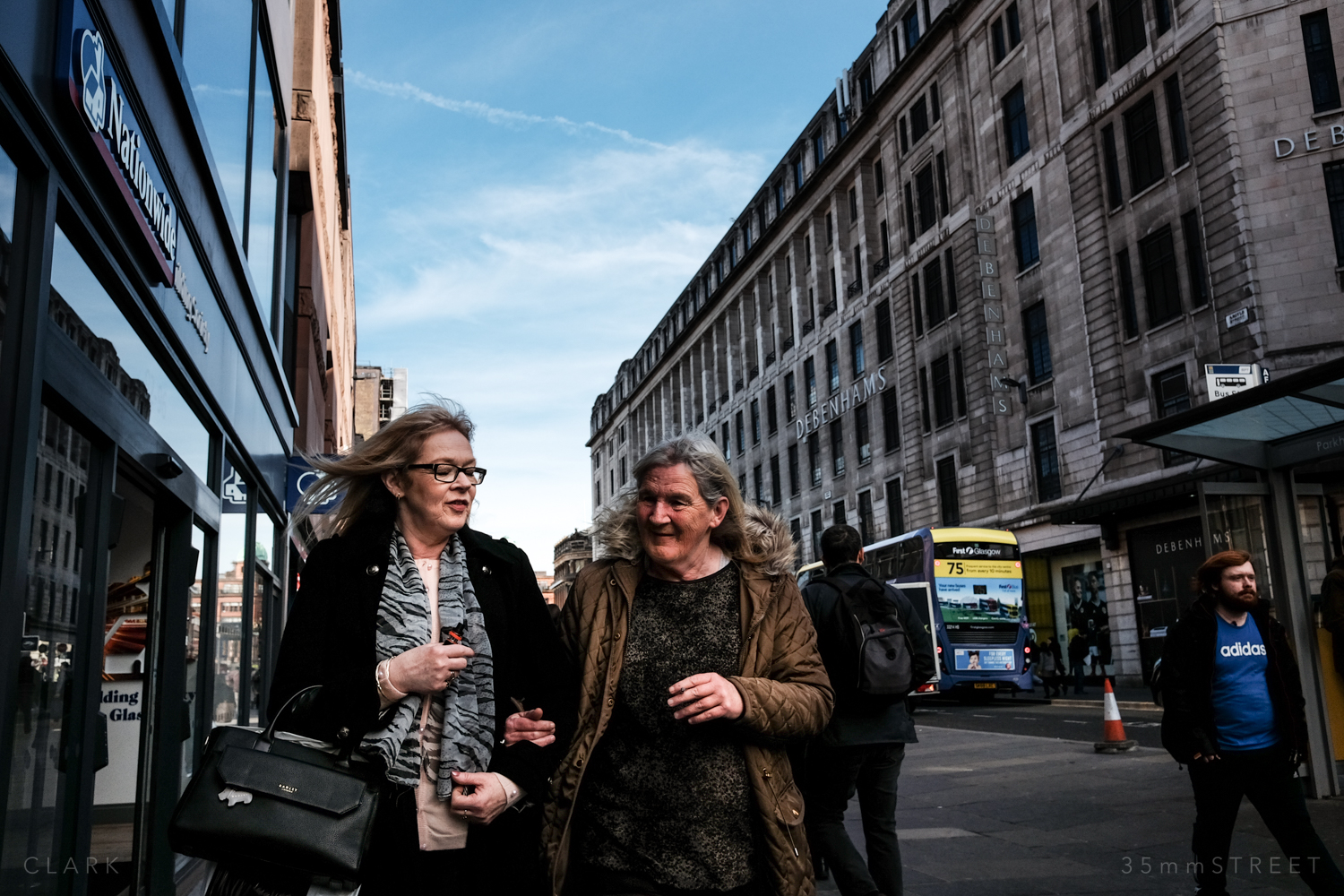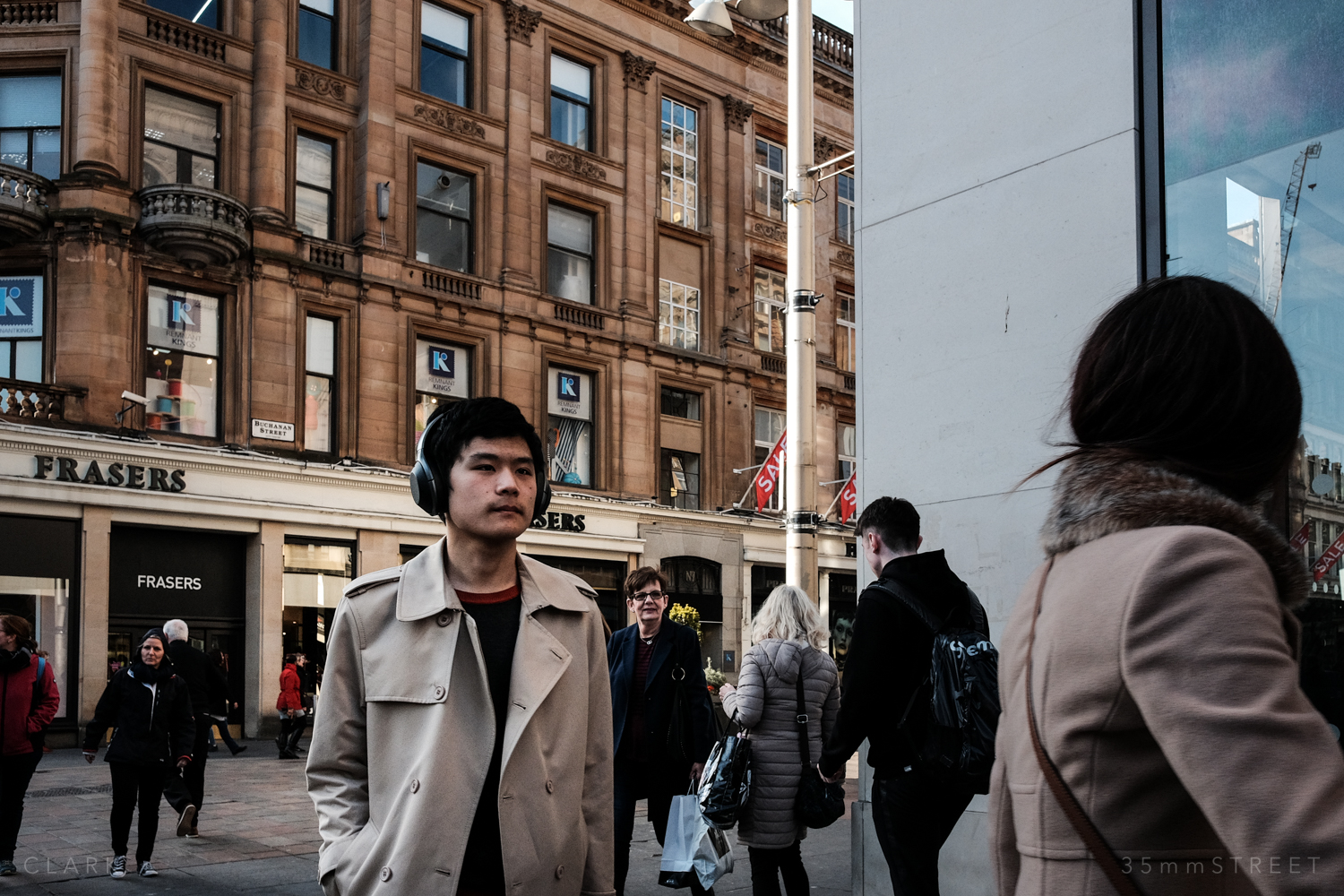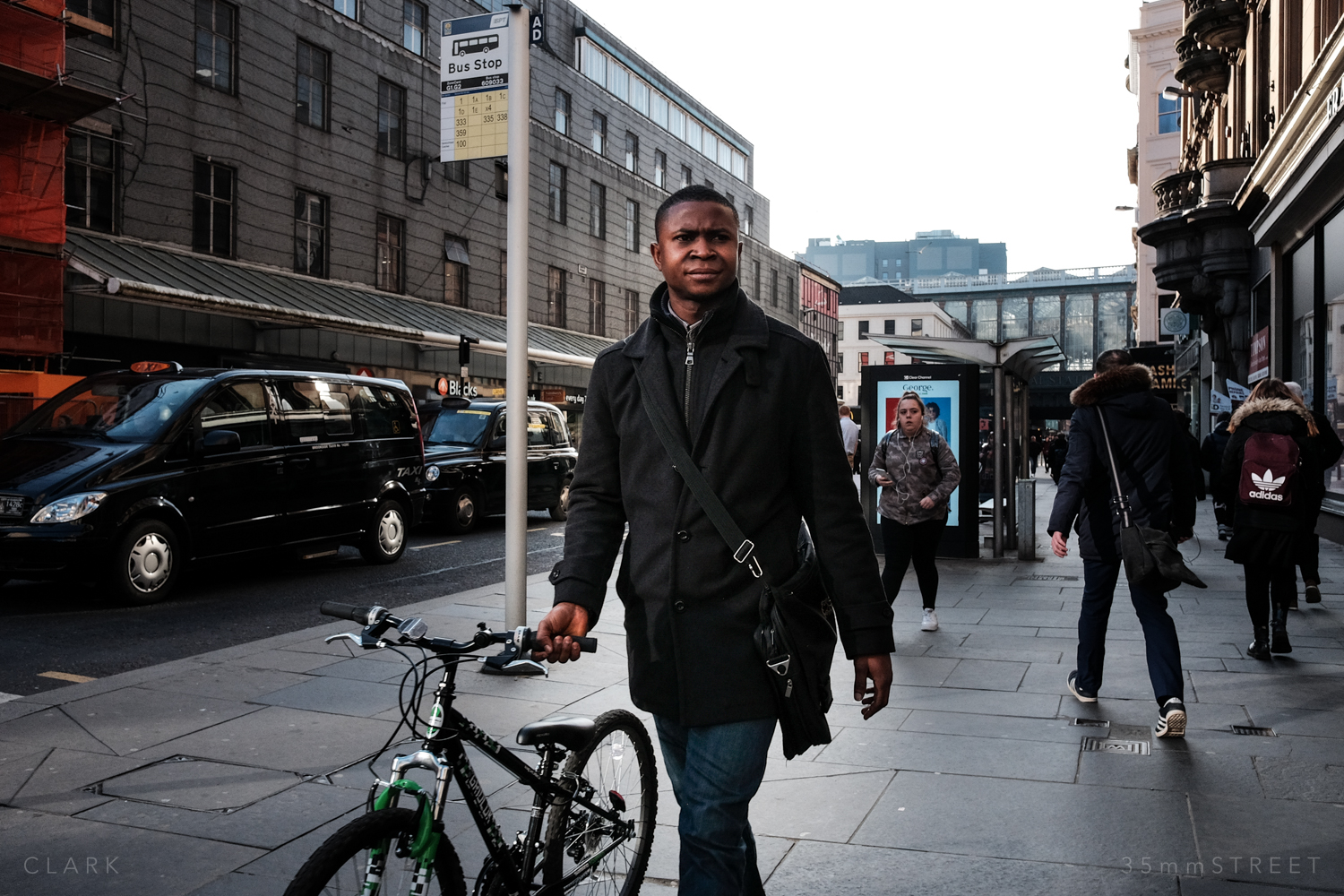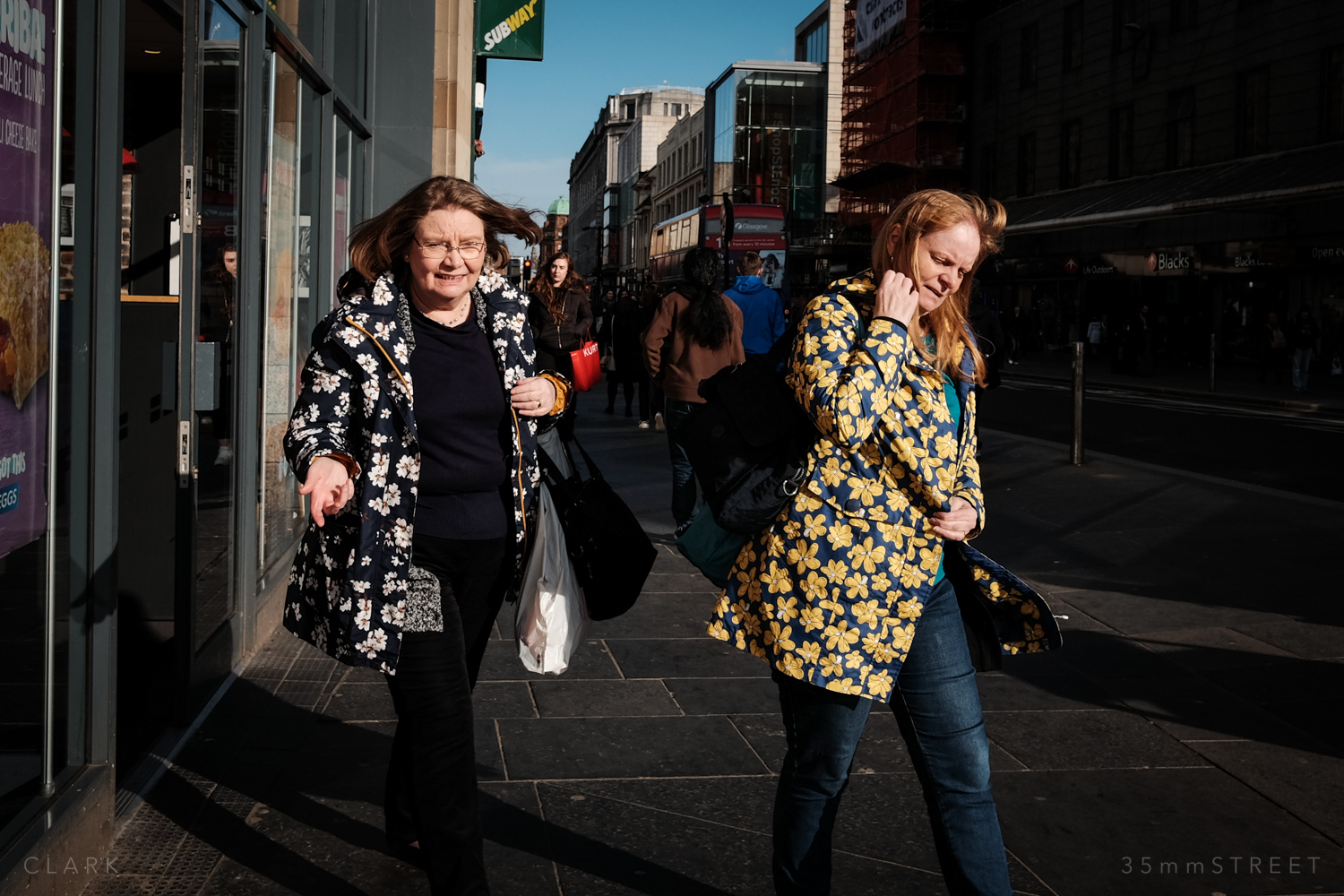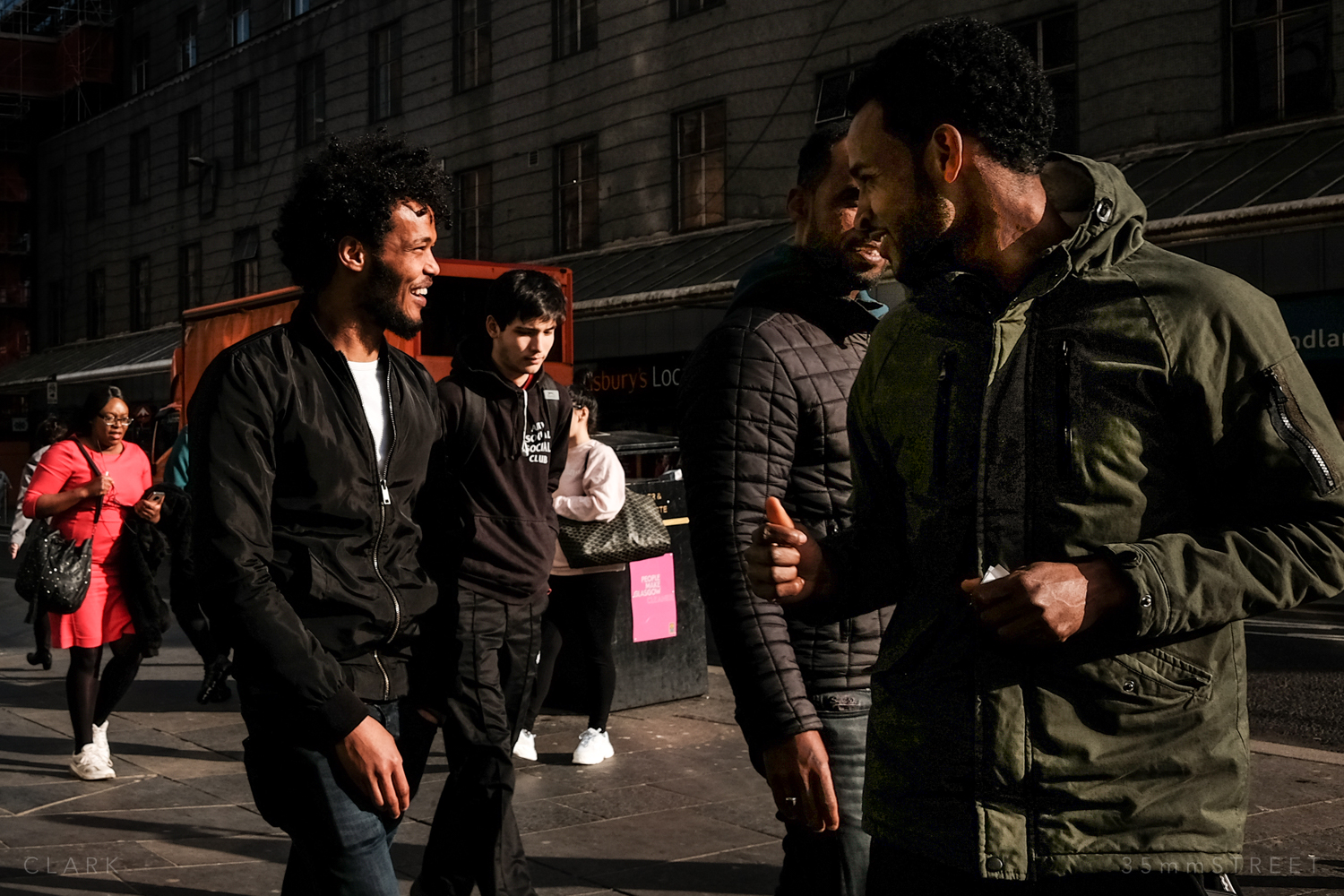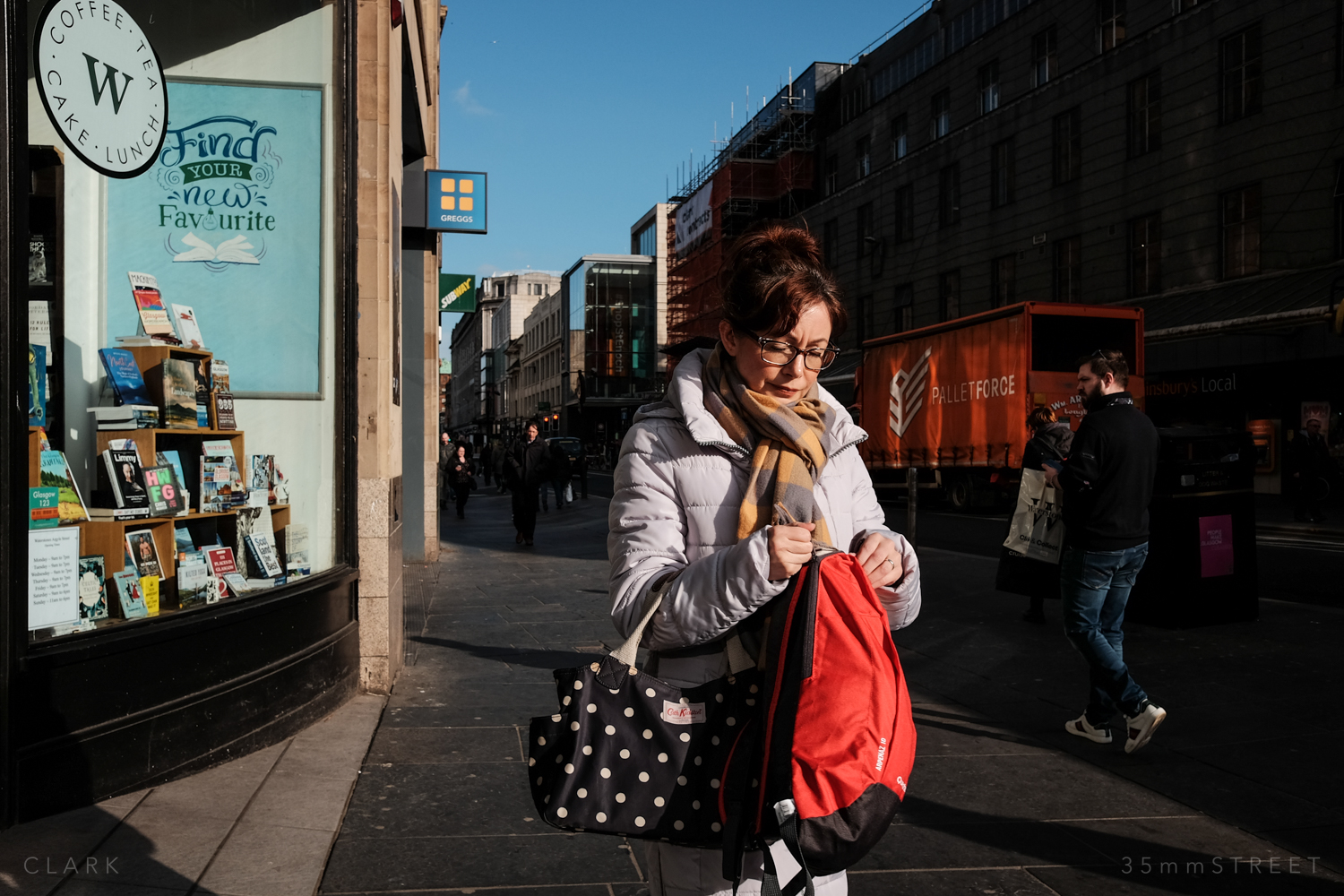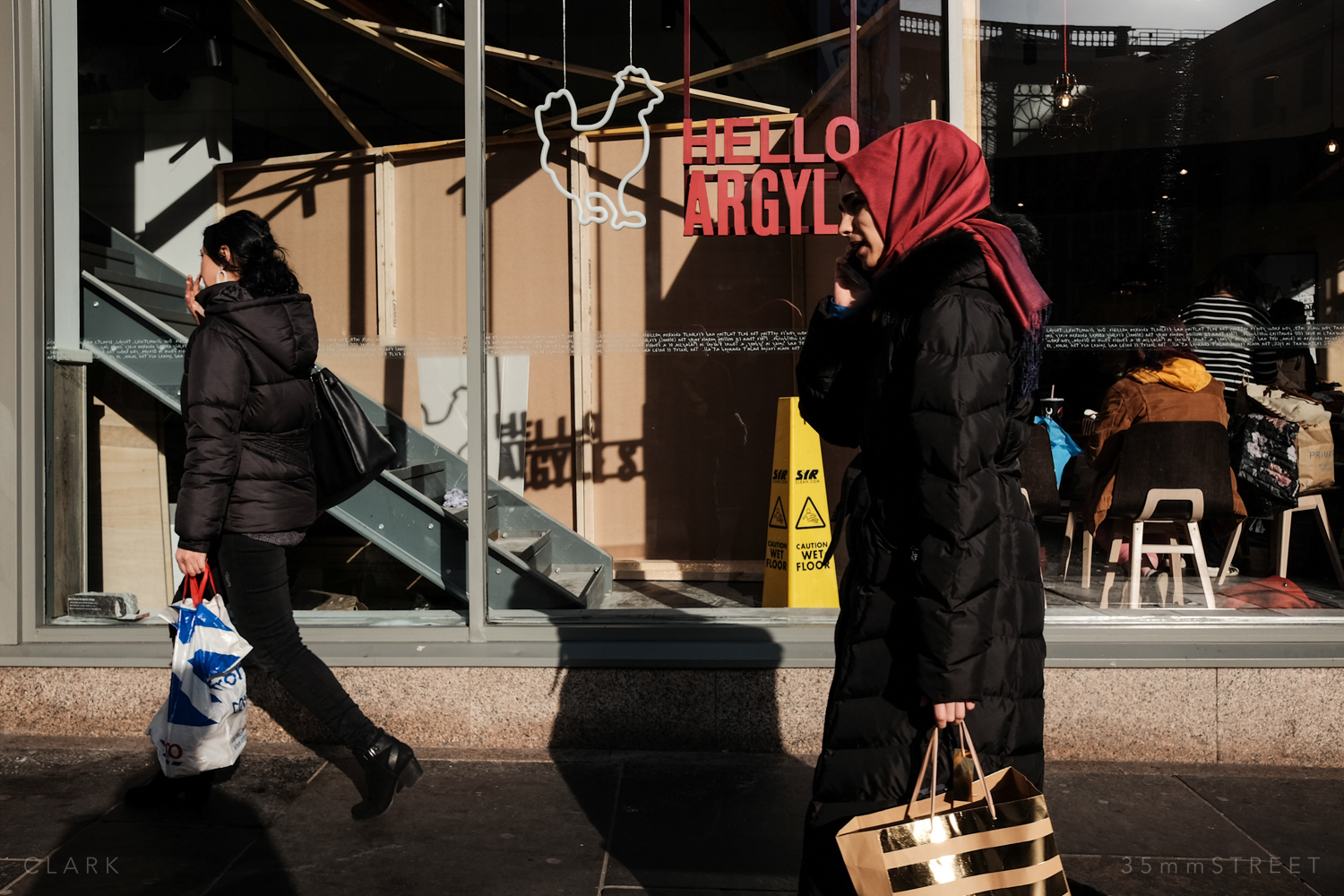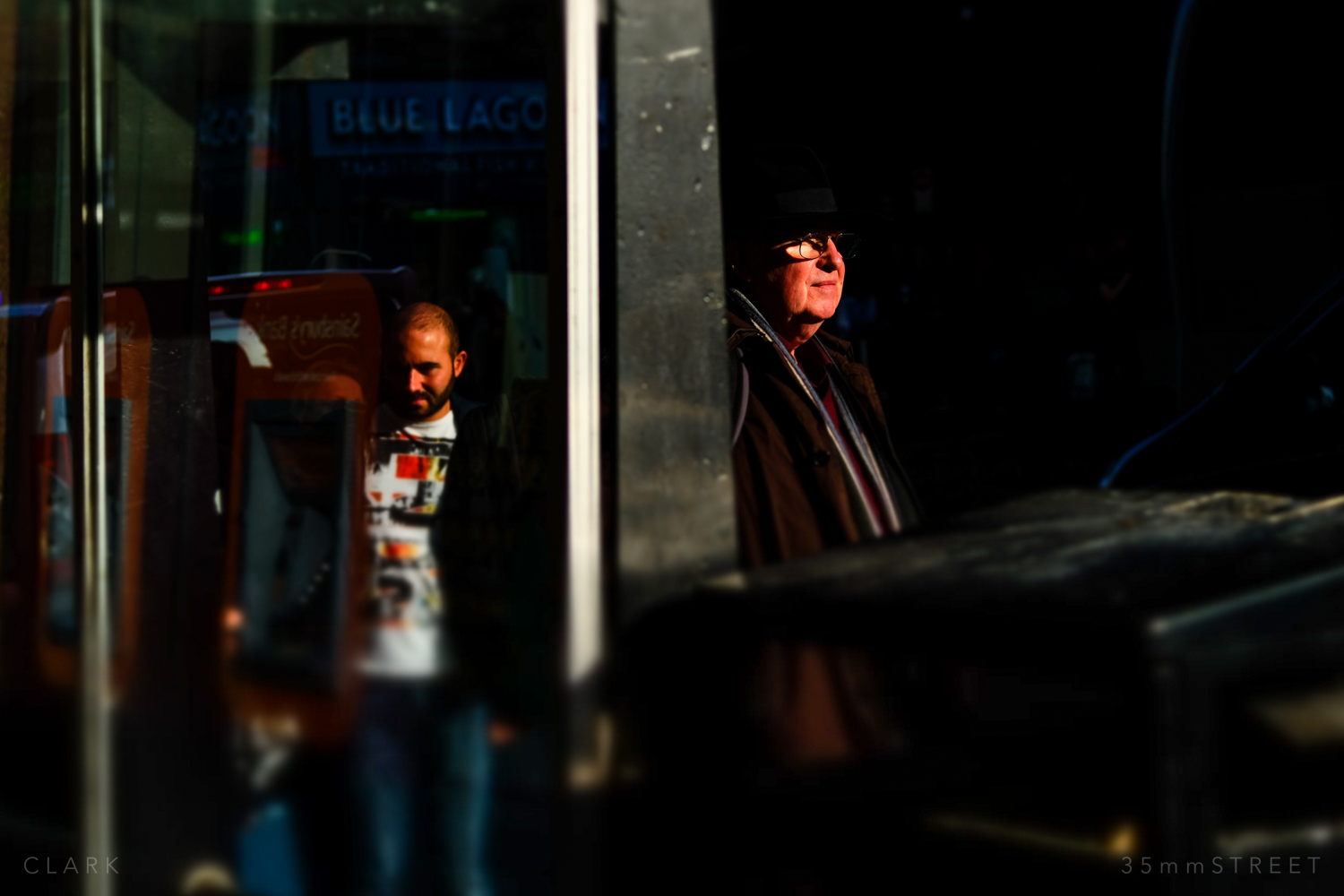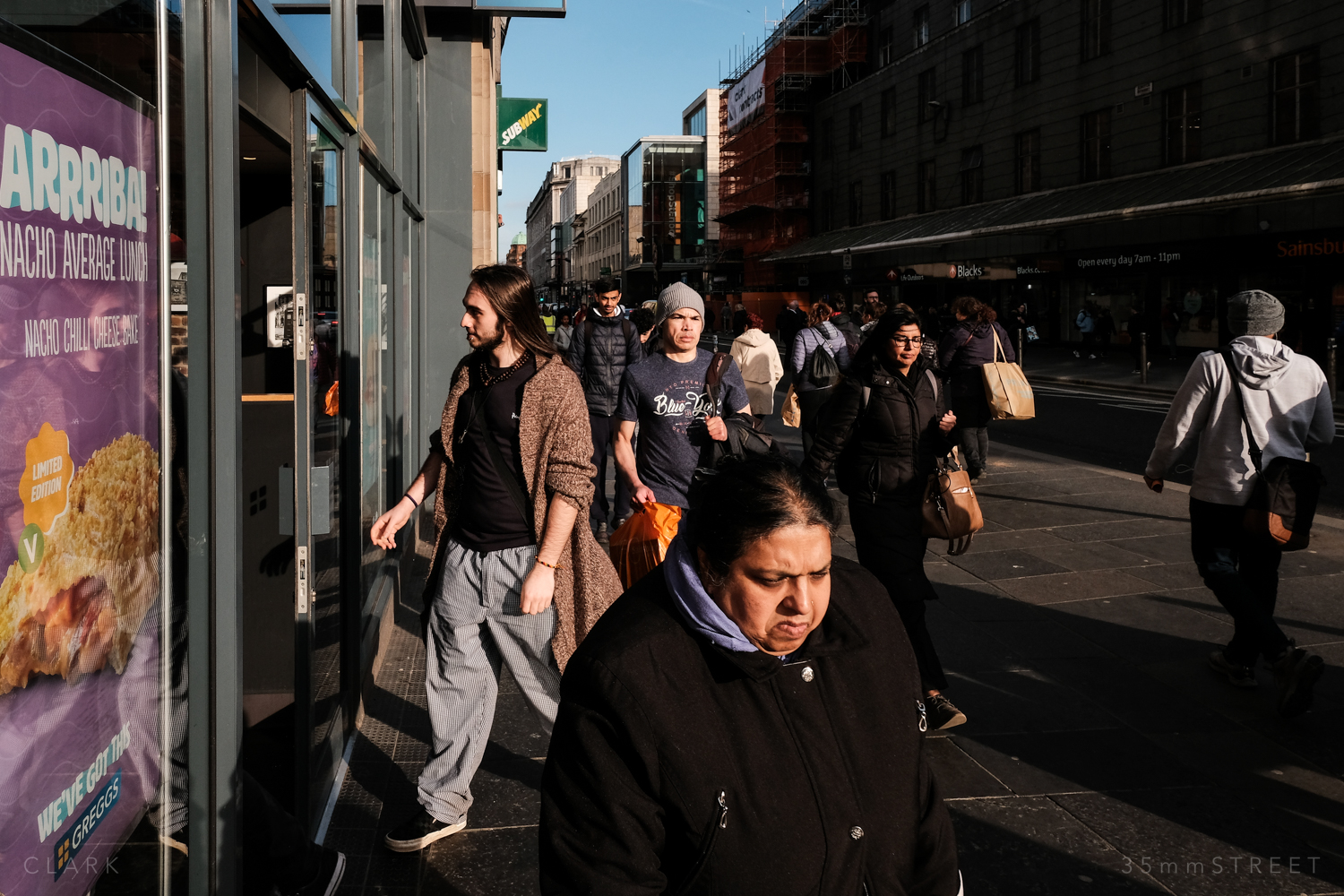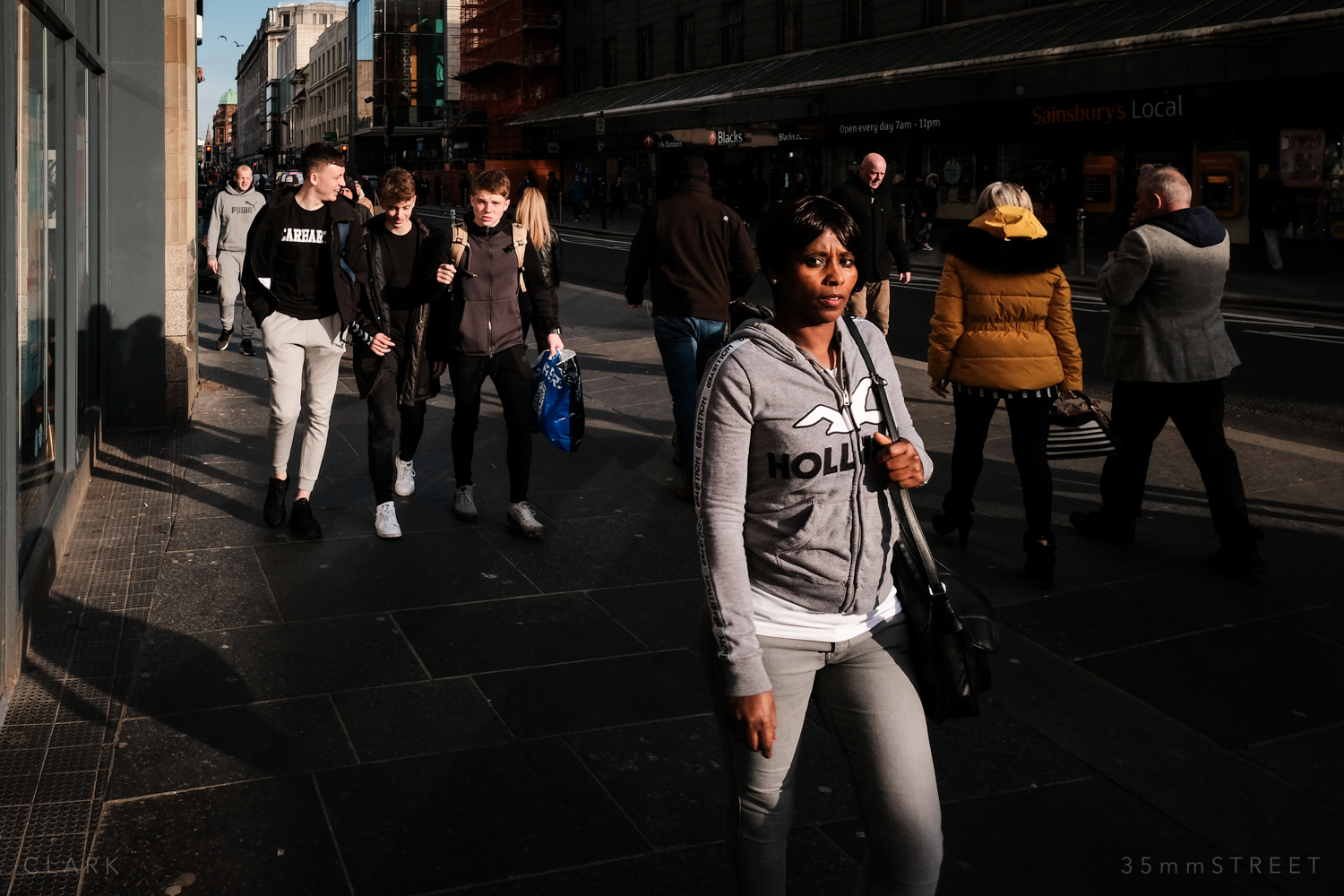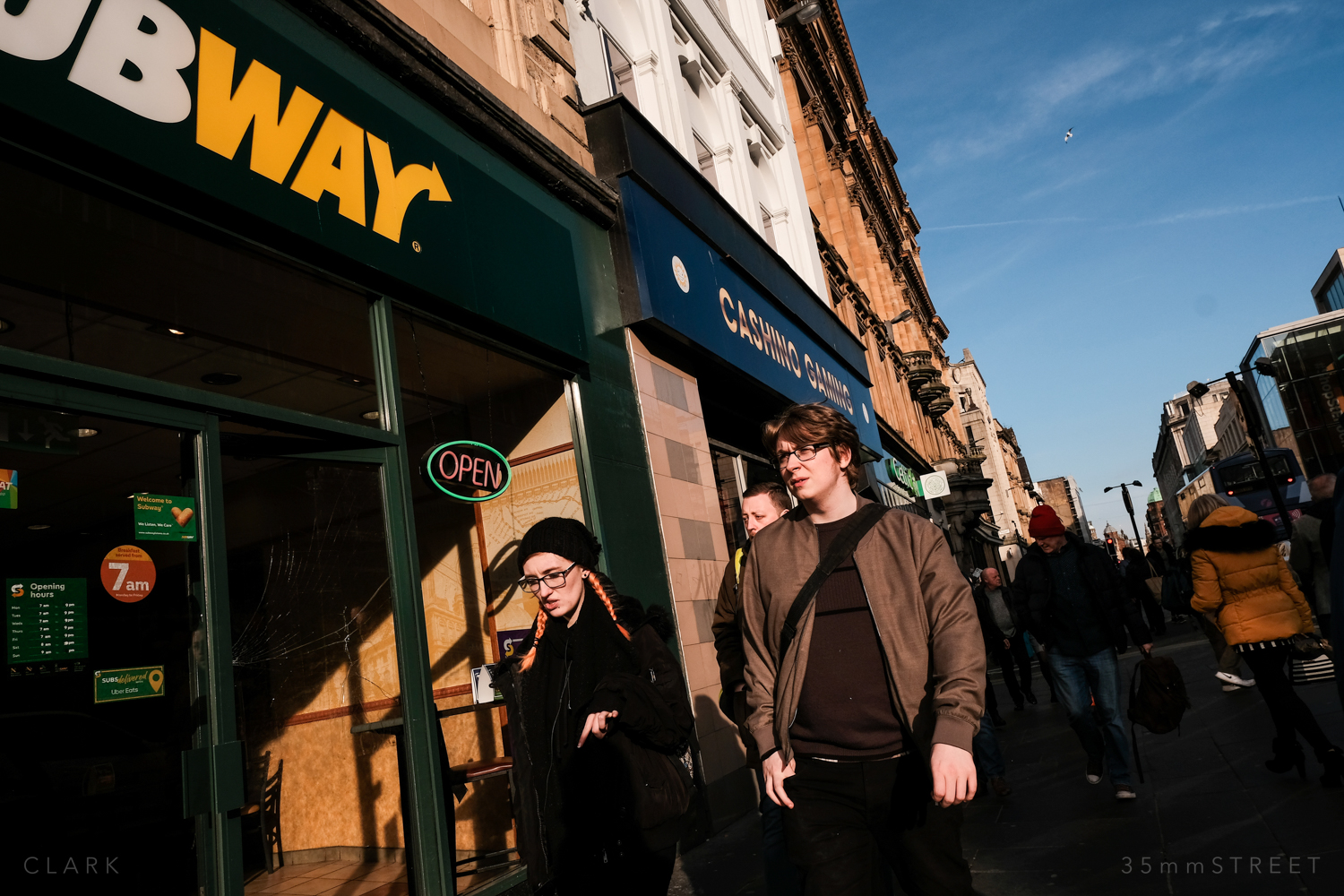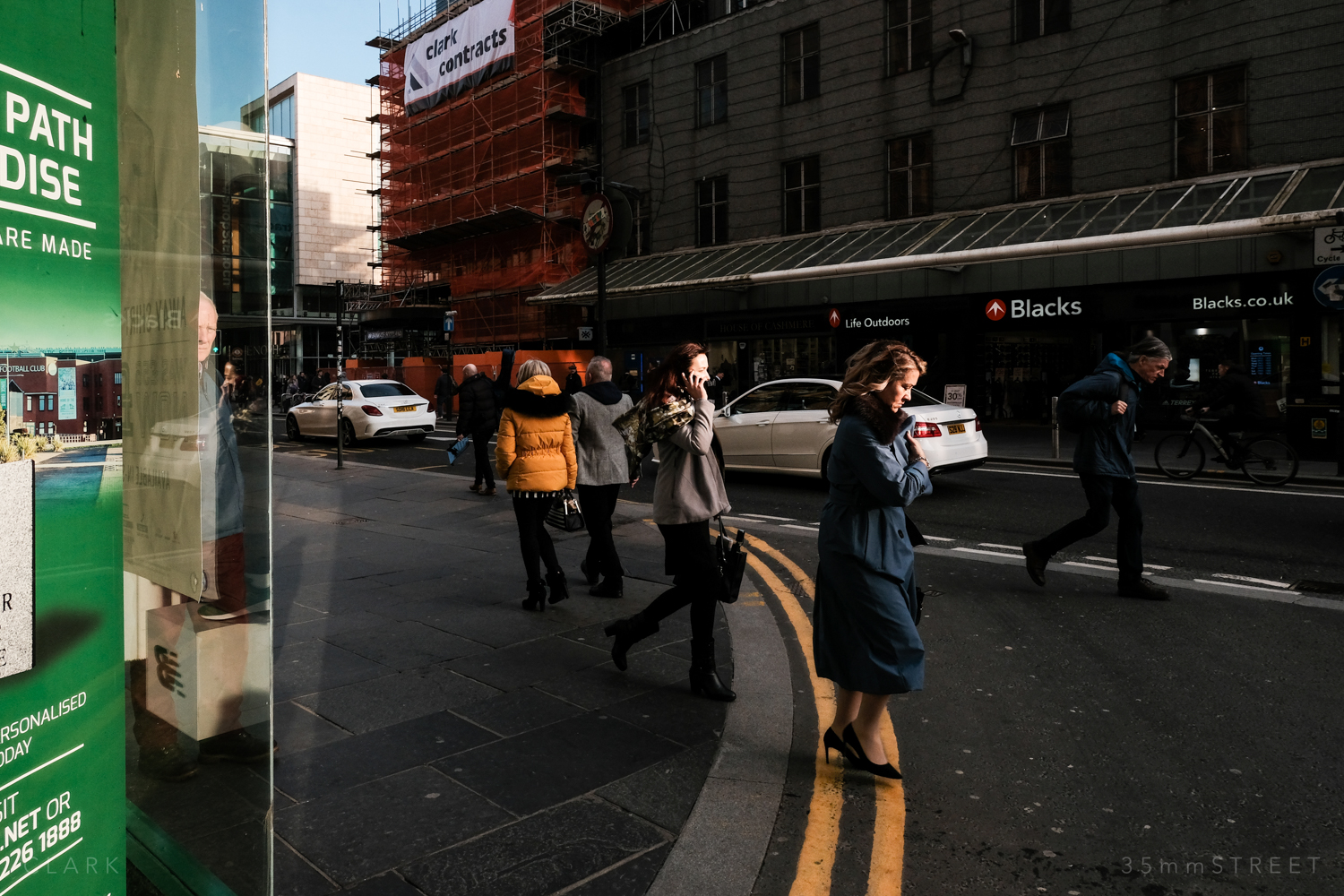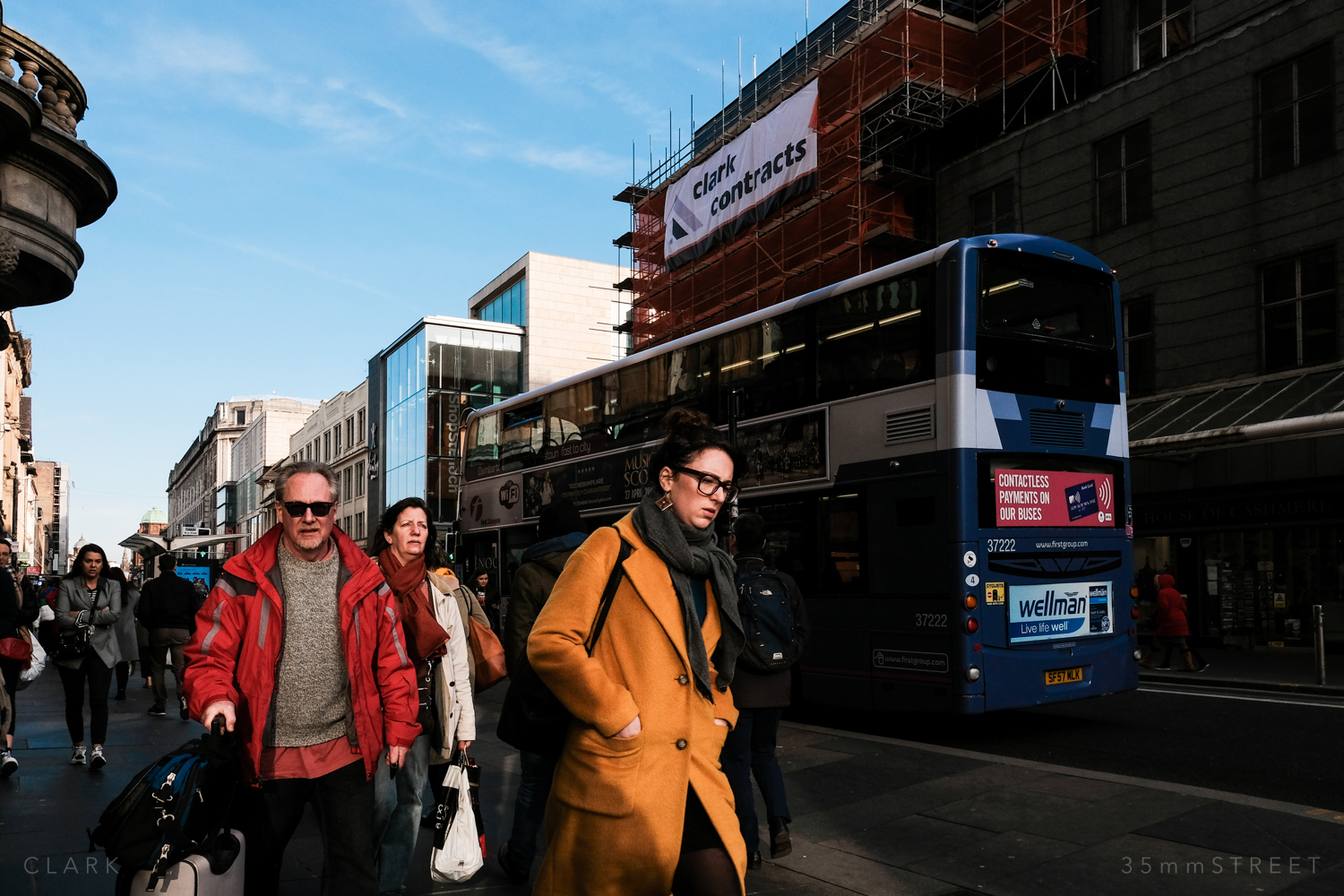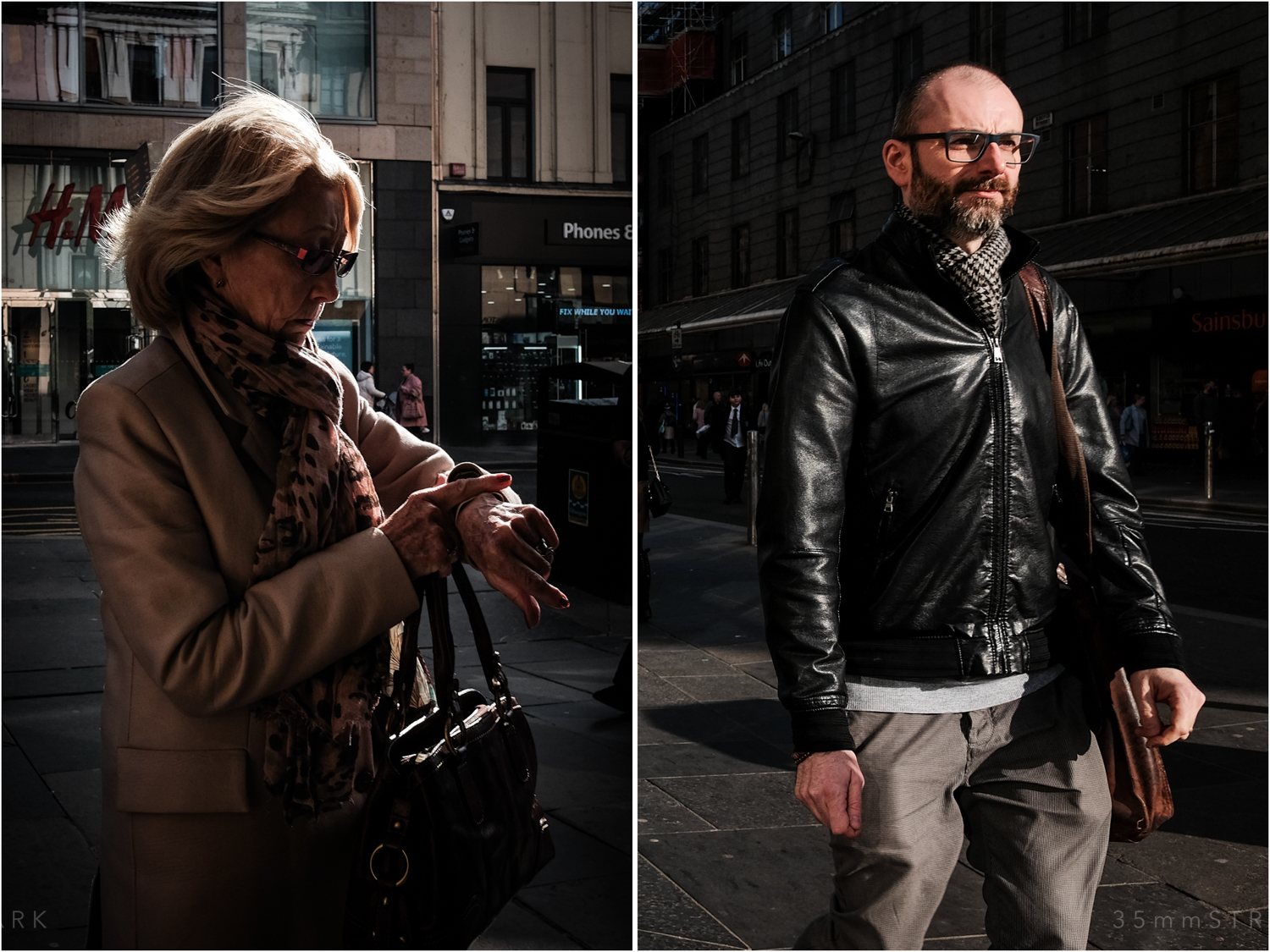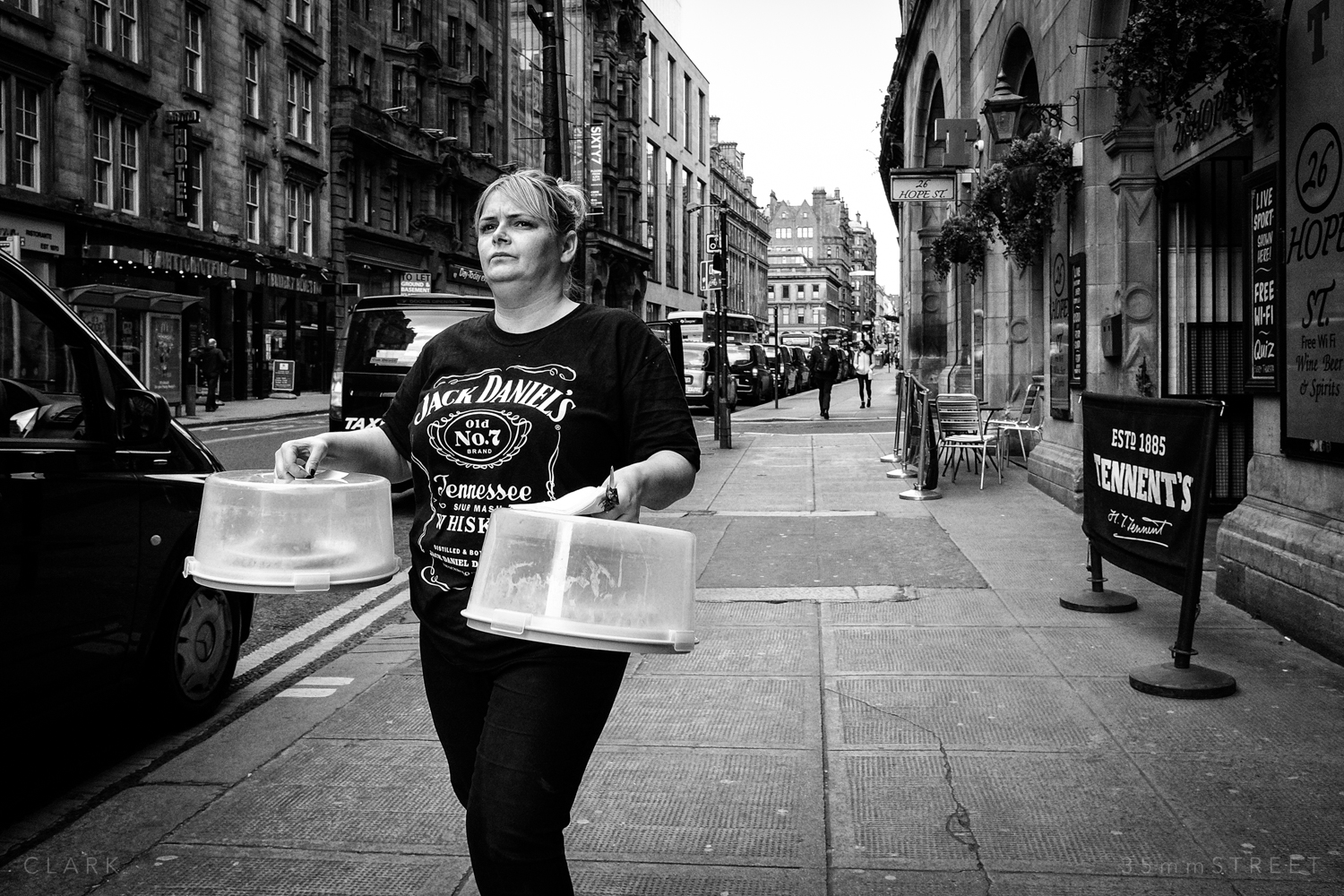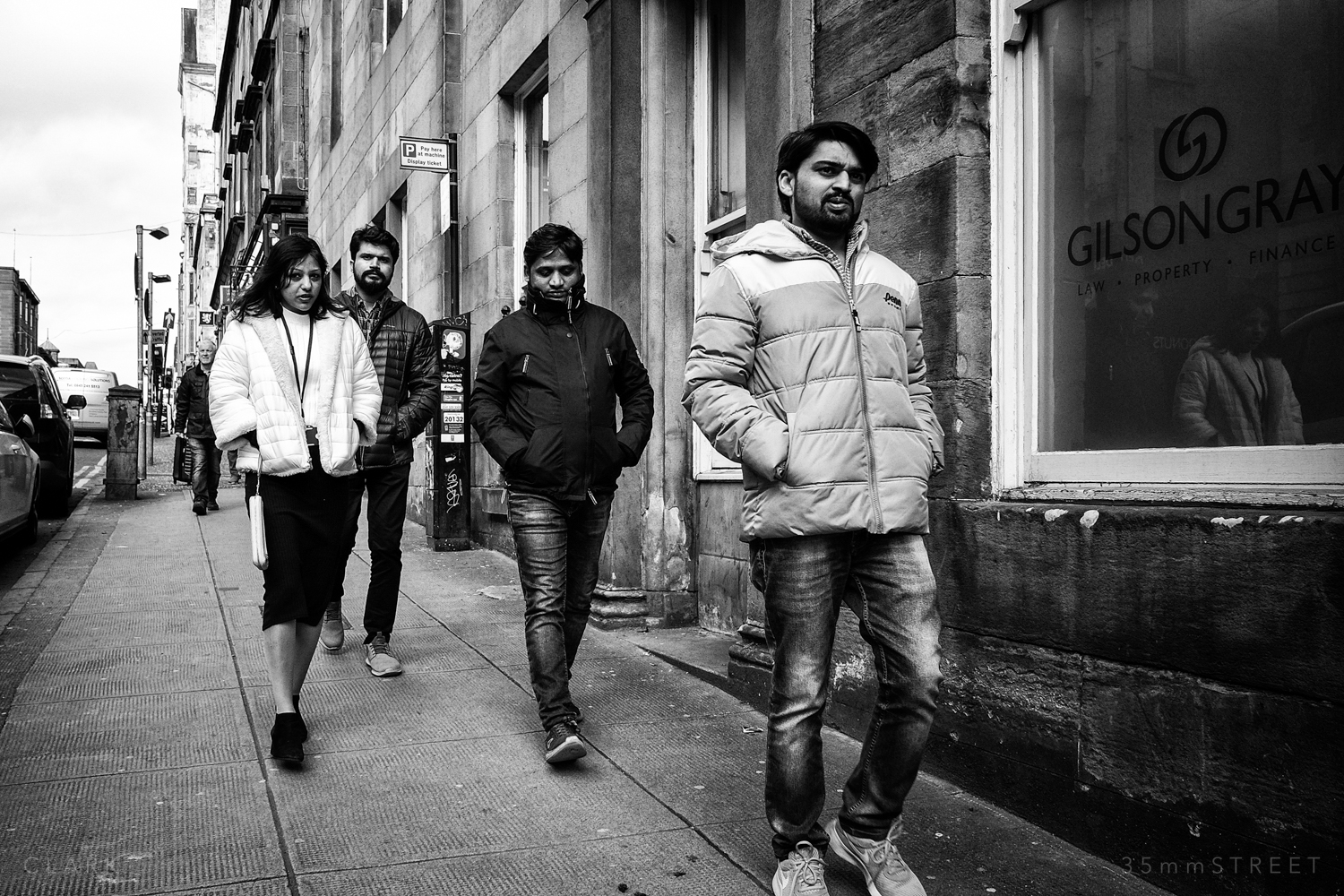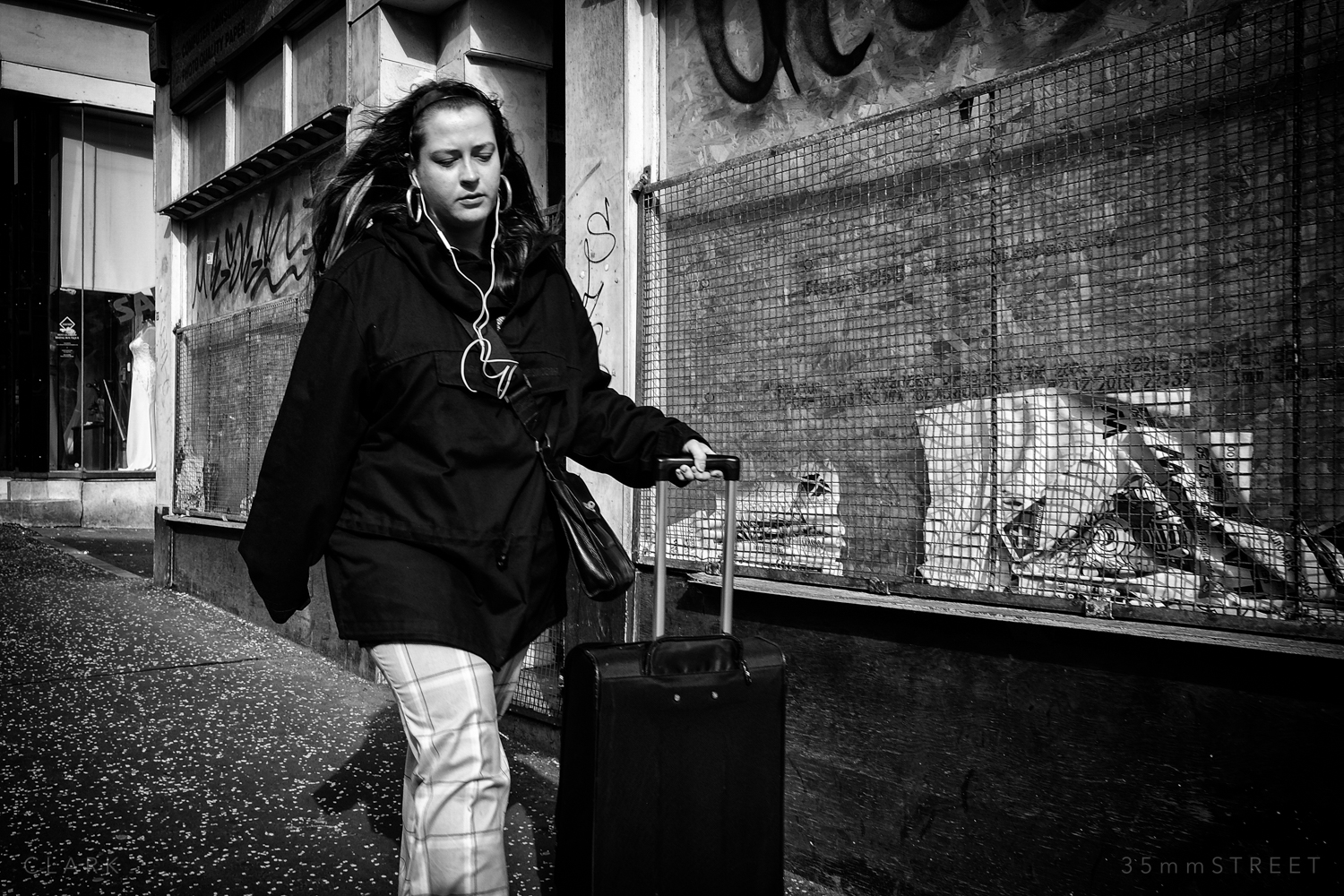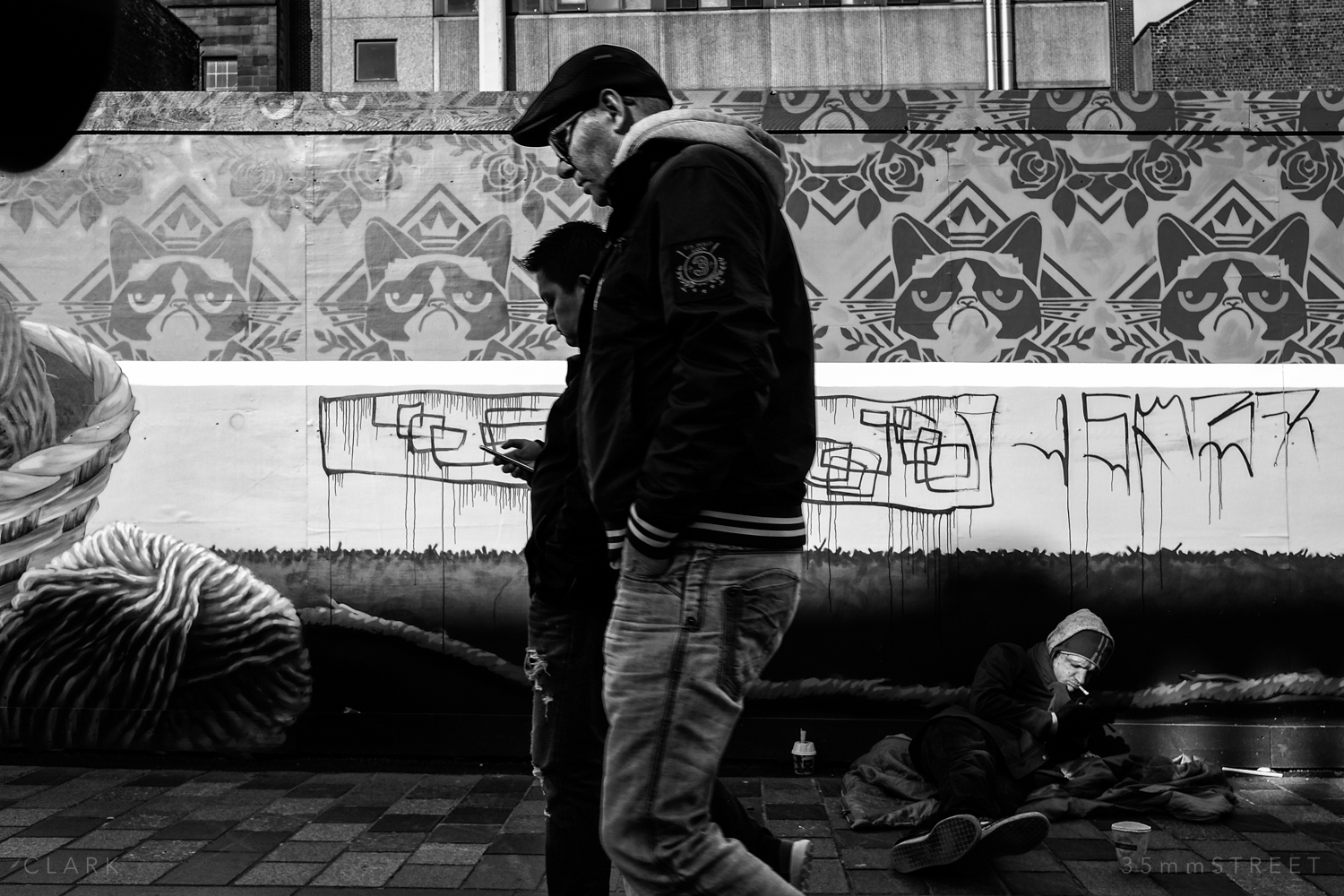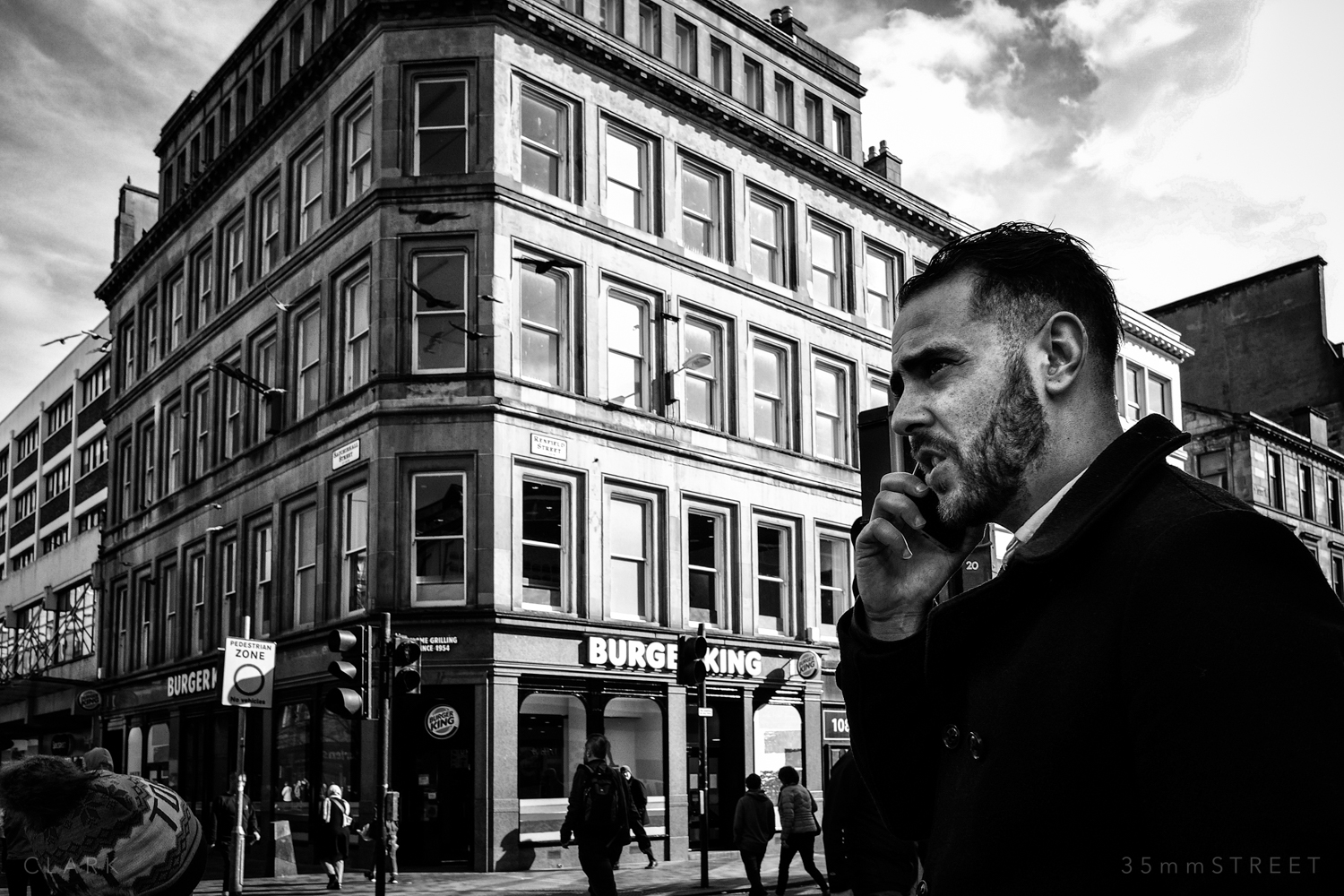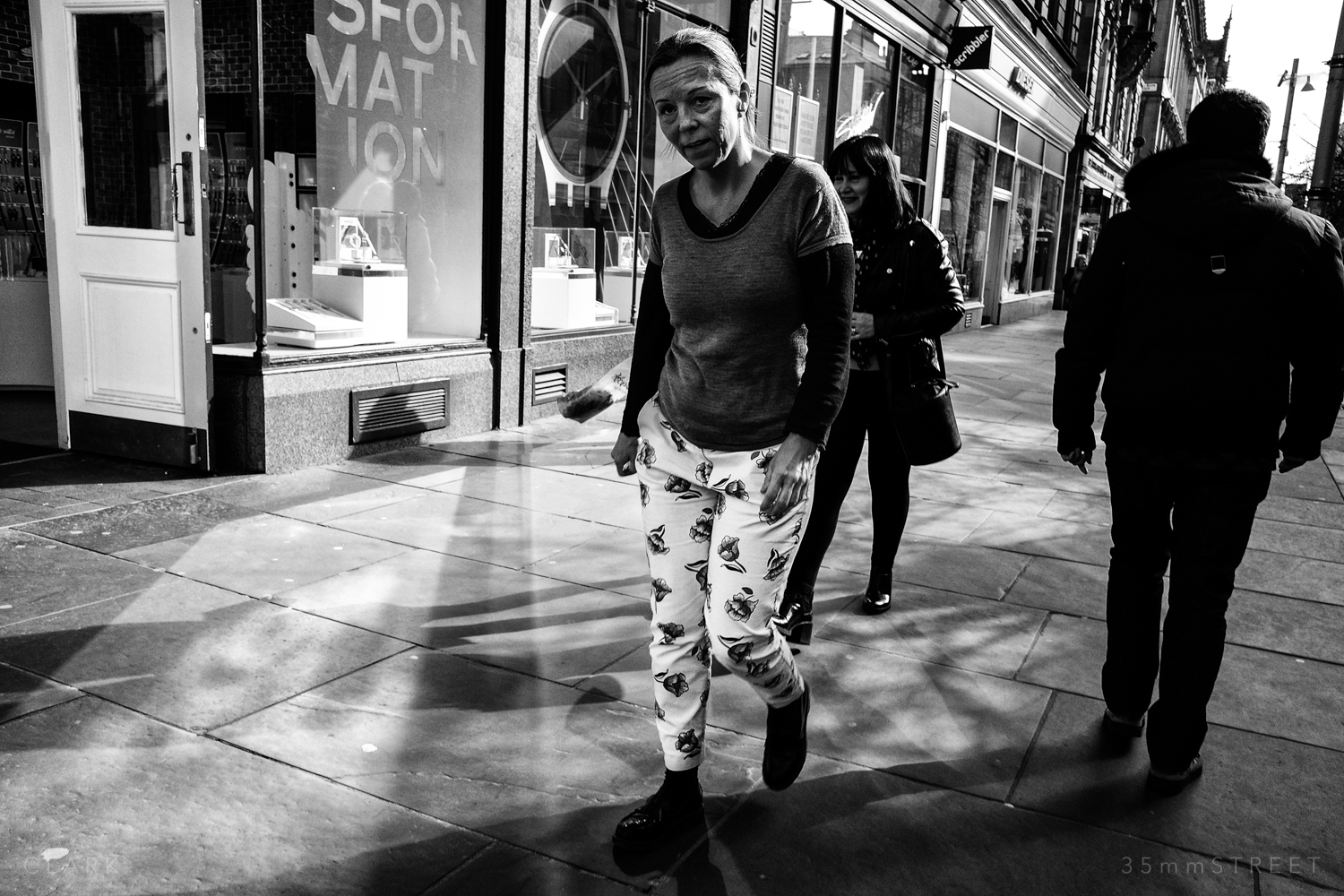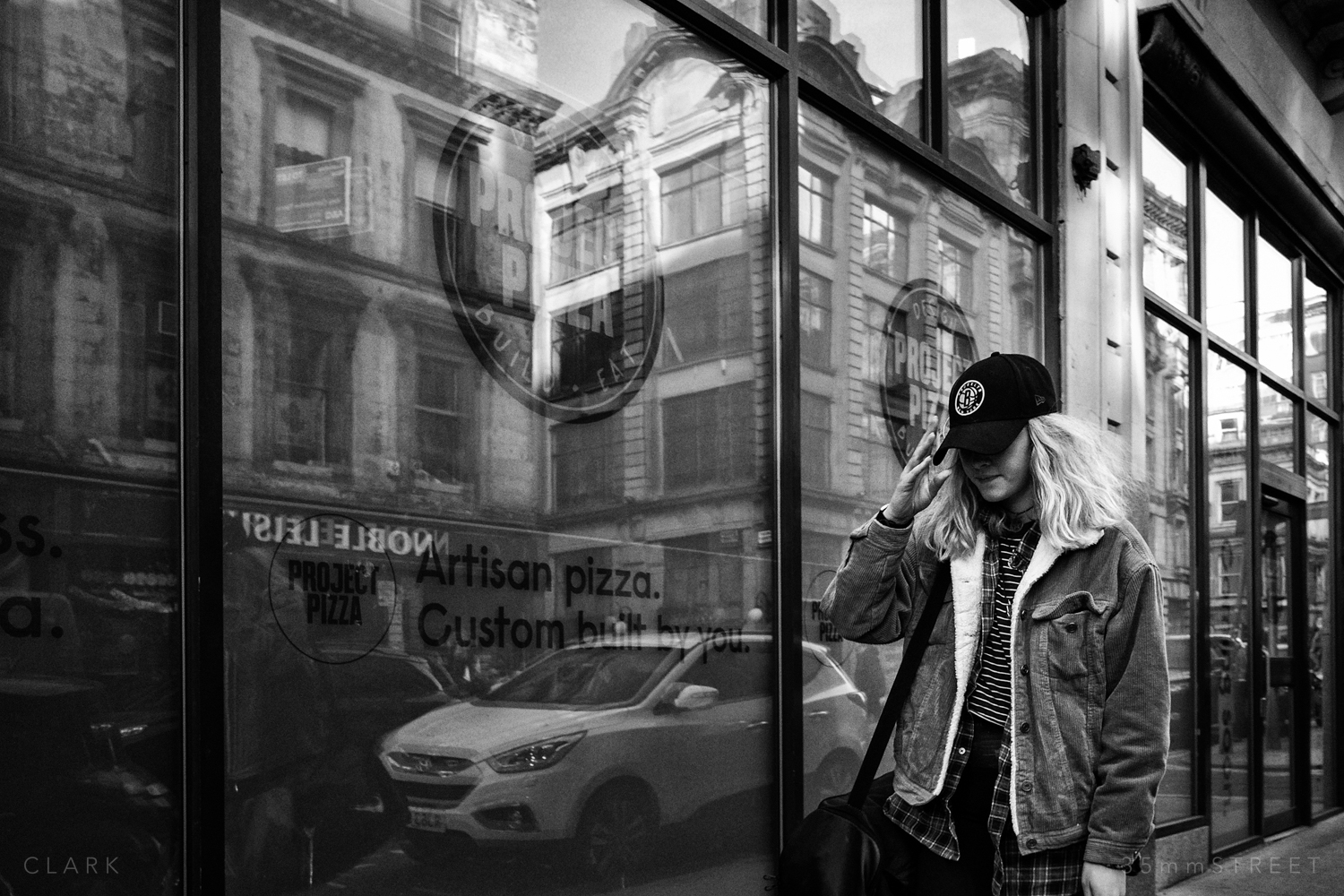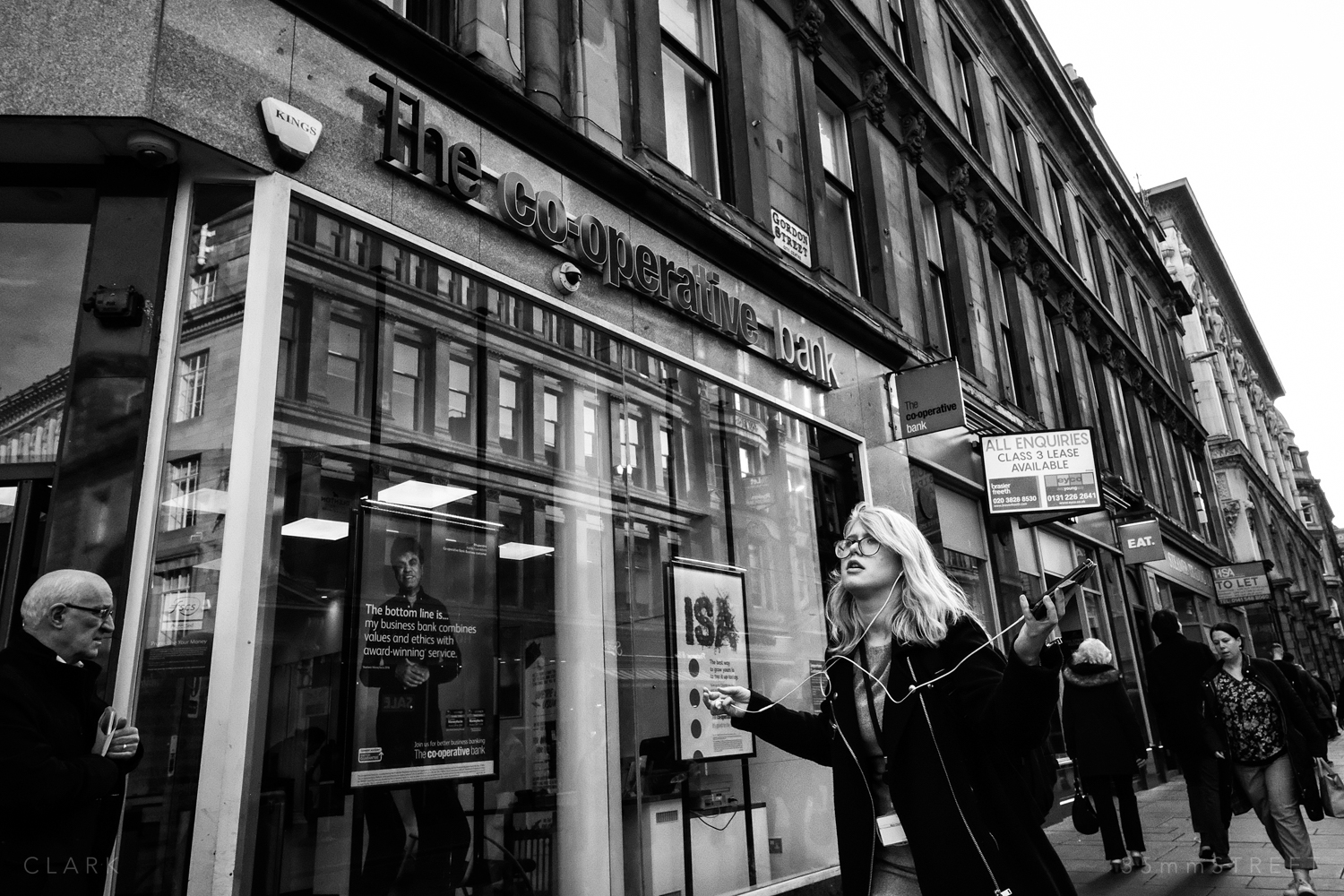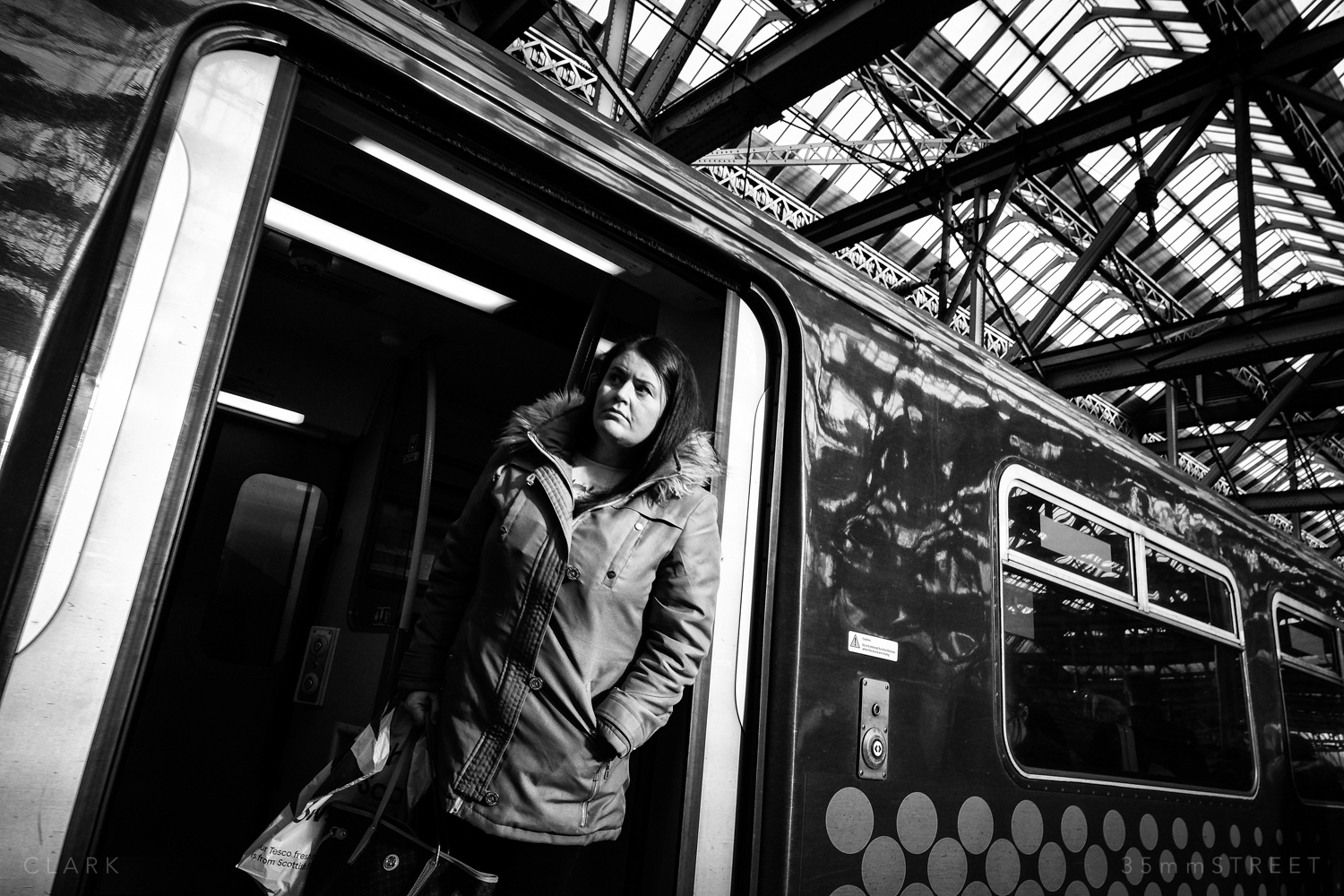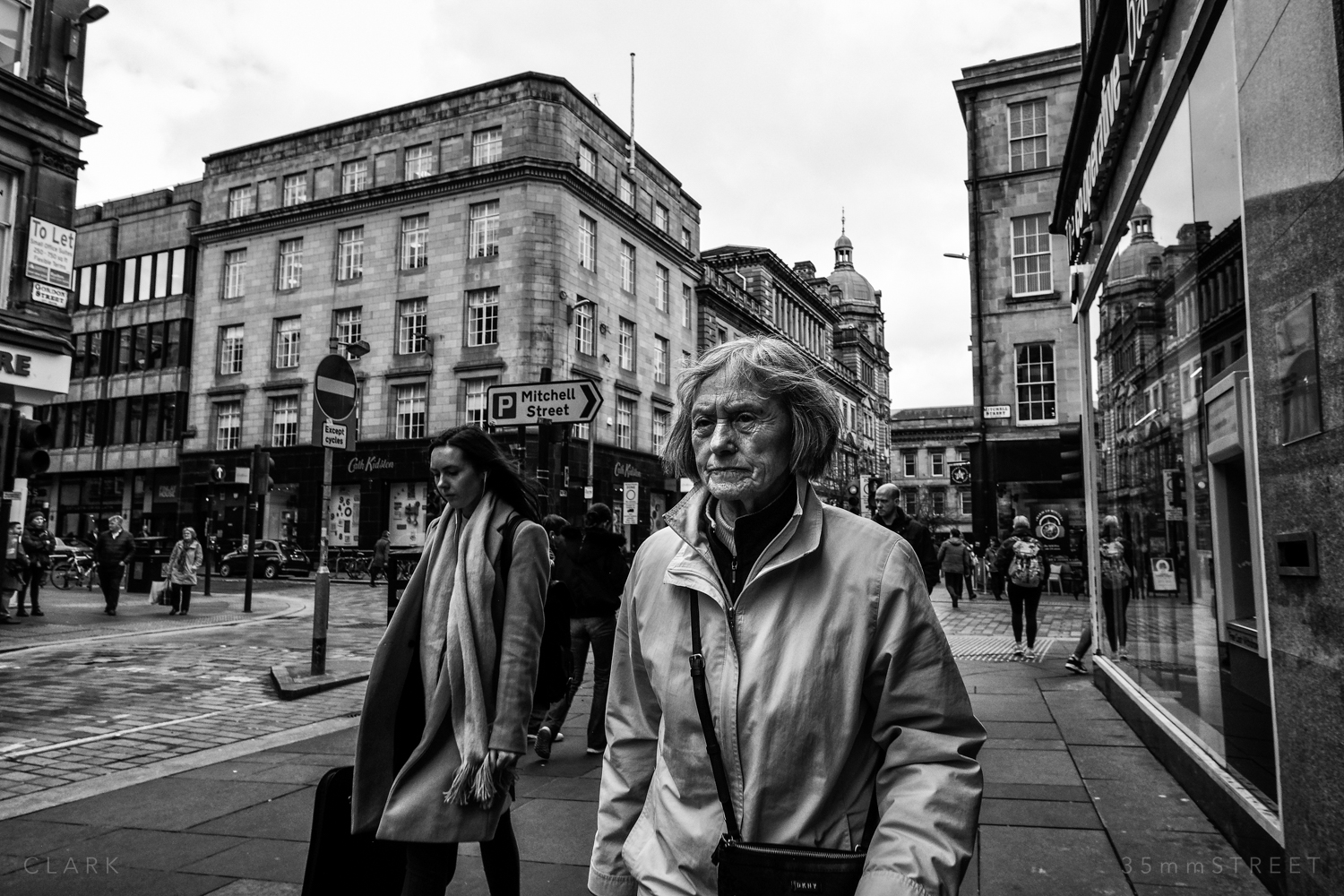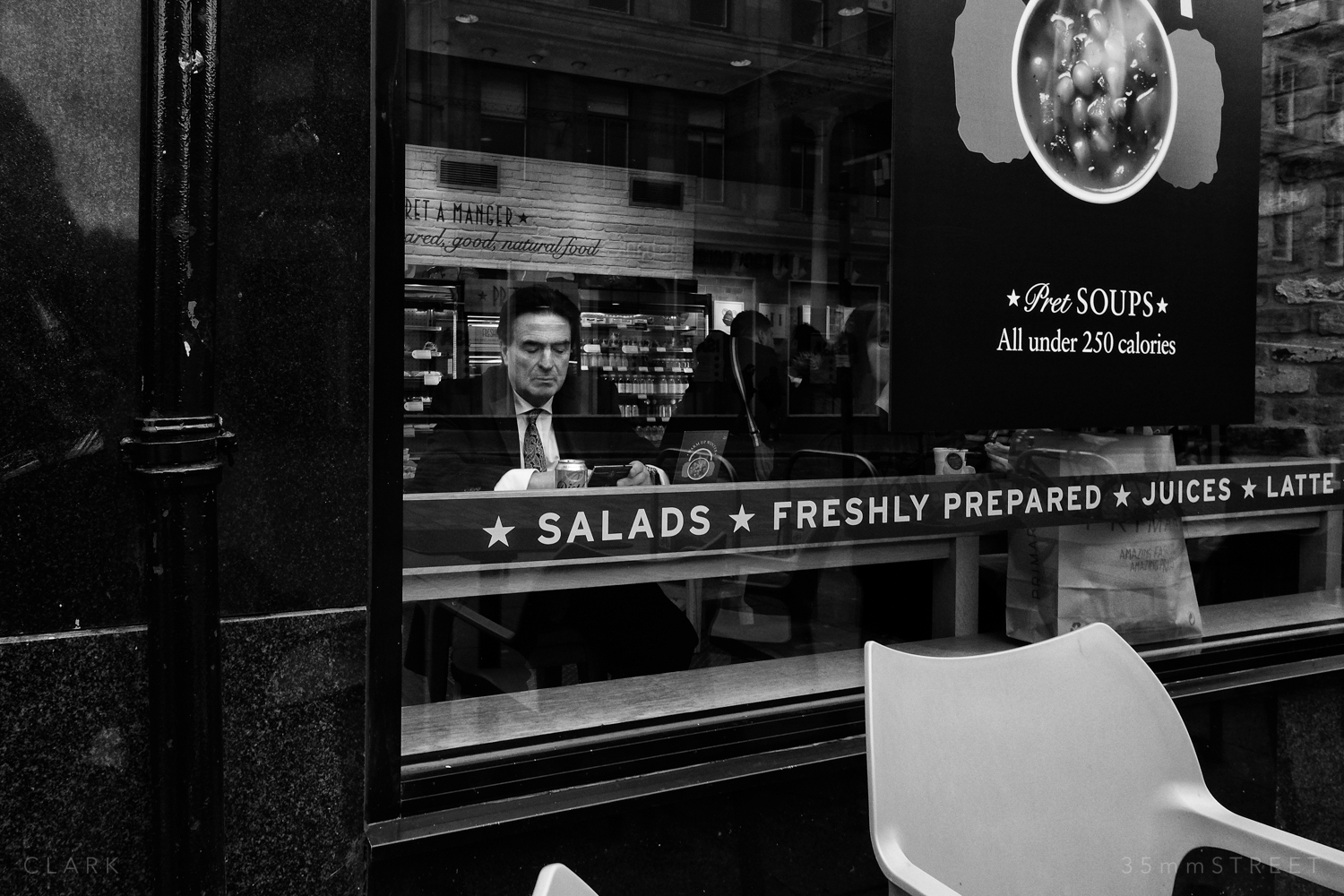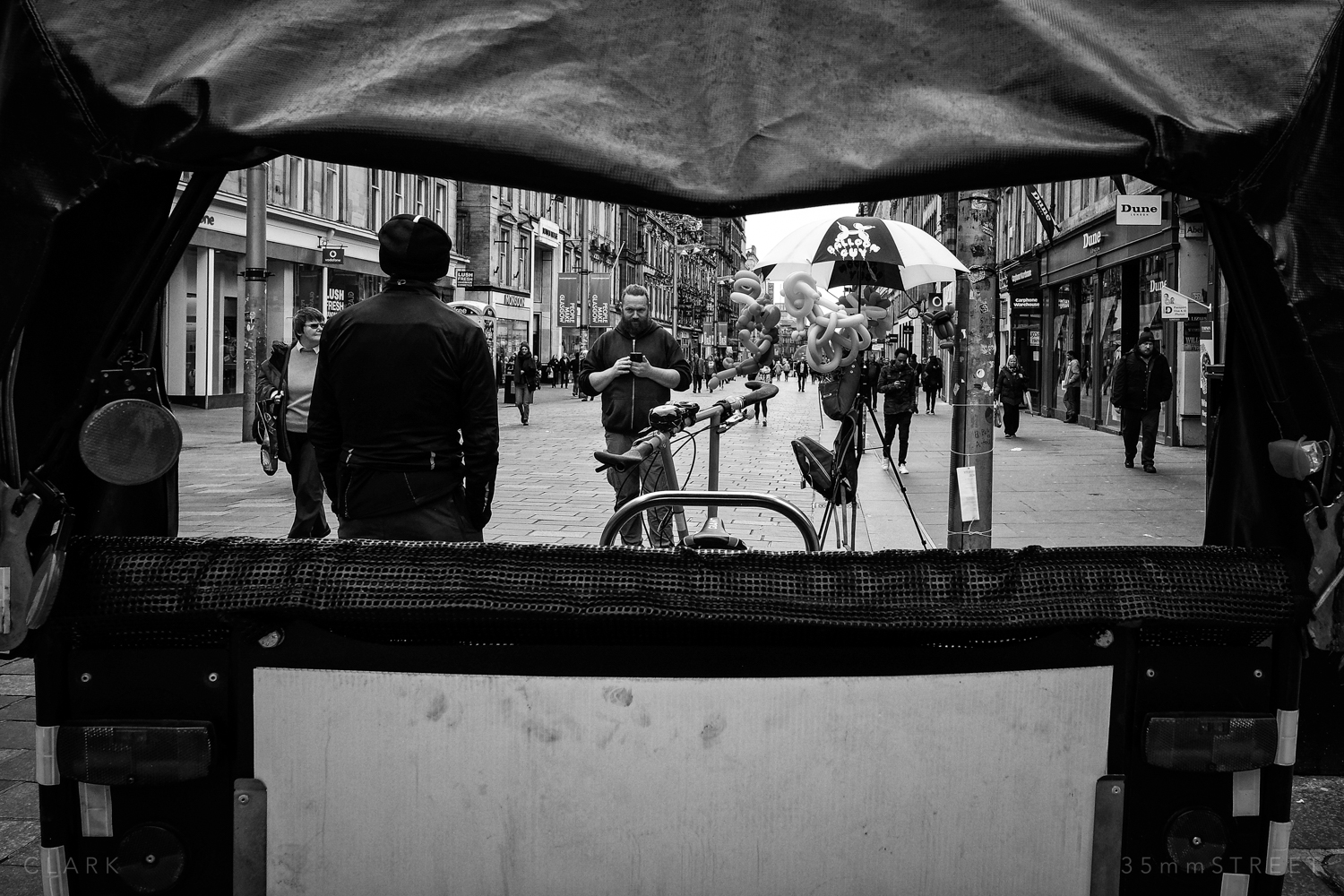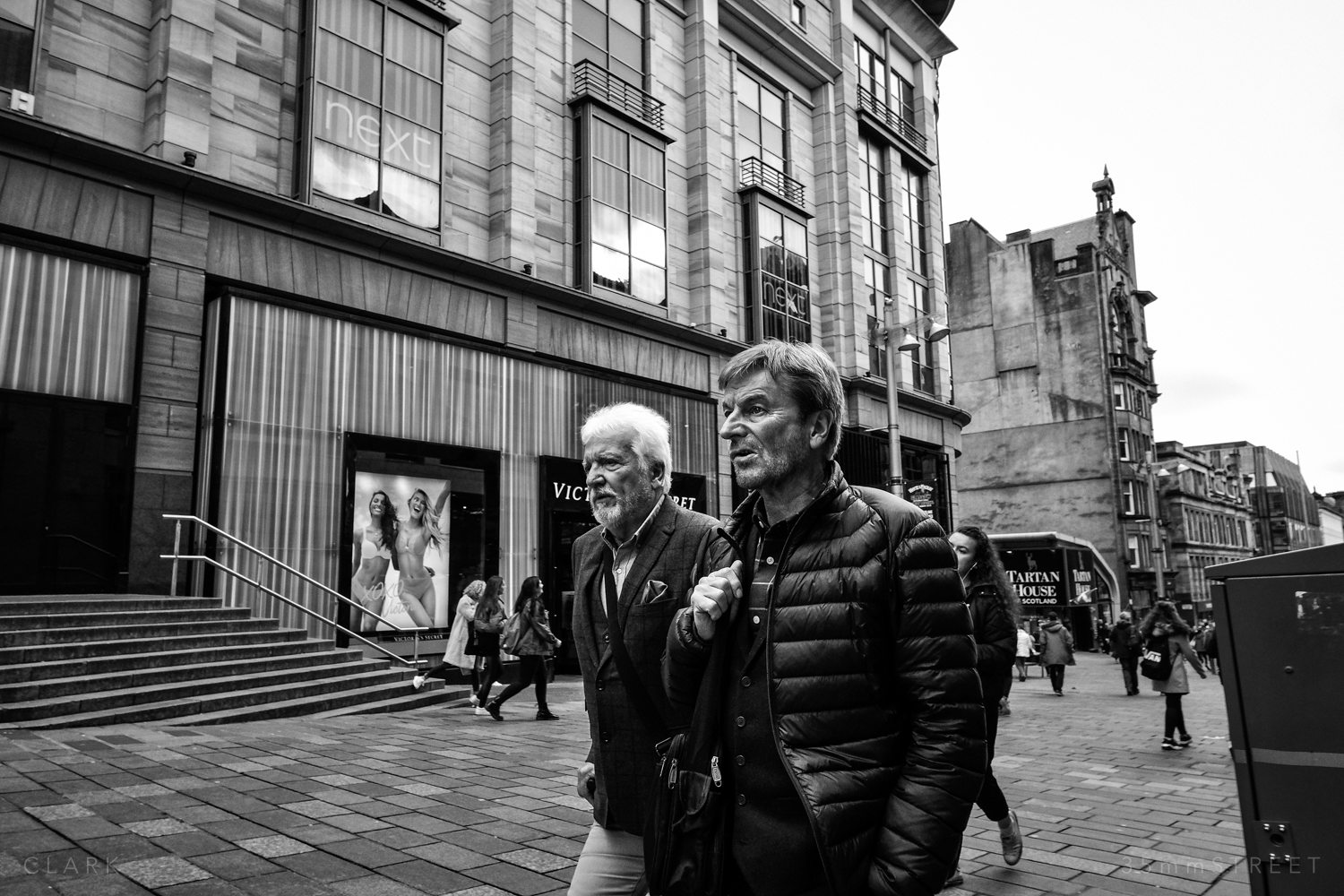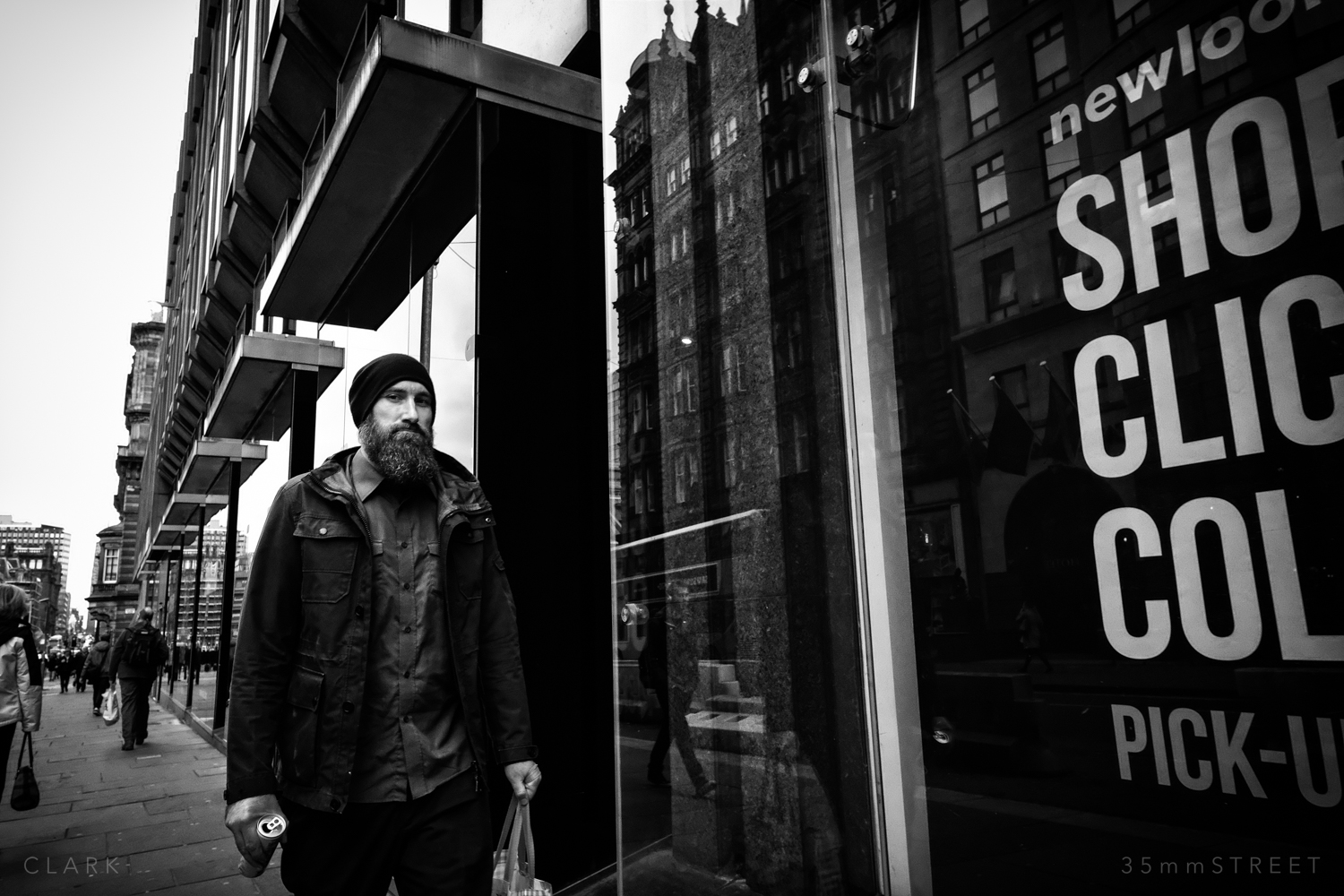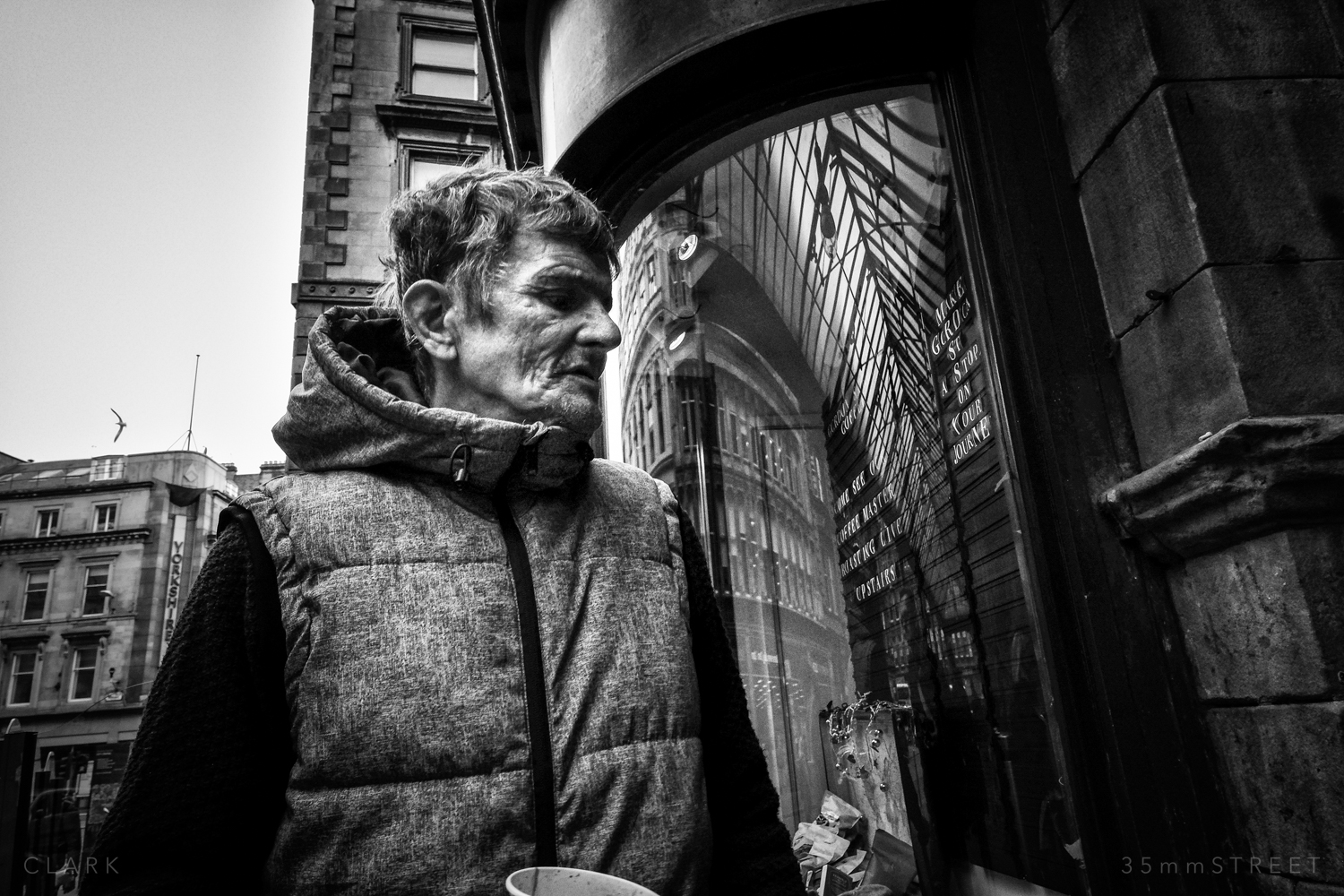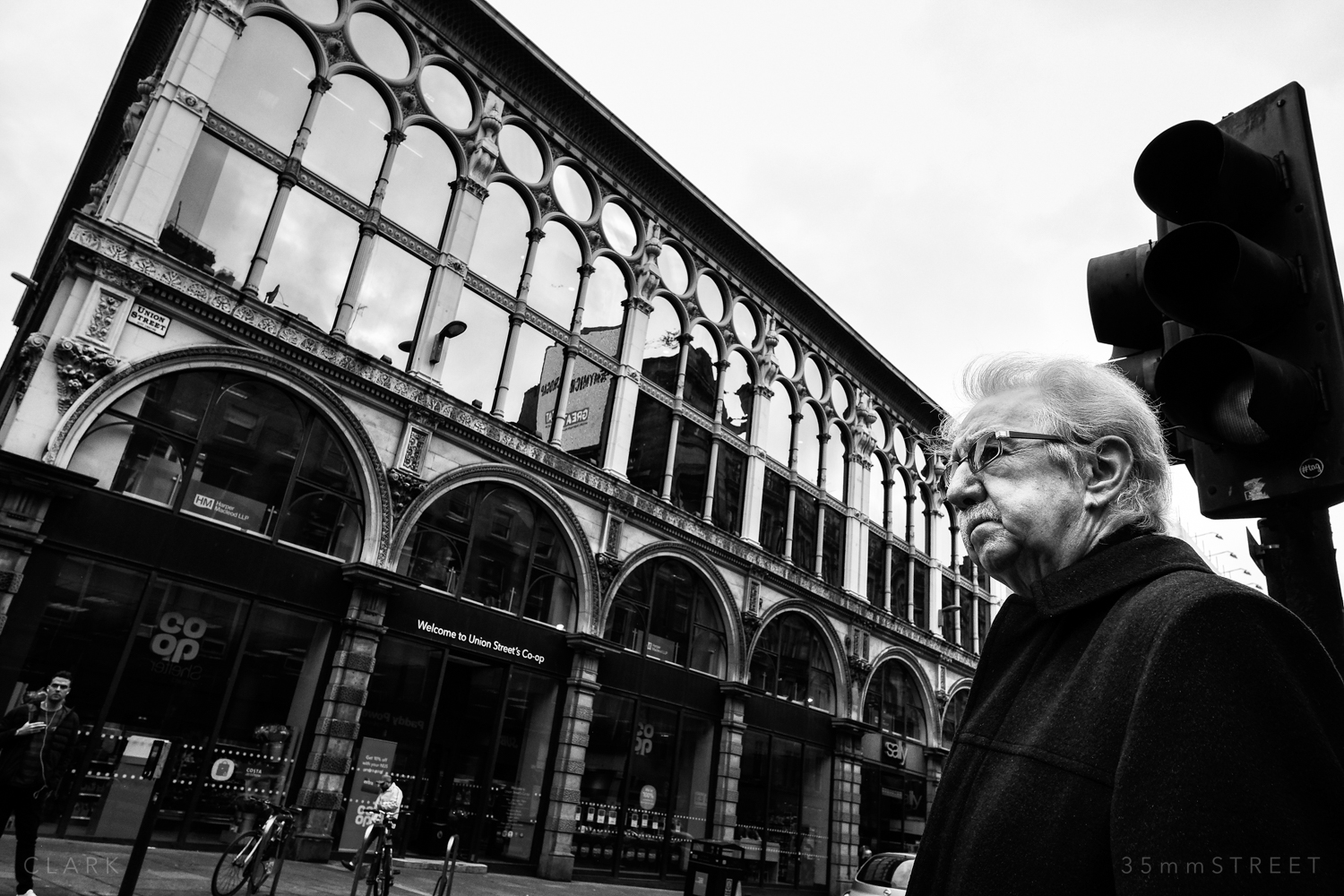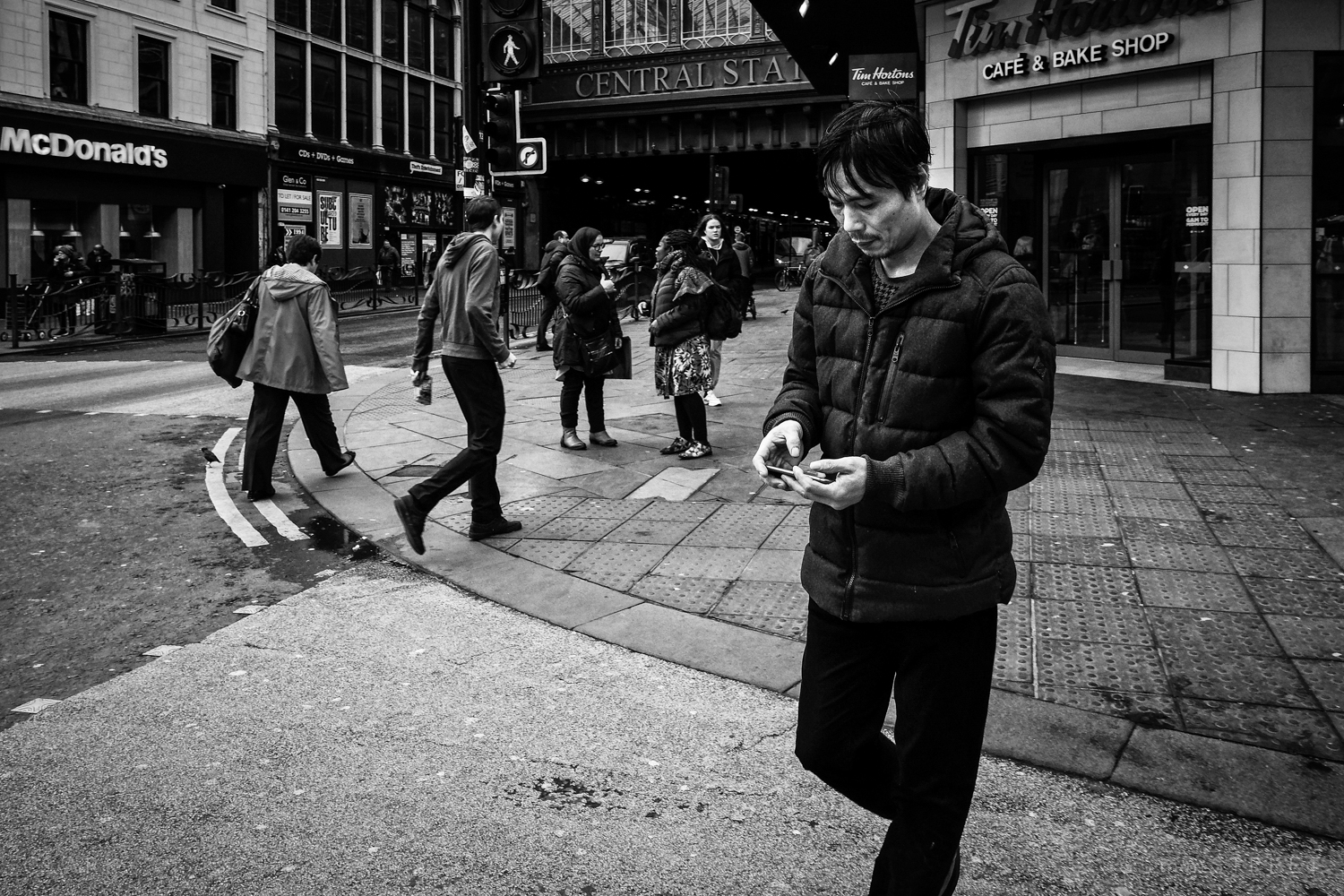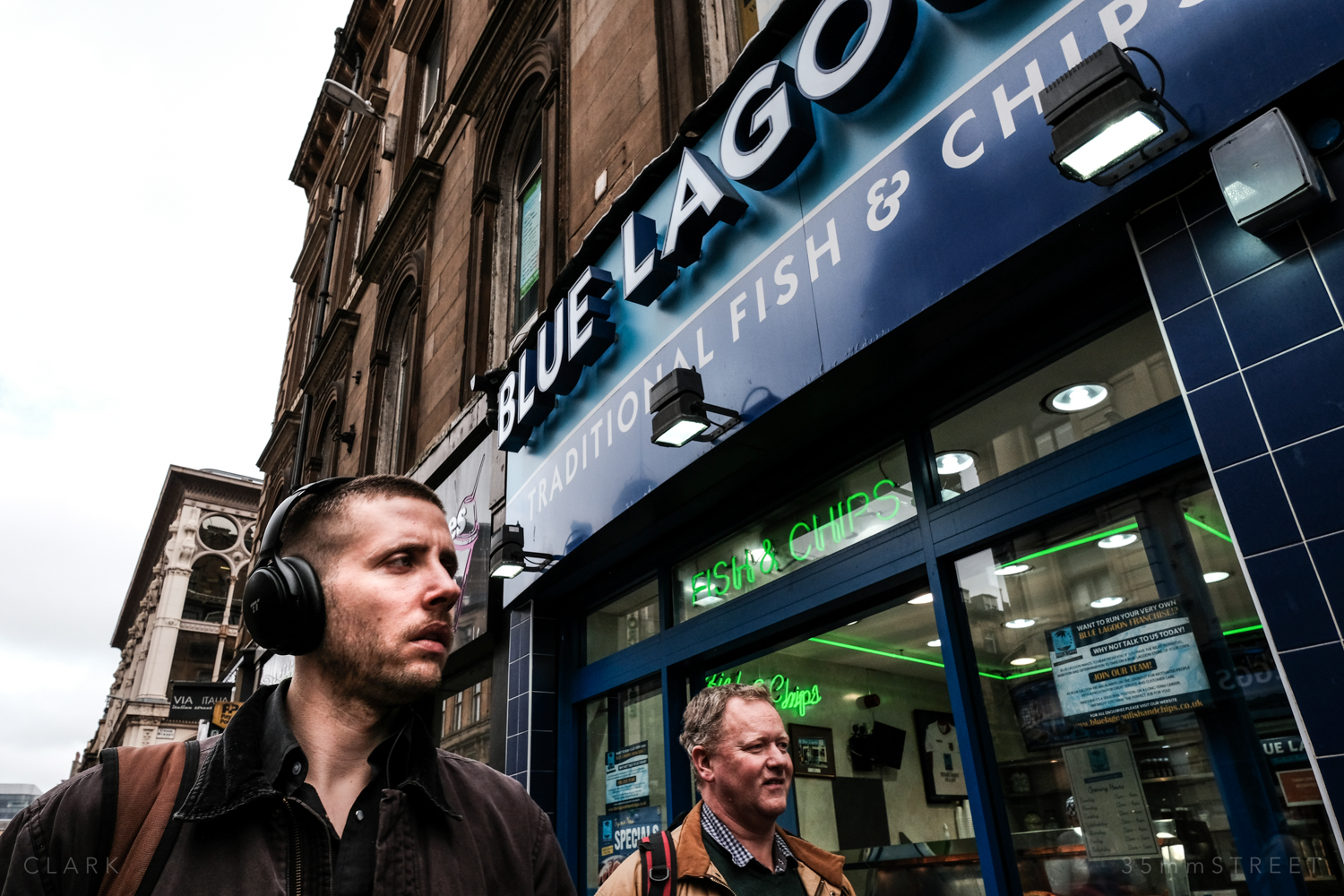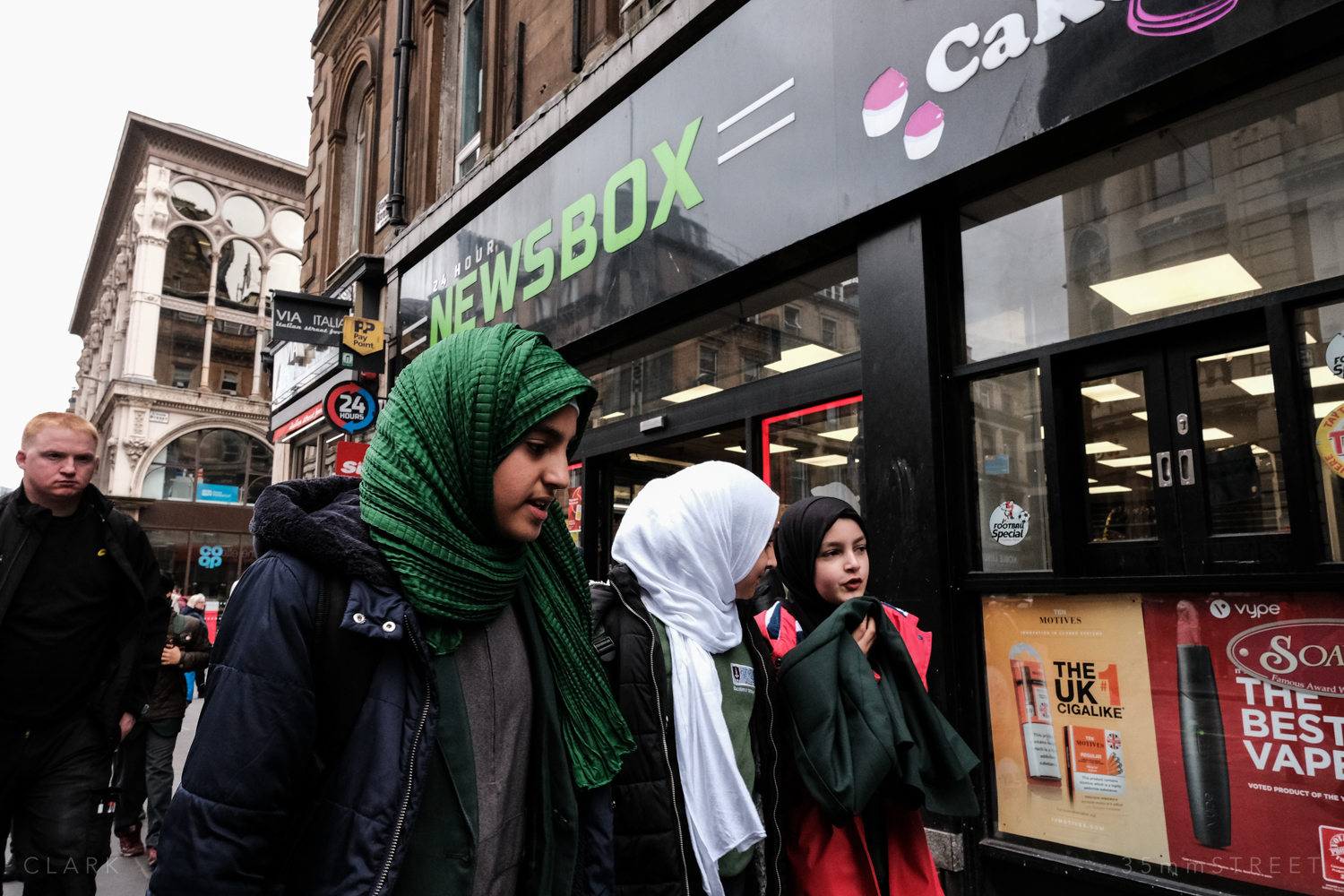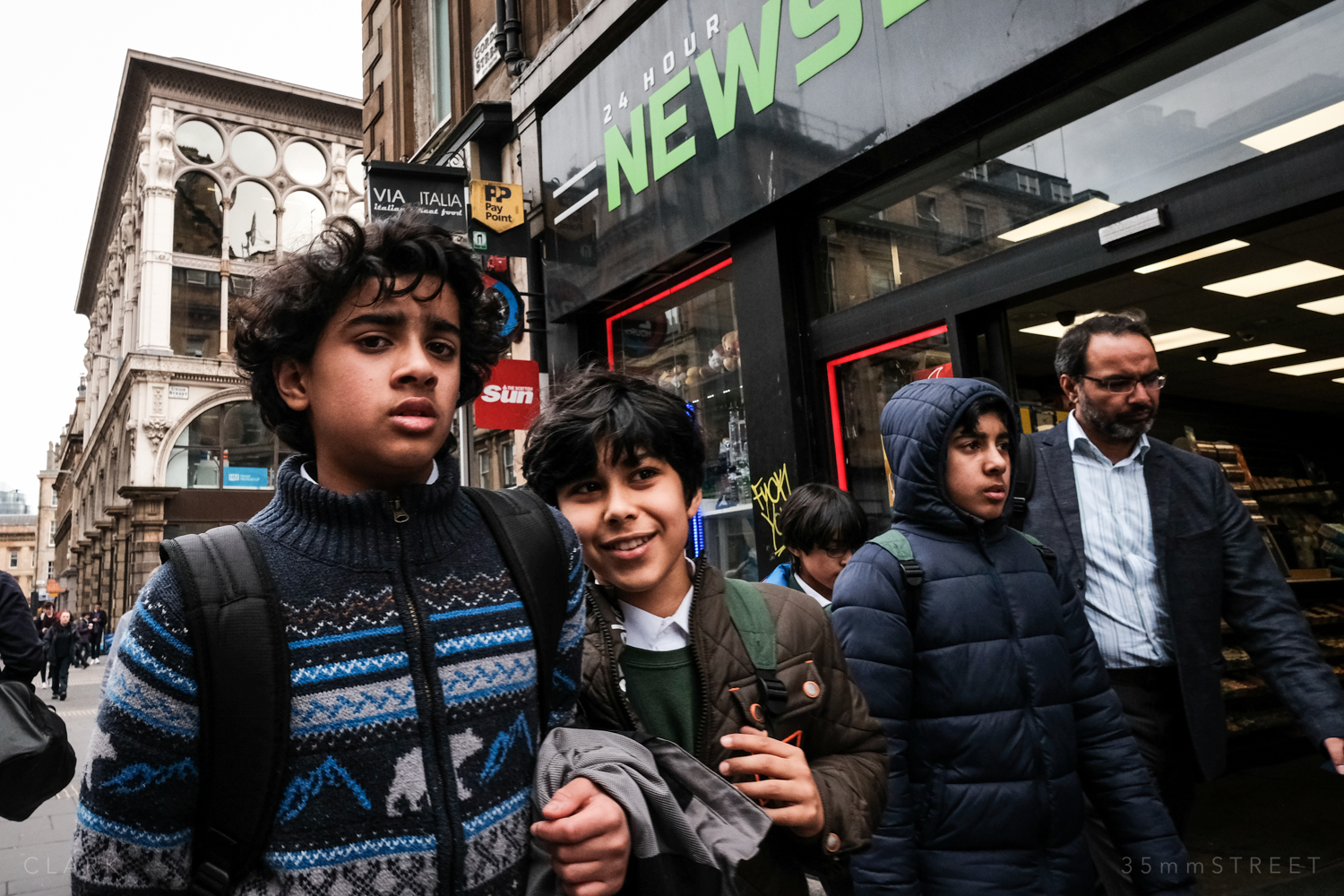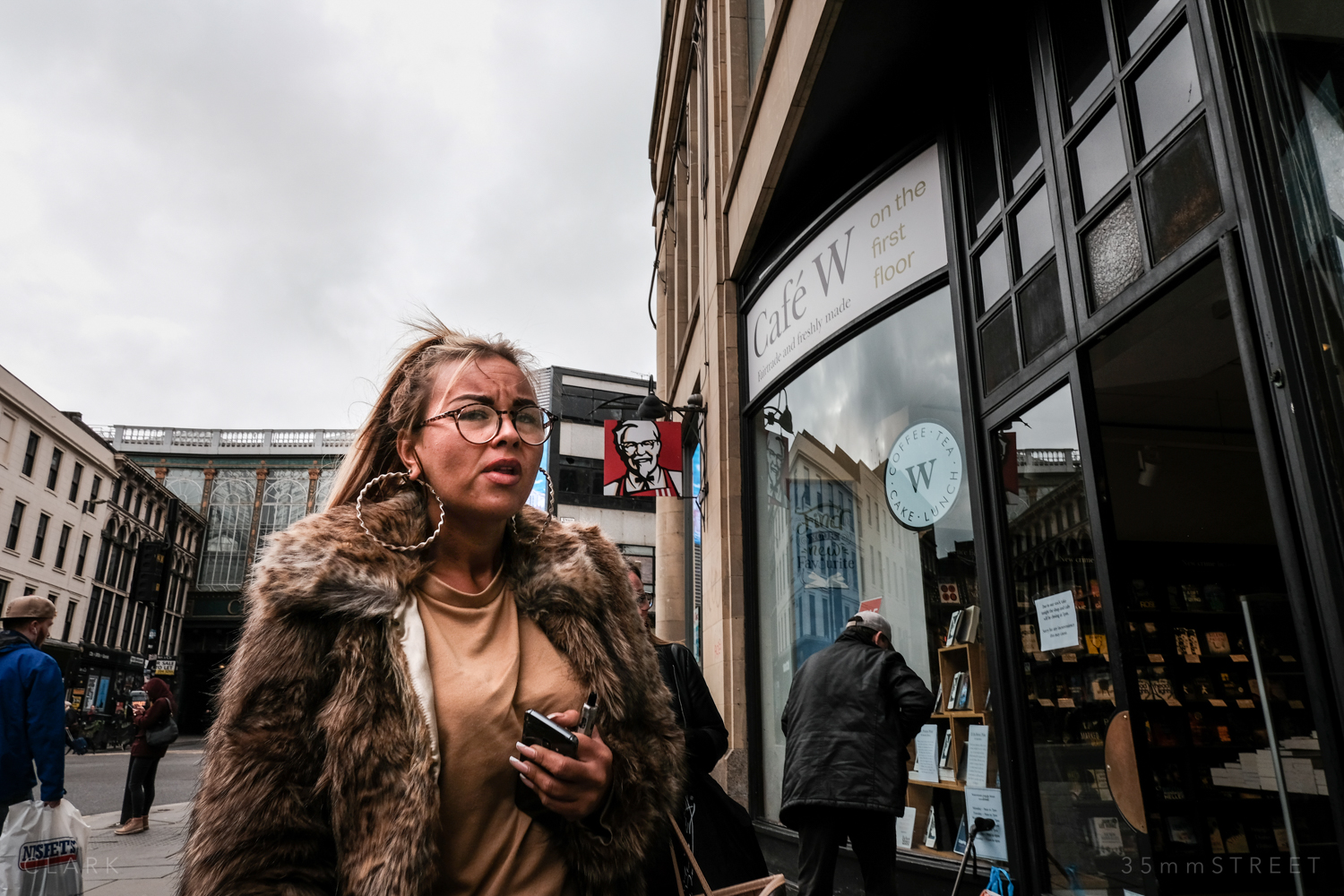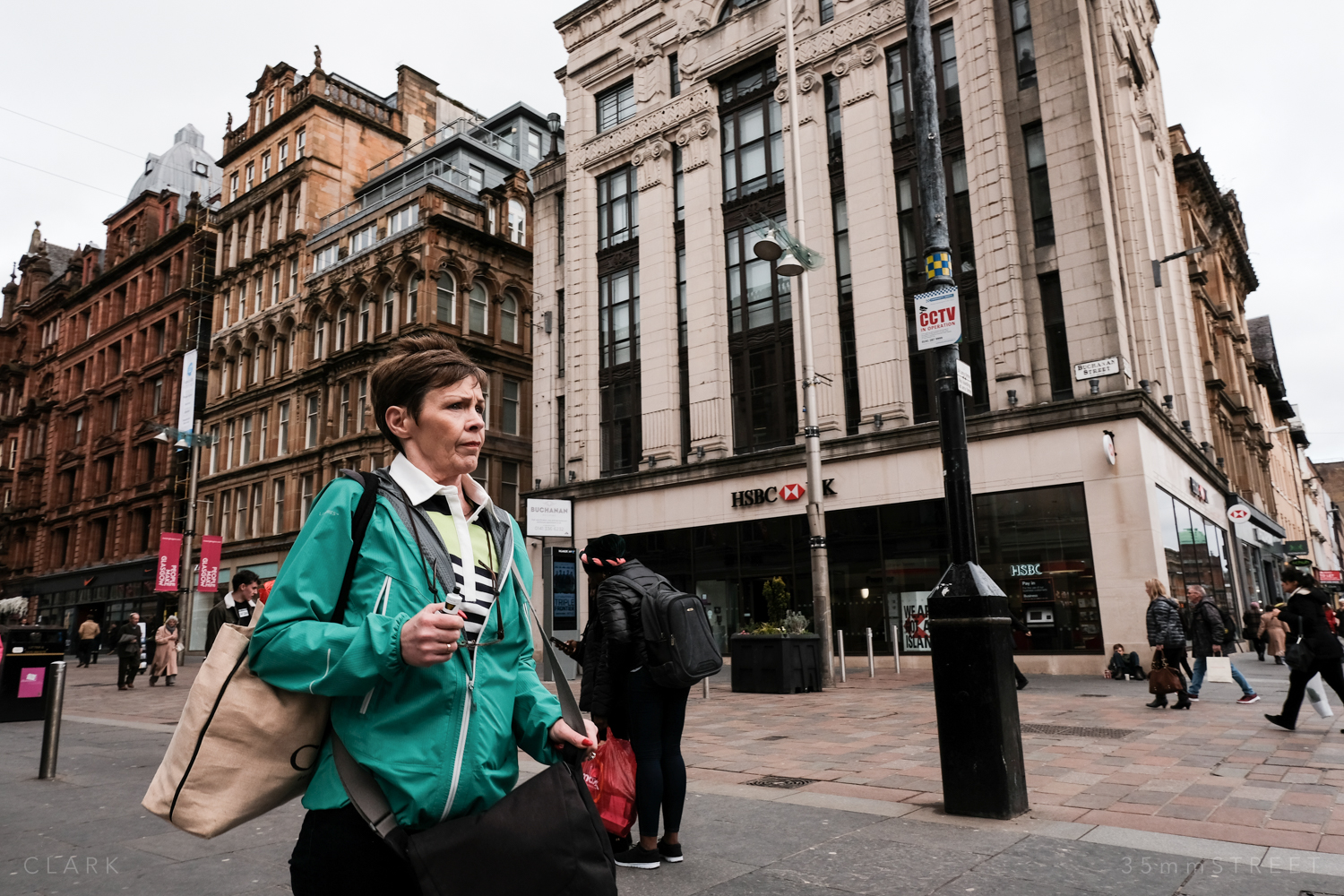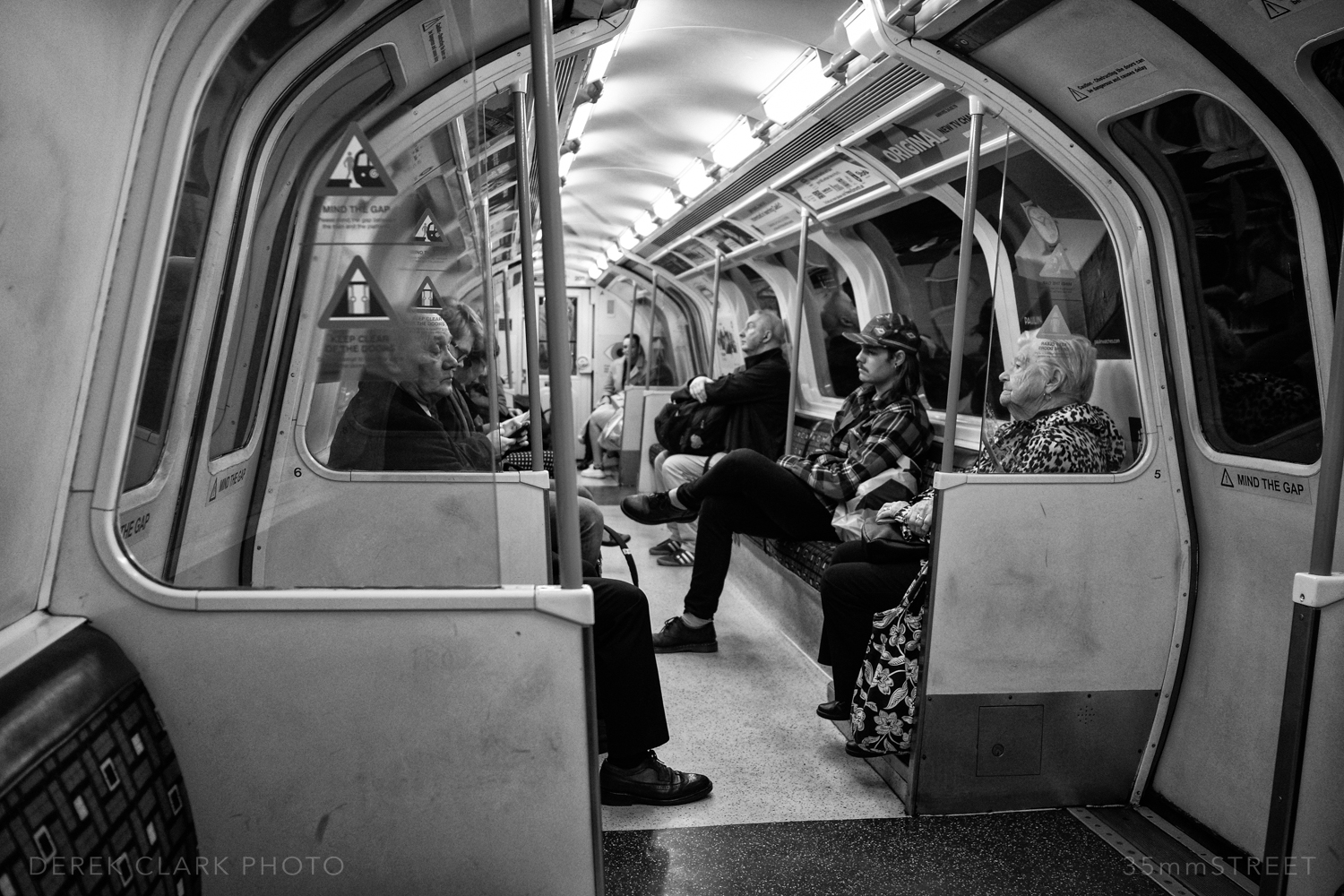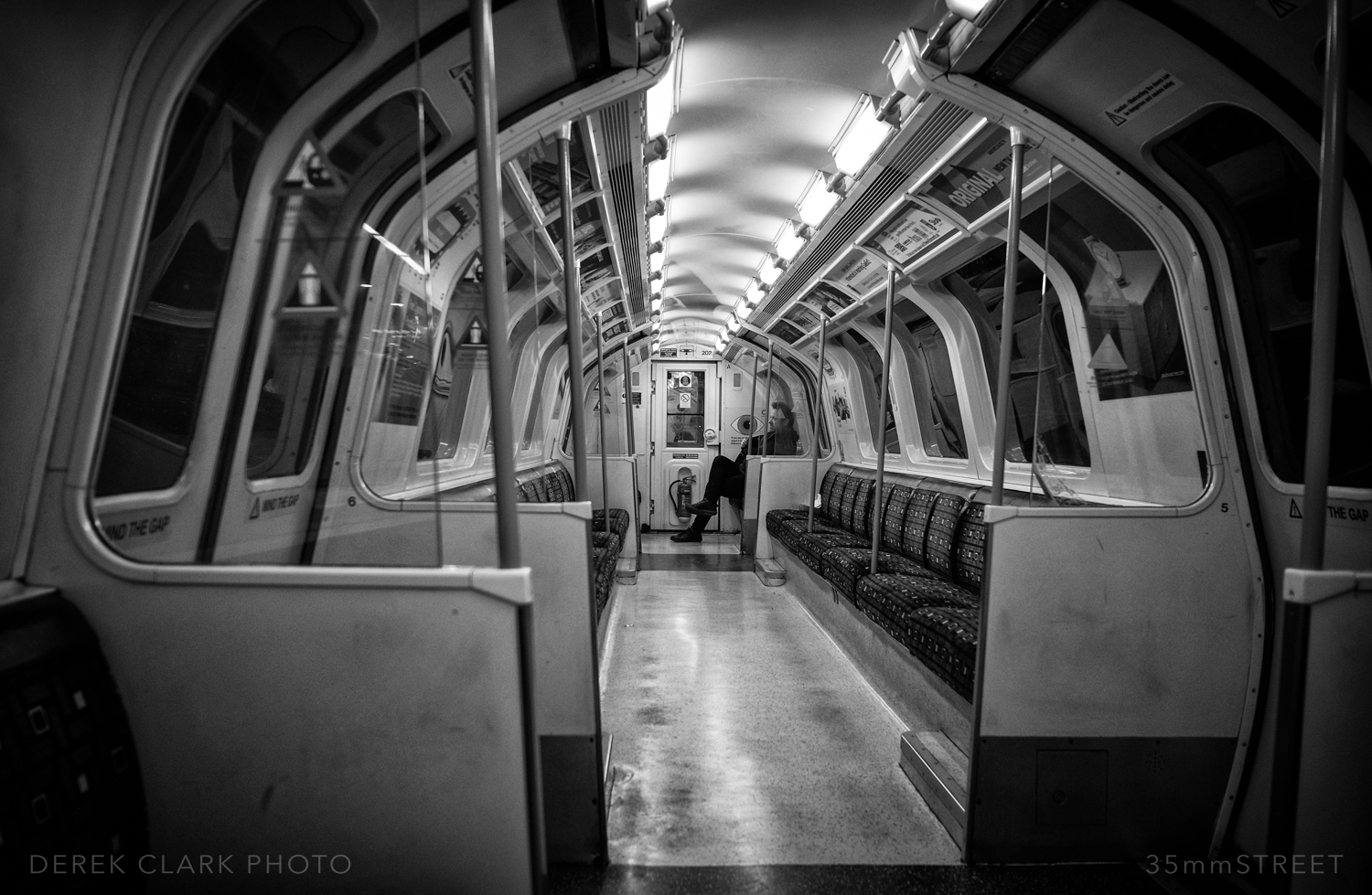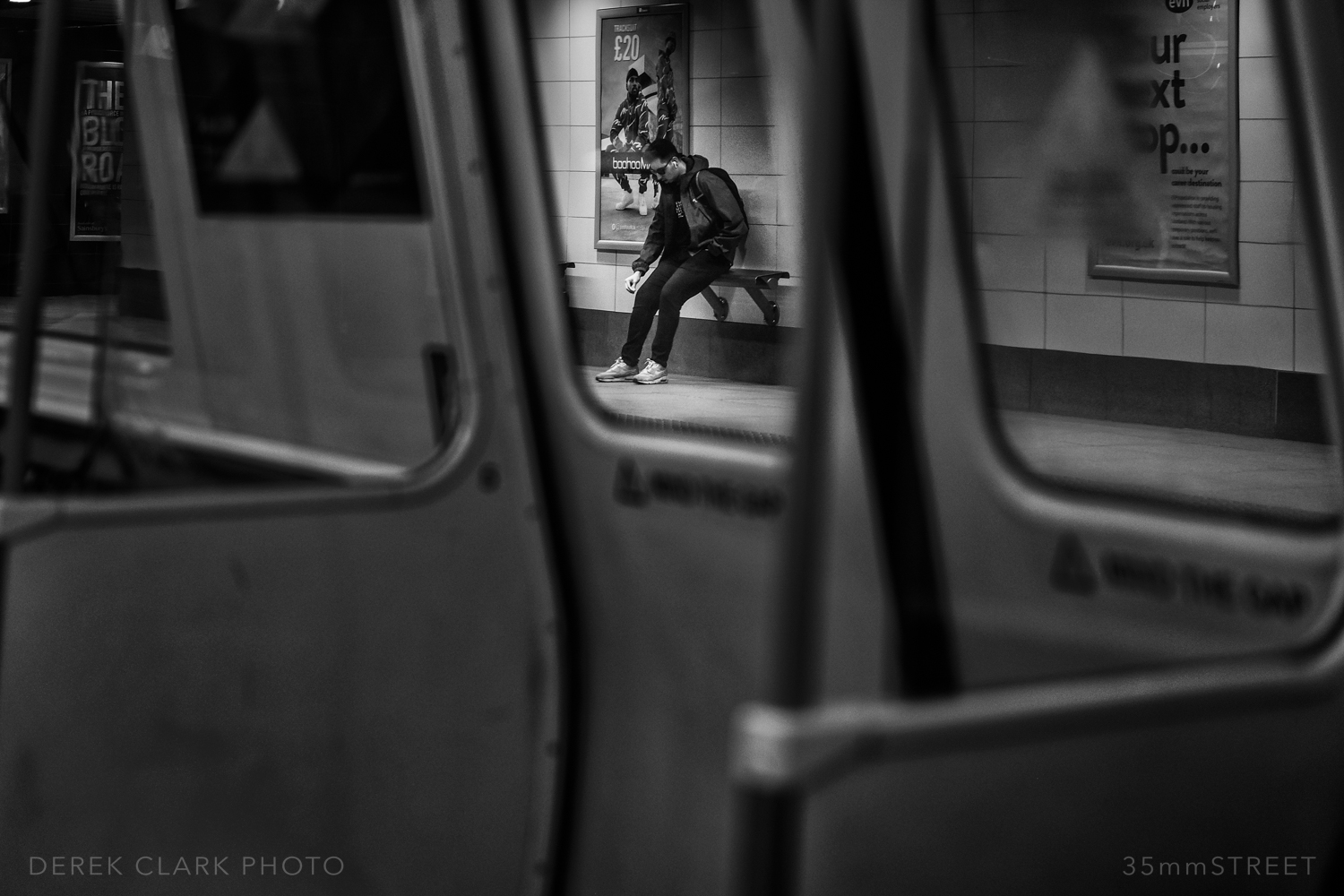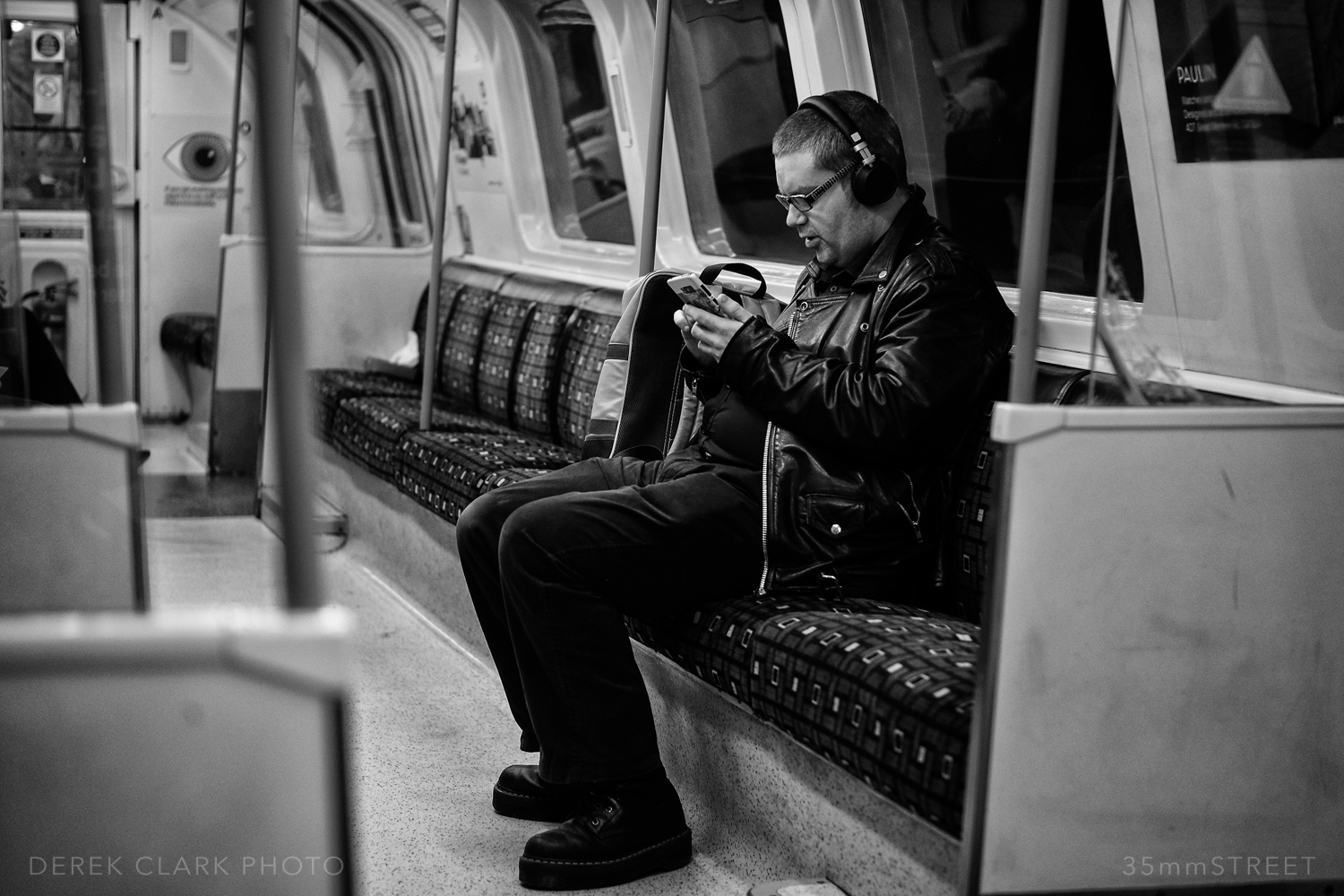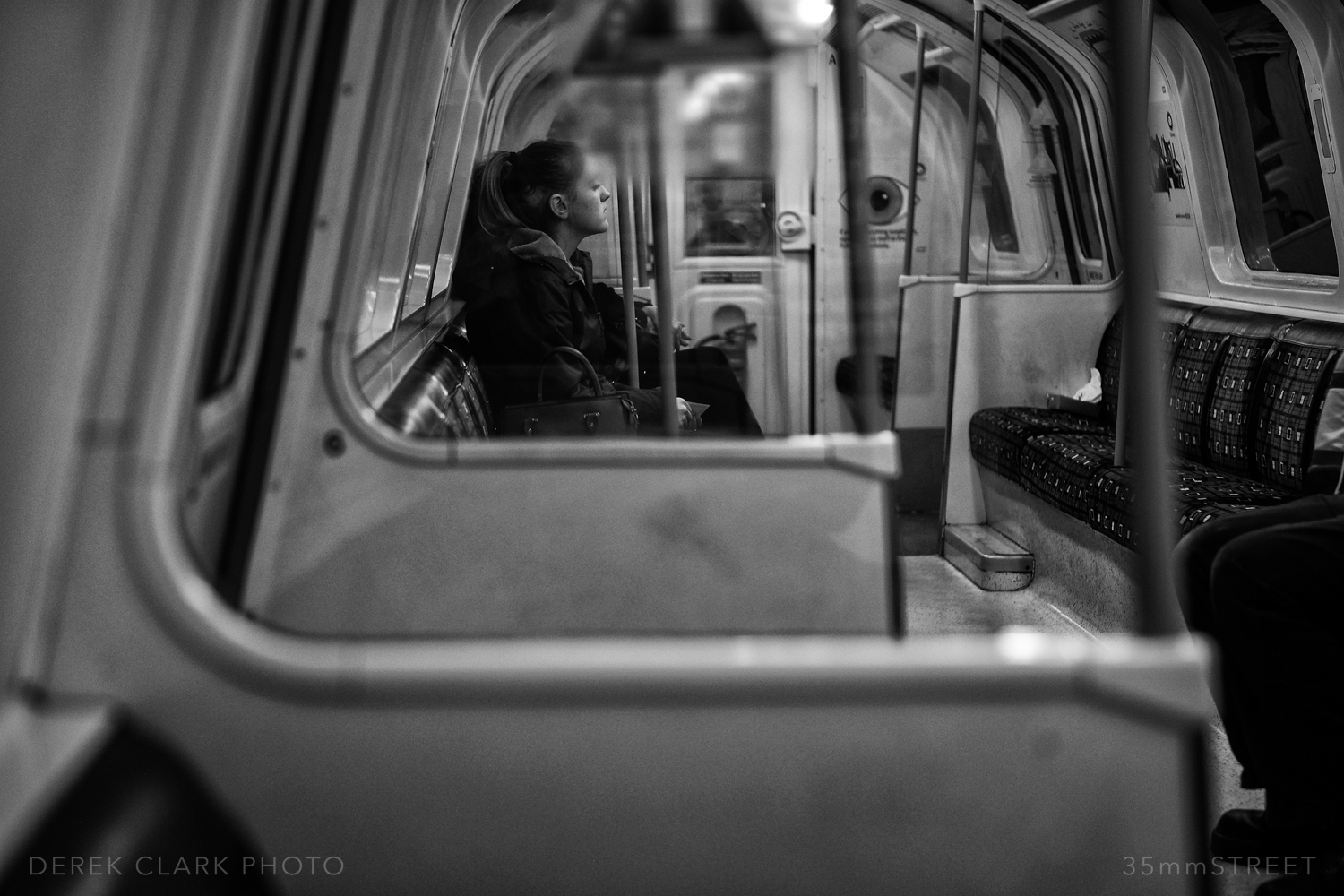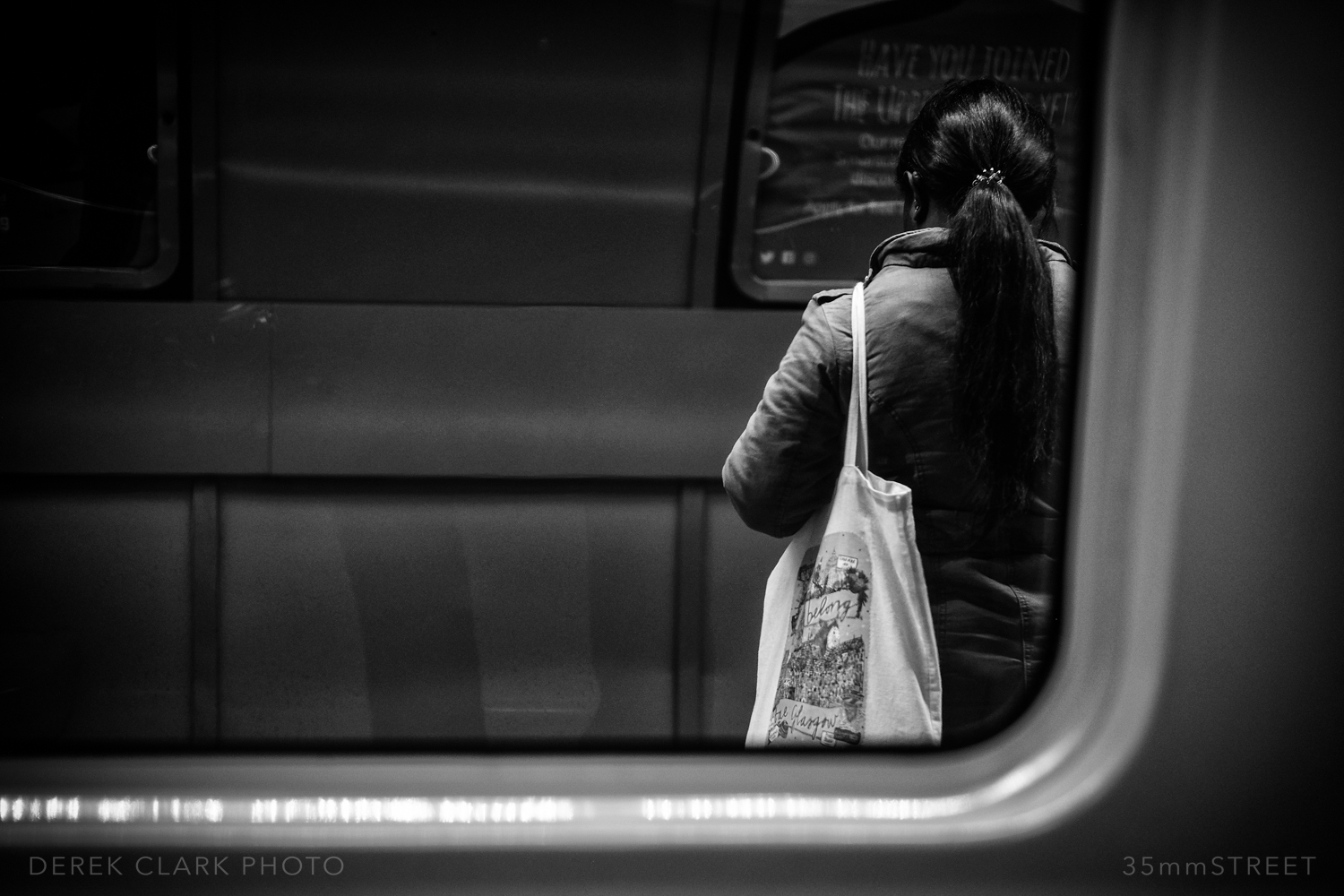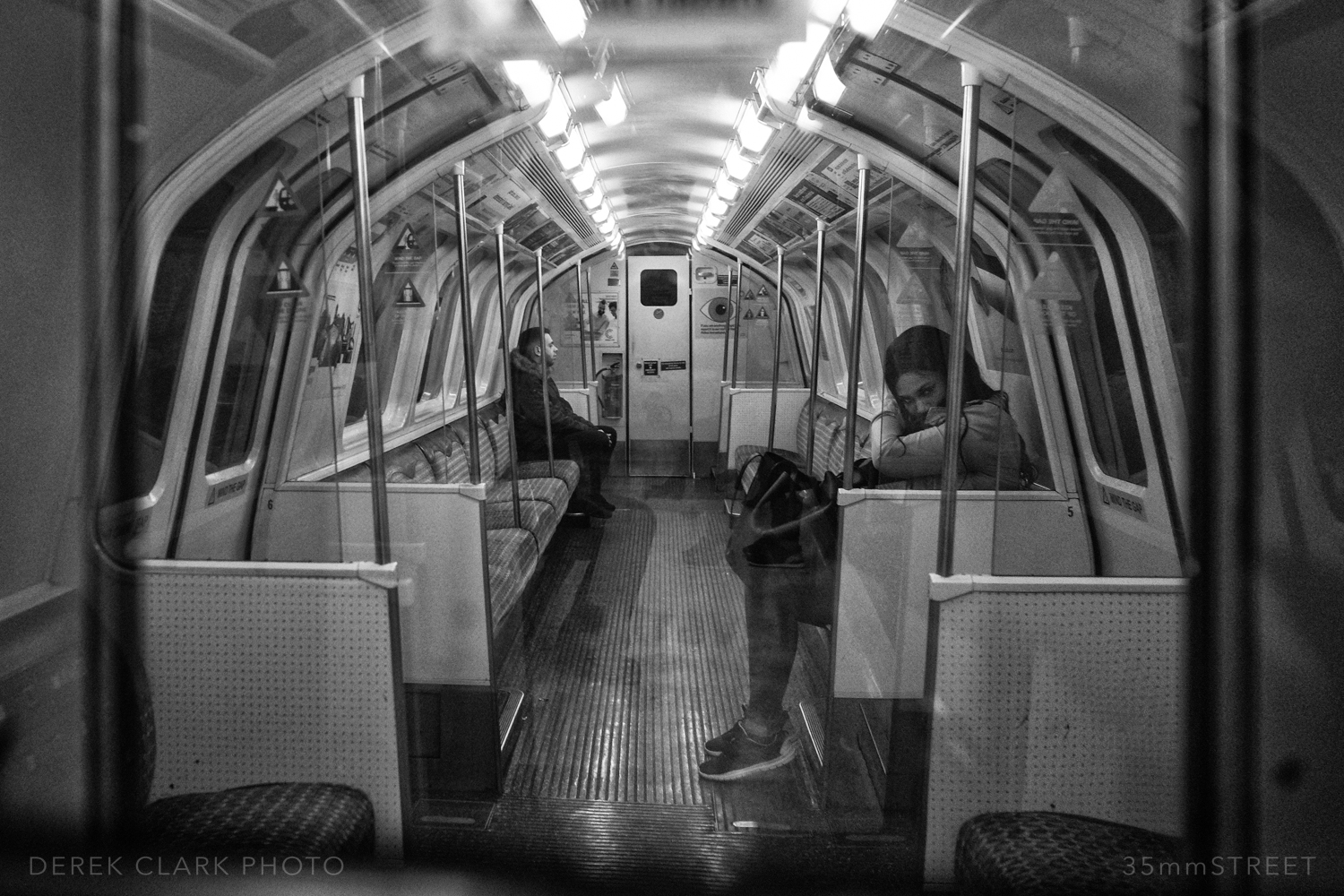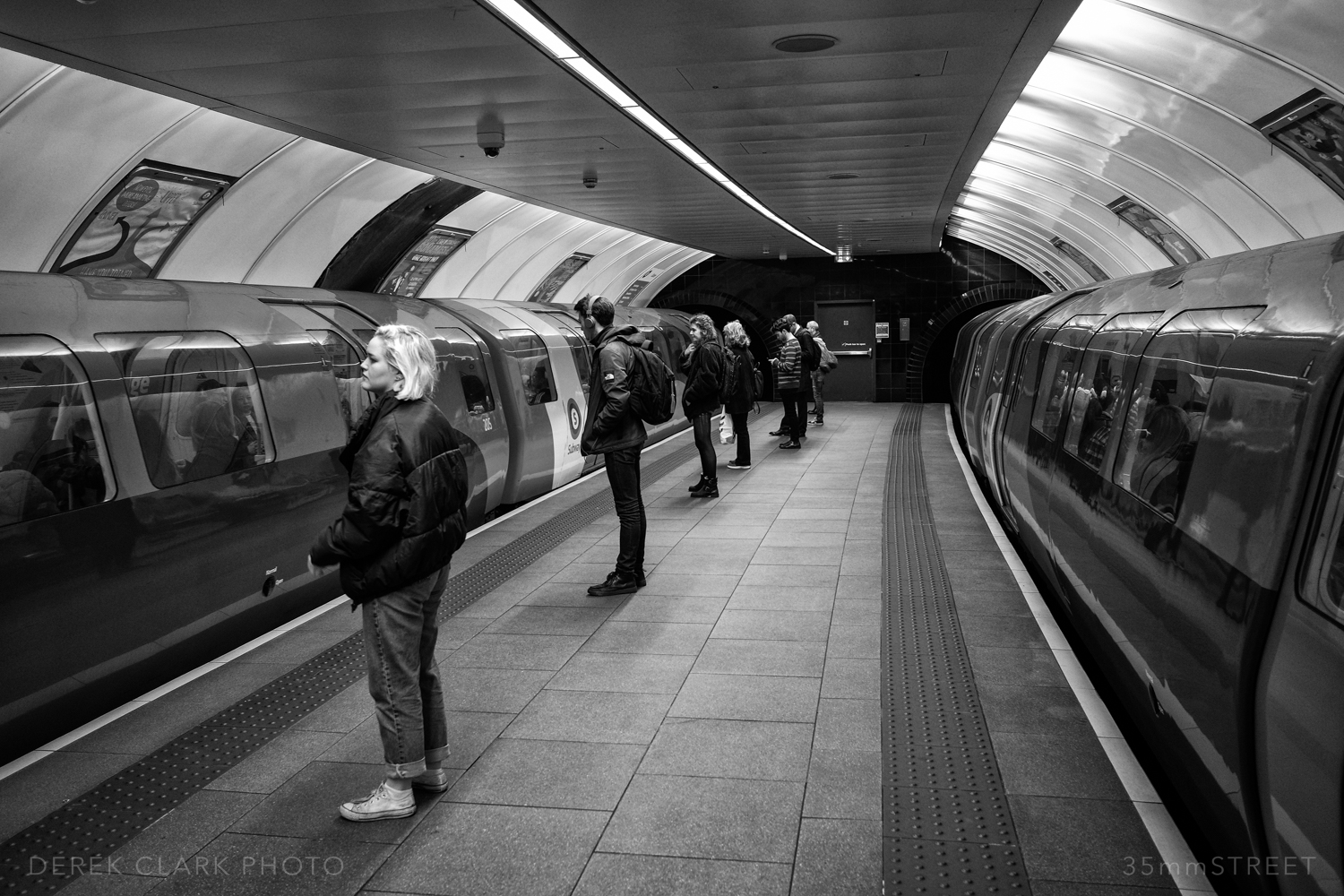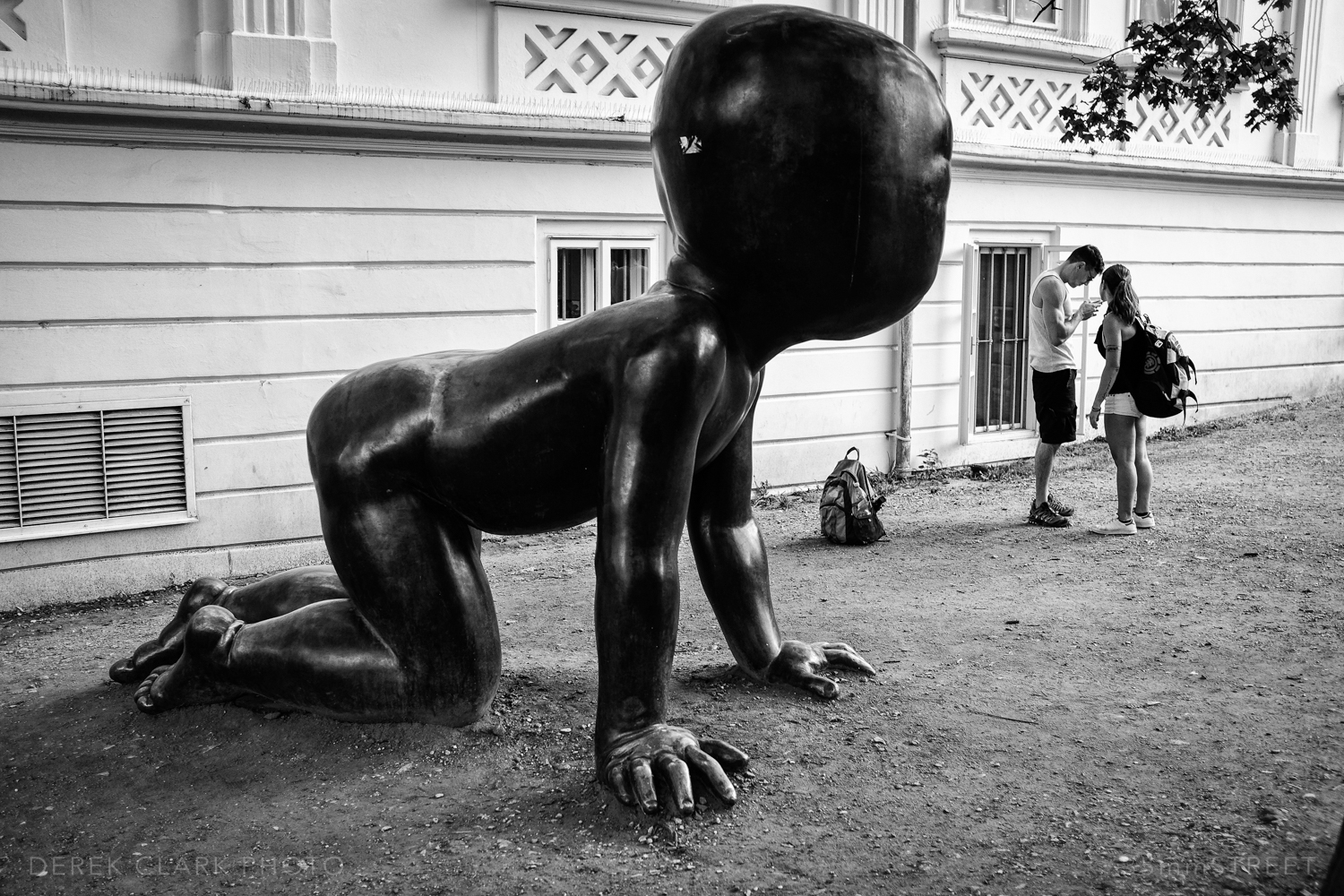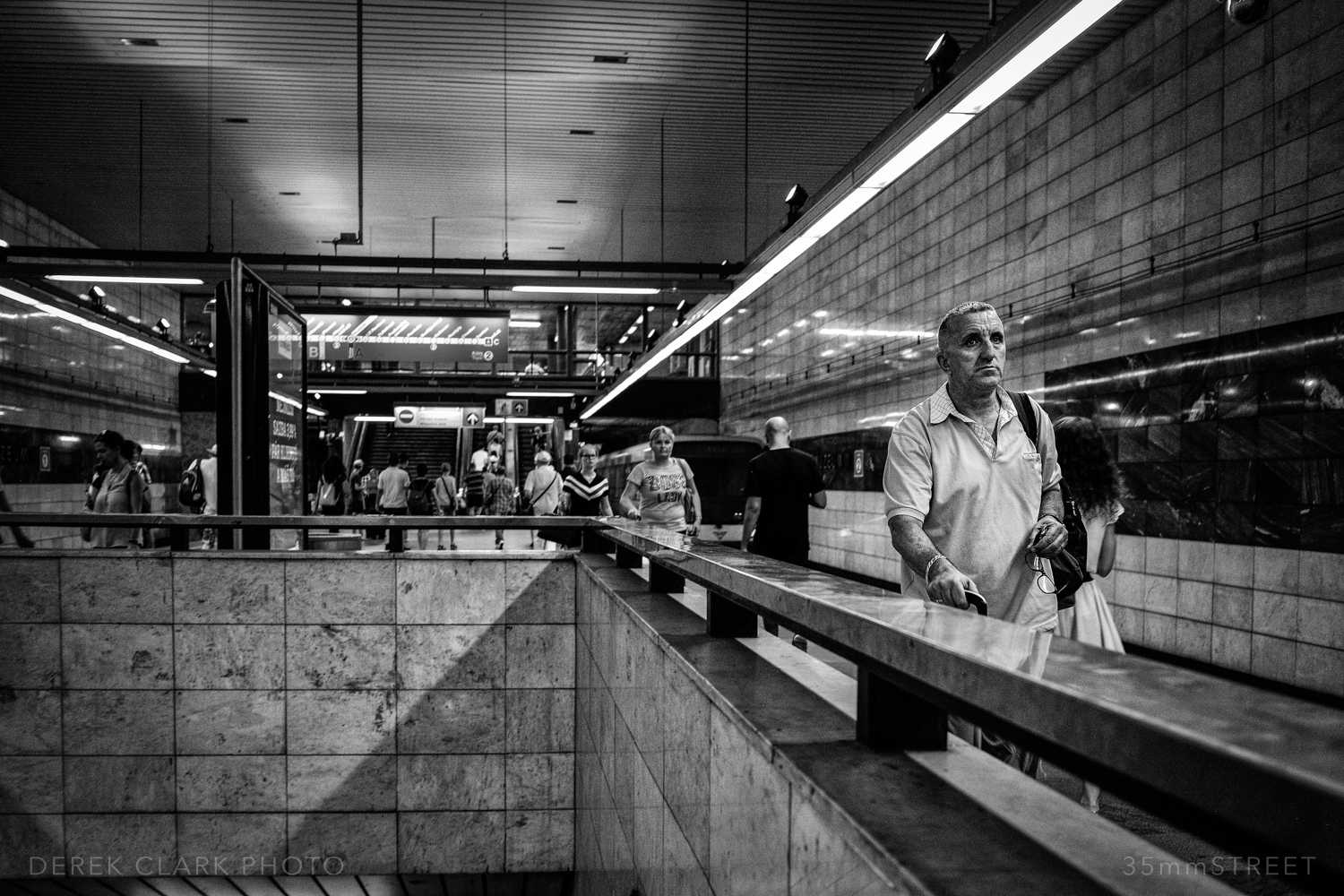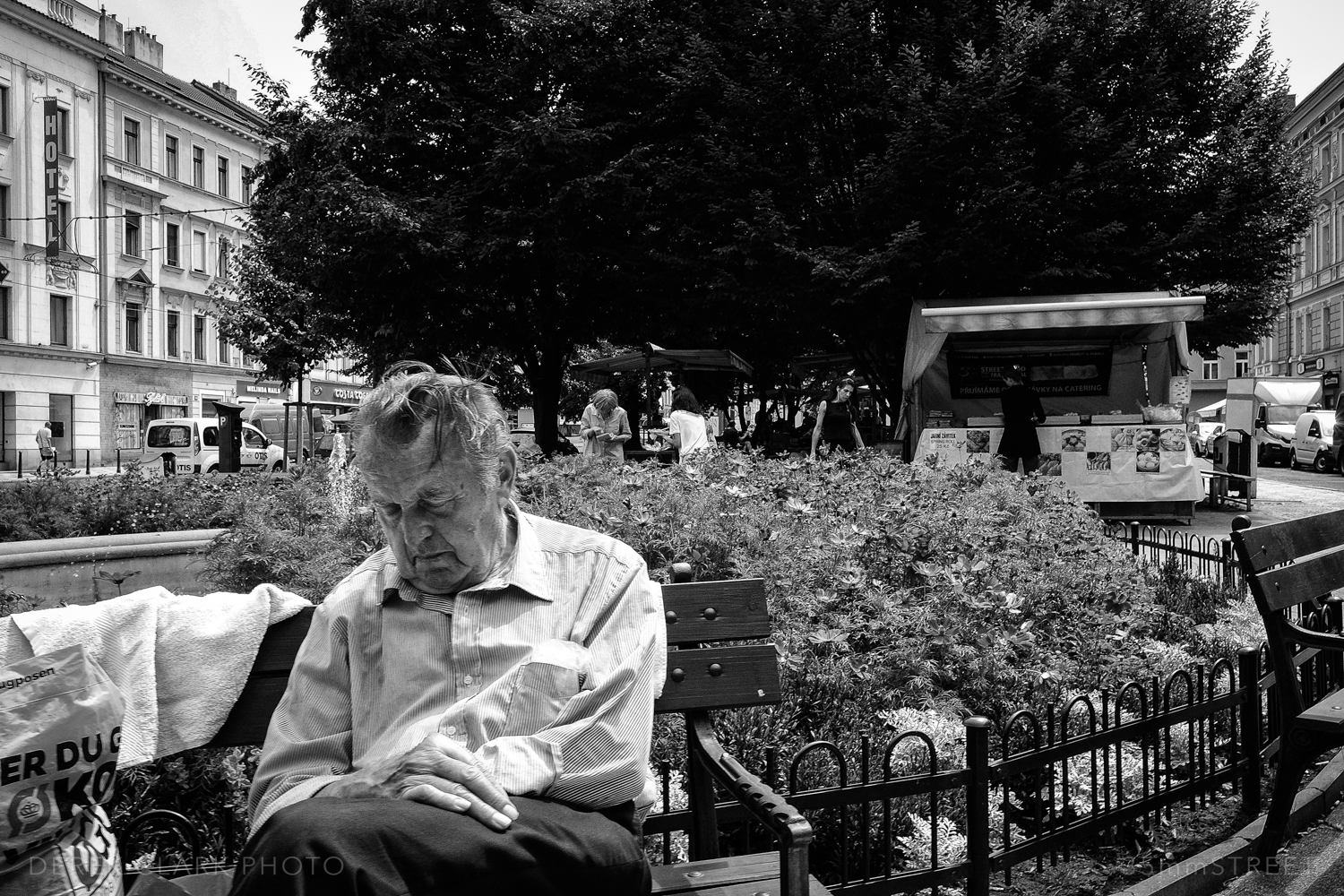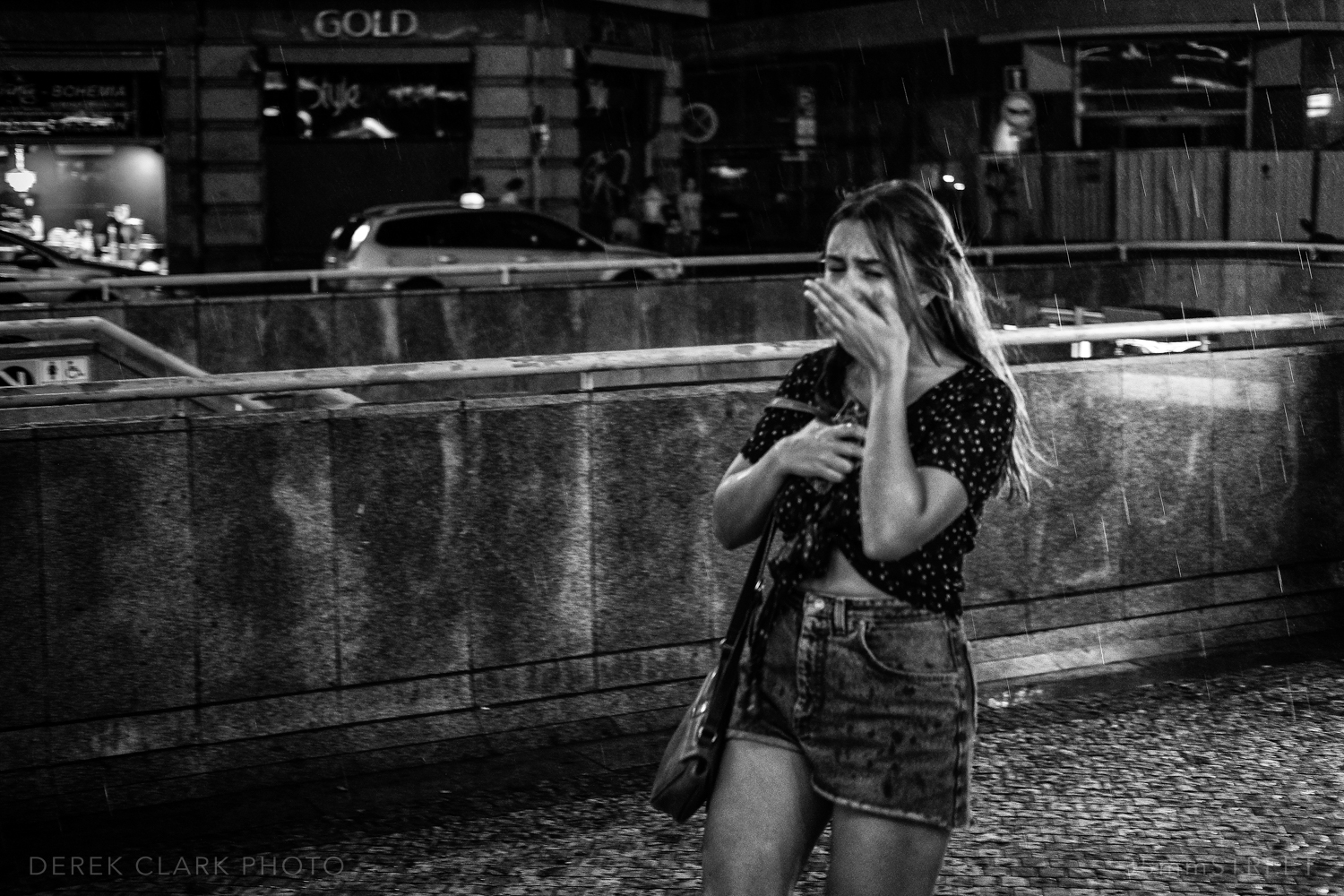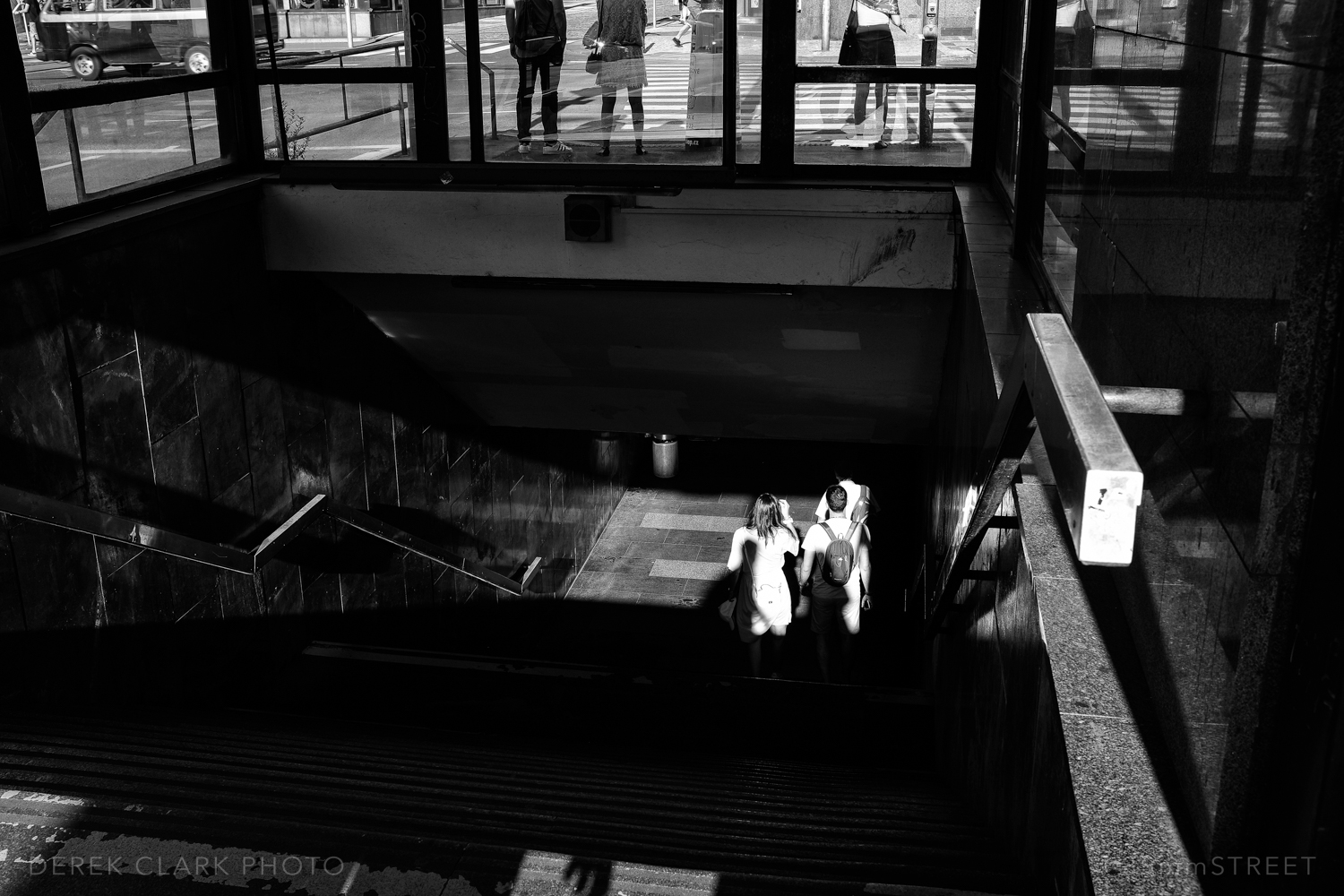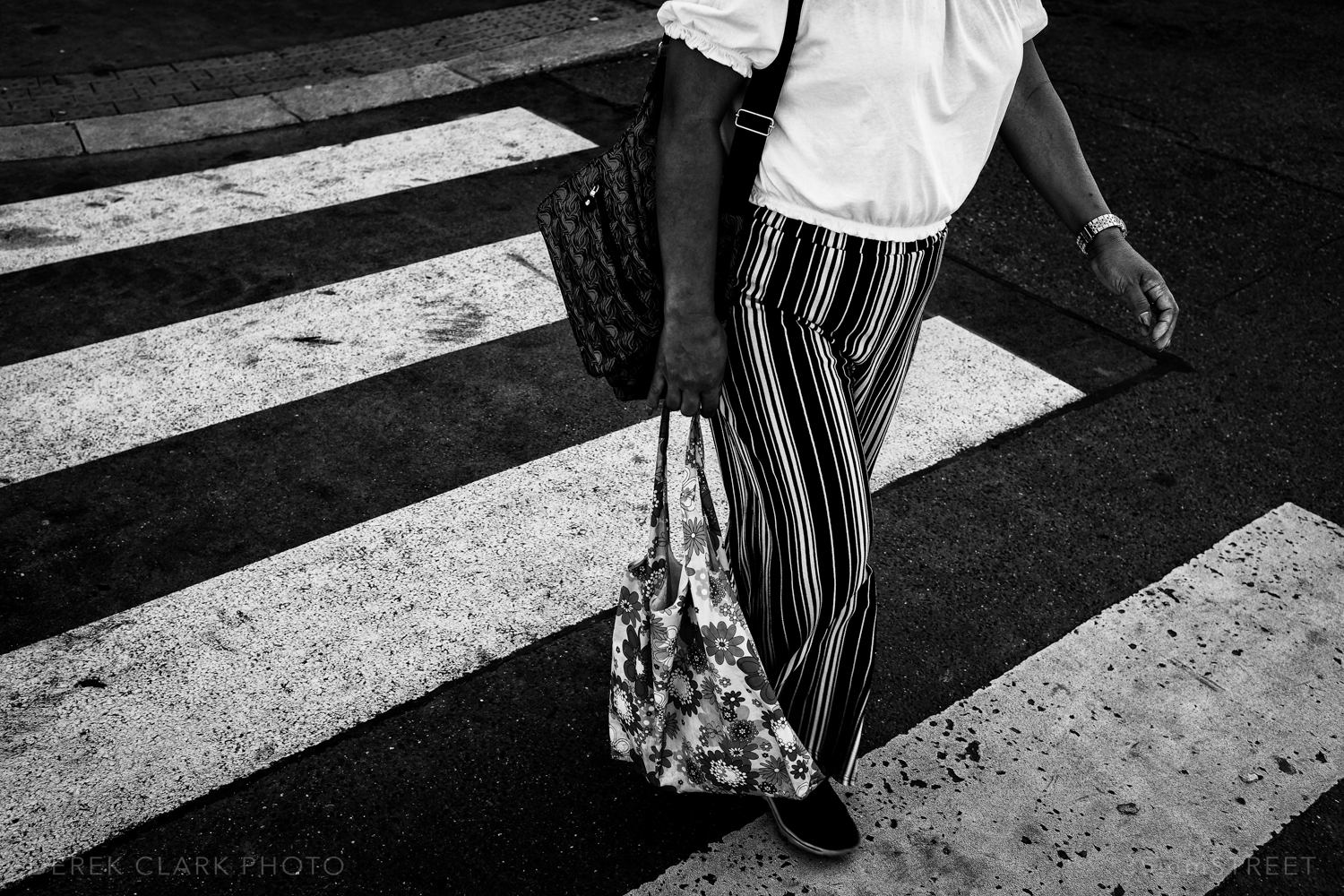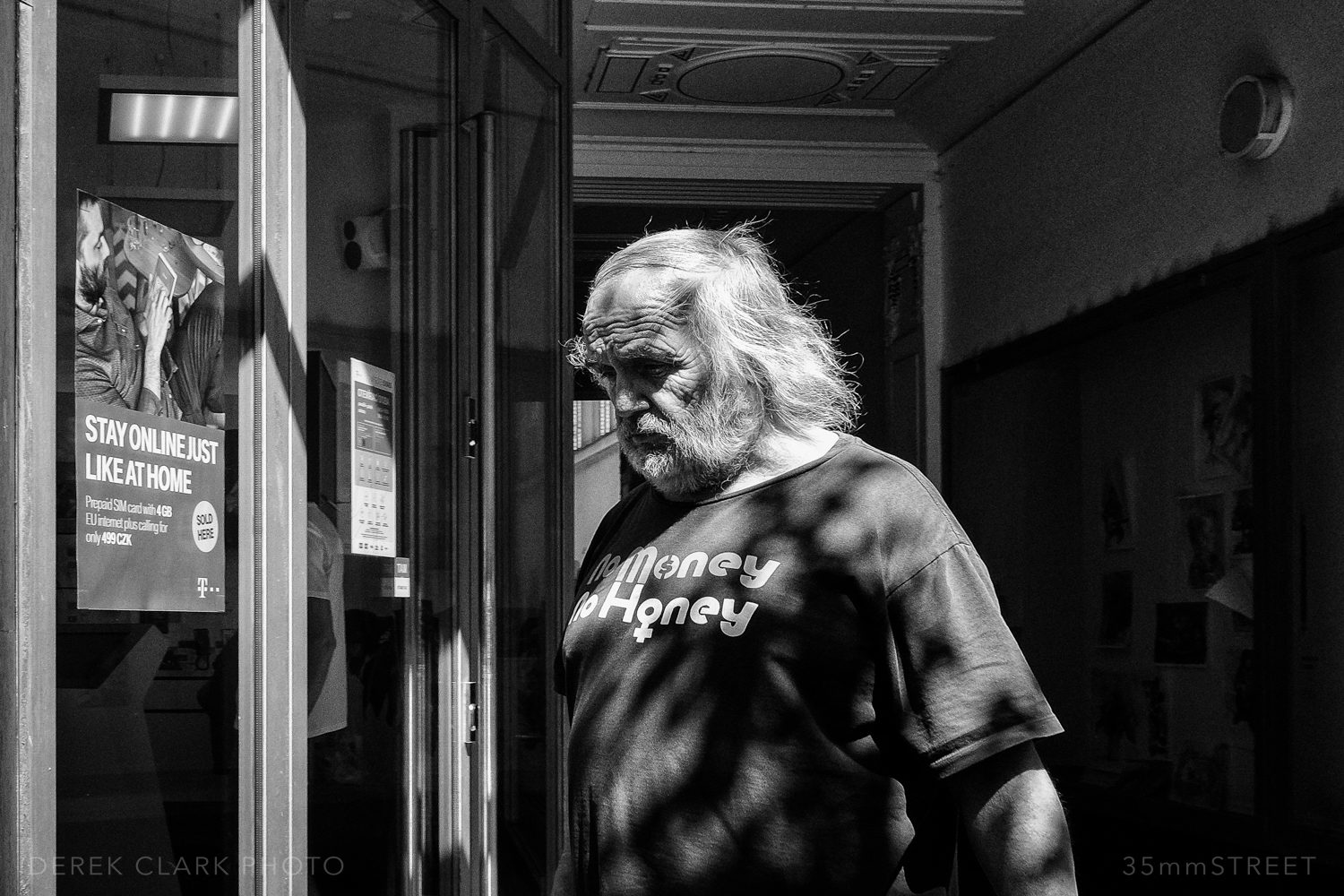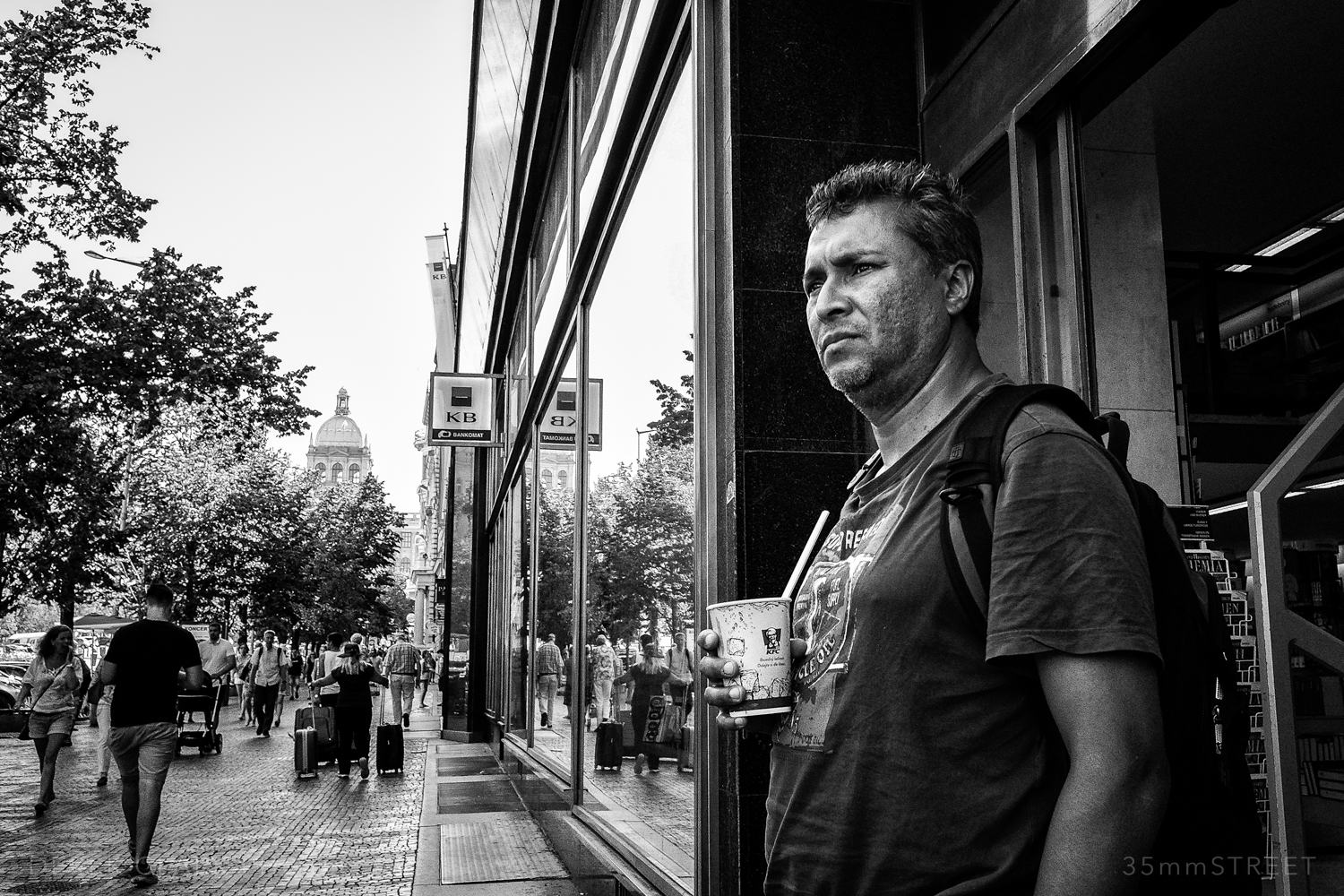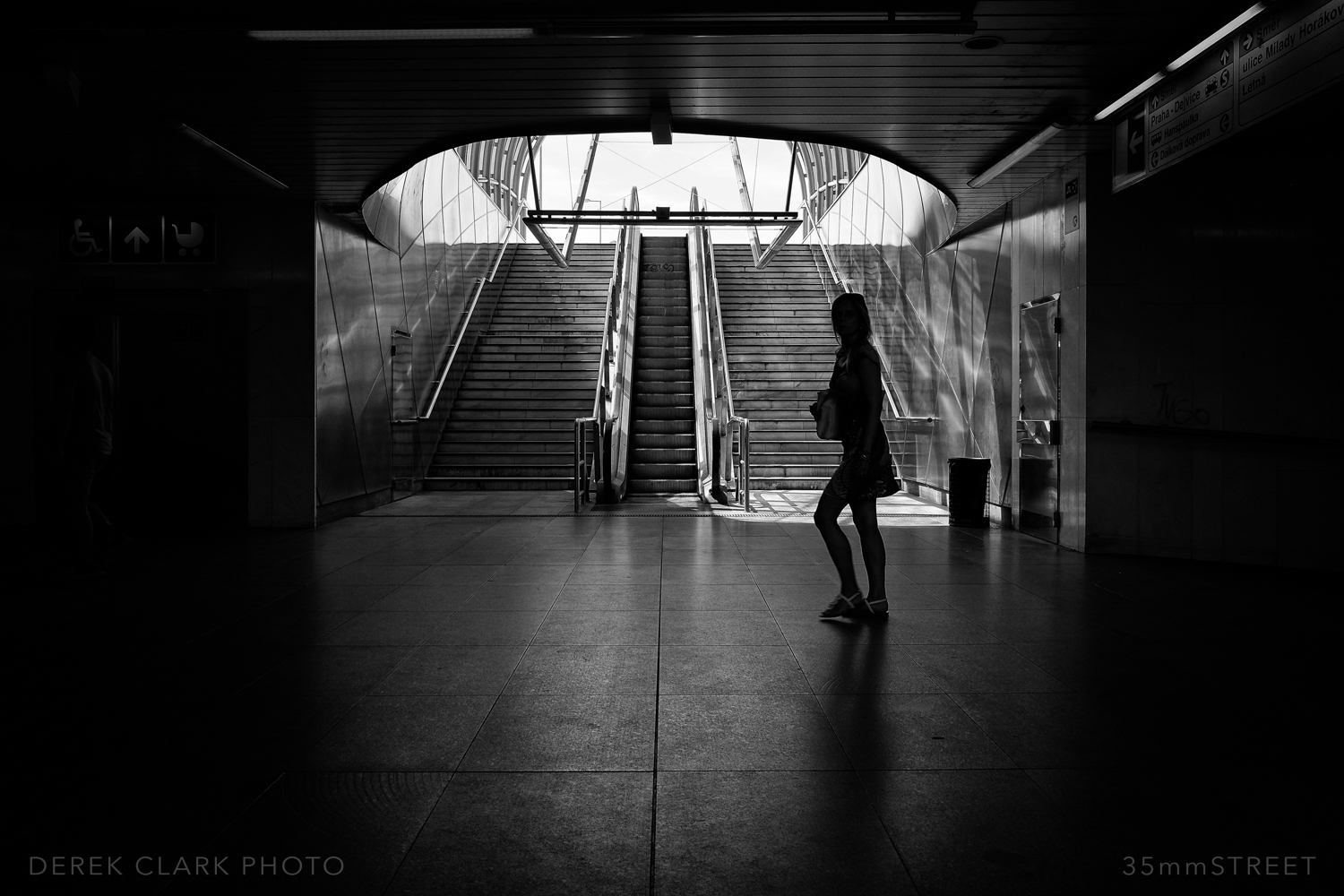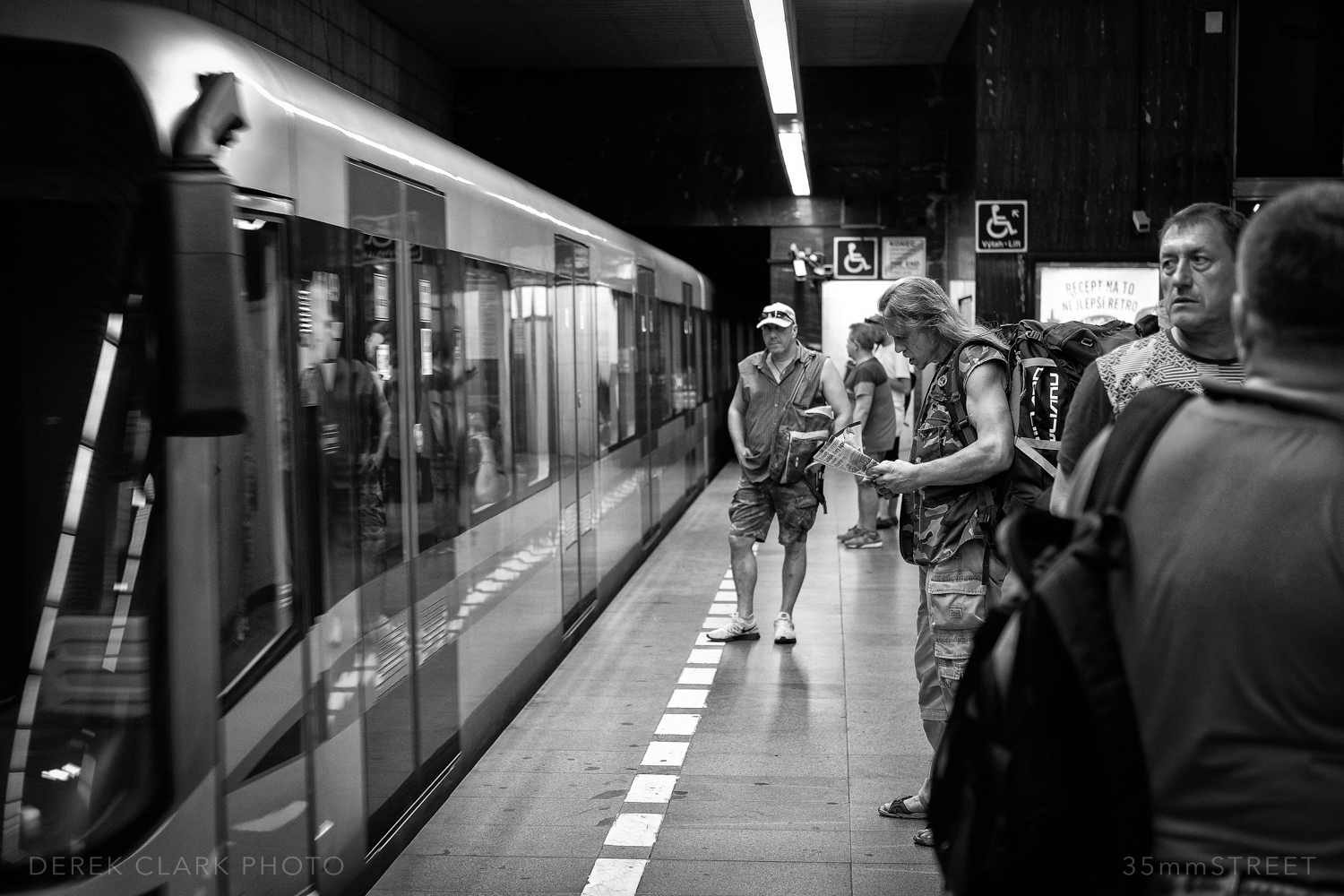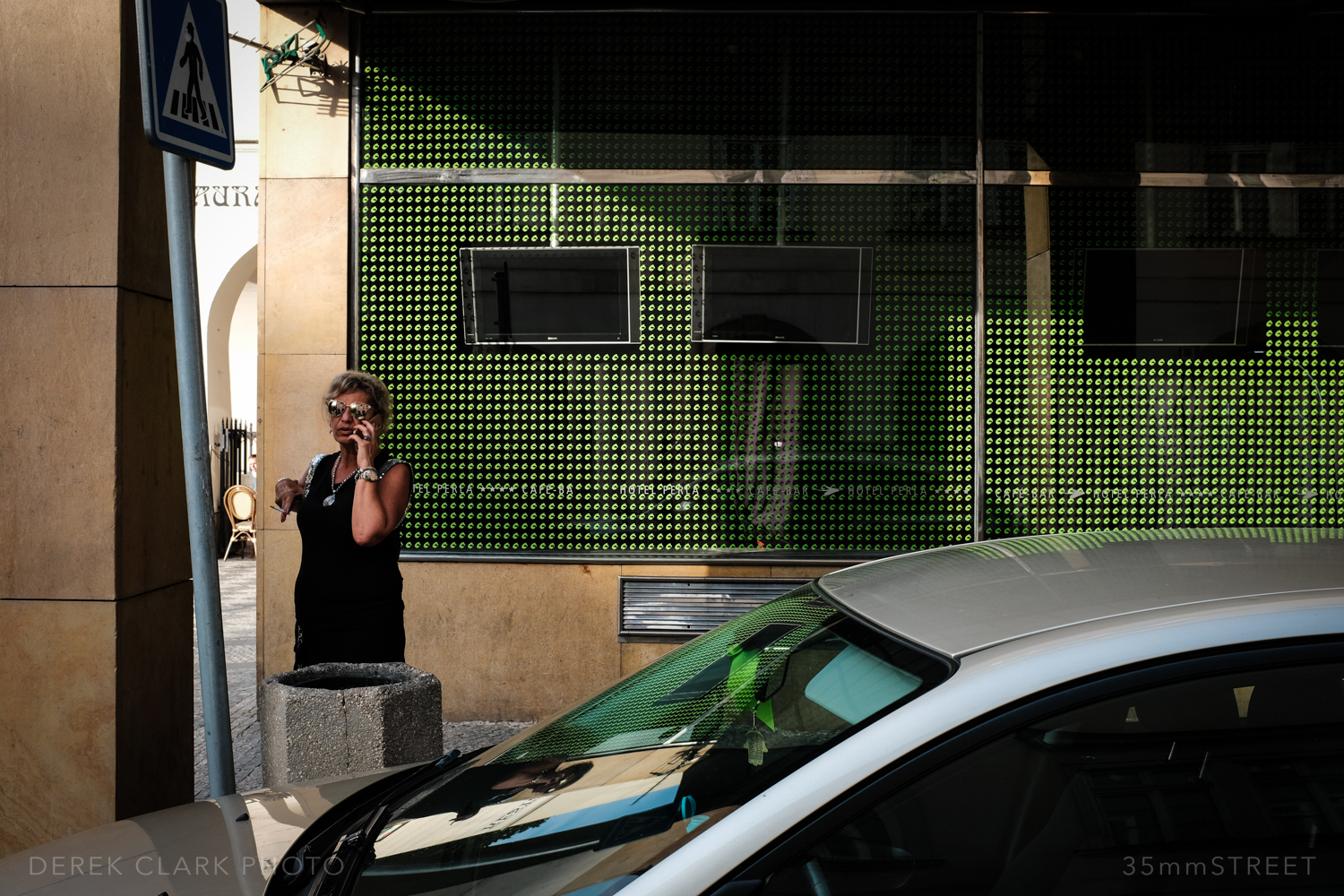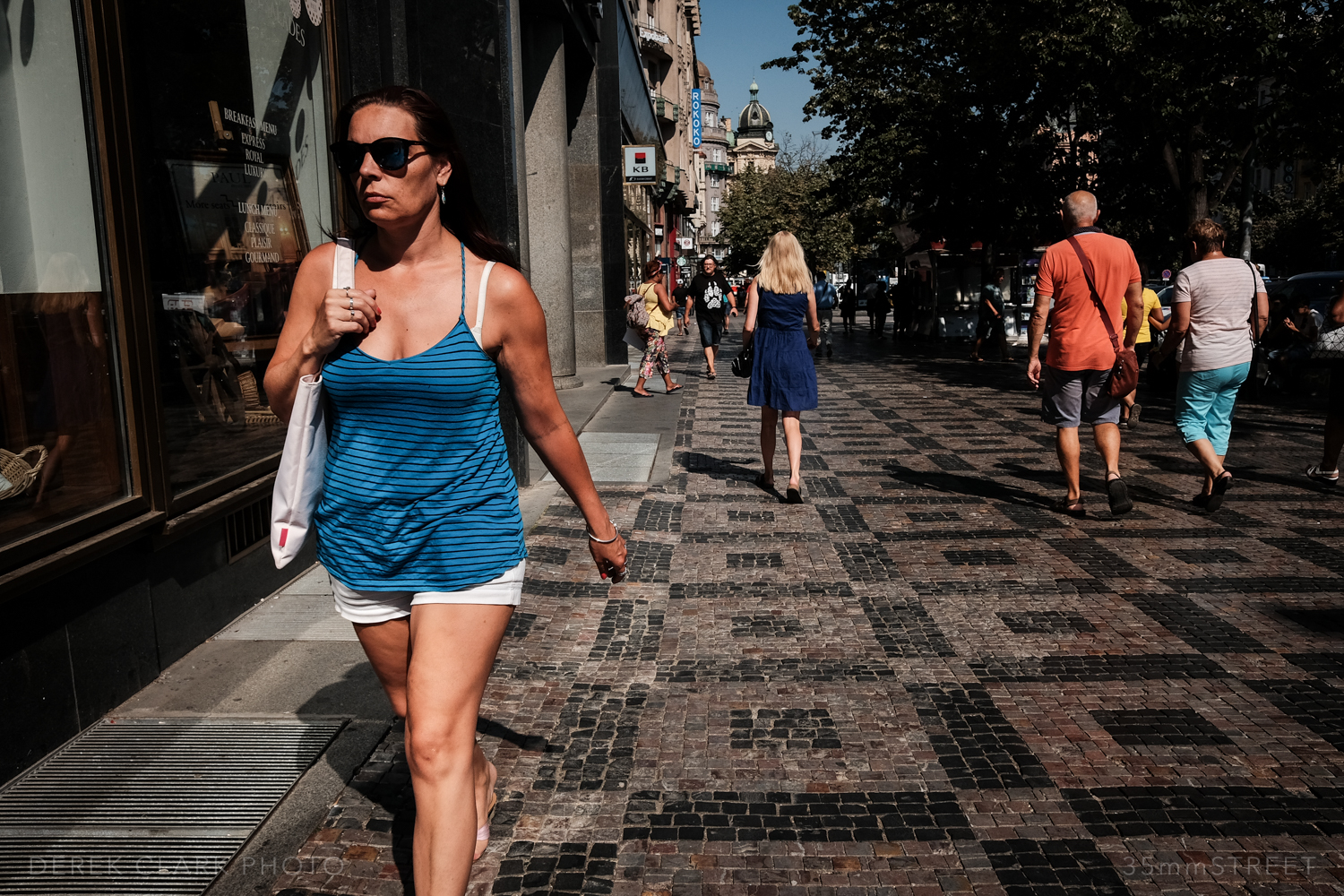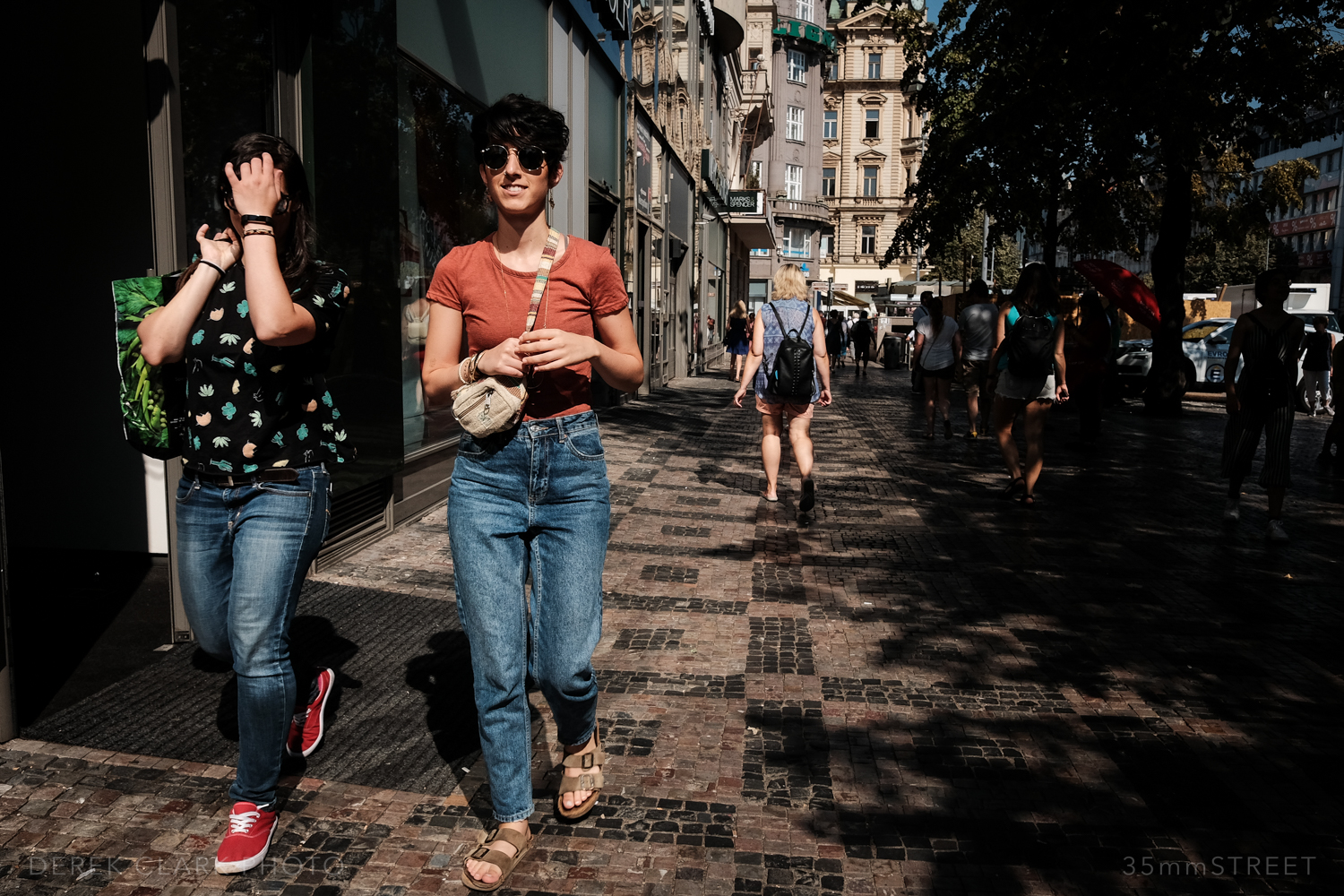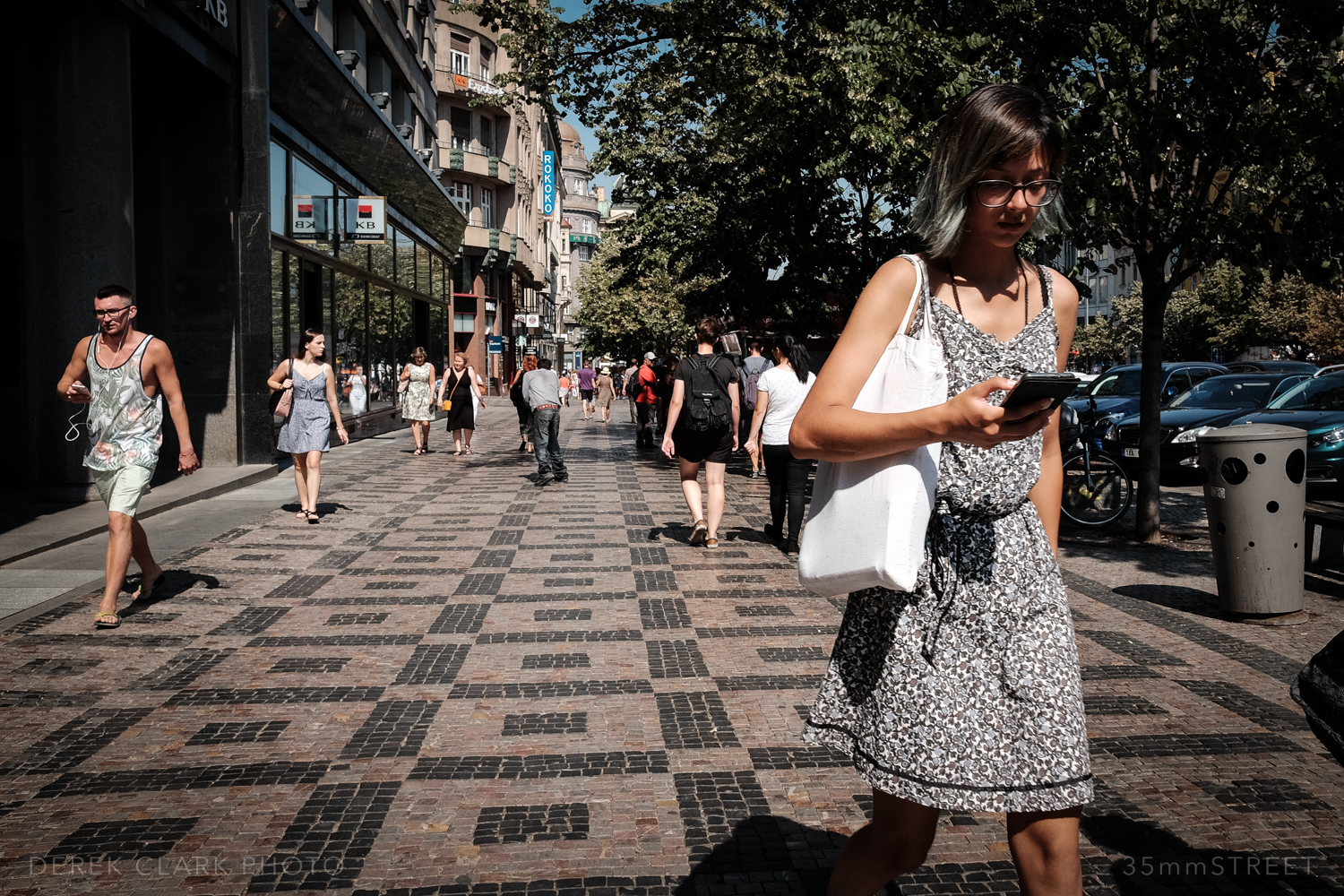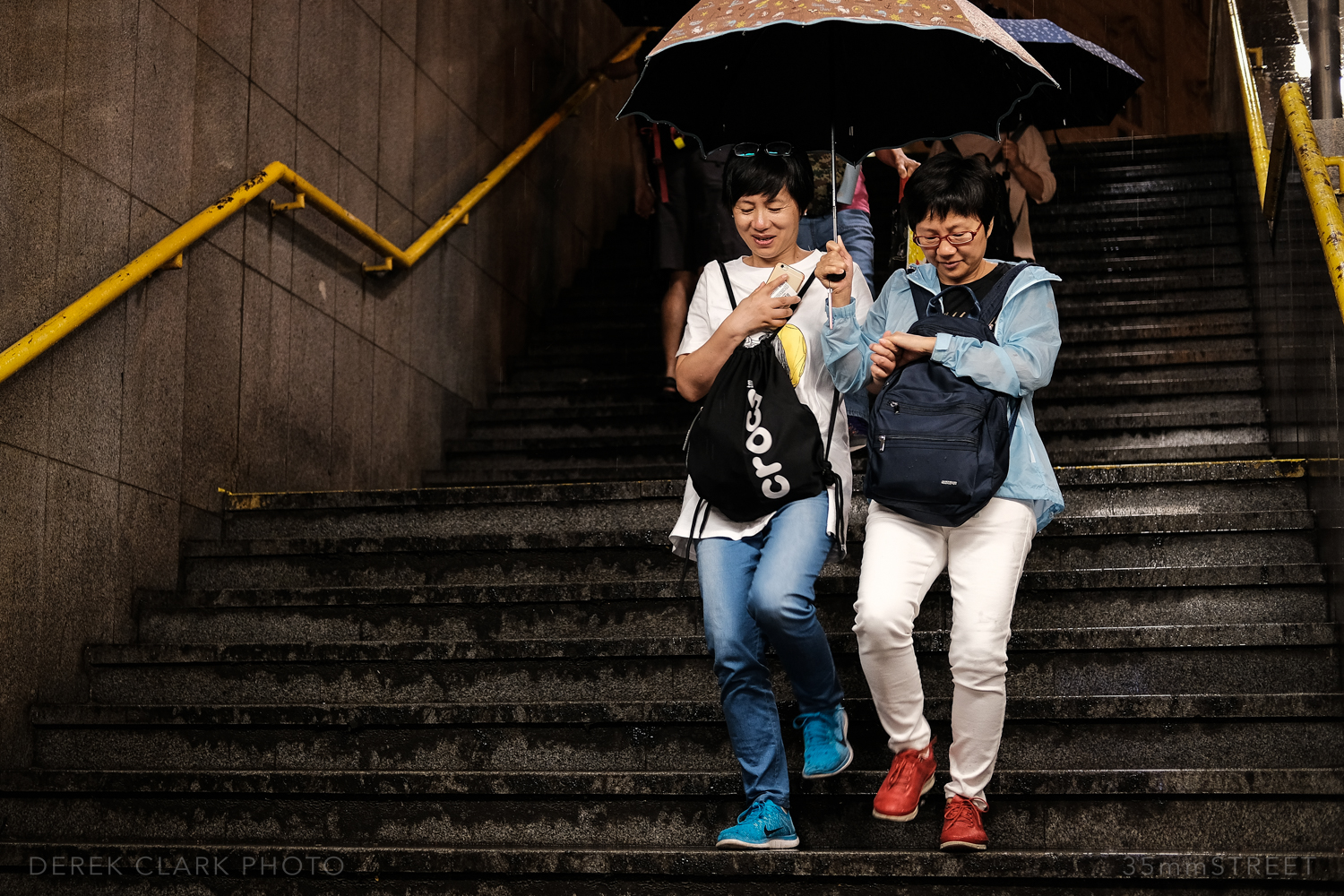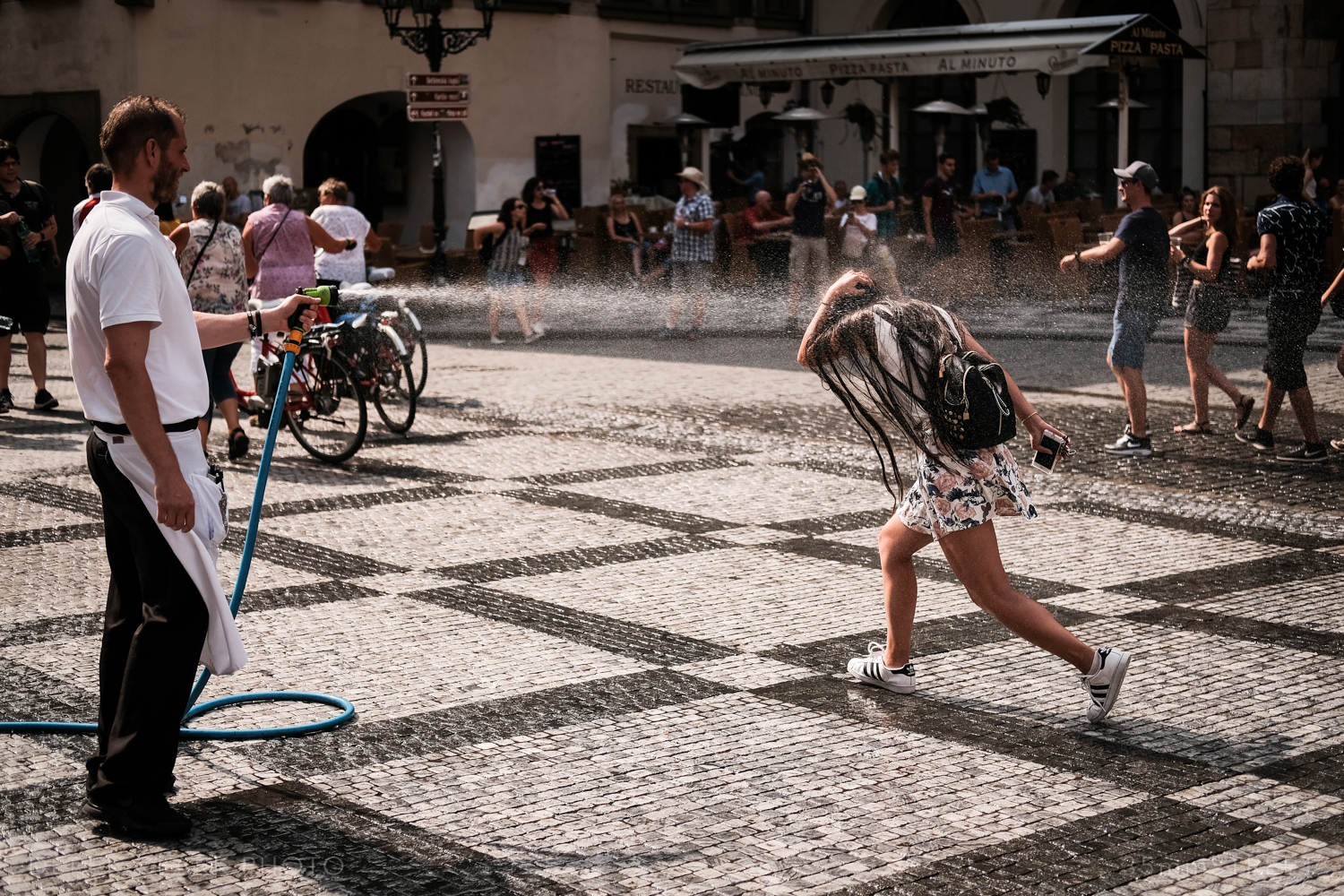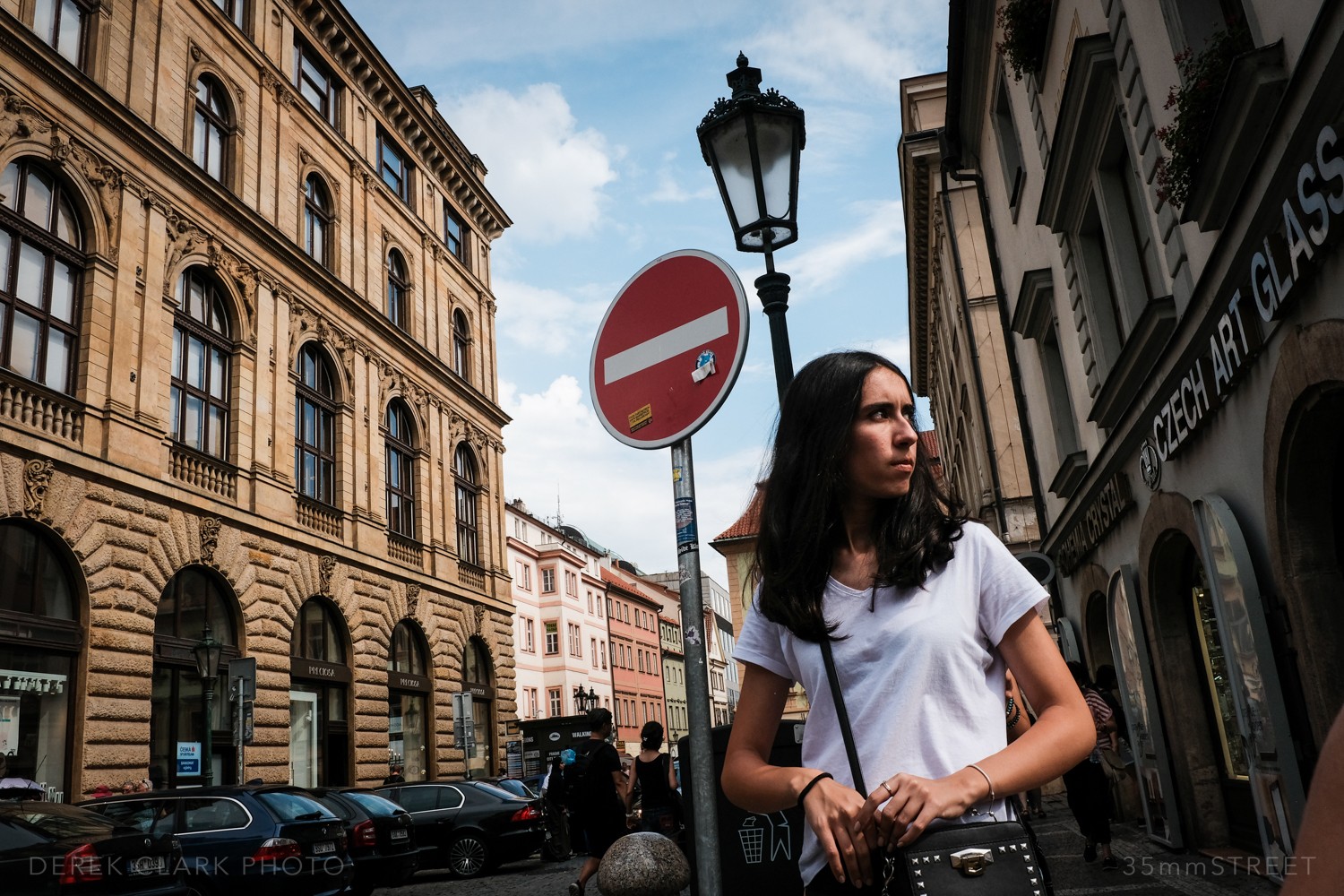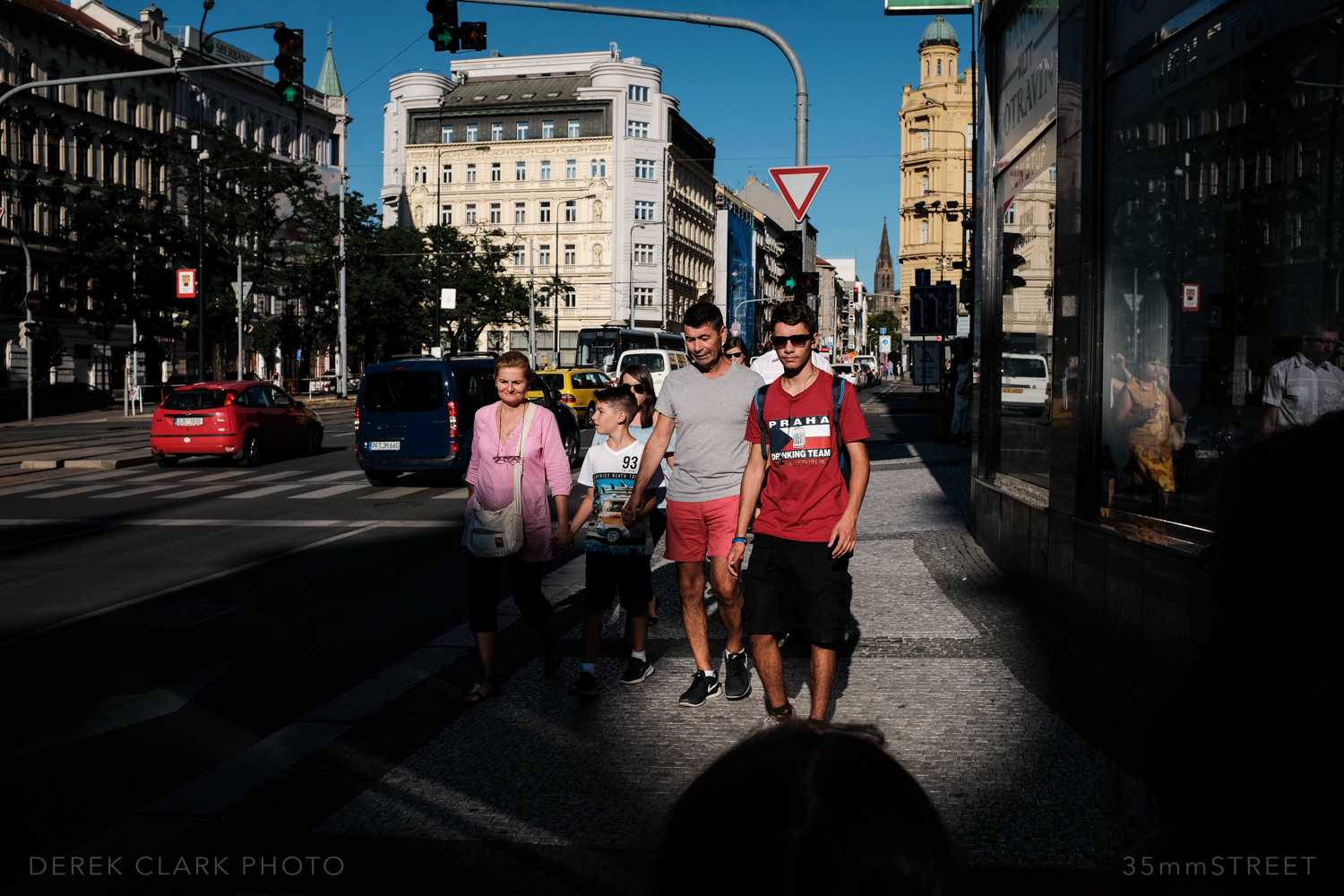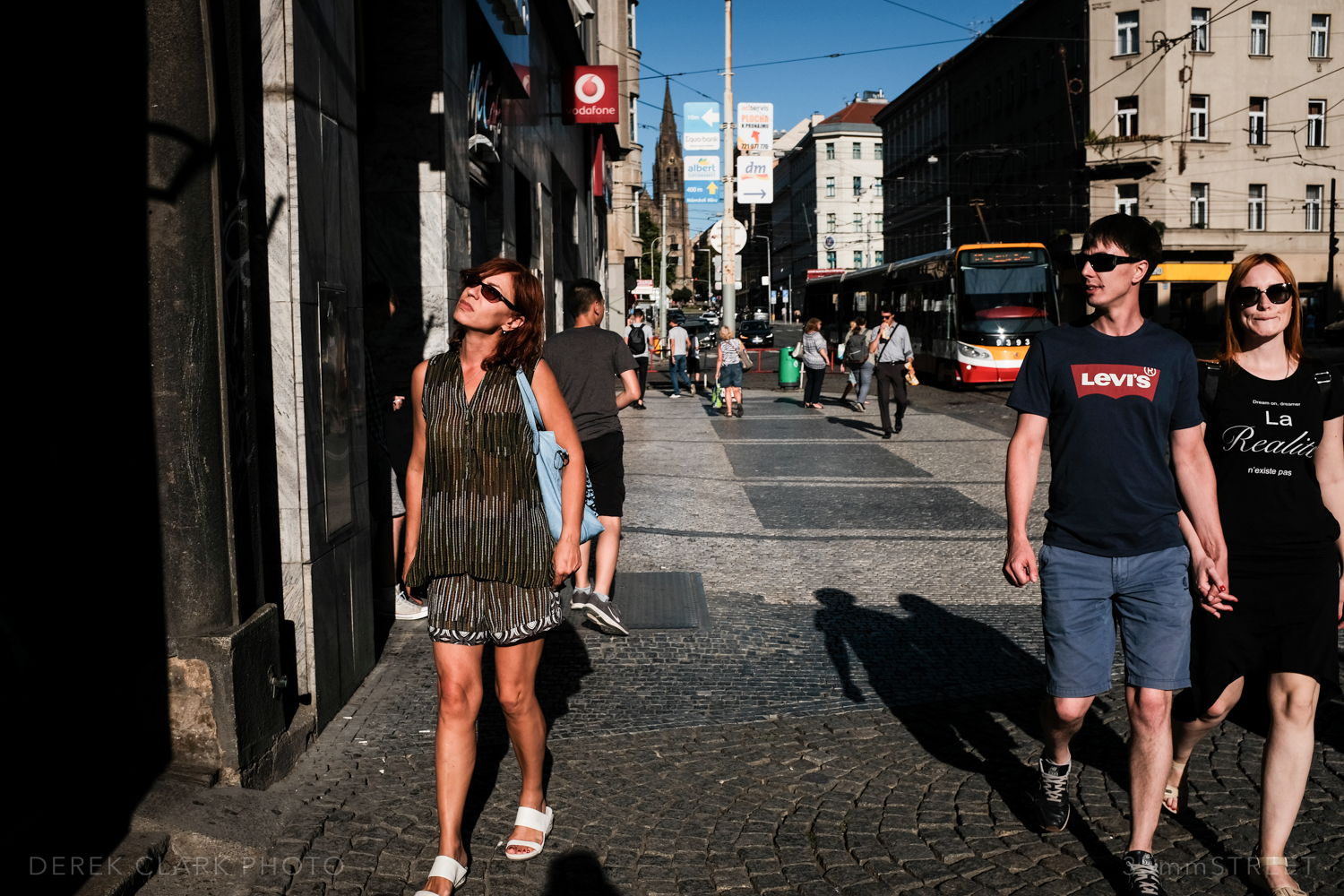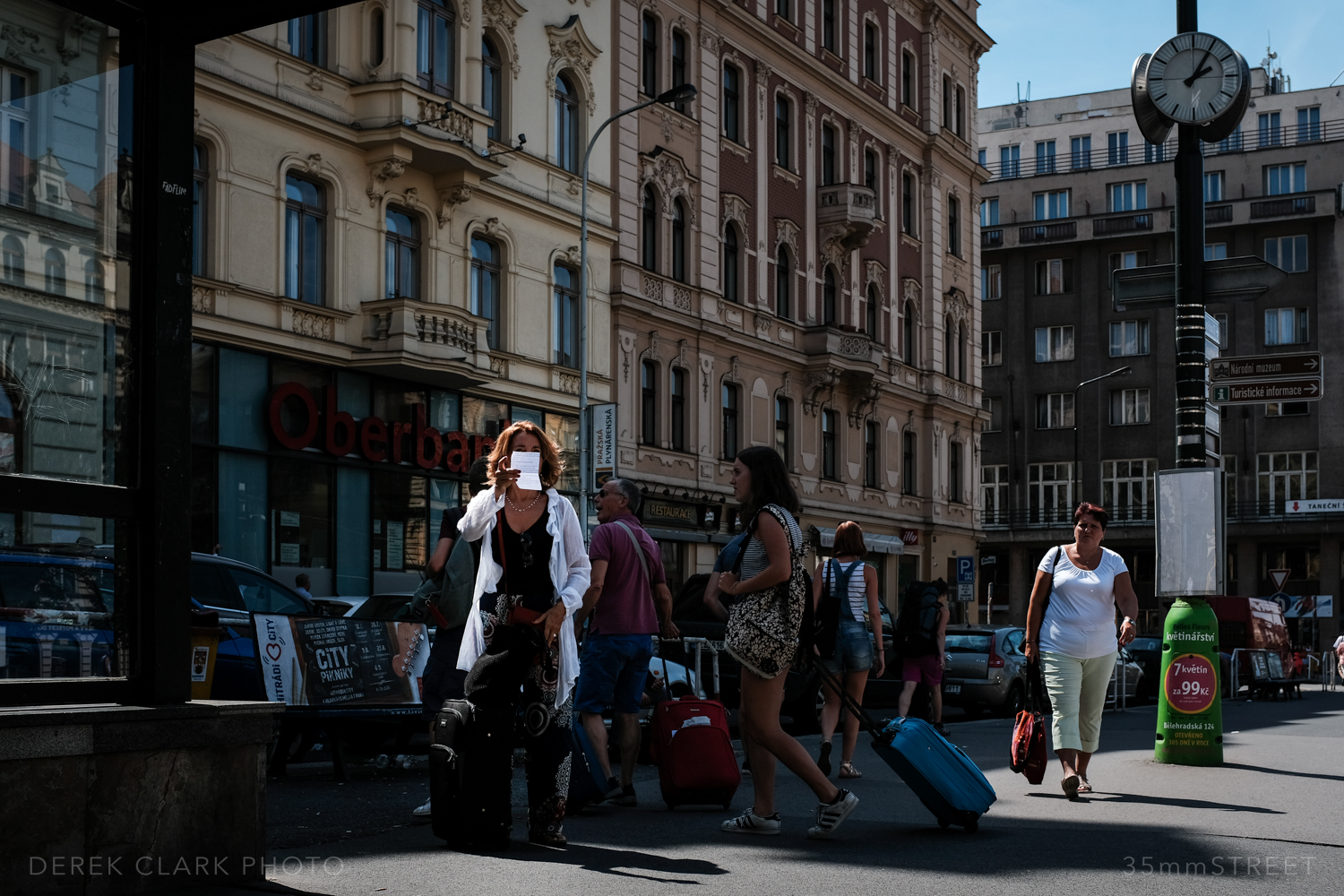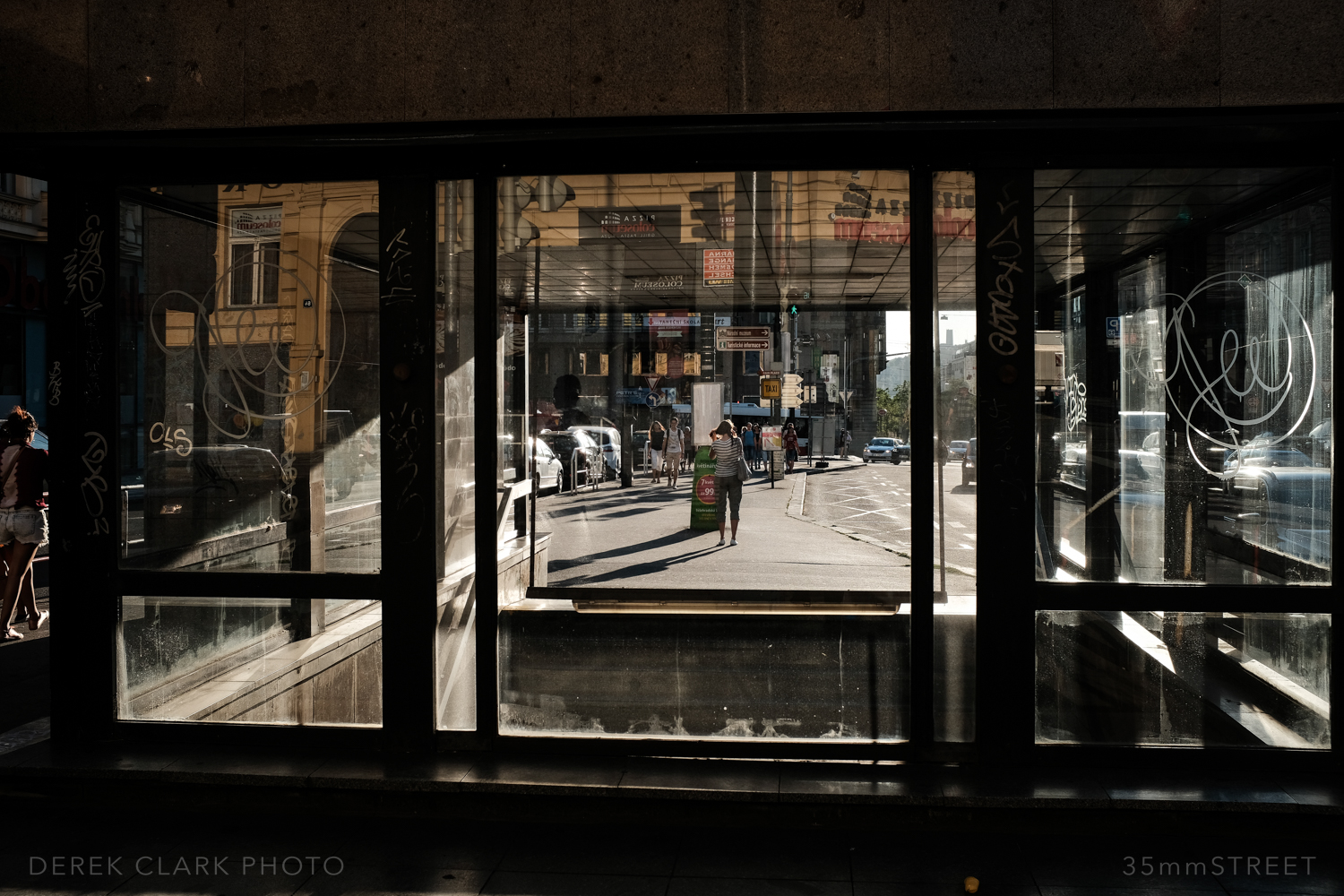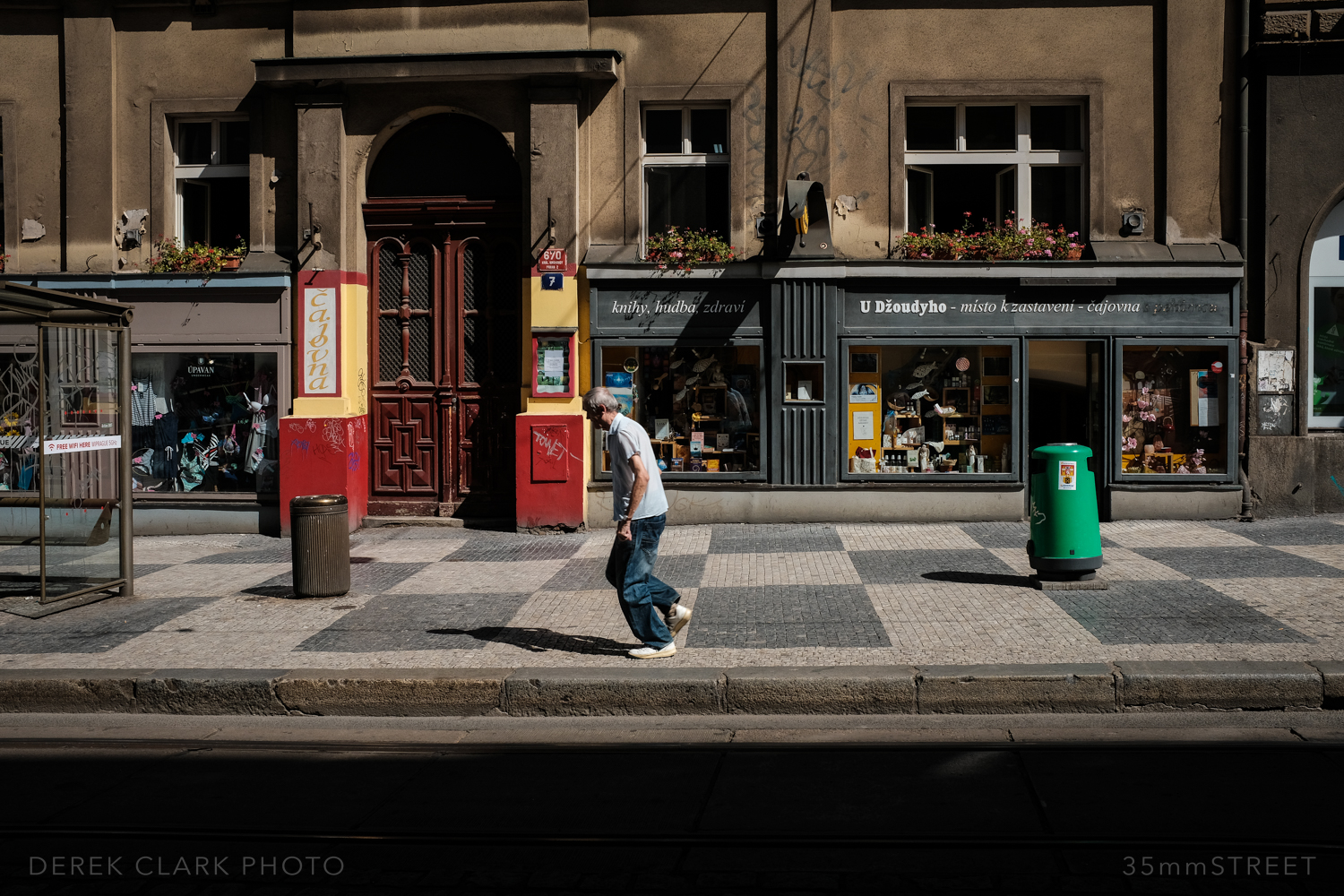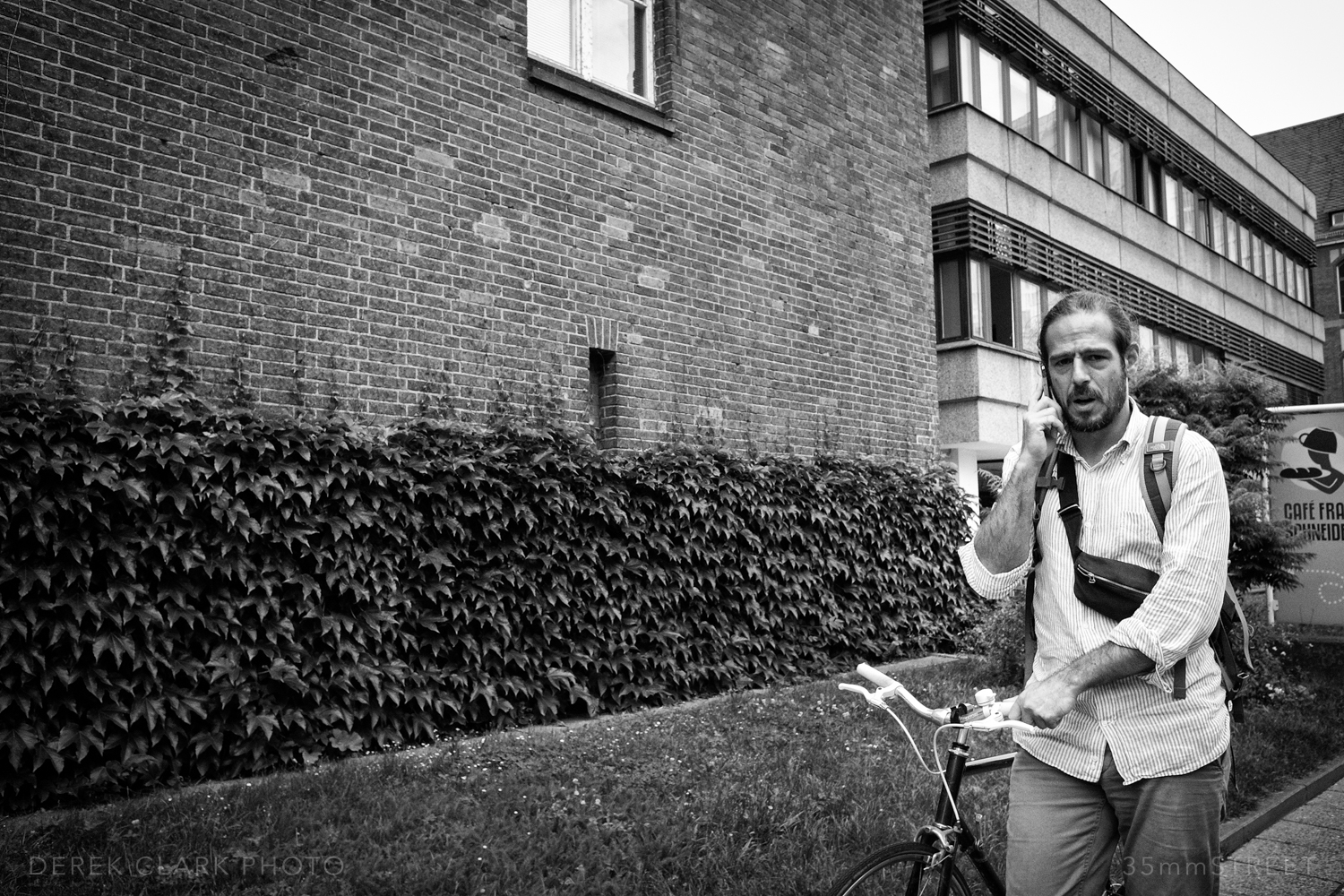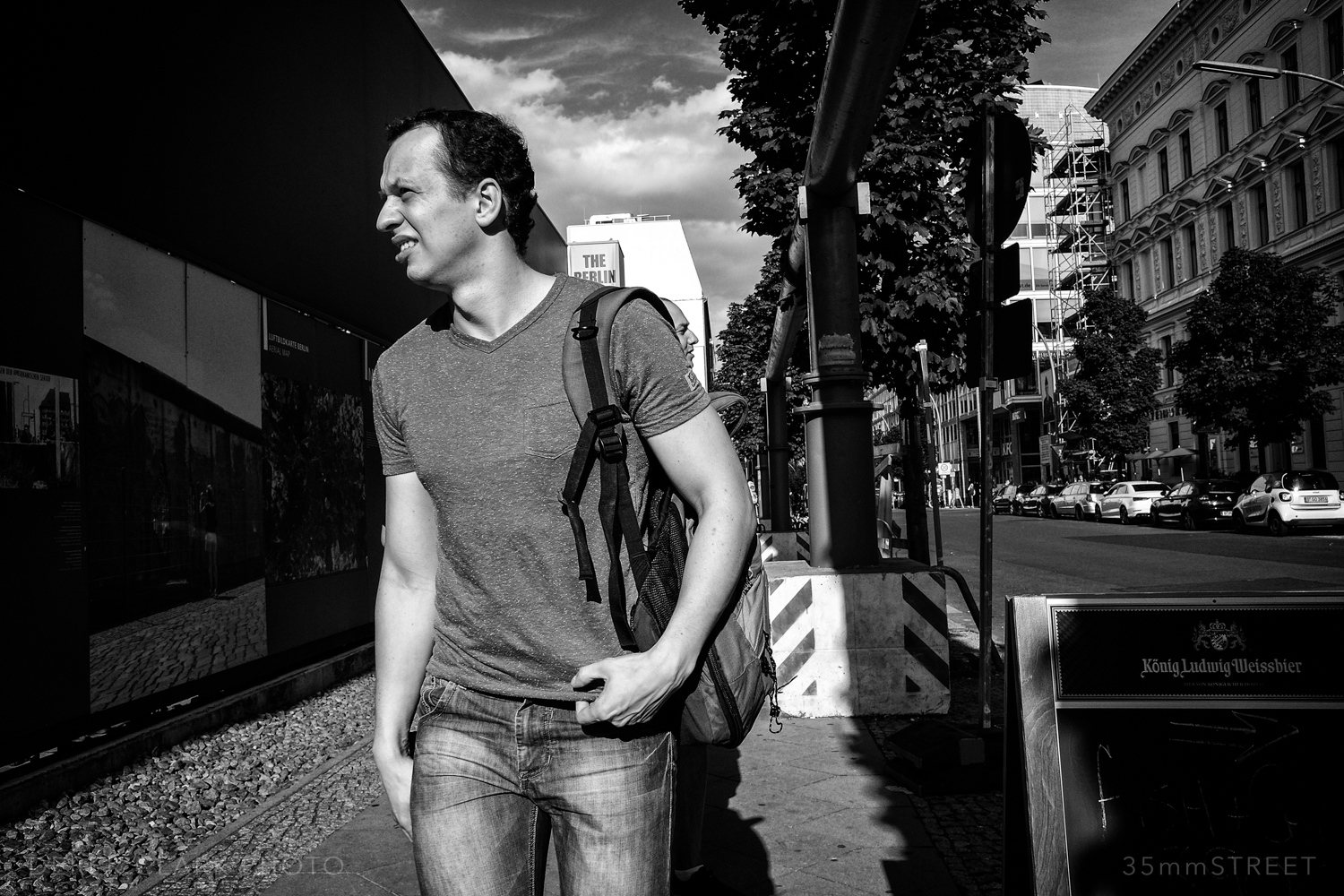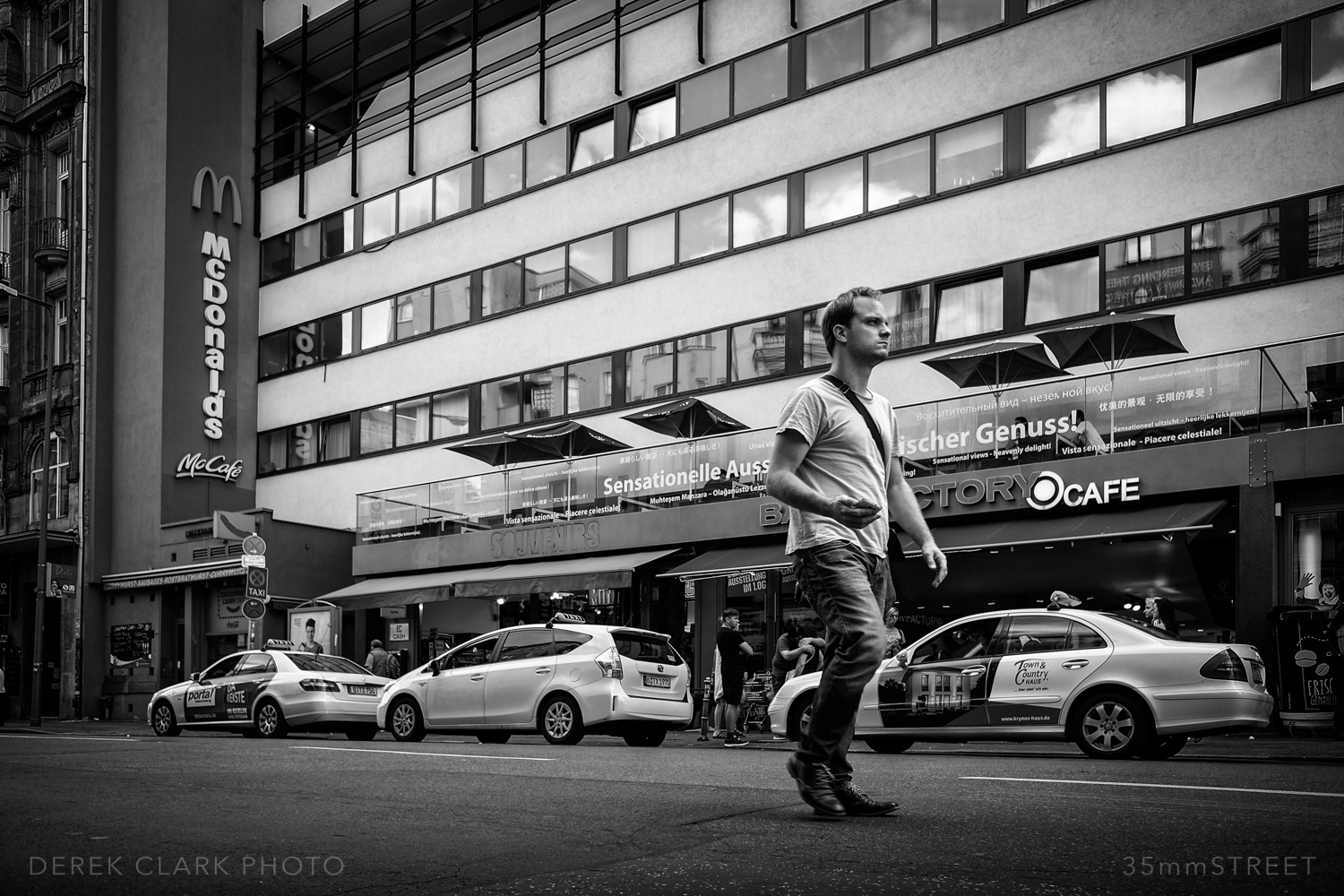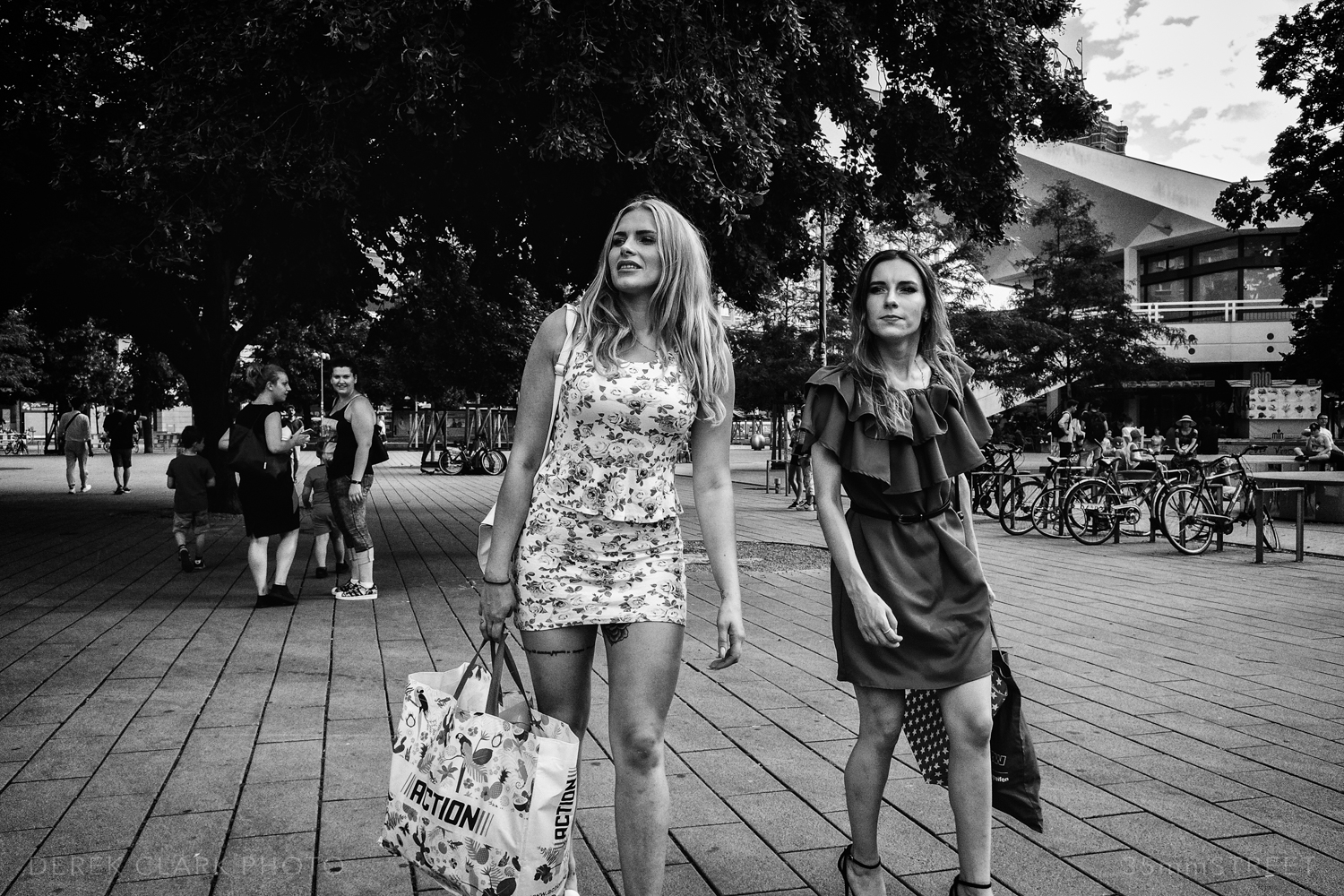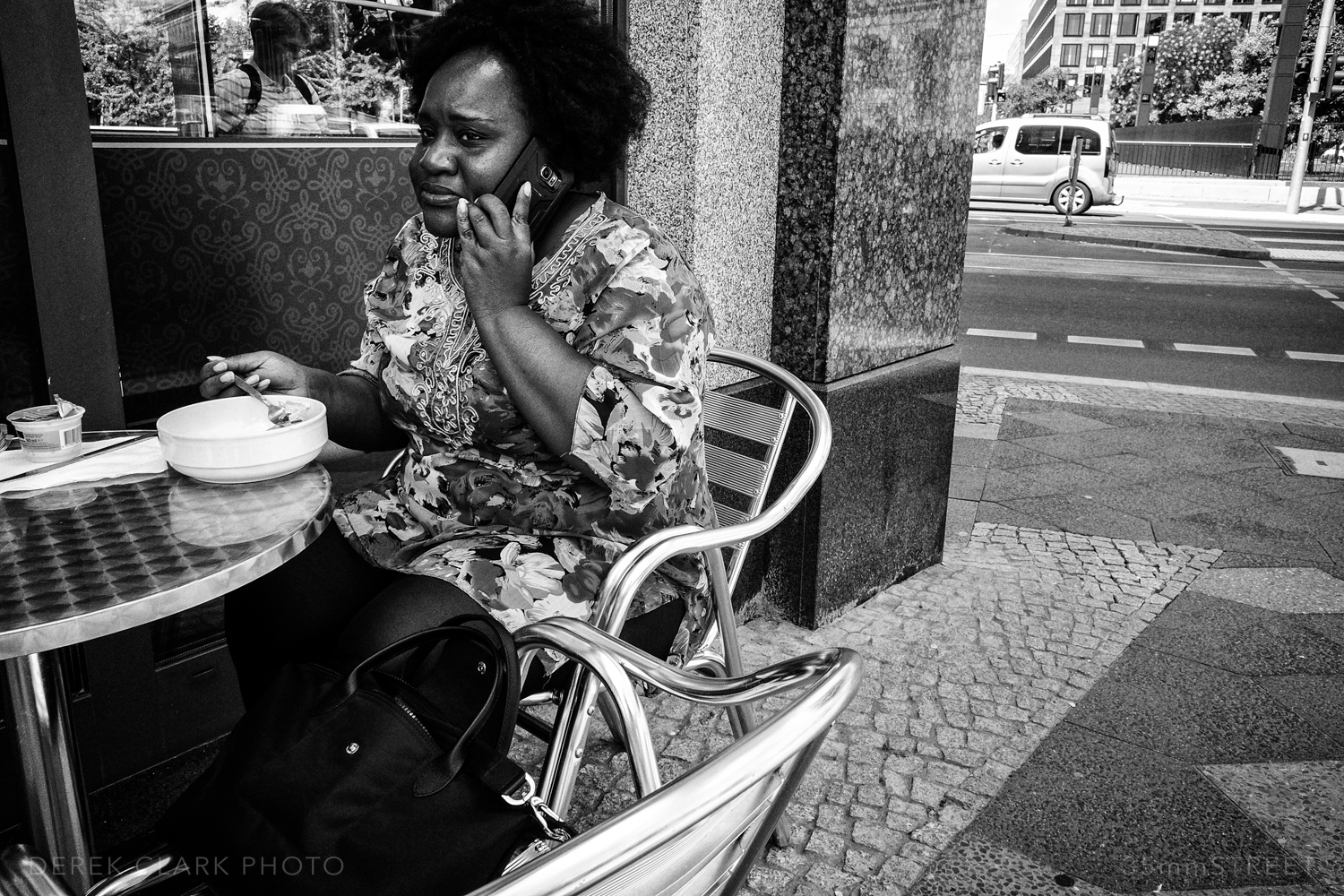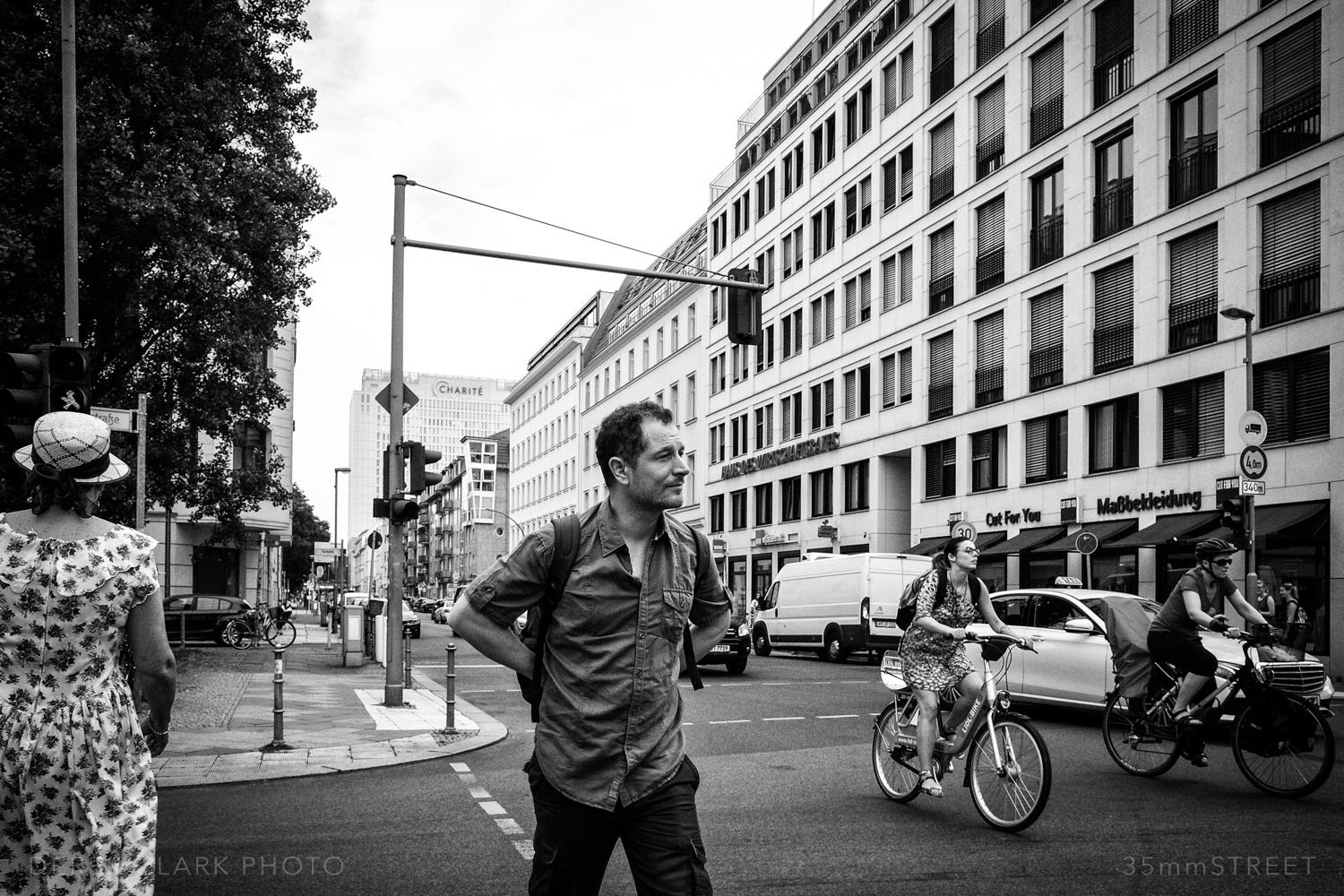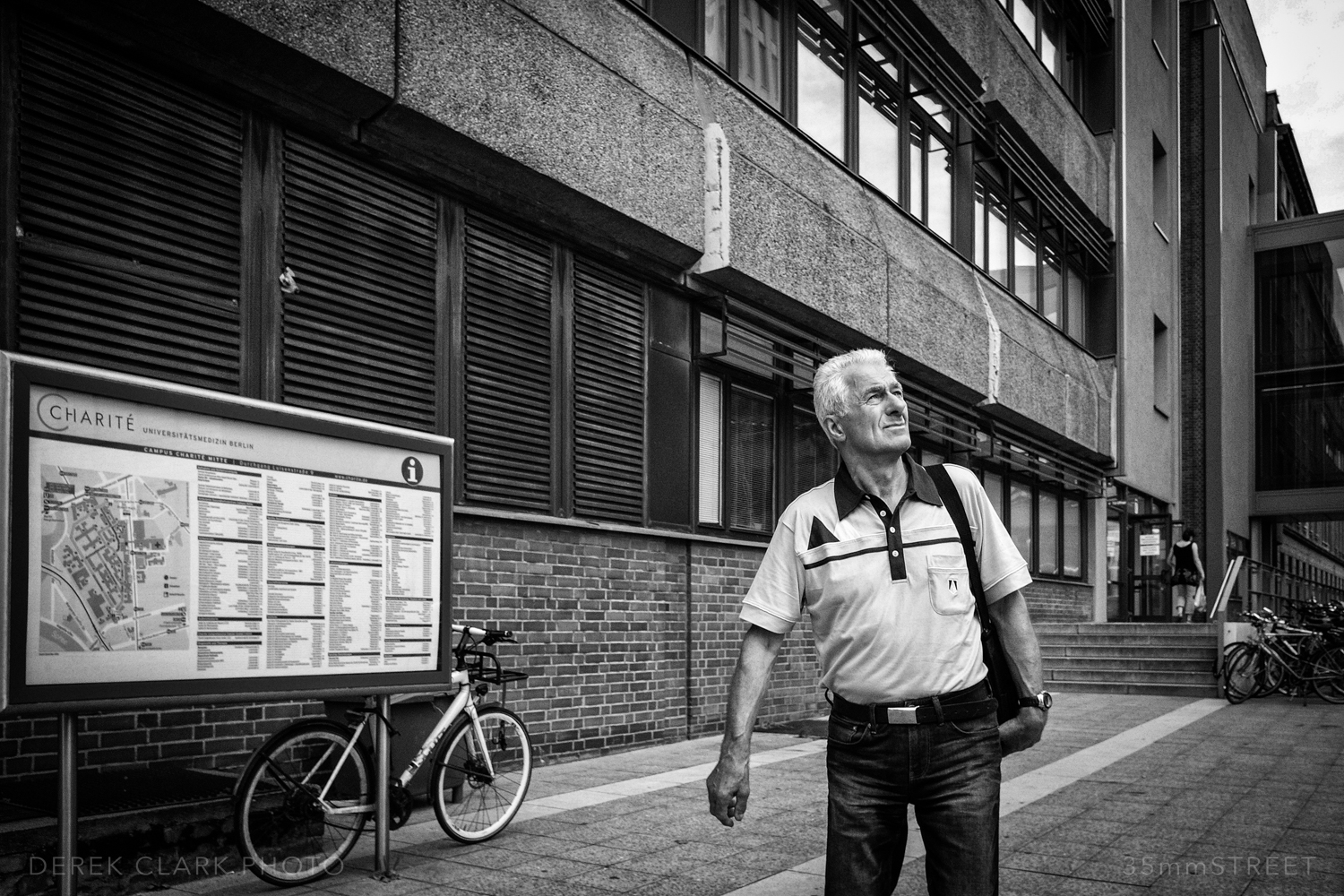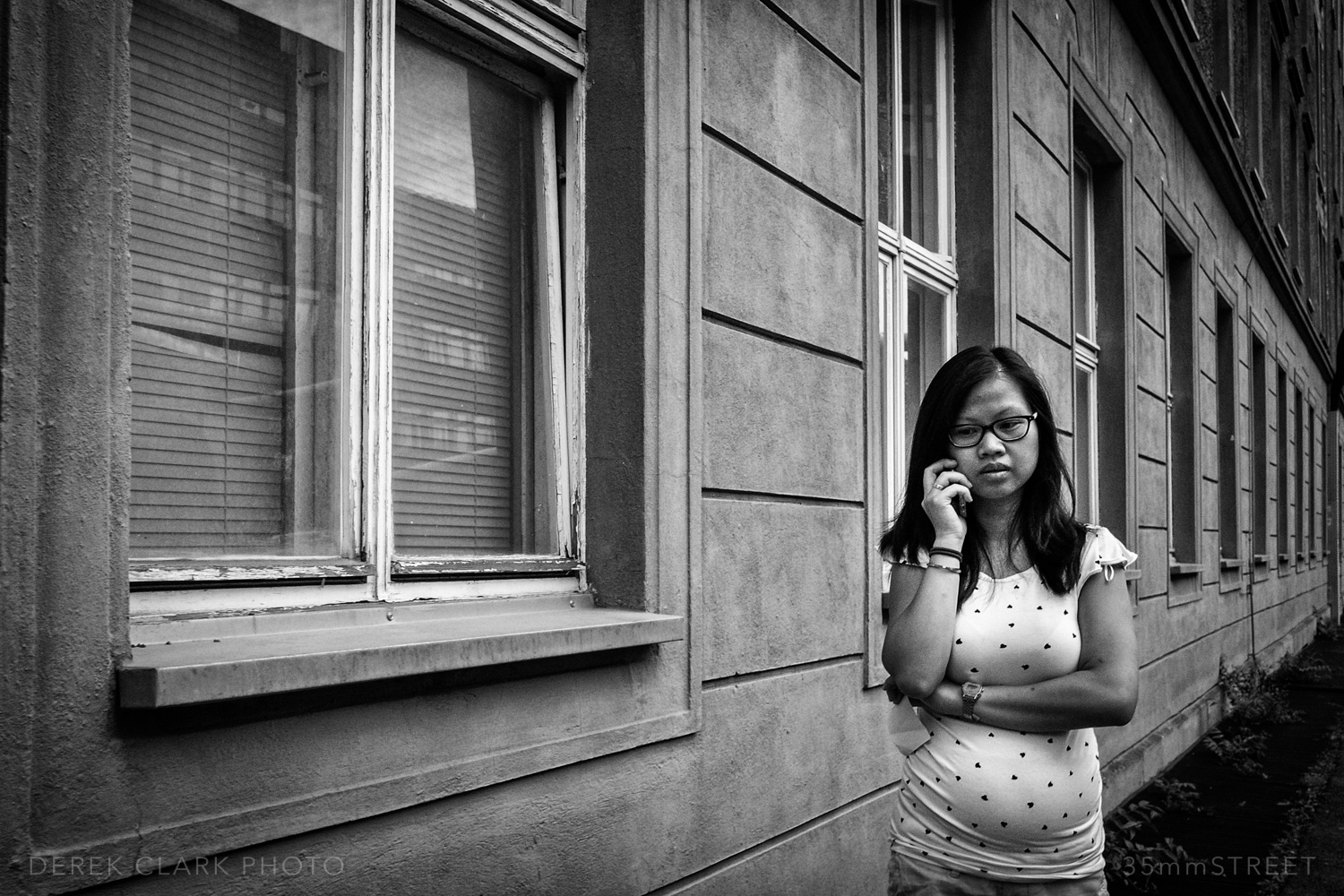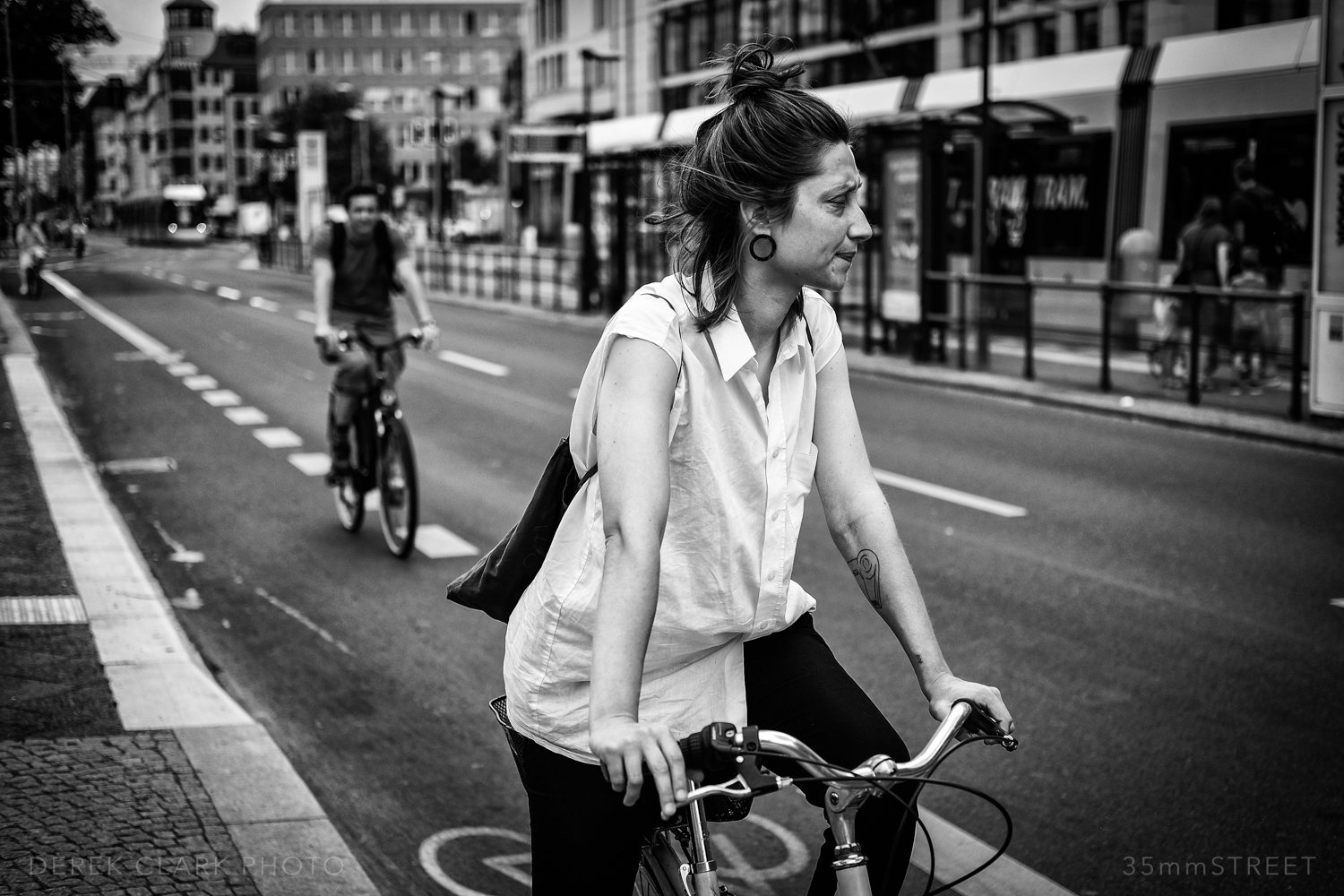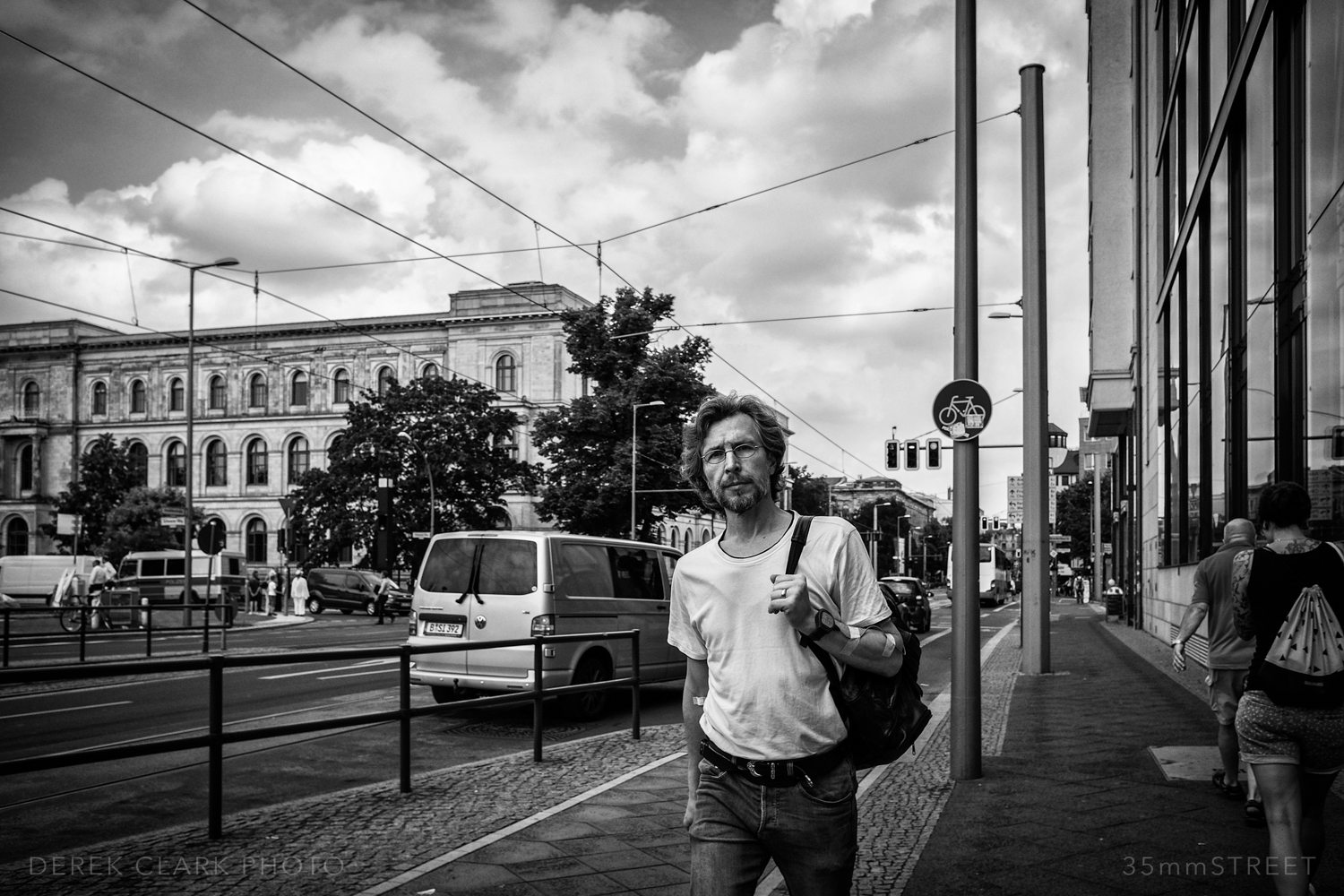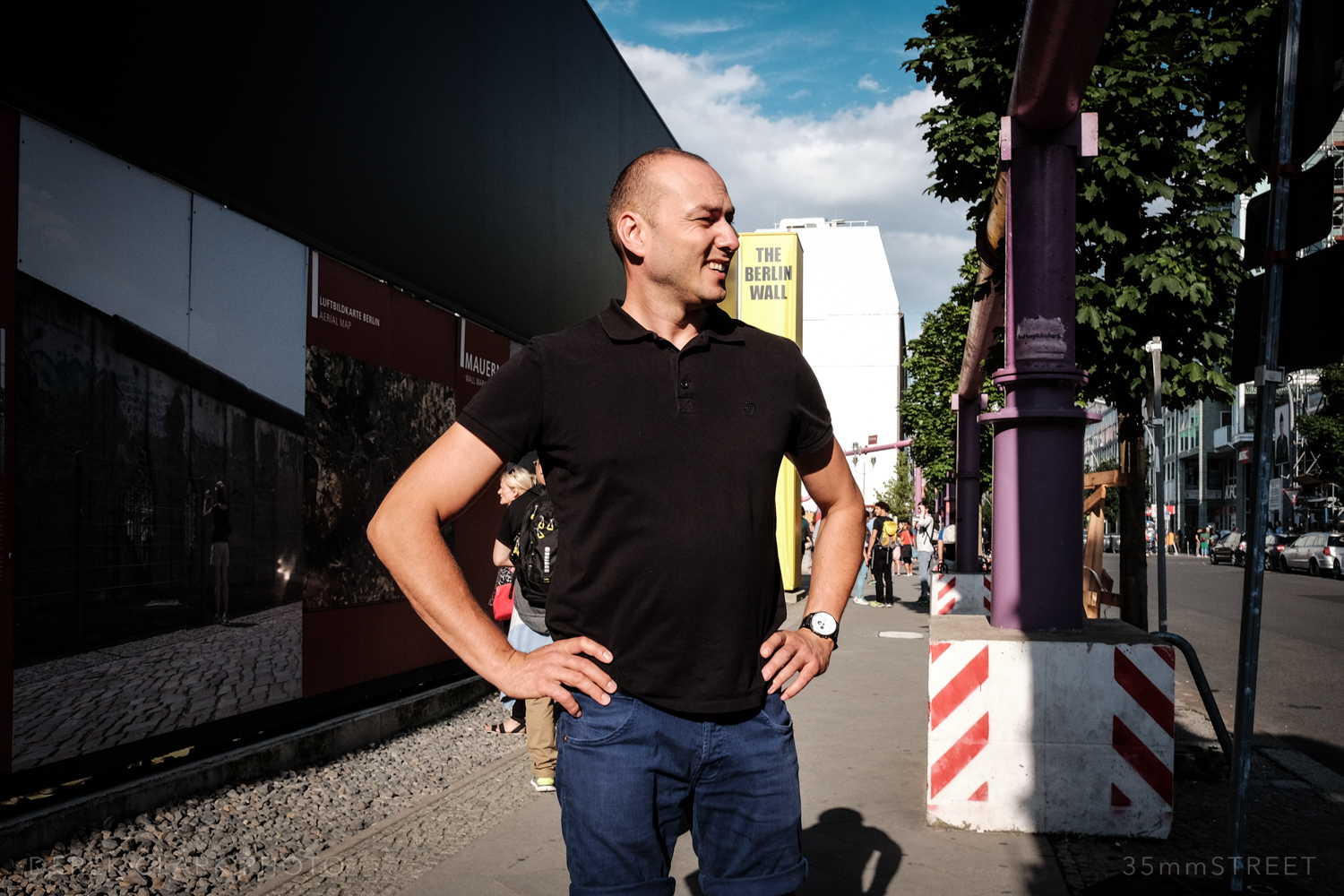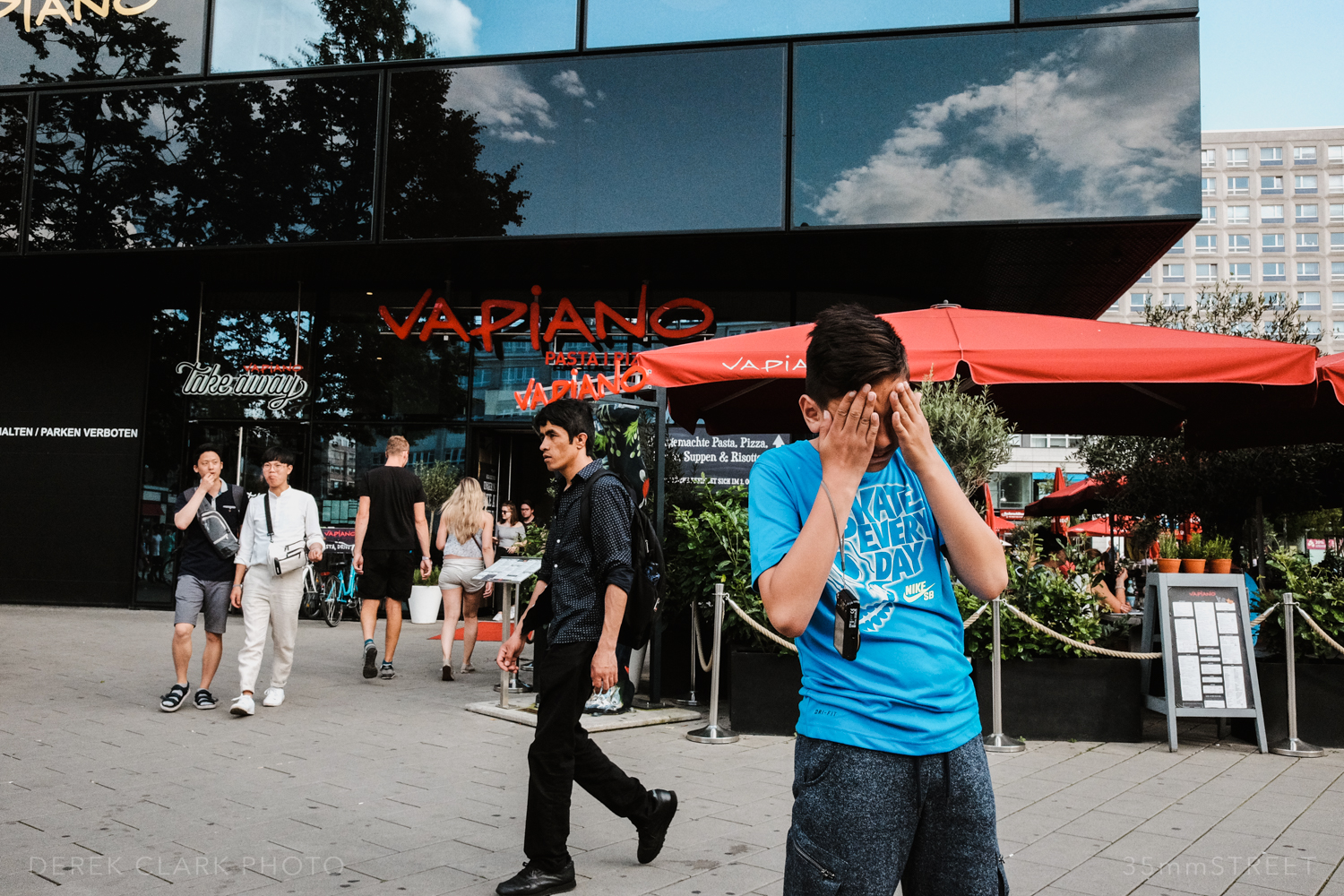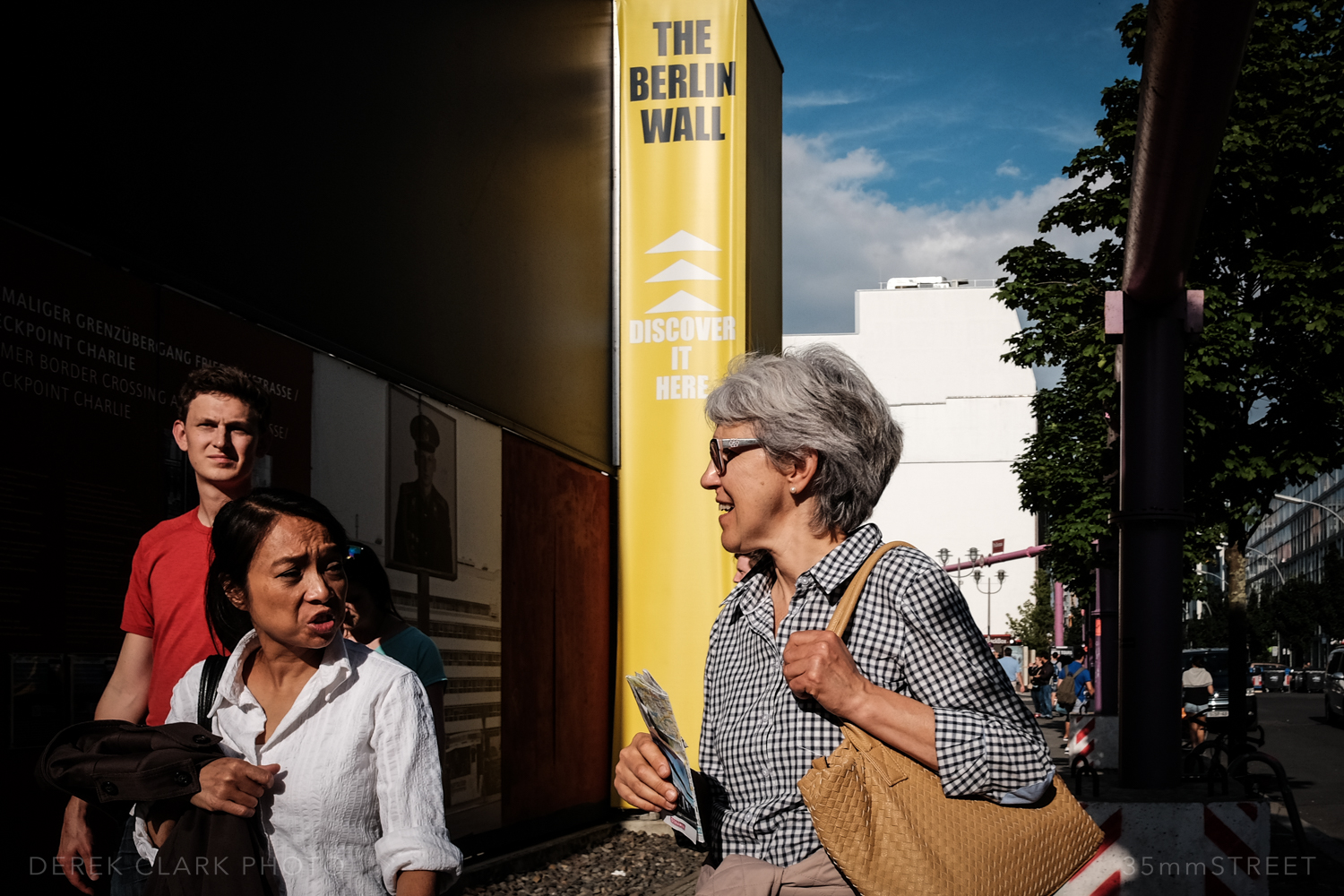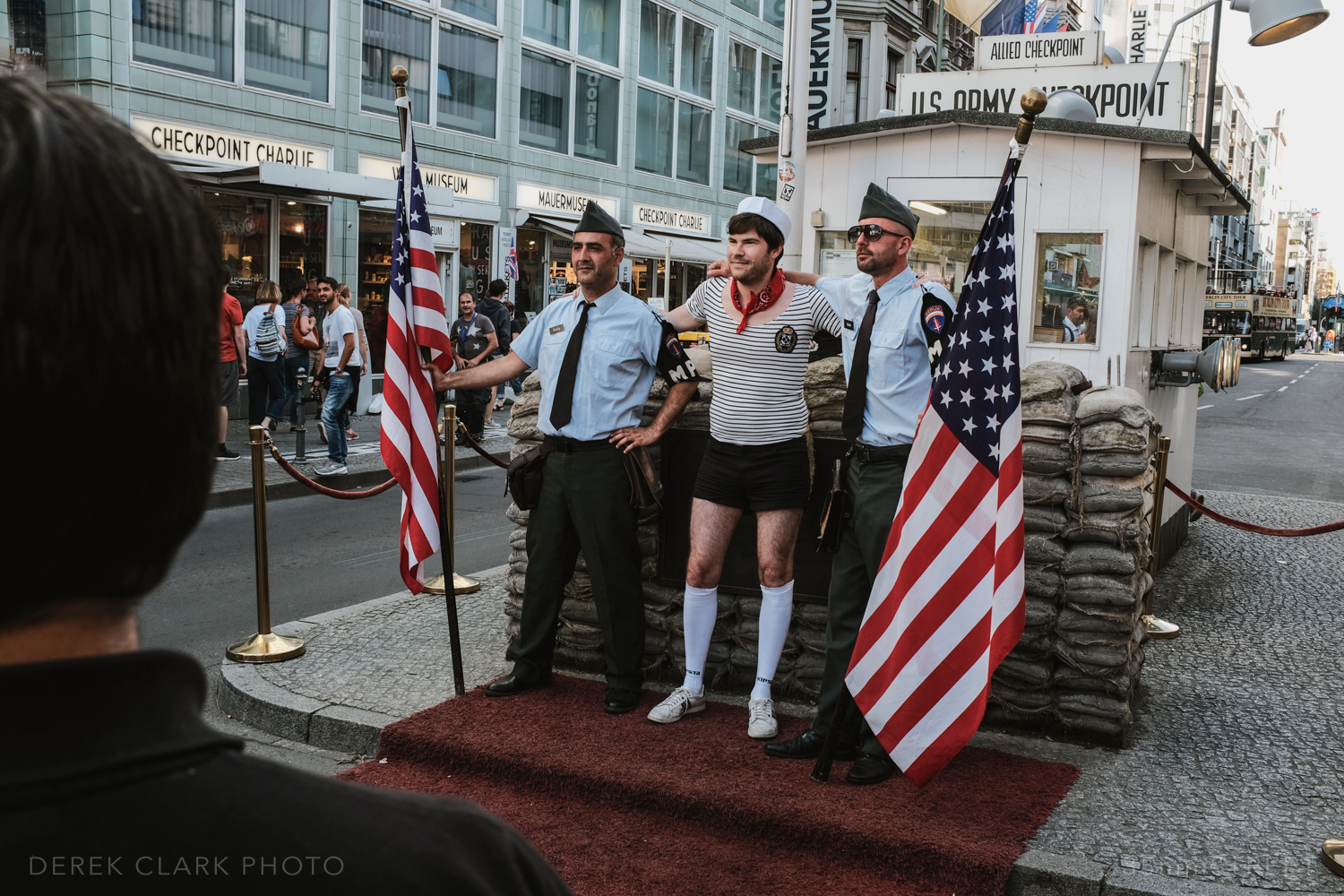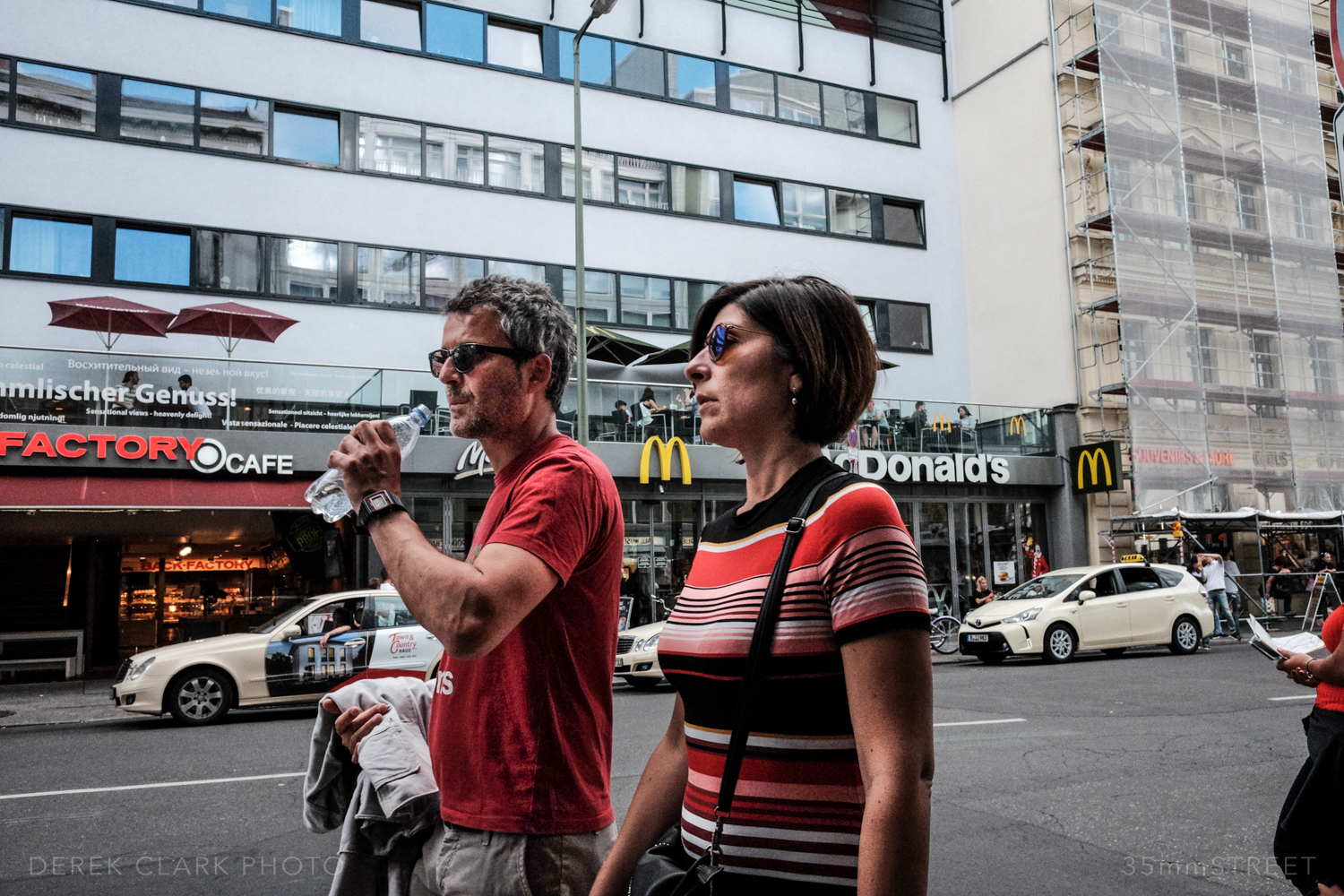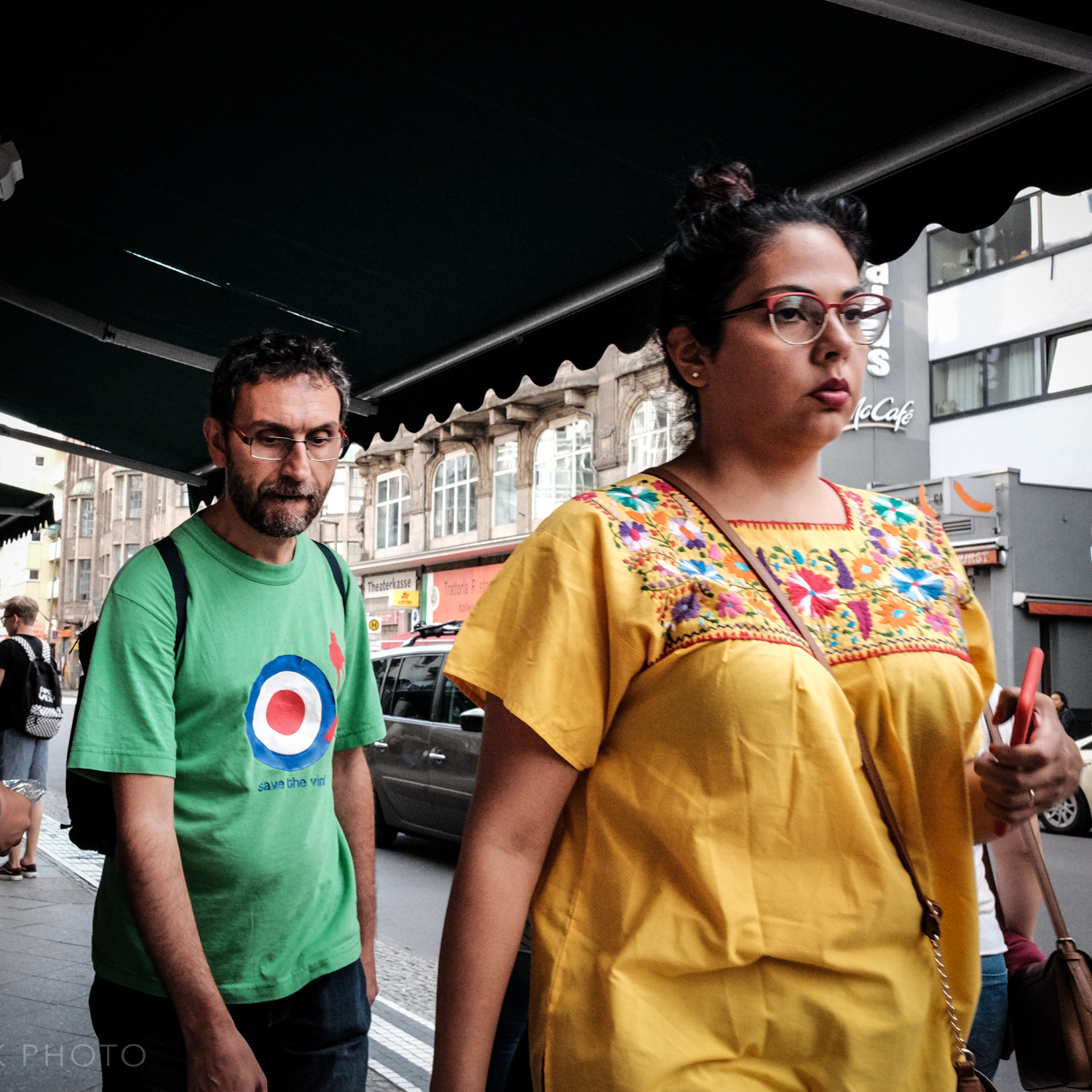Looking over some of the many draft blog posts that I just didn’t get to posting this year. I came across this one from the summer. Here in the UK, we go from 10pm sunsets in the summer to 4pm sunsets in the winter. We’re now in the short day, long night, grey misery with many months to go until summer. So I thought it would be good to put this post out now…as a reminder.
Edinburgh Fringe Ready To Cut
It’s that time of the year again, Edinburgh Festival. That means a meet-up with friends to visit the annual World Press Photo exhibition in The Scottish Parliament building and then a bit of street photography. WPP was excellent as always and just as depressing. Don’t expect happy smiley pictures. It’s all hard hitting stuff as usual. Well worth a visit before it ends soon.
Thanks to John & Bill for a great day out, ending in an unexpected show (Have I Got News For You).
Adobe Lightroom Texture
The most asked question I get about my street photography is about how I process my black and whites. The answer is always - Nik’s Silver Efex Pro, and the reason for that is pretty much the Structure feature. Structure brings out textures in things like wood and stone. But having to export everything from Lightroom to Silver Efex Pro is a pain, but it’s always been worth it because Lightroom just didn’t have anything like Structure…until now.
With the latest update of Lightroom, we now have Texture, which can be found in the Basic Panel. It sit’s above the Clarity Slider, which is a bit annoying because I’m so used to Clarity being at the top in the Presence section. Texture can also be found in the Brush, Radial and Gradient tools for a bit of local adjustment.
So this is my first attempt at a Lightroom preset for black and white street photography that gets me in the ballpark of Silver Efex Pro. I’ve got some tweaking to do, especially how it handles the colour blue.
1 Hour 47 Minutes of Street
As the title would suggest; this post contains my favourite shots from 1 hour, 47 minutes on the street. Less than that really because I spent around 20 minutes in book shops). My first shot of the day was in the train station just after I got off the train (minding the gap) and the last was back at the station, just before I bought the train. I took 175 pictures, all of them on the Fujifilm X70. All were shot using the zone focus method and possibly all of them were taken at f8, 1/500th of a sec on Auto ISO. I used my EV compensation dial to adjust for changes in light (walking into shade, facing the sun etc). I selected 52 out of the 175, edited 34 in colour and then made virtual copies in black and white. I exported 62 pictures (31 colour, 31 b&w) and if my count is right, I have posted 26 of them here (6 colour, 20 b&w).
The light was really nice today. The way it bounced off buildings as the sun dropped lower in the sky was fantastic. Here in the UK we get extremes when it comes to the amount of daylight hours. In the winter it gets dark around 4 pm, but in the summer months we have daylight well past 10 pm. There’s almost 9 hours more daylight between the summer and the winter solstices, which is probably why we’re all pale and miserable here during the winter:o)
Spring Forward & Patches Of Light
I’ve shot a boatload of street since the beginning of the year. Like anything we do a lot of, we start to develop our craft. It’s the 10,000-hour rule I suppose. Something that I’ve become really aware of lately is knowing where the light will be good at certain times of the day. I know on certain street corners that the light will drop between a couple of buildings and that it will bounce off glass and steel before reaching the pavement (sidewalk). The colours are fantastic and it really enhances the Classic Chrome film simulation in my Fuji cameras. I also know where to go next when the light disappears from my favorite corner.
We moved our clocks forward at the weekend for British summertime, so all the good light will be an hour later than usual. Pretty soon the sun will go down even later and the streets will be empty when all the good light is available. March might just be my new favorite month for street photography, but let's not wipe out April when it just began.
These pictures were shot with the Fuji X70 (28mm) and the X-Pro2 with the 16mm f2.8 (24mm).
Of course, I cannot neglect the monochrome side of things just because the light was great for colour. As always, all my black and white street pictures are post-processed using Nik, Silver Efex Pro (now owned by DXO and well worth the money).
Fujifilm 16mm f2.8: Too Wide?
There is a sweet spot in wide angle street photography lenses. Just like the push and pull of the exposure triangle, there are trade-offs with different focal lengths, especially when zone focusing. The compromise of getting in really close, but having lots of depth of field to add a bit of forgiveness when judging the distance between your camera and the subject. If this isn’t making much sense, you might want to go and read my post on How To Zone Focus first and then come back here.
I love a 28mm lens (full frame equivalent) when I’m zone focusing, which is why my Fuji Fuji X70 is one of my favourite cameras for this type of street shooting. I love the classic 35mm focal length when I’m using a viewfinder on a camera like the X100F, but when shooting from the hip, that extra depth of field the 28mm gives me can be the difference between coming home with lots of good shots or coming home with just a few.
I get that 28mm can be a bit wide for some photographers on the street (especially beginners) because it forces you to get in close. But it just works in so many different levels. At f8 and focused to 6’, everything between 5’ and 8’ will be in focus (possibly even more). At f11 and focus set to 5’ I can get everything in focus between 4’ and 8’ and those are good distances to work at with a 28mm lens
I hit the street the other day with the 16/2.8, a tiny wide-angle gem of a lens. But as soon as I started taking pictures, I was reminded of just how much difference a few millimeters can make at the wide end, which would mean next to nothing on a telephoto lens. The Fujinon Super EBC XF 16mm f2.8 R WR (to give it it’s the full title) is a full-frame equivalent to a 24mm, but those 4mm between 24mm and a 28mm feels huge when you’re trying to judge how big in the frame someone will be. The difference of a second or two when someone is walking toward you is massive, and if you wait too long or if the camera has any kind of lag between shutter press and actual shutter release, the moment has gone. But press too soon and the subject appears way smaller in the frame than you can imagine. It takes a bit of practice and there is very little wiggle room, so I’ll be heading back out soon to try to get it right.
Another problem is the urge to point the camera up. I was using the X-Pro2 and it doesn’t have a tilt screen, so it’s complete guesswork. When I’m out with my X70 (28mm equivalent), I can pull the flip screen out just a fraction, which is just enough to make a rough composition. I don’t like tilt screens on my rangefinder style cameras, but if the X-E3 had one I’d probably buy it for street (even though it doesn’t have a D-Pad on the back).
But check those leading lines when shooting building from a slightly lower angle. Epic!
Clockwork Orange
We have a tiny Subway in Glasgow. For a city that is pretty much built on stilts, it’s a shame we don’t make use off all that space underneath us. But this small 15 stop underground train, that only takes 24 minutes to get back to where you started, is all we’ve got. Opened in 1896 and nicknamed ‘The Clockwork Orange’ because of it’s colour scheme and circular layout, it was renovated in 1996 and consist of two underground tubes that take trains in opposite directions, clockwise and counterclockwise (hence the name).
I had never been all the way round the subway, and to tell the truth, this was only my second time on it. So I decided to jump on and take a few pictures on the way. The amount of passengers rises and falls depending which part of the city you are passing under, with the heaviest volume at the main shopping area. The subway is a inexpensive and easy way to get around, and definitely worth trying if you are in Glasgow.
Fujifilm X100F & X-Pro2 with the 50mm f2
Prague Monochrome
Much as I loved the beautiful light of Prague, some pictures just looked better in black and white. From Gay Pride to giant baby statues, to wanna-be Marilyn Monroe's. It's all going on in Prague.
Prague Colour
Great light is not something we take for granted in Scotland. Two or three months of the year we might get good light, but great light, I'm afraid, is fairly rare. Prague light, on the other hand, was fantastic. It made colours pop and the contrast added drama to the pictures without the use of punchy black and white conversions.
Berlin Street Photography
Here's a random selection of street pictures from Berlin in both colour and black and white. These were shot last year during a bit of a heatwave, but although it was a little too sticky walking for hours on the streets of Berlin, it was a lot of fun. Hopefully I'll get back to Germany some day for more street photography.




